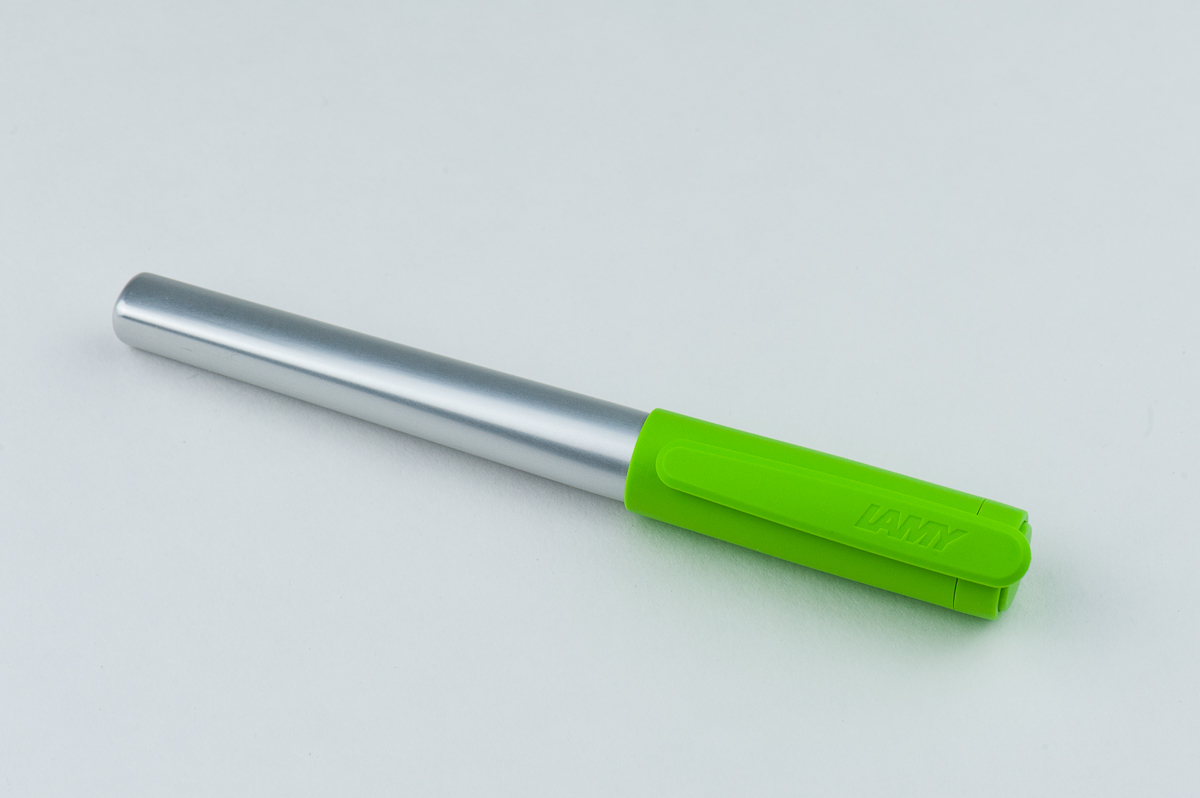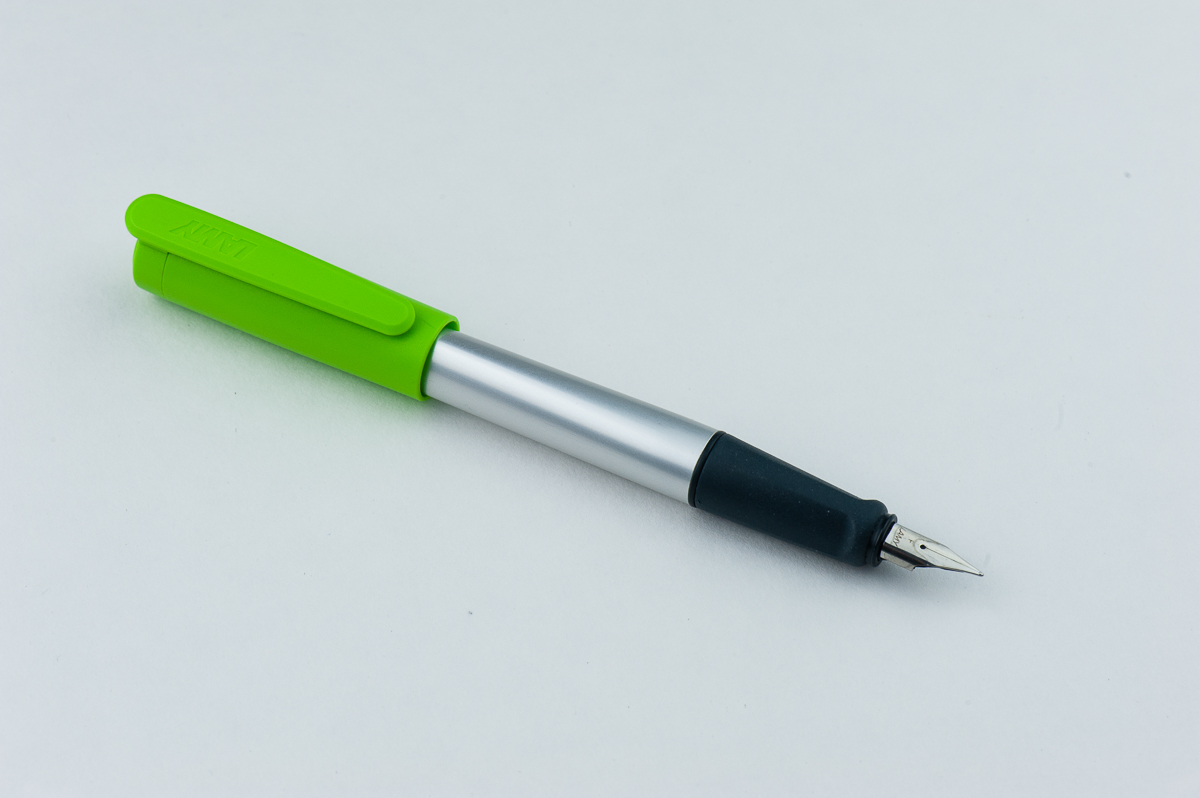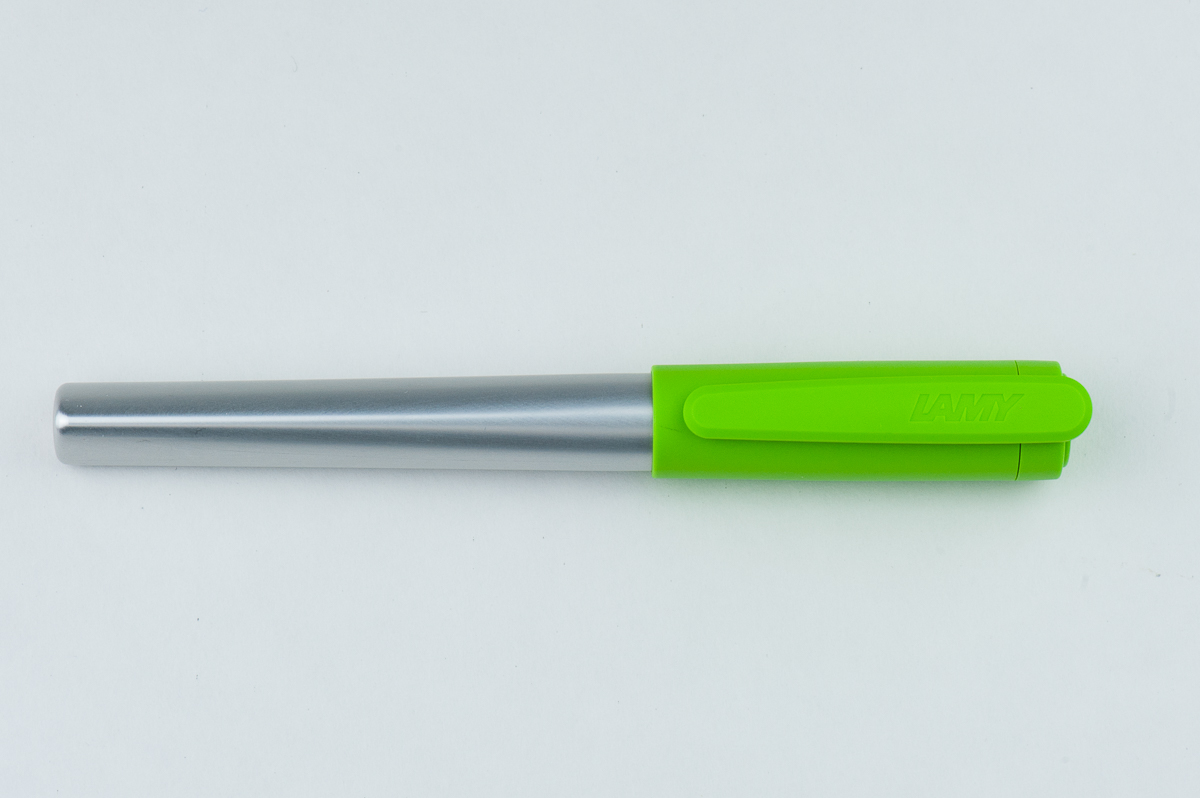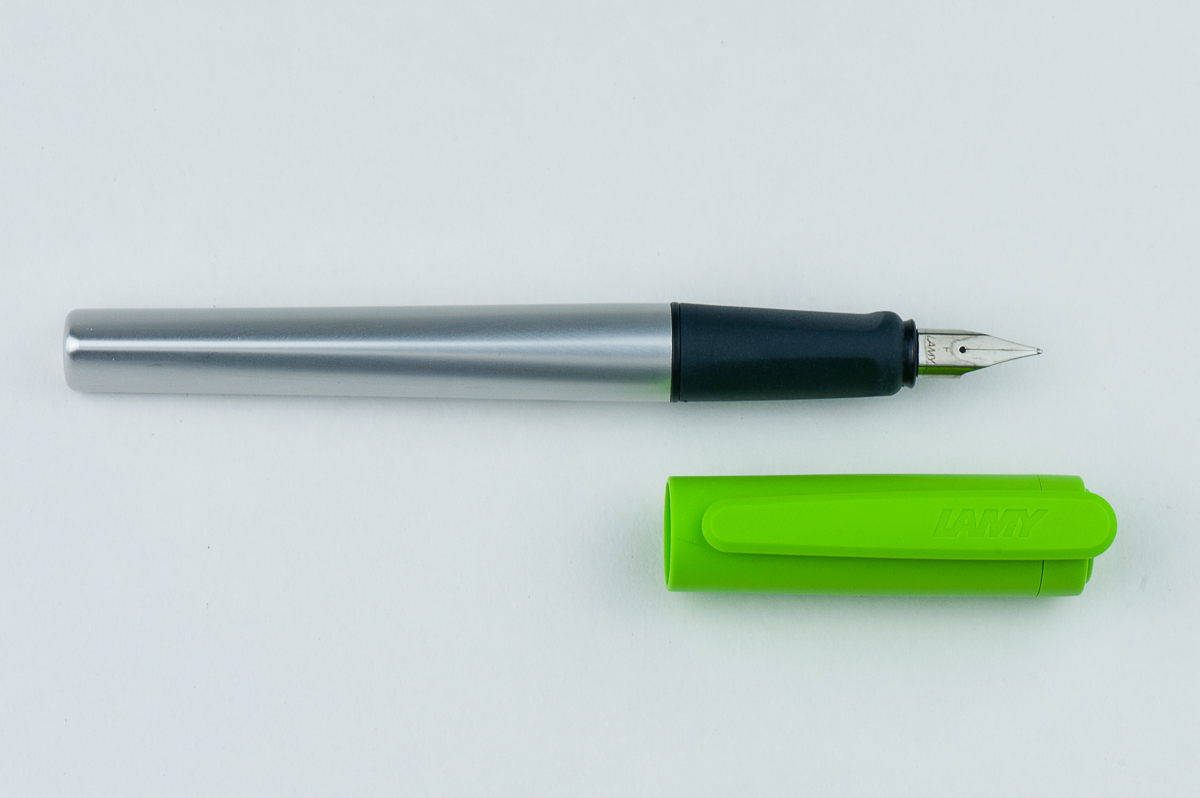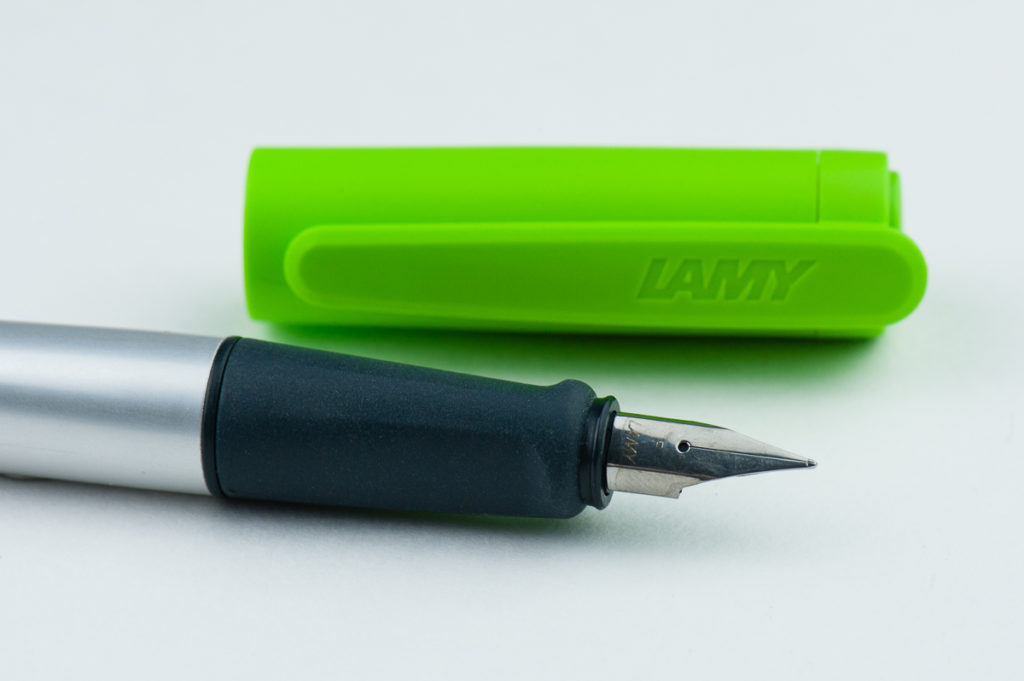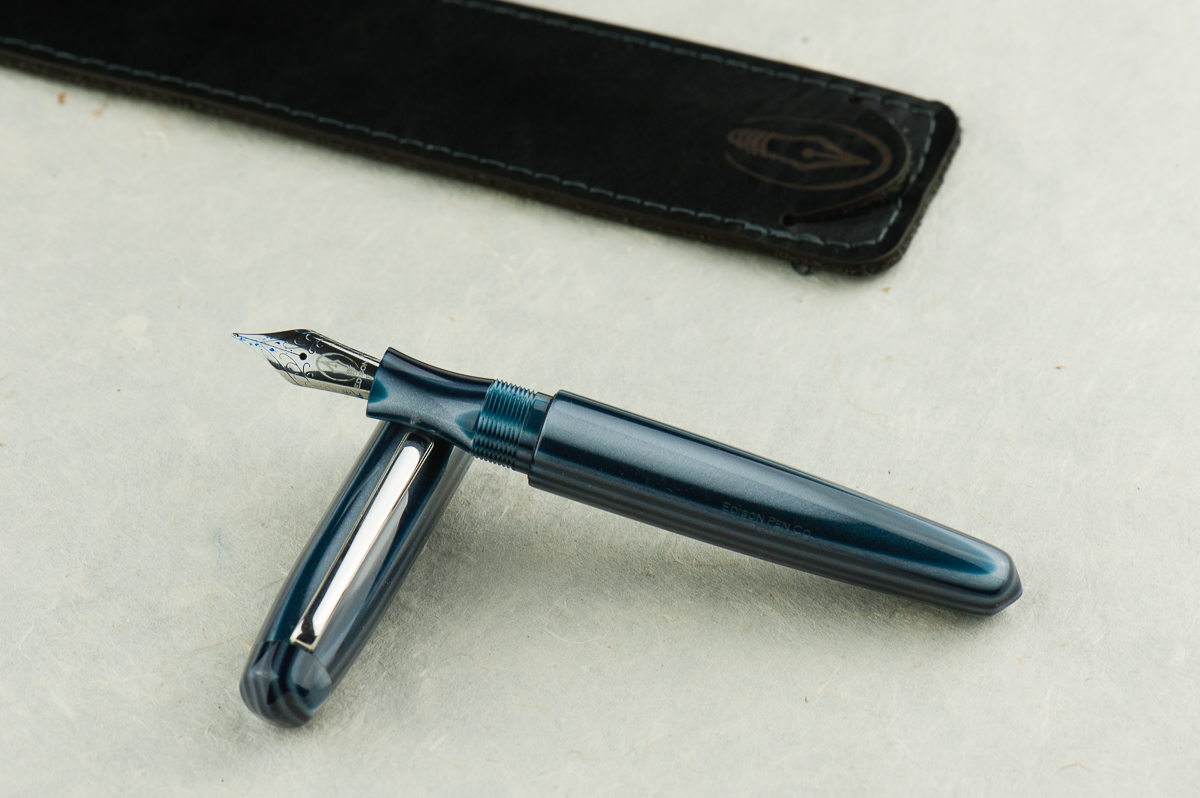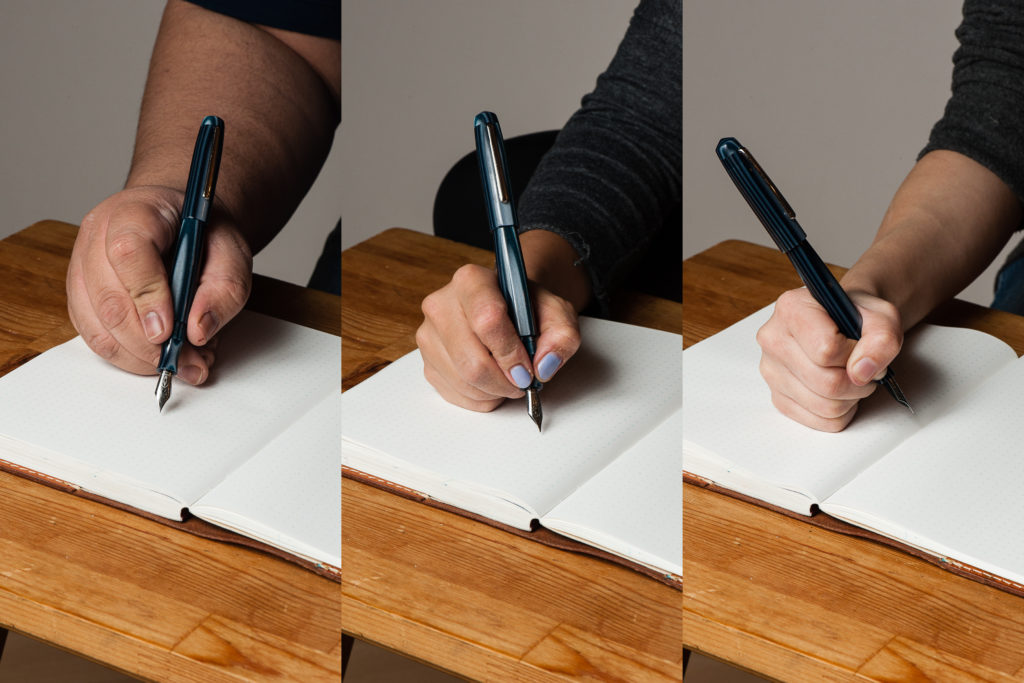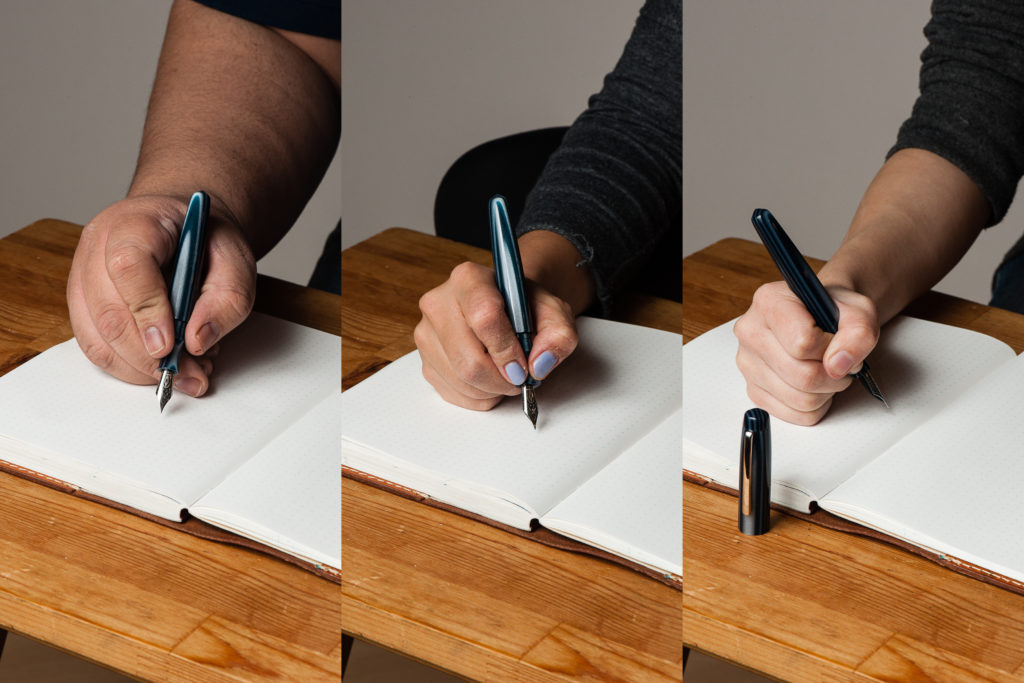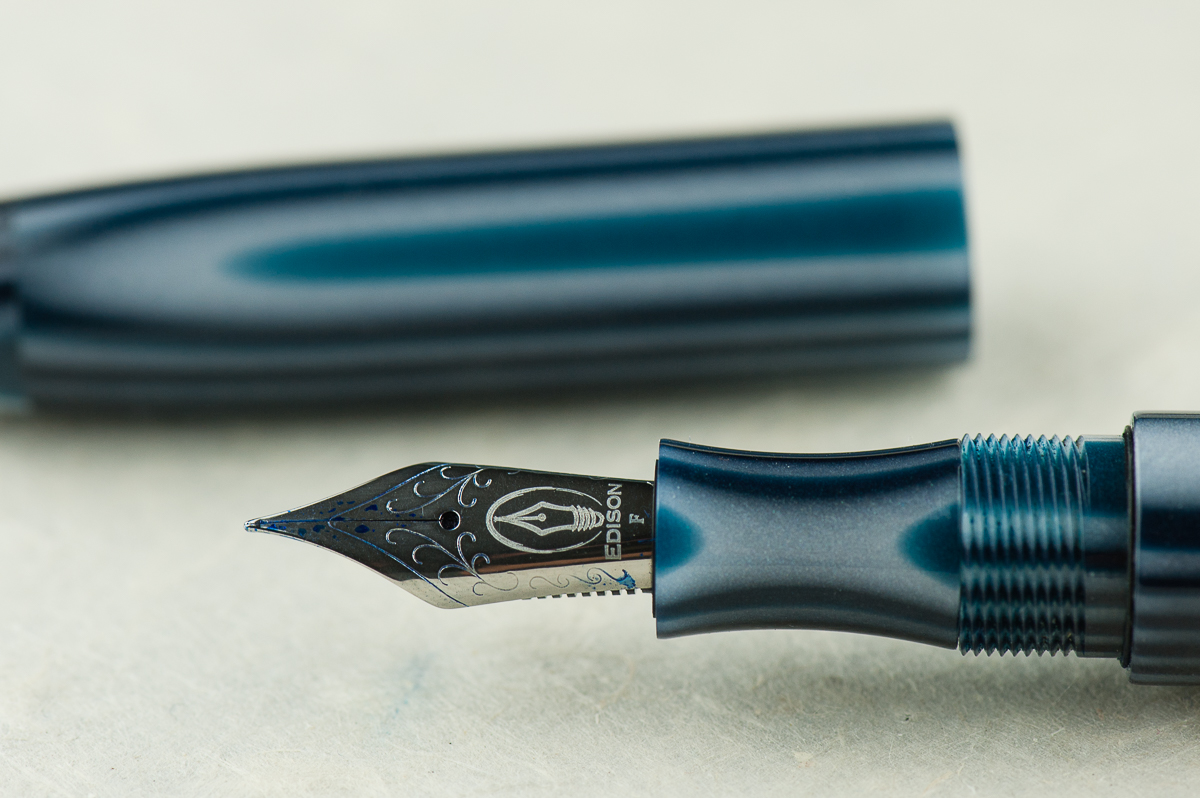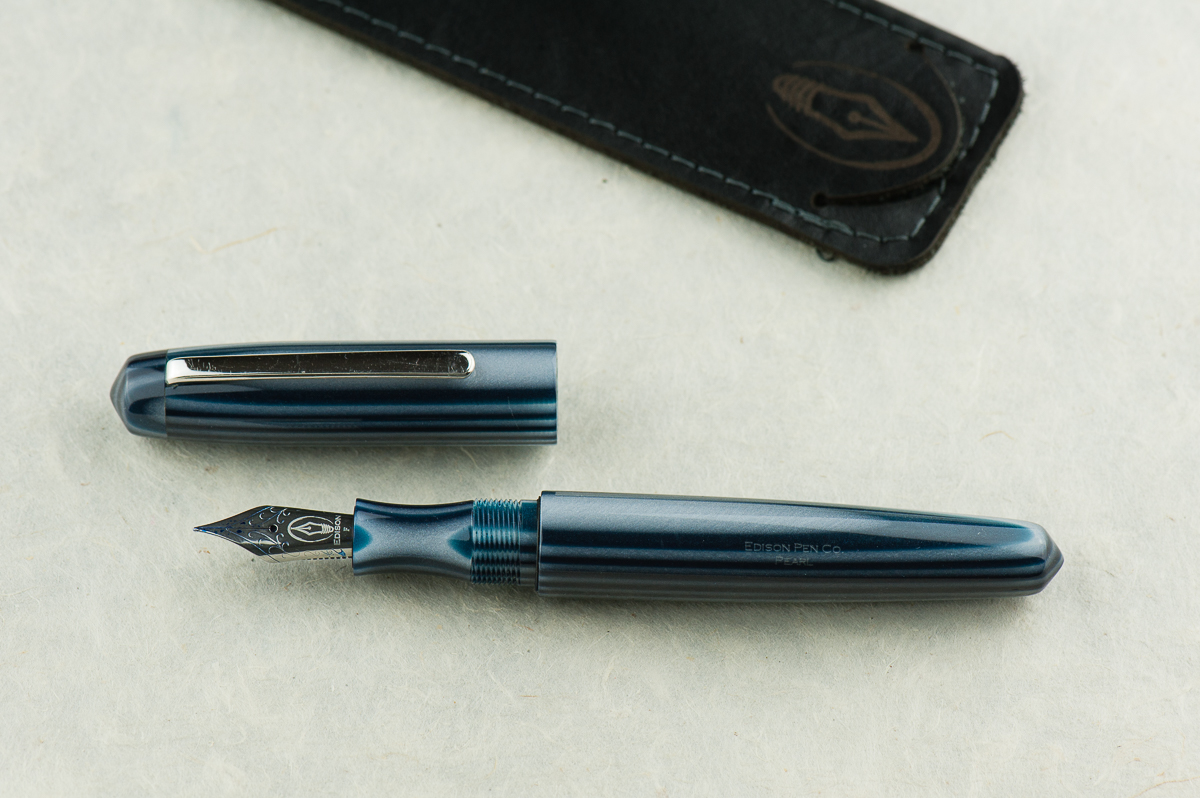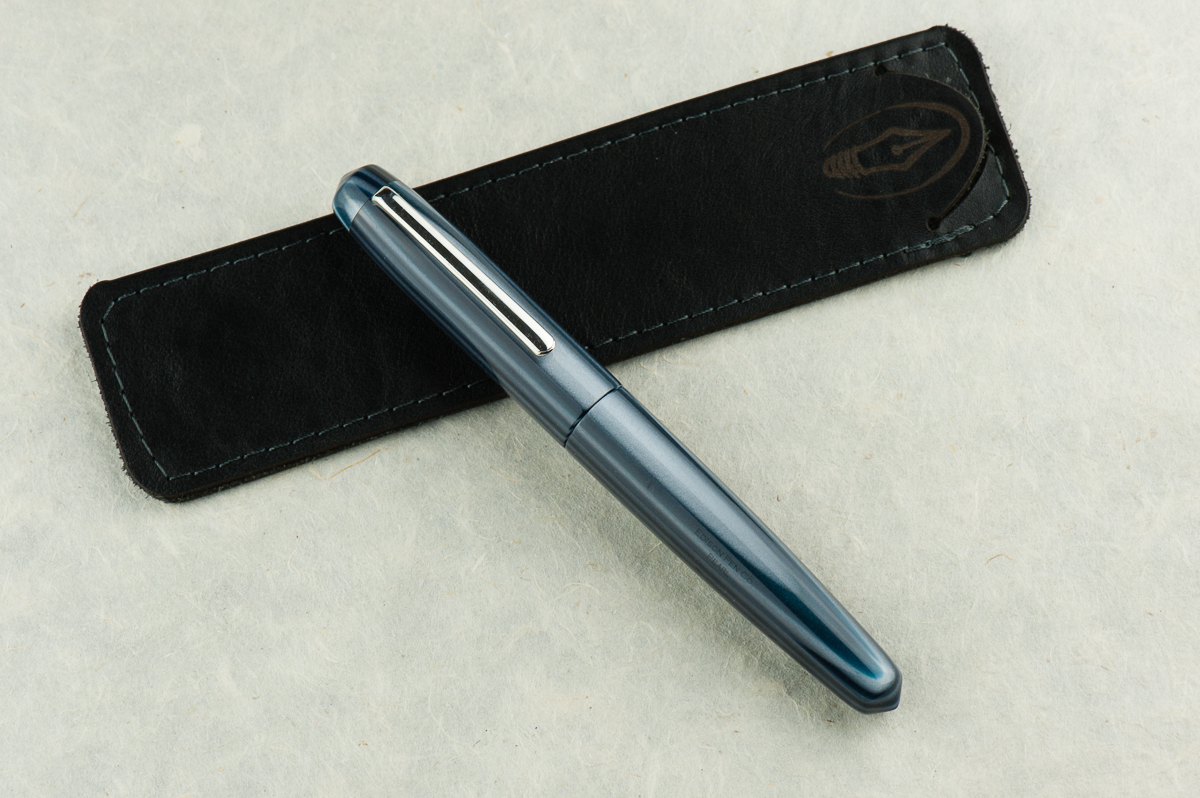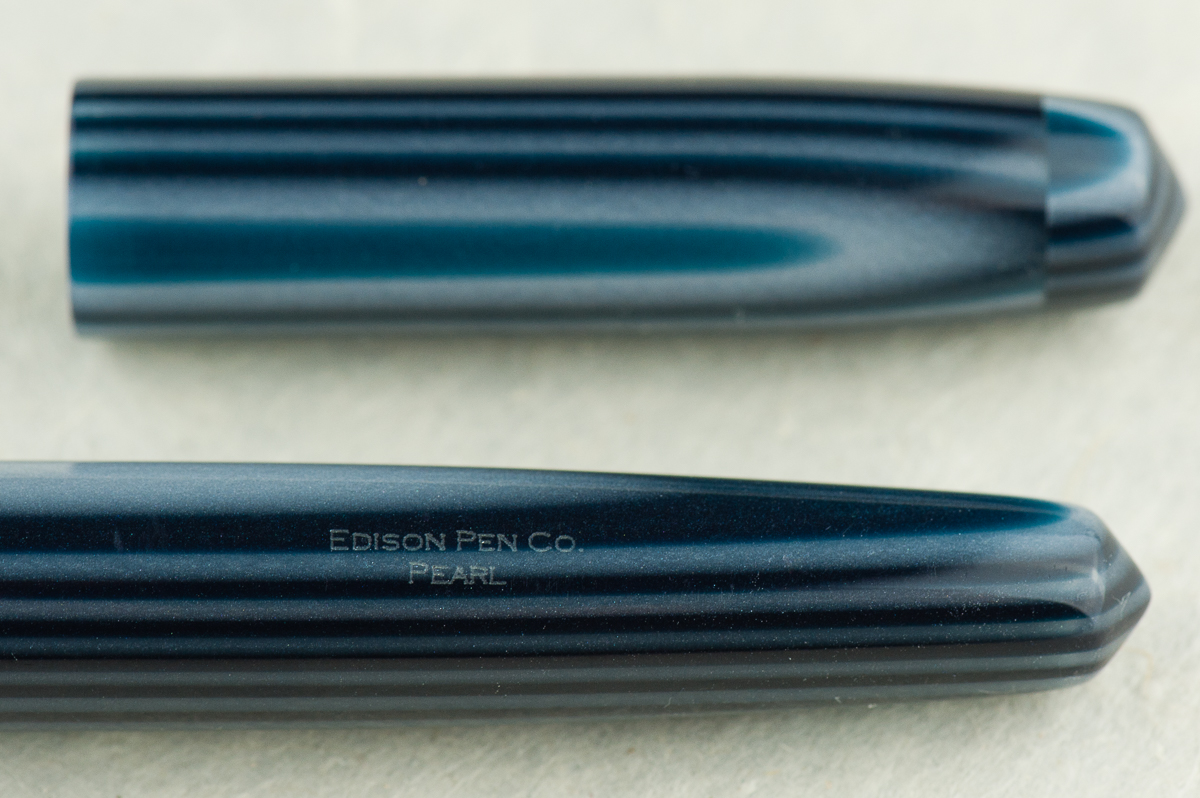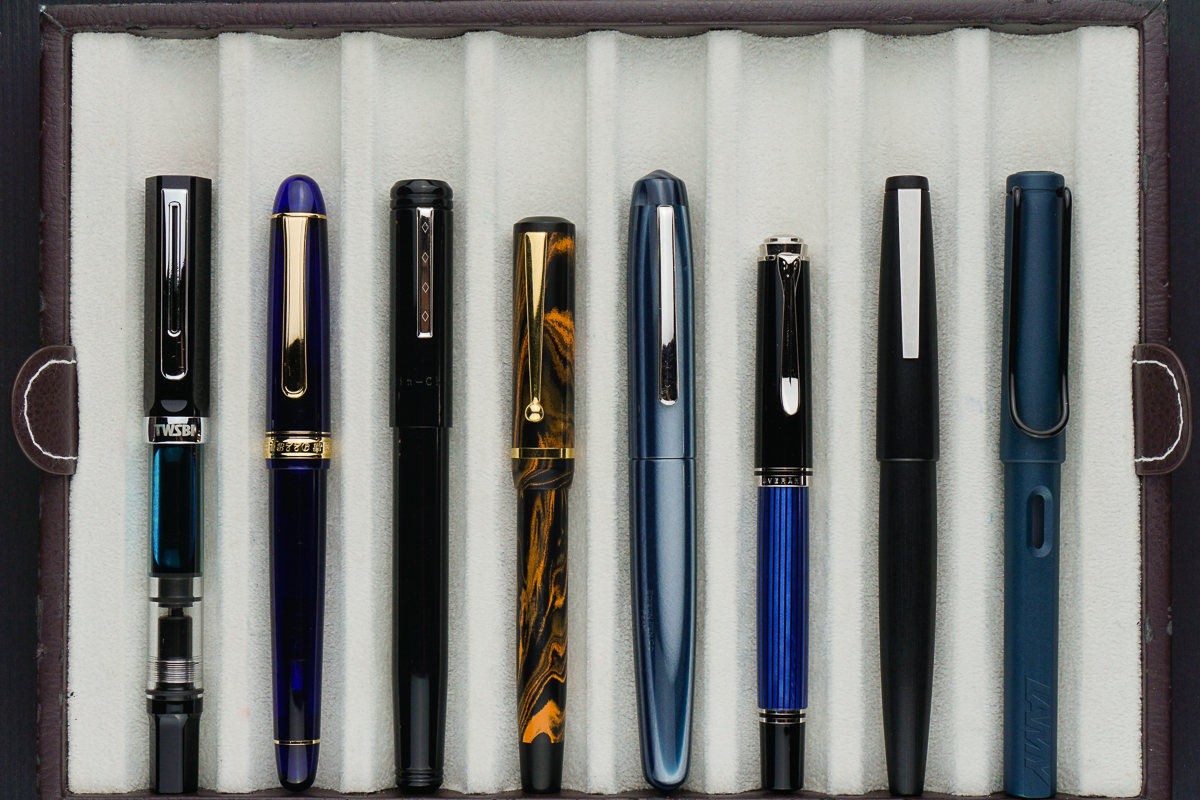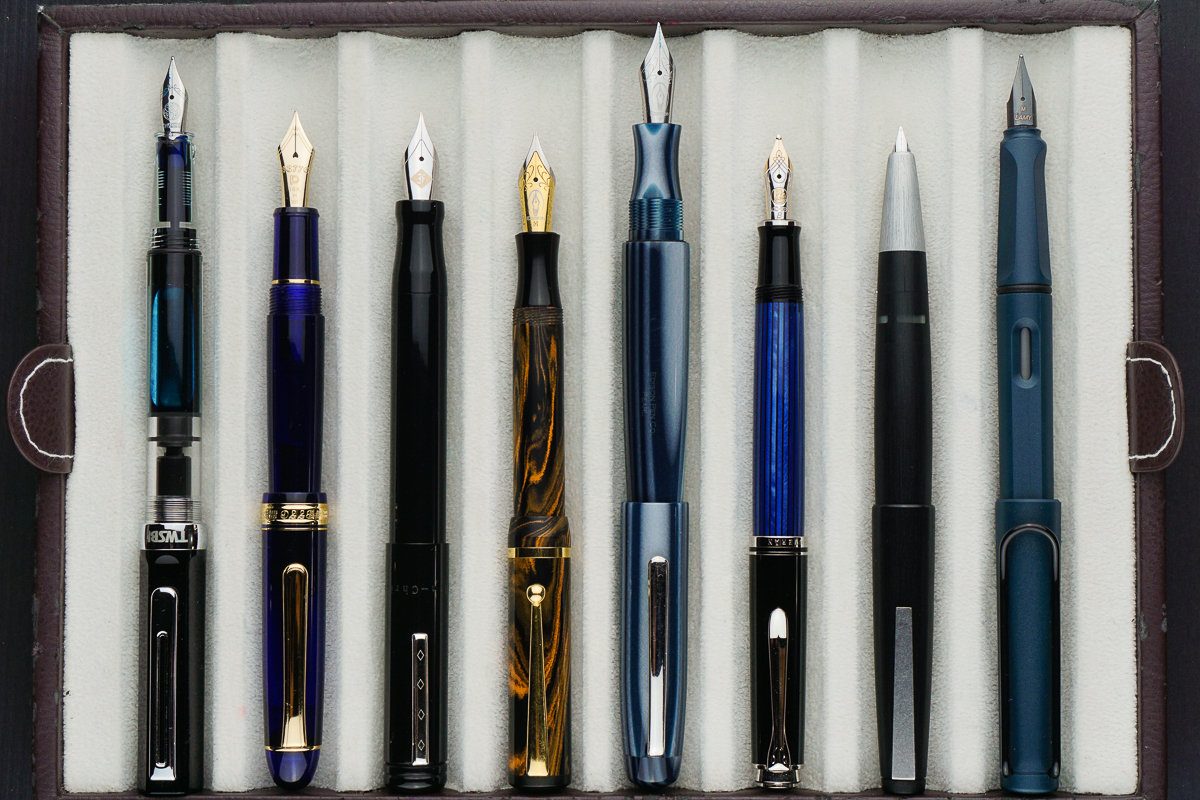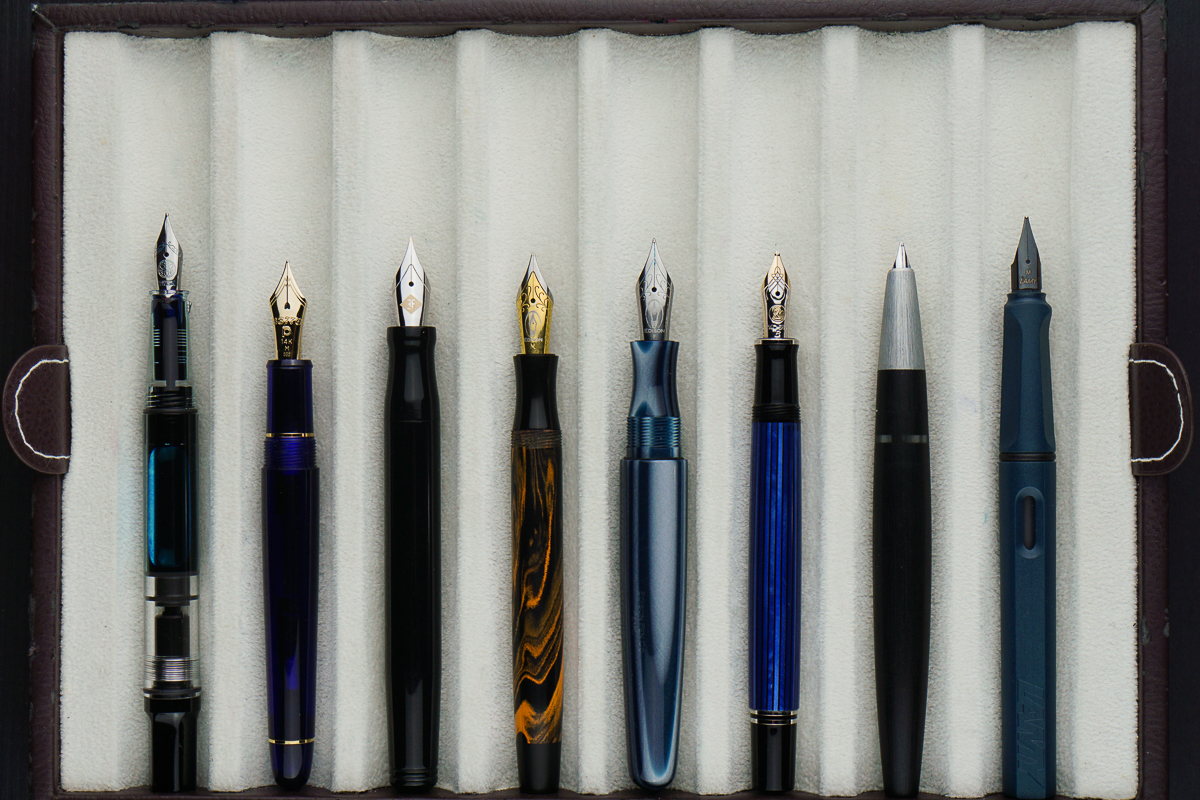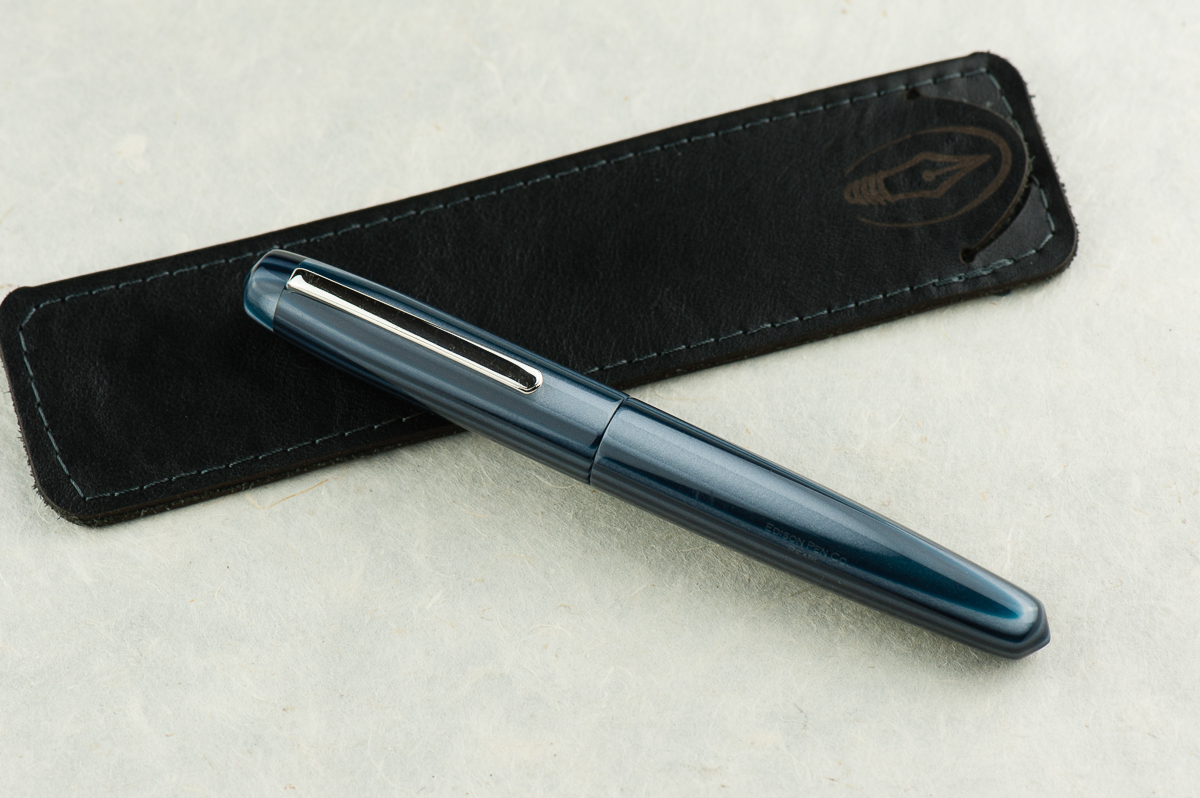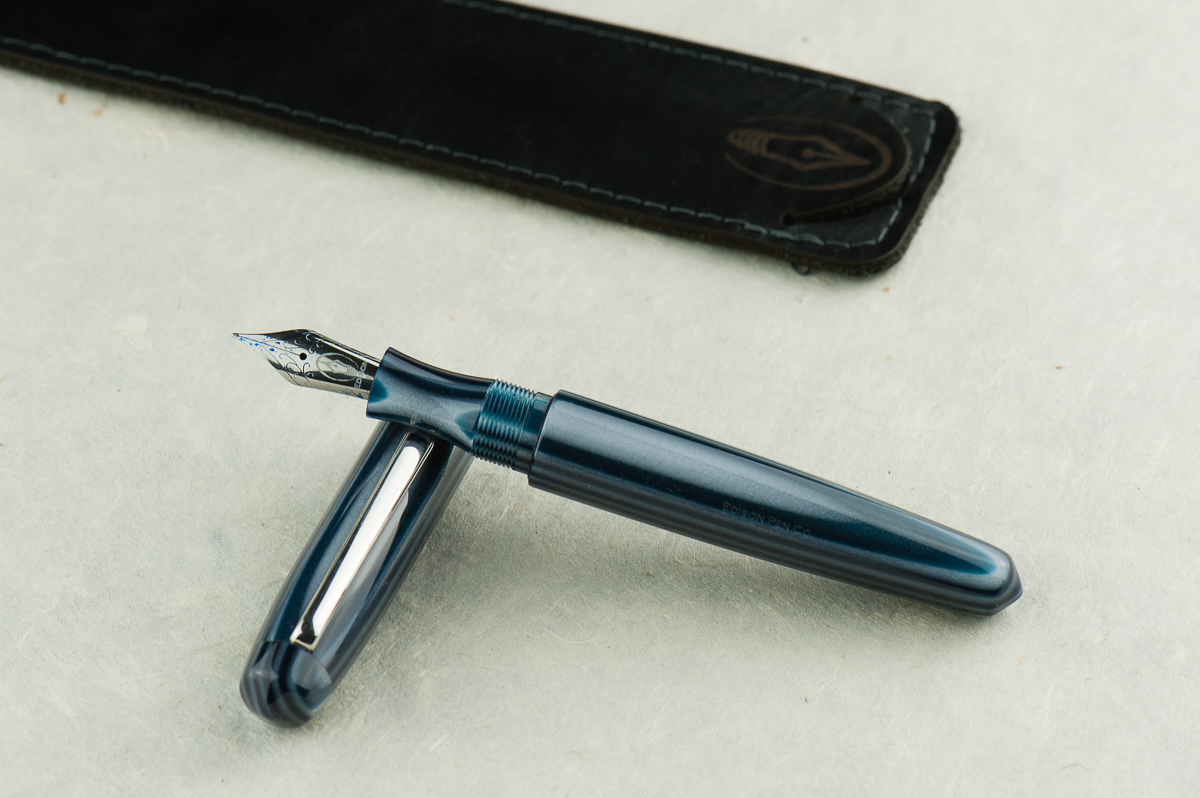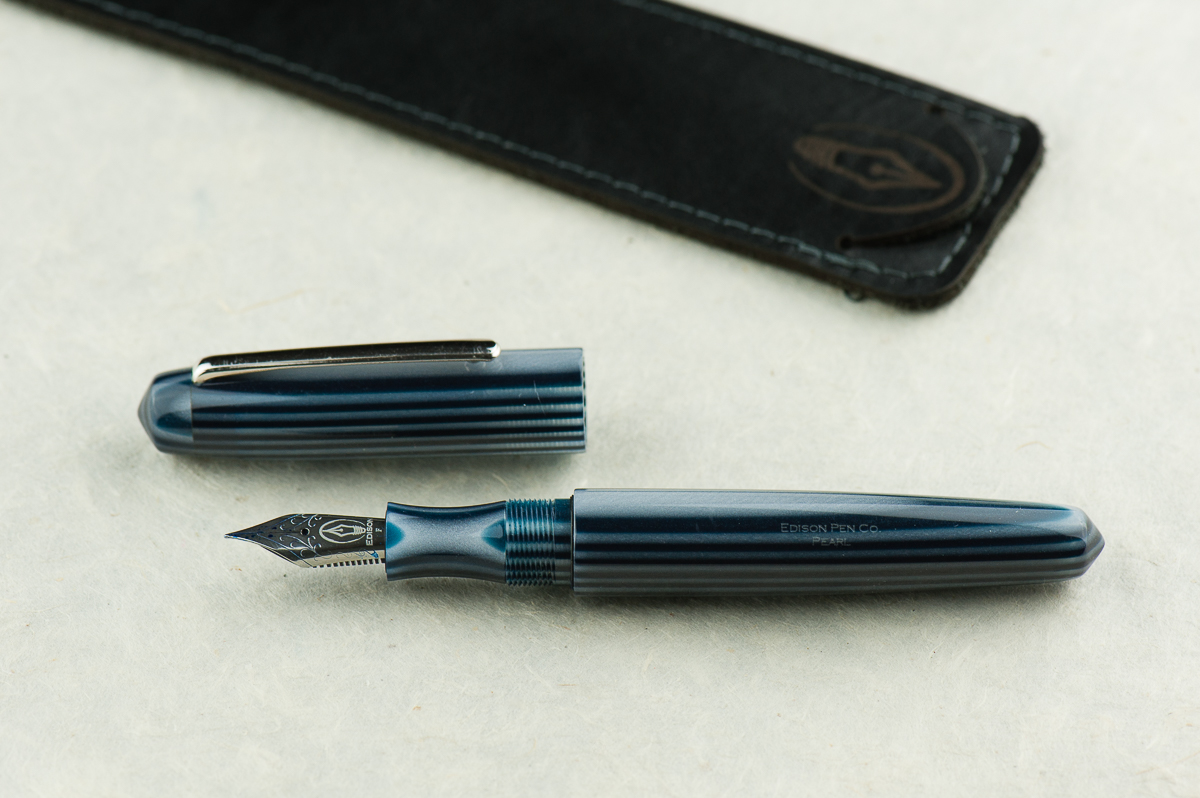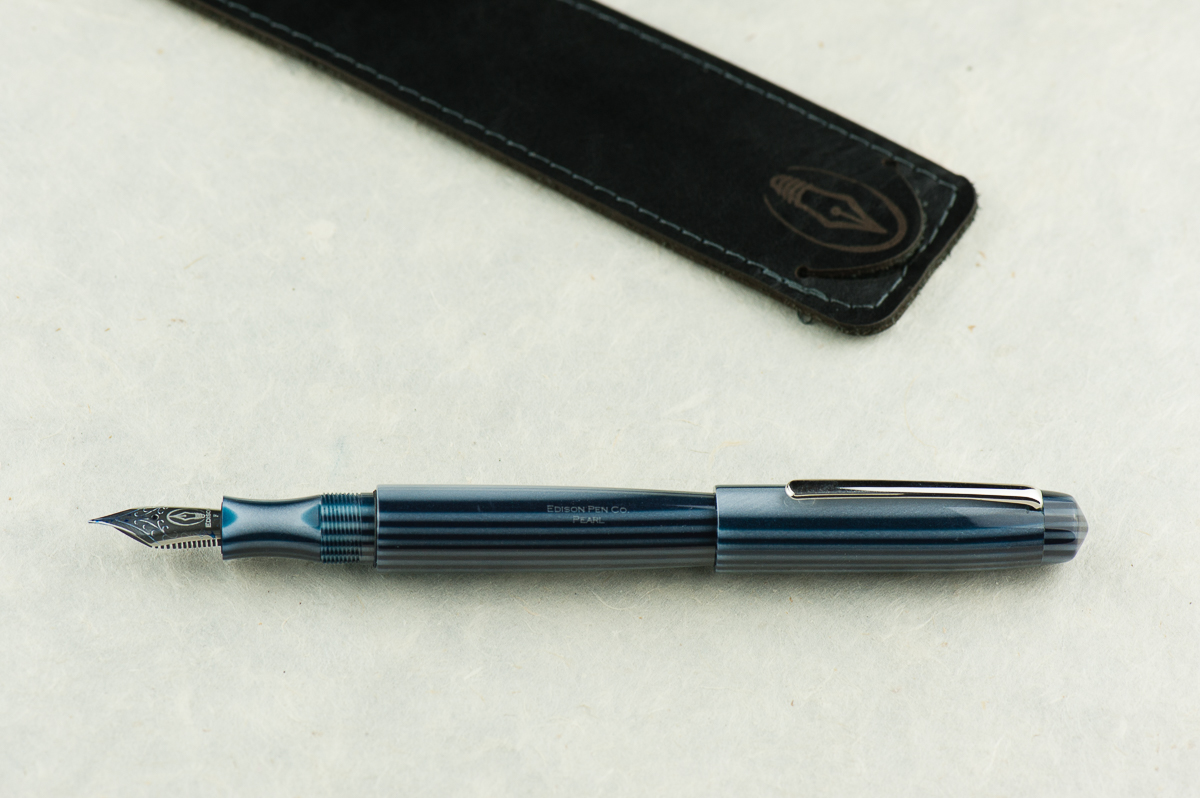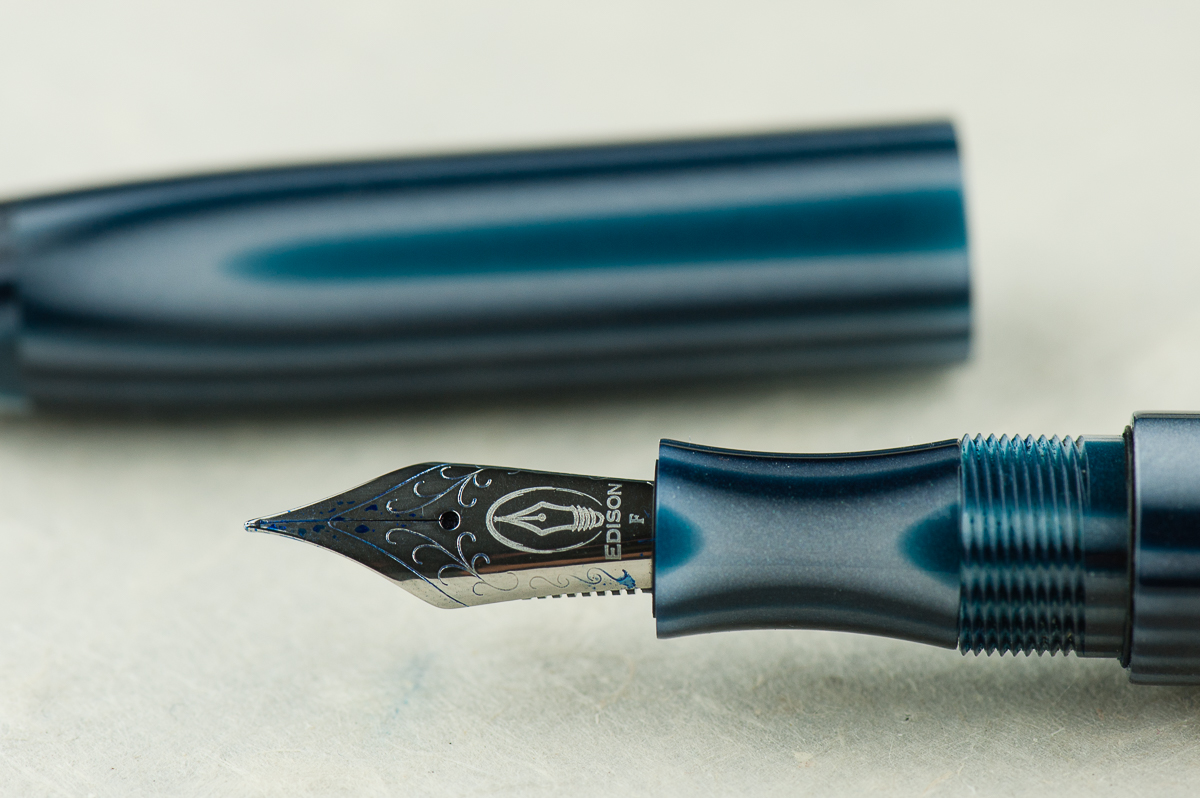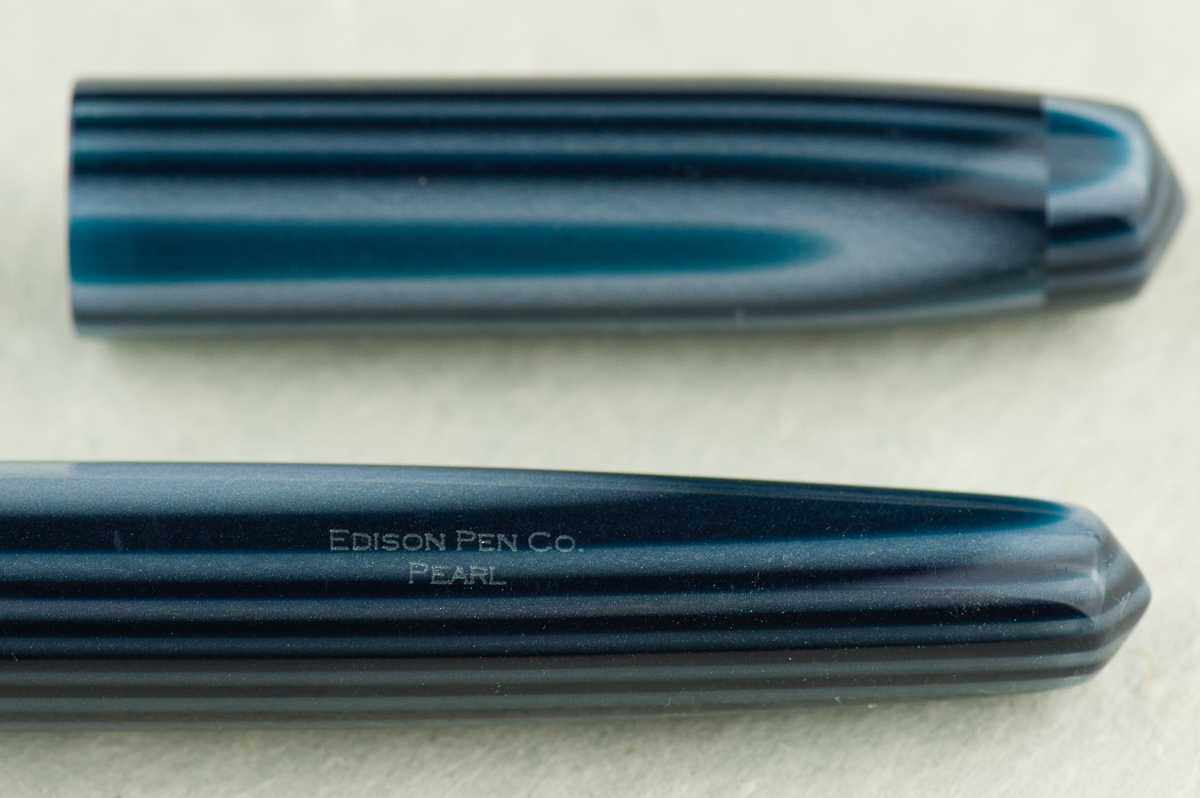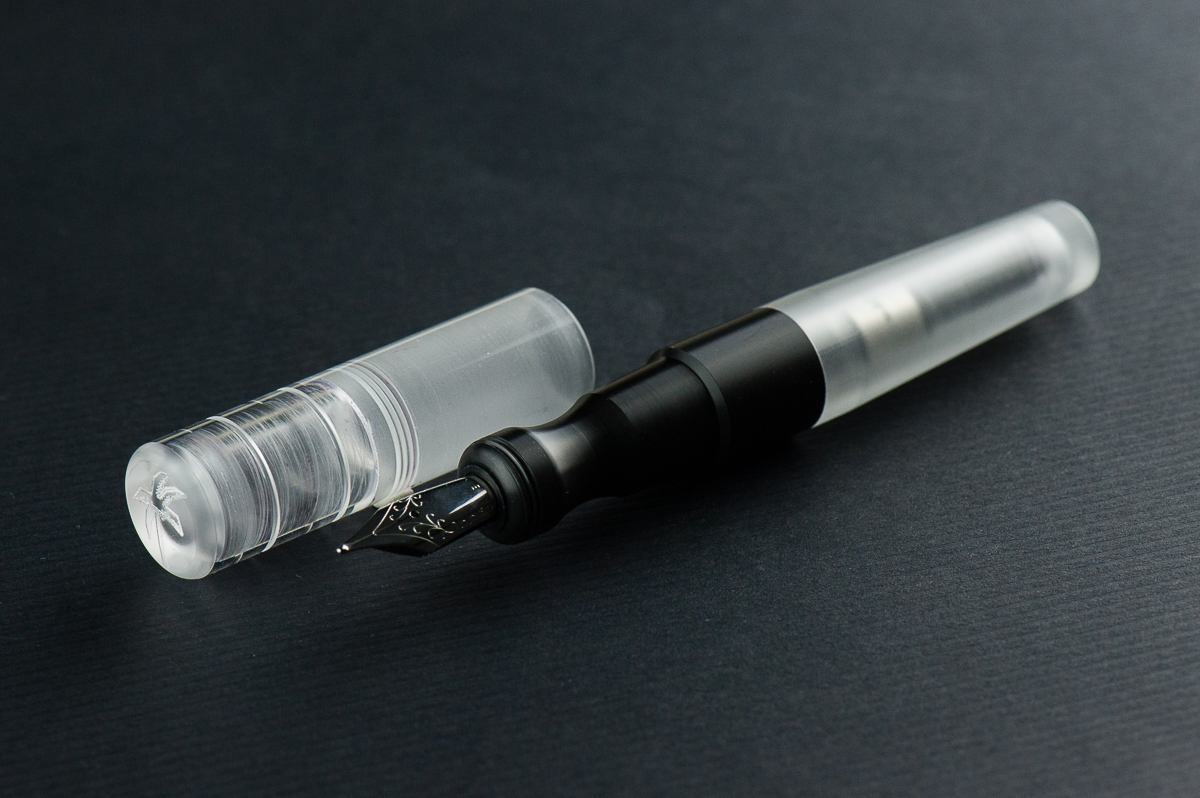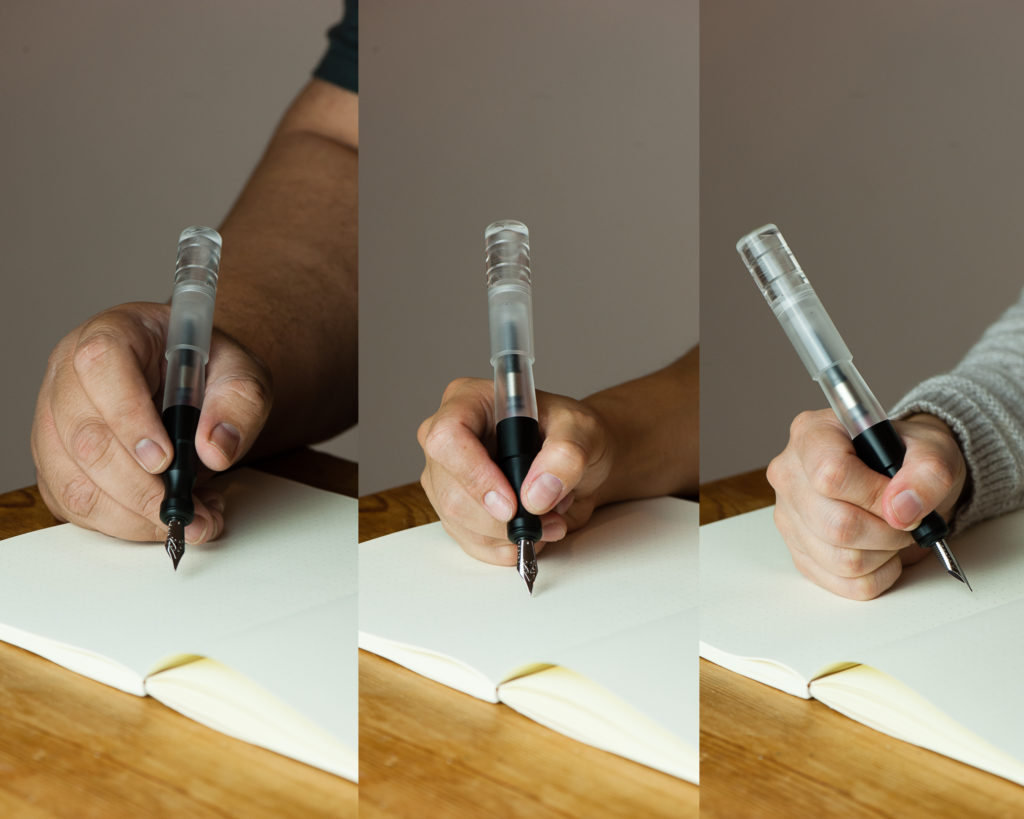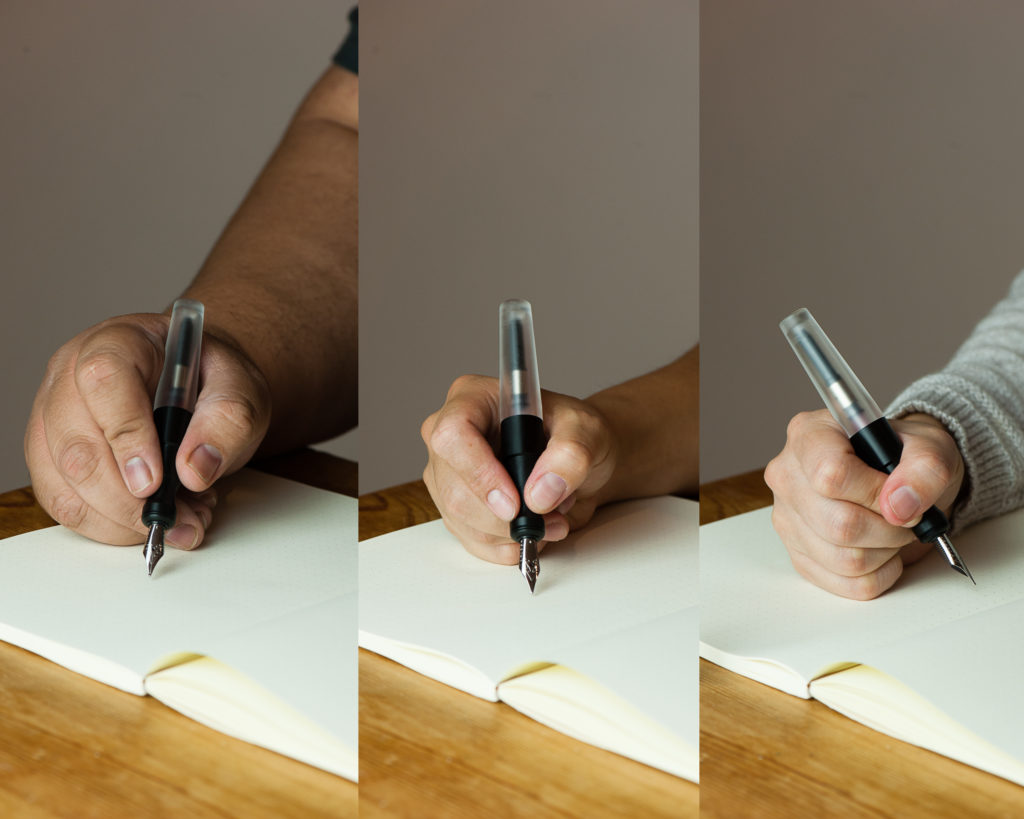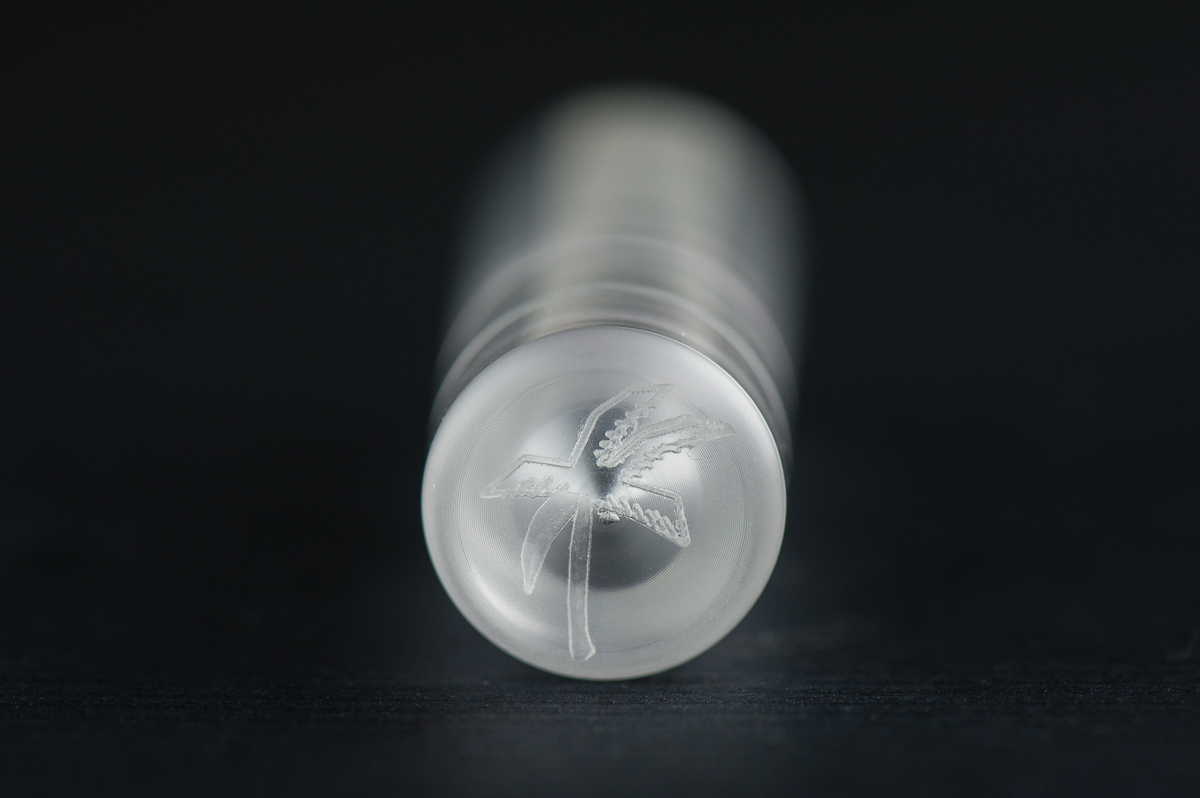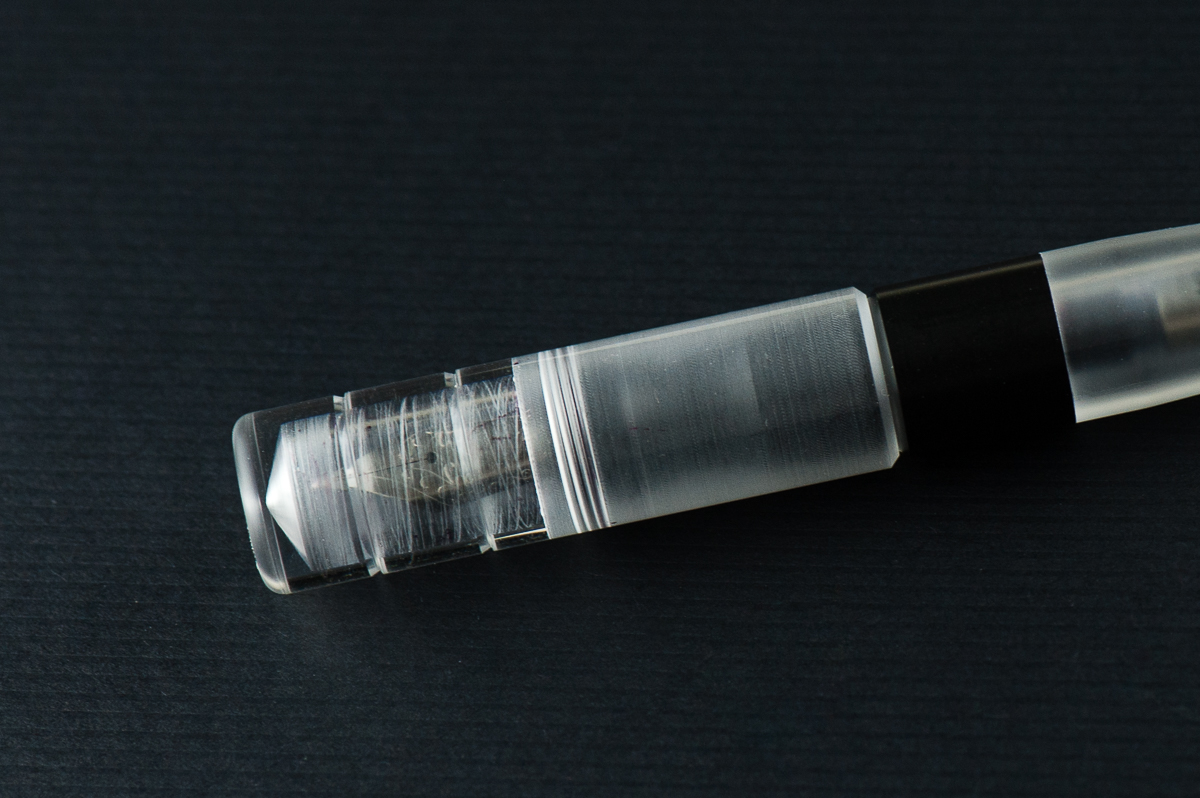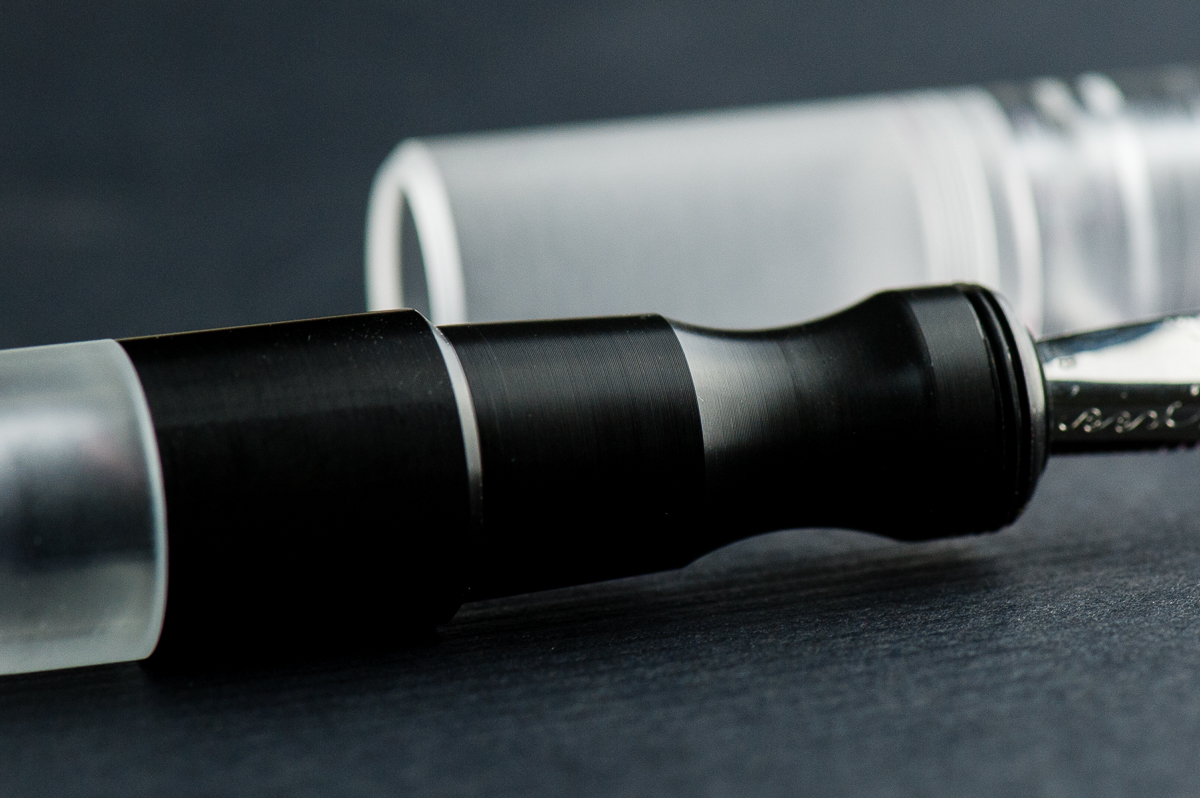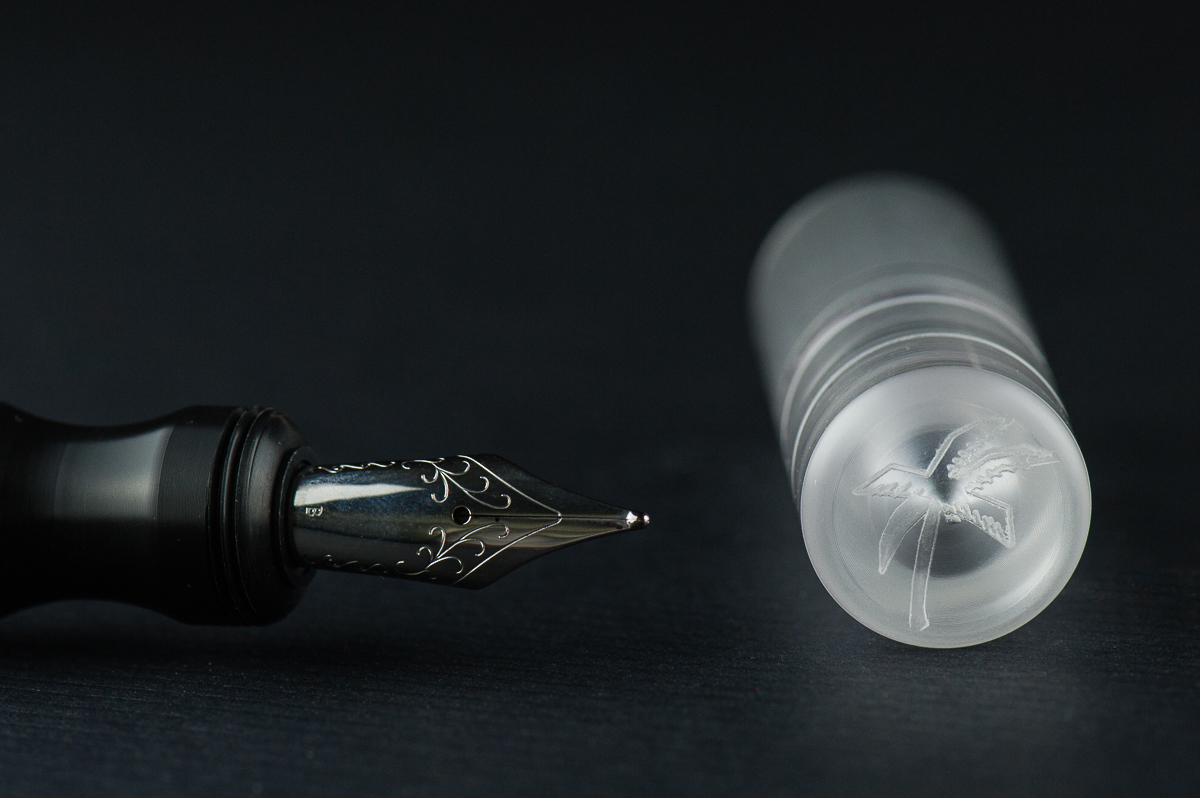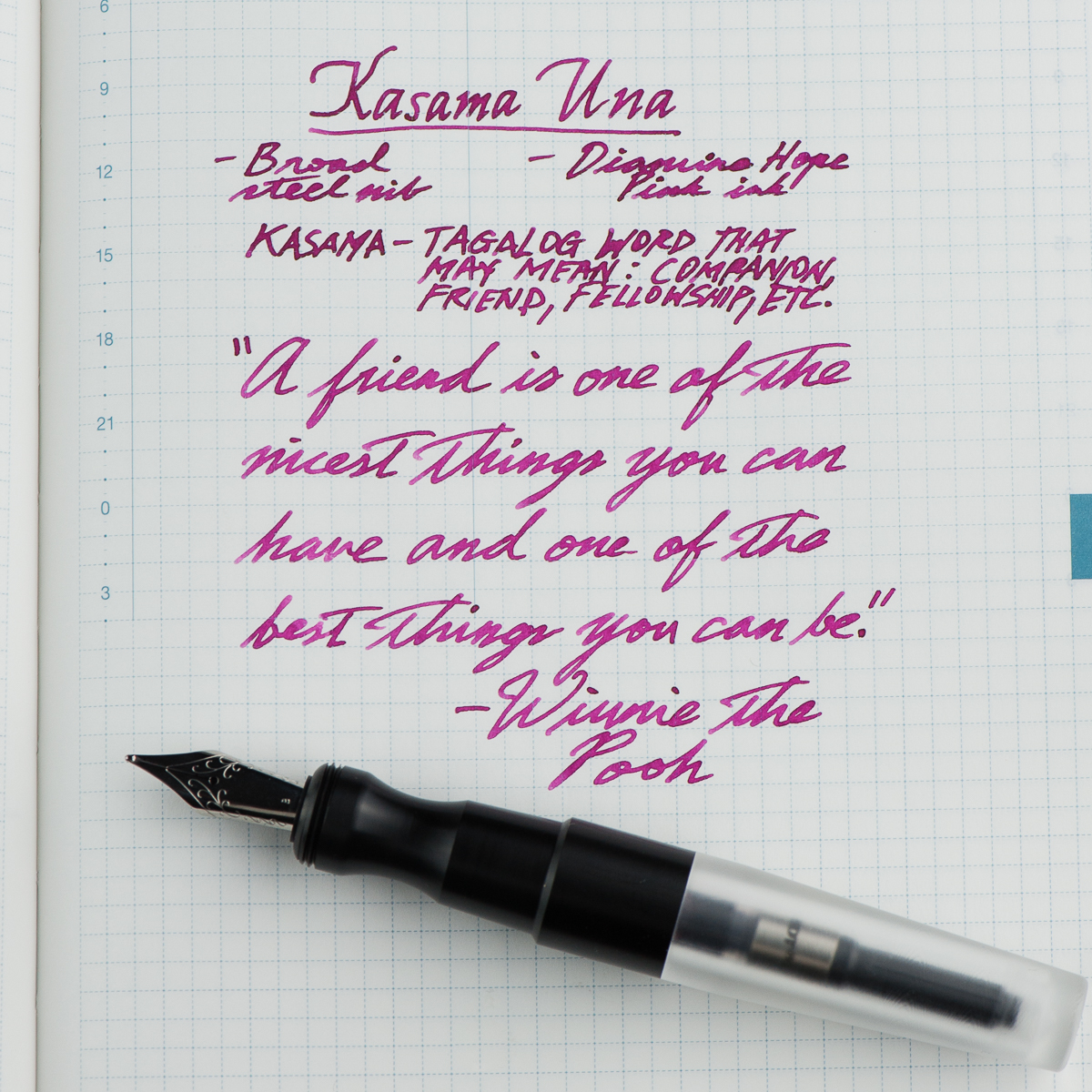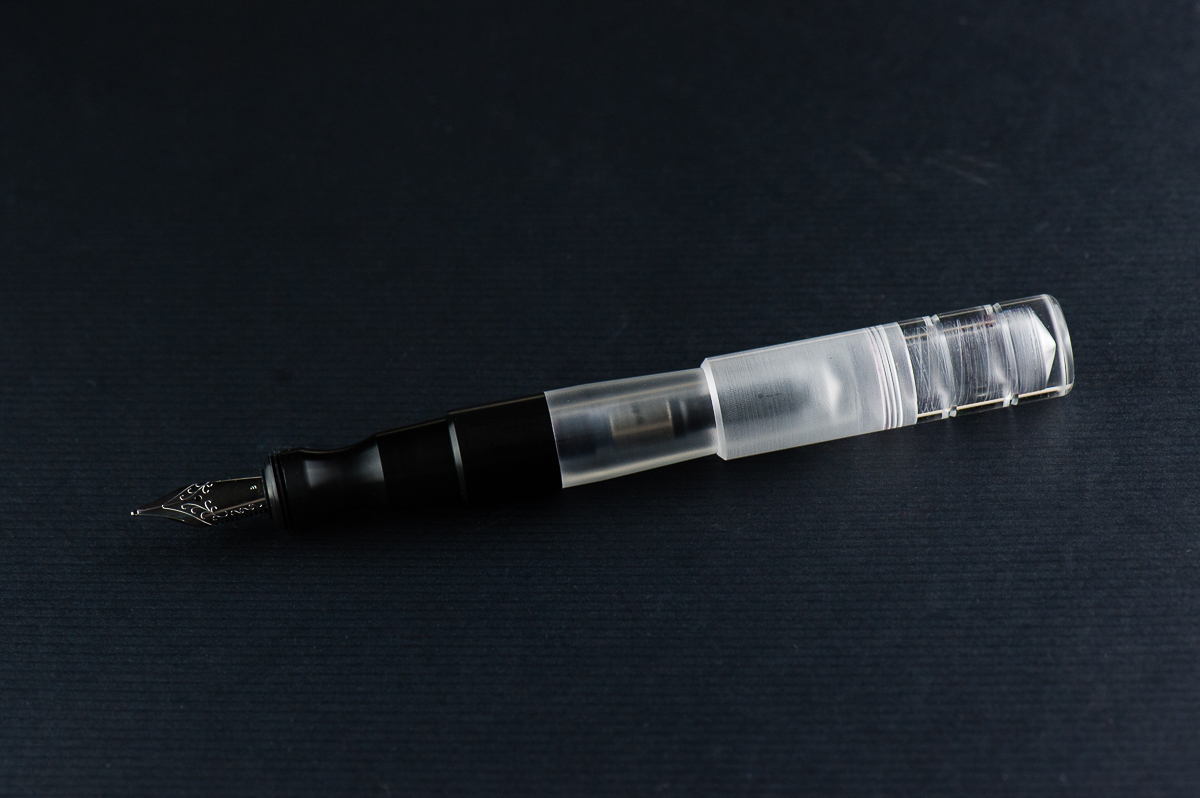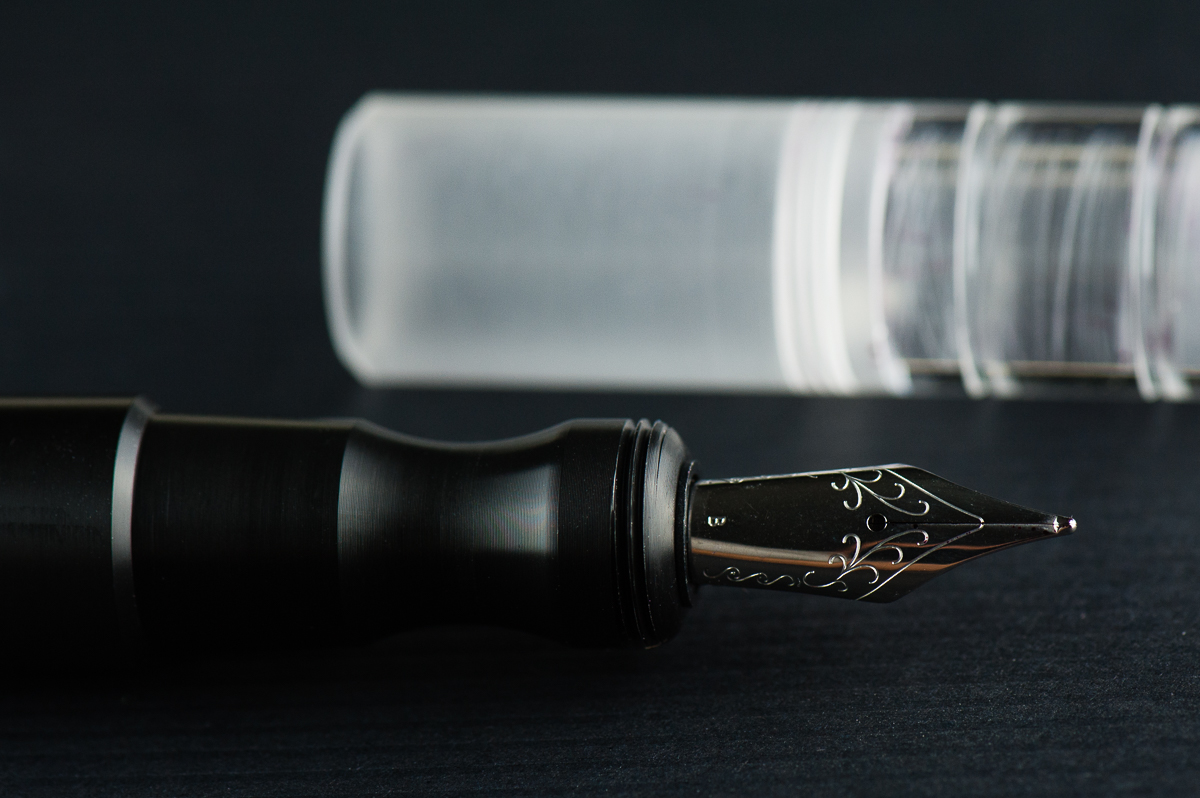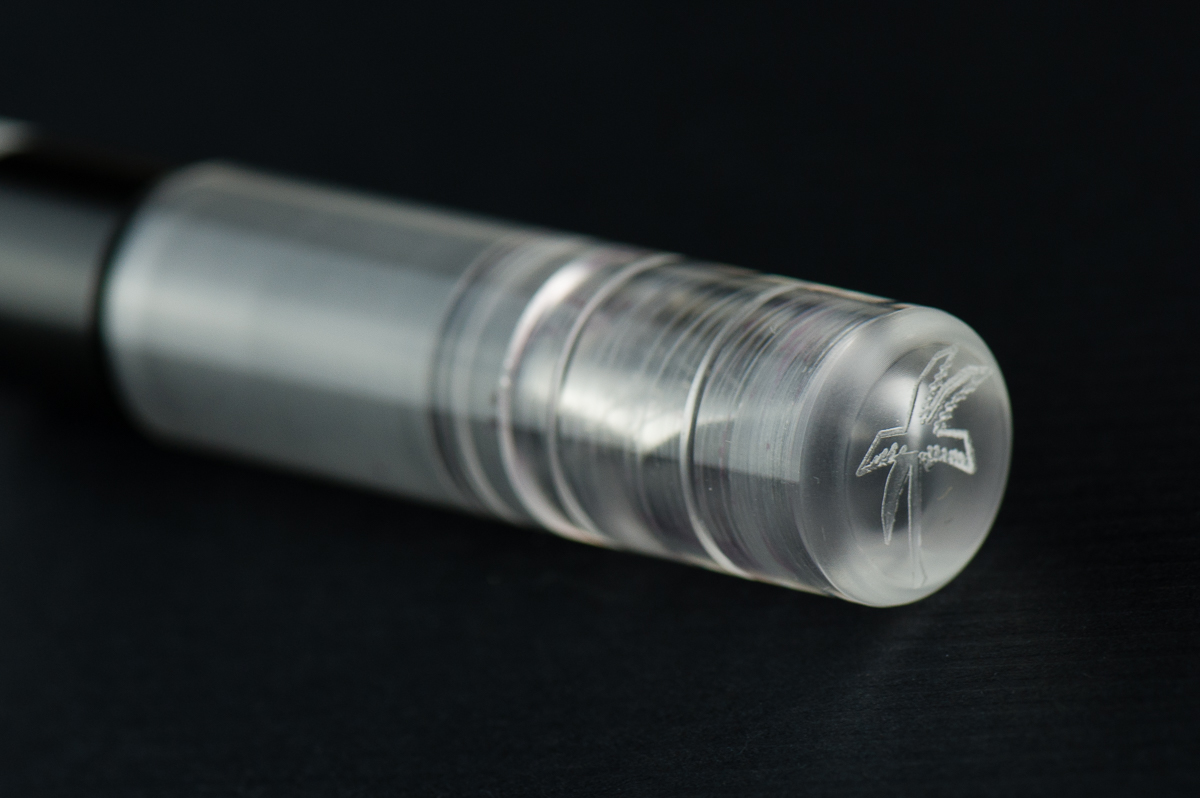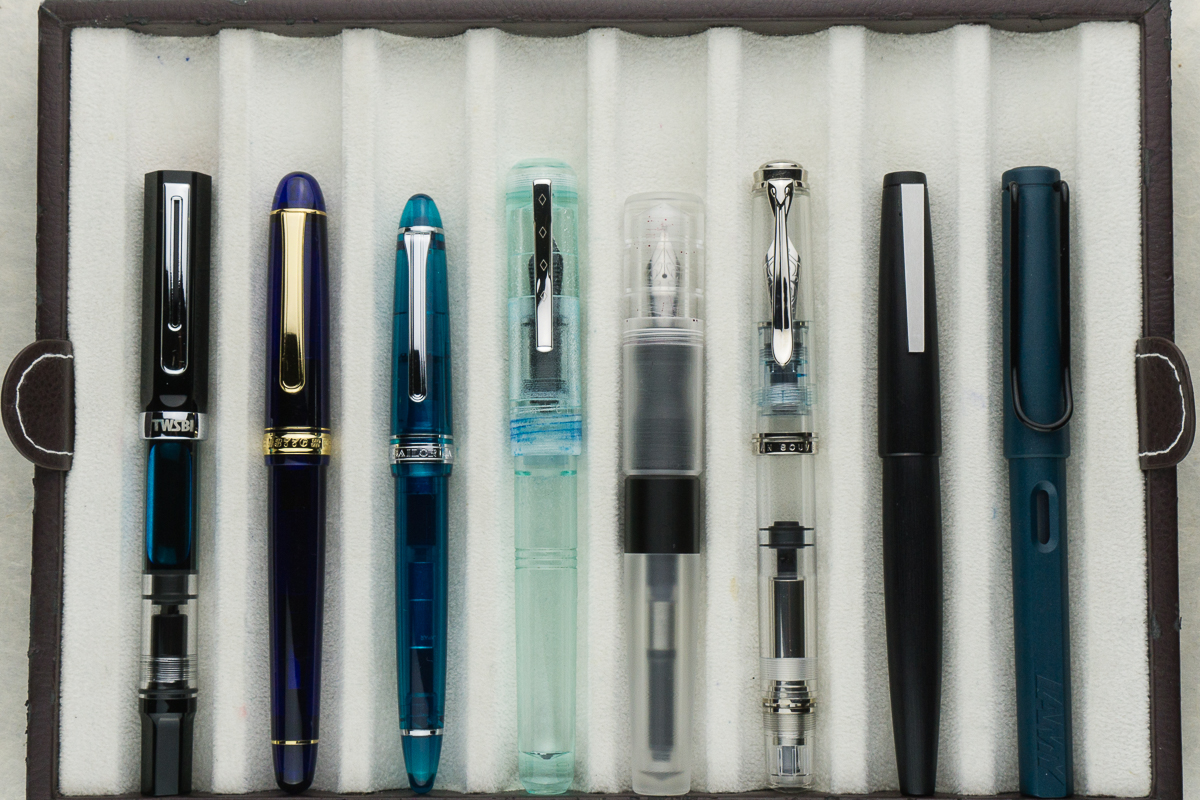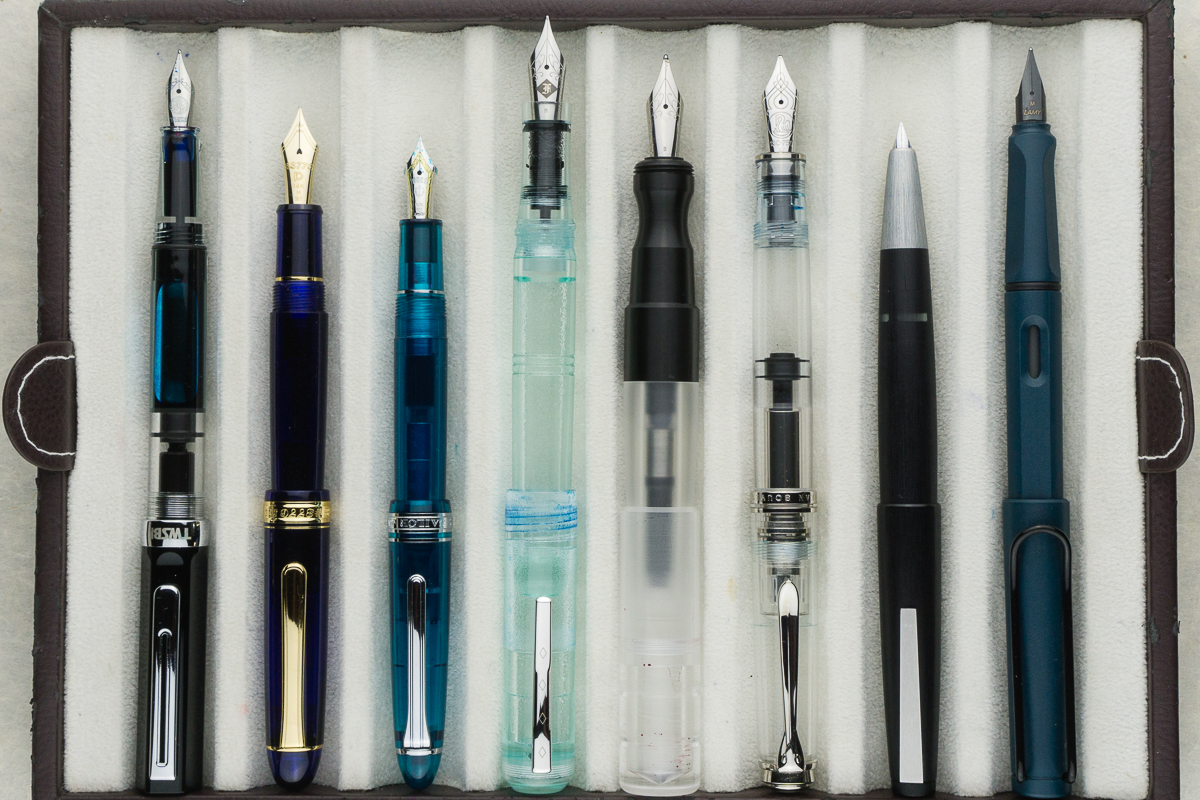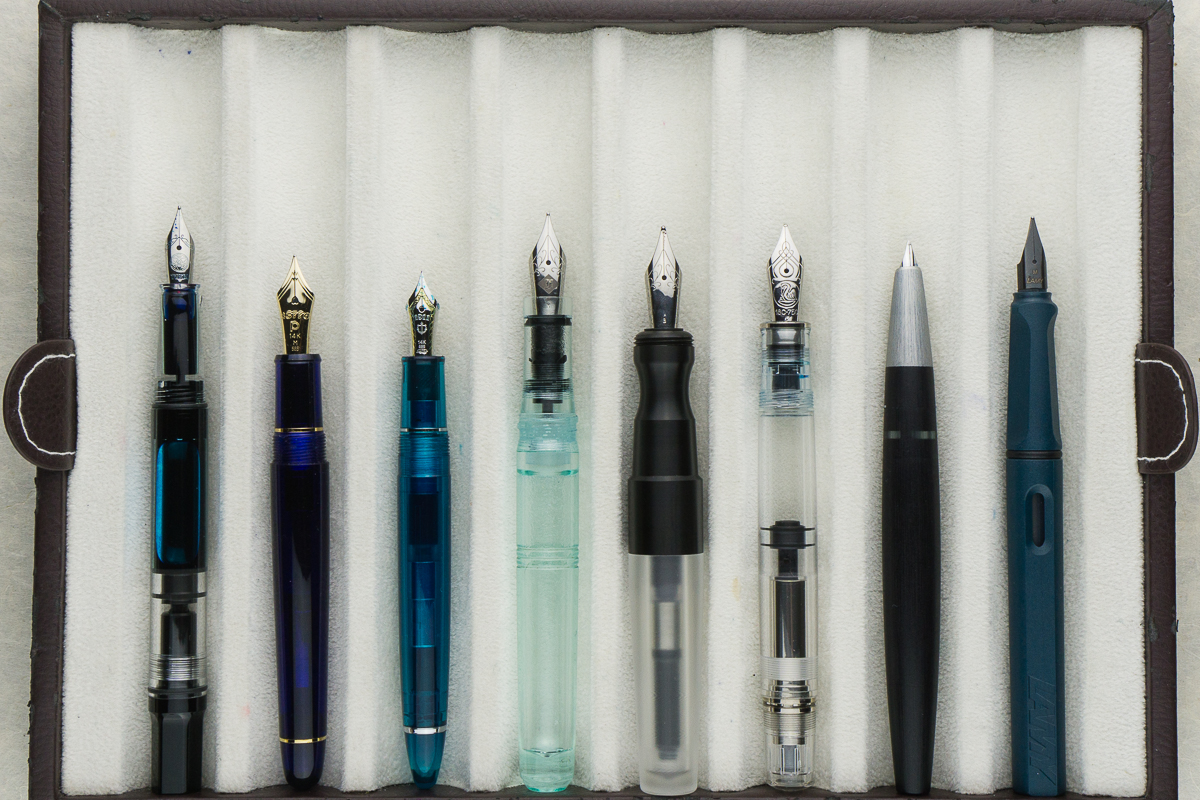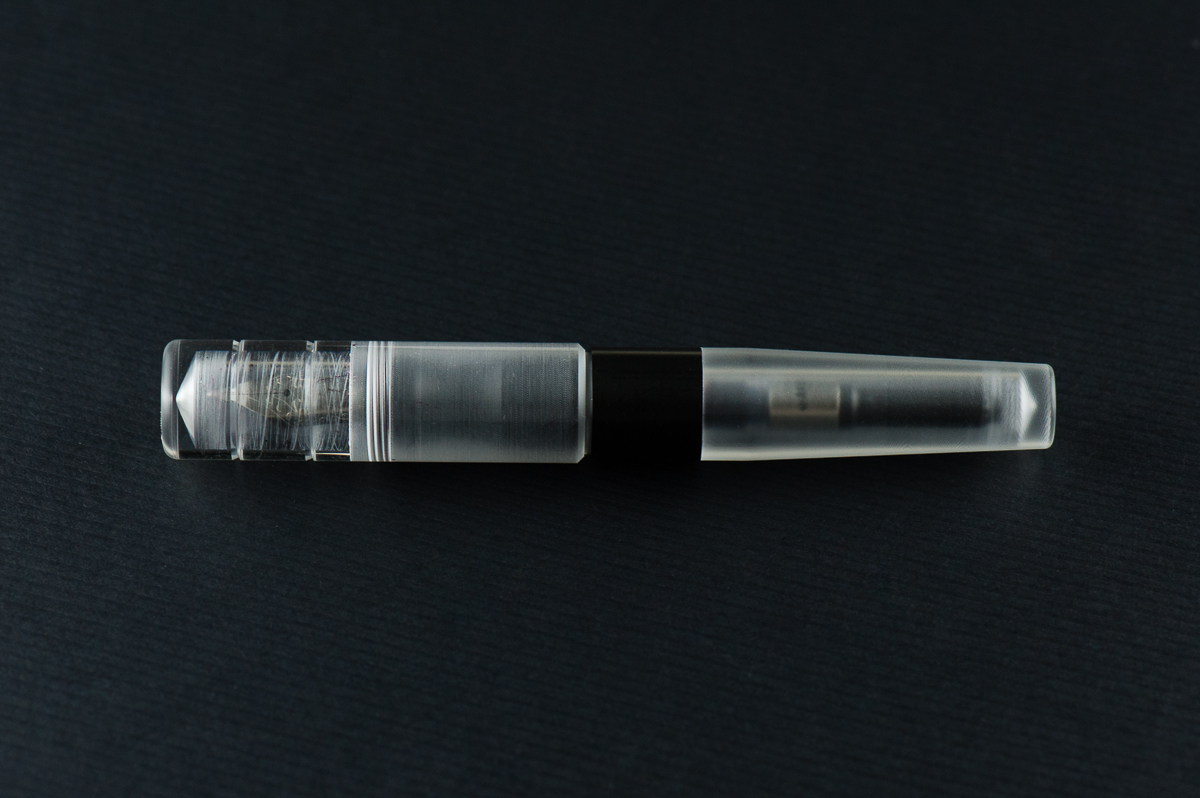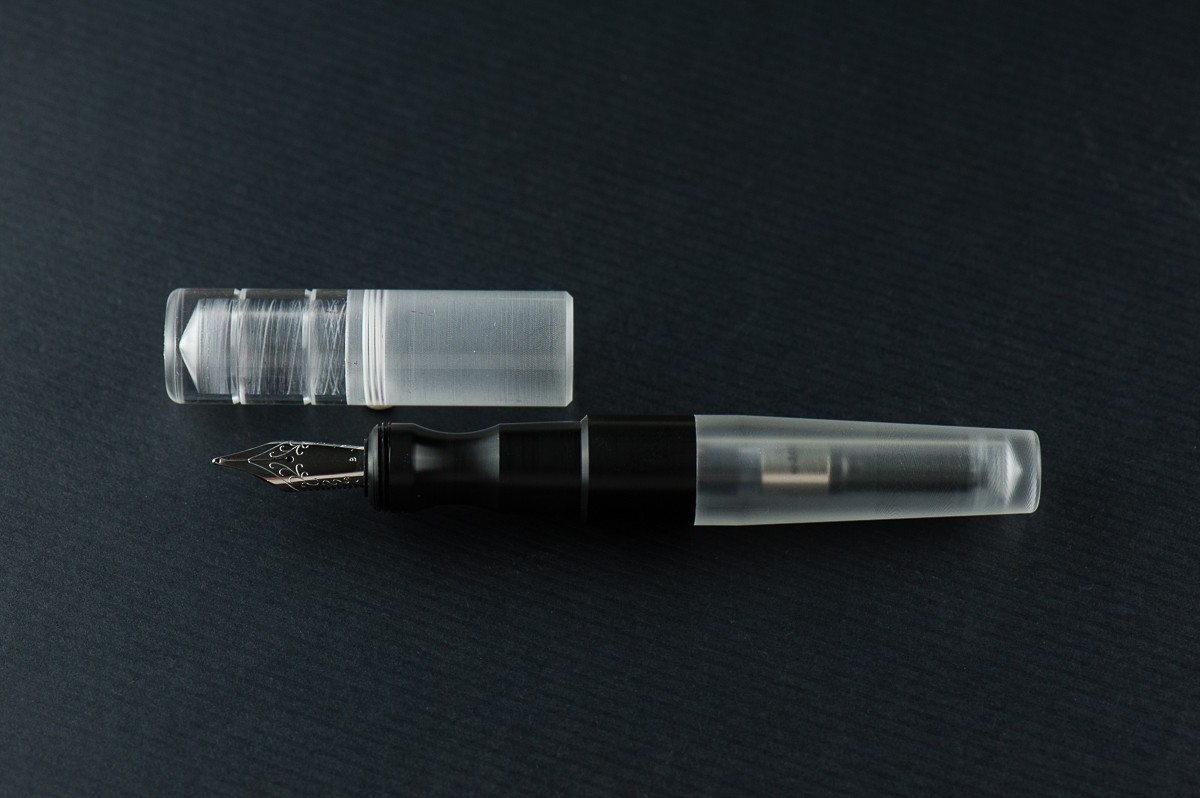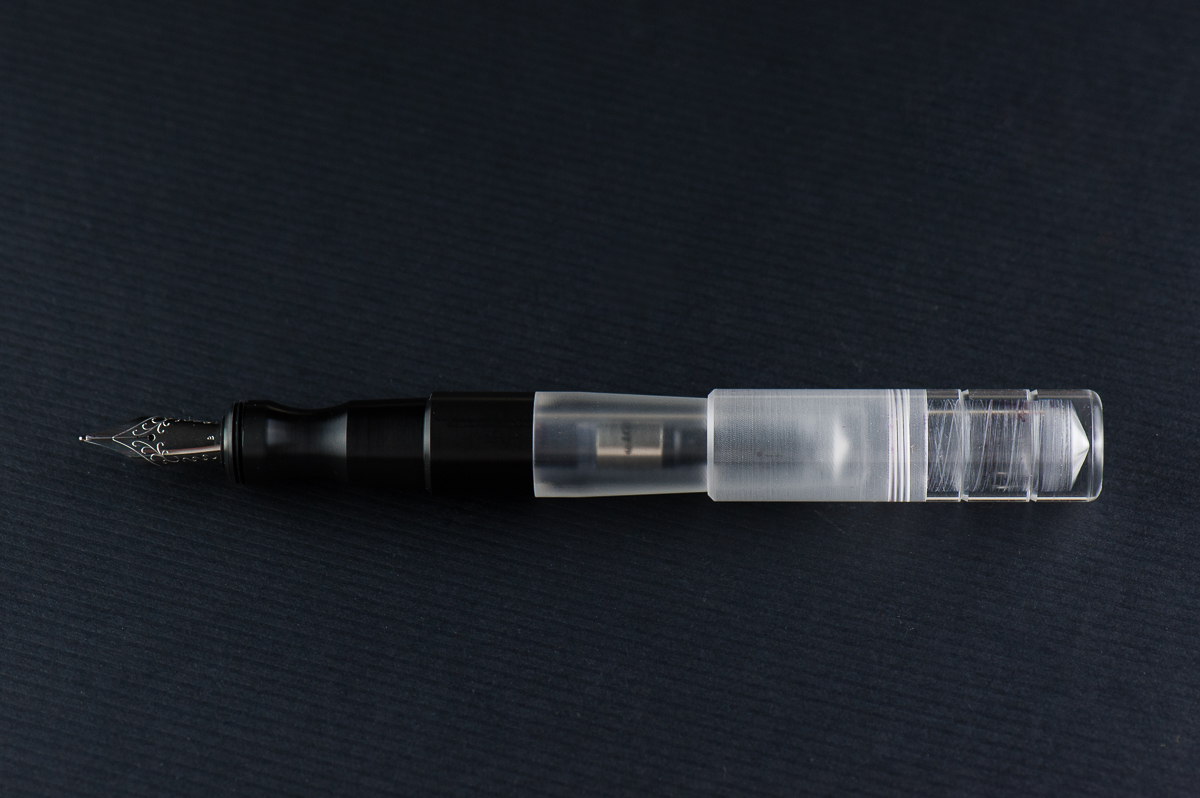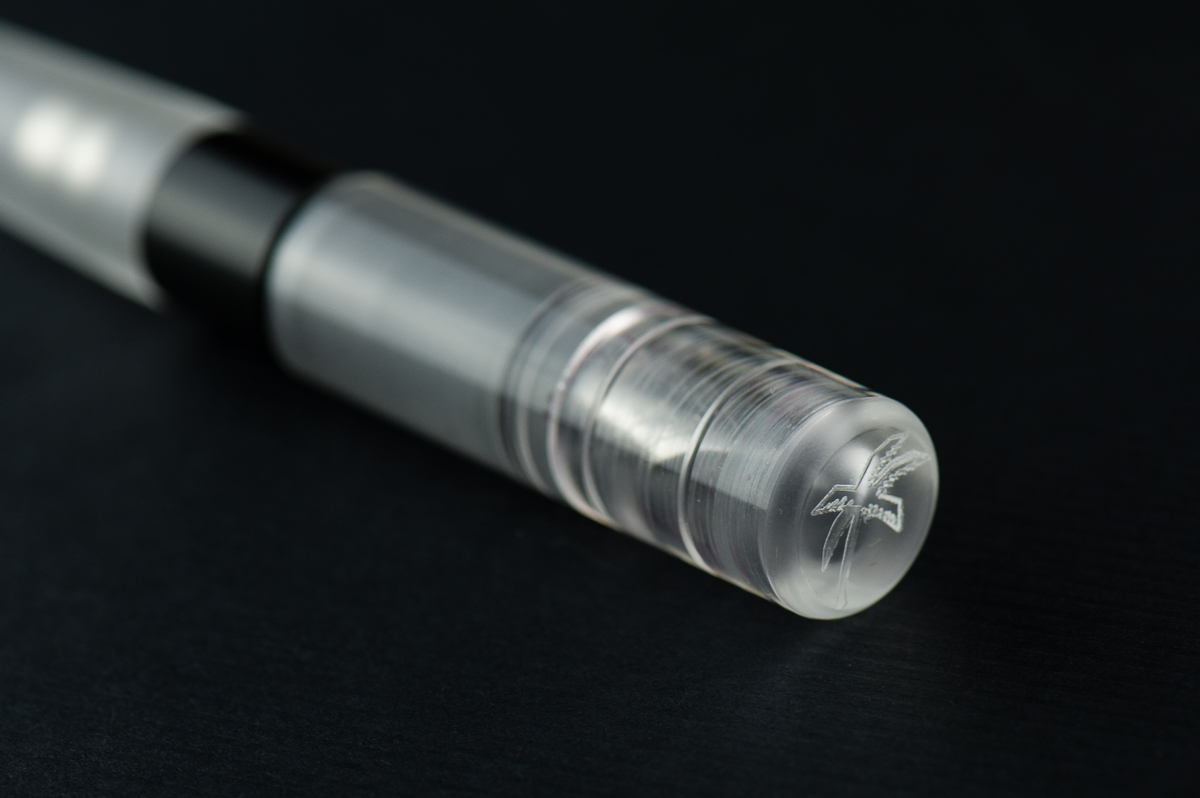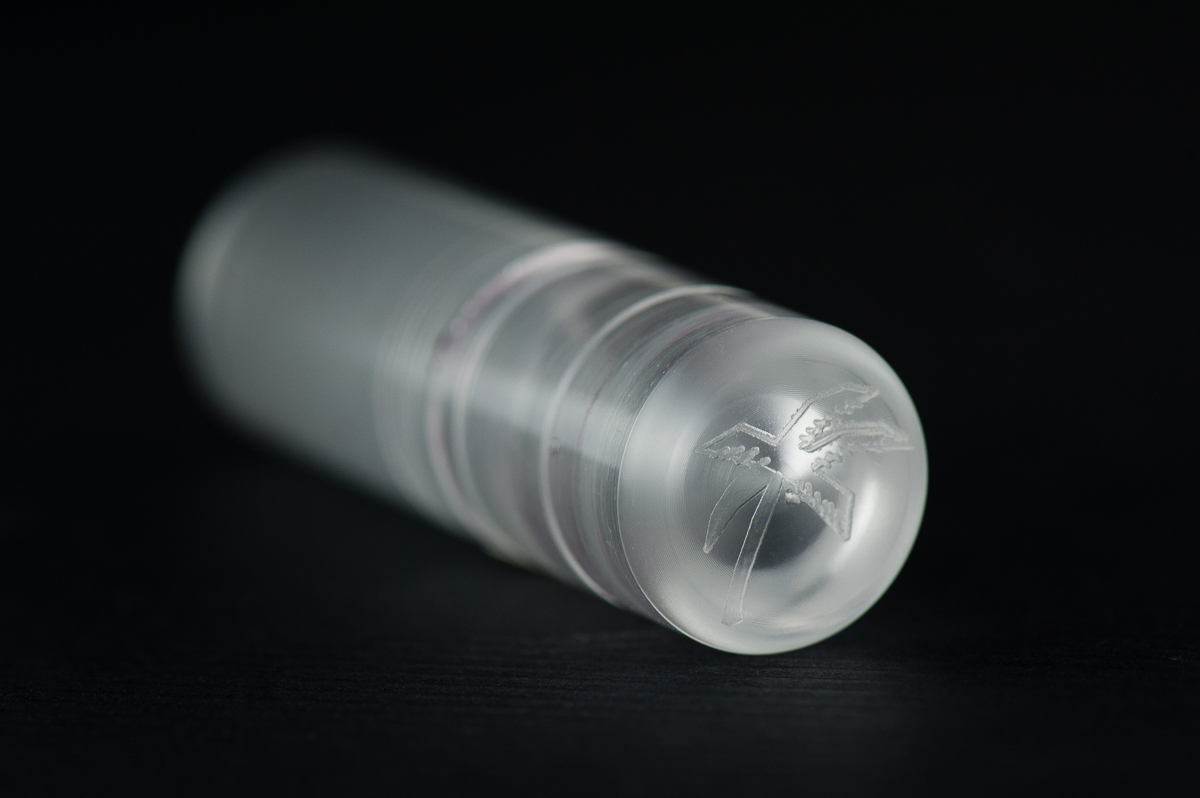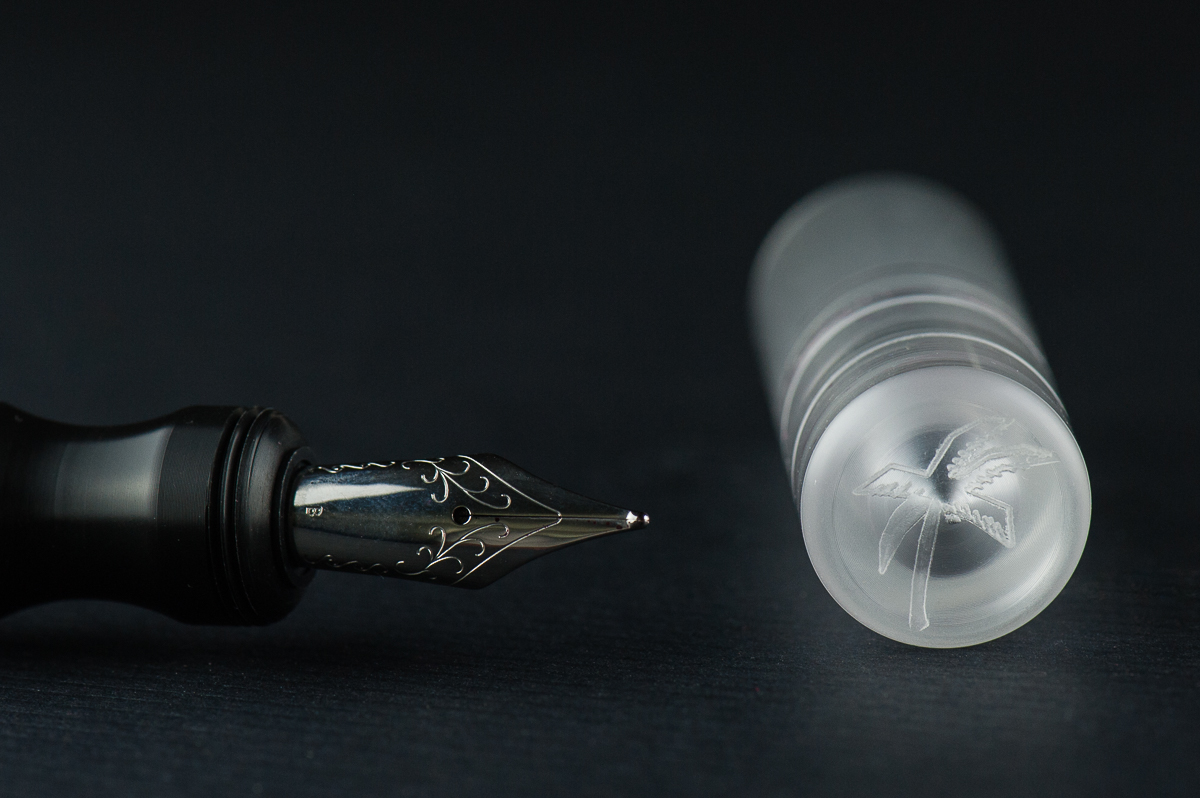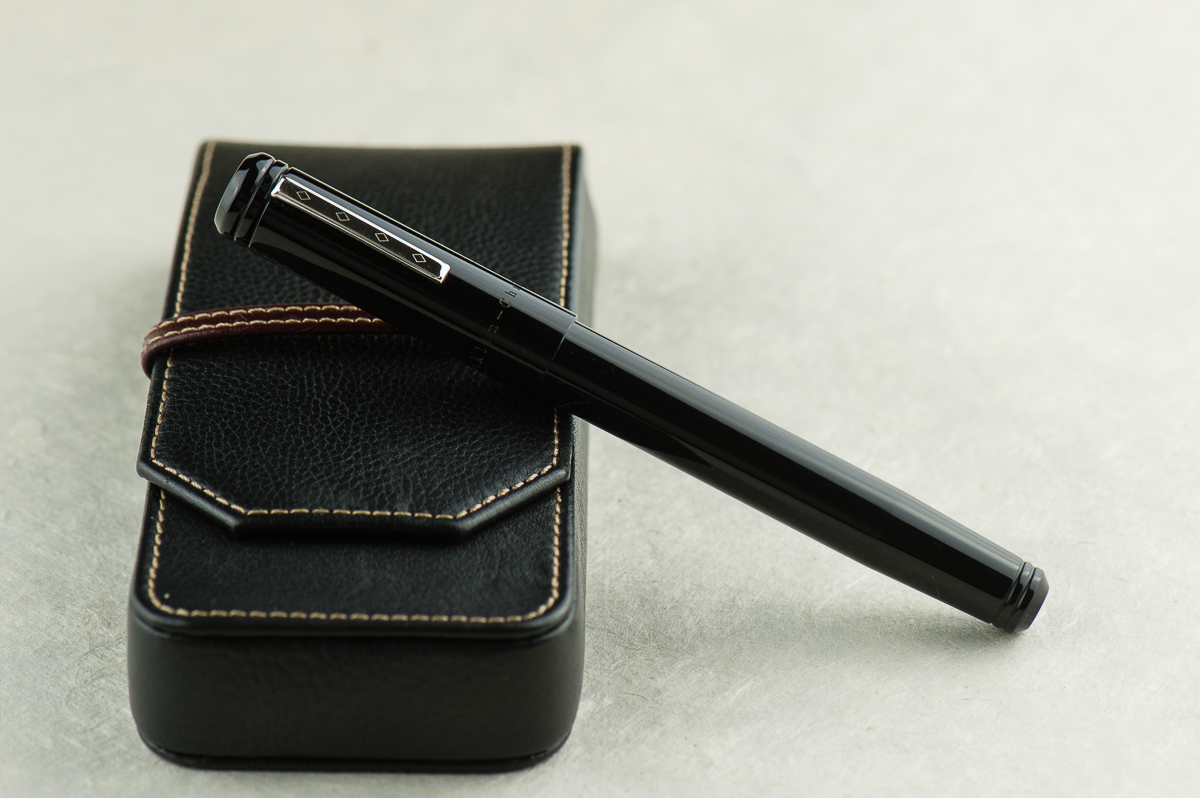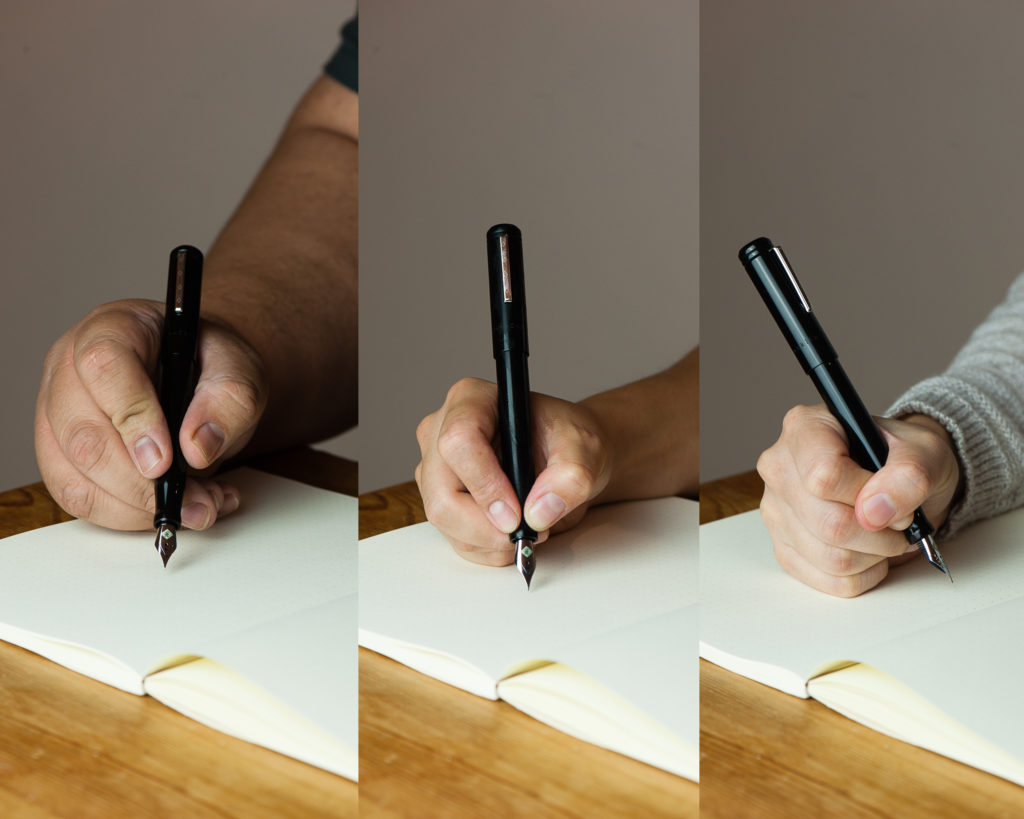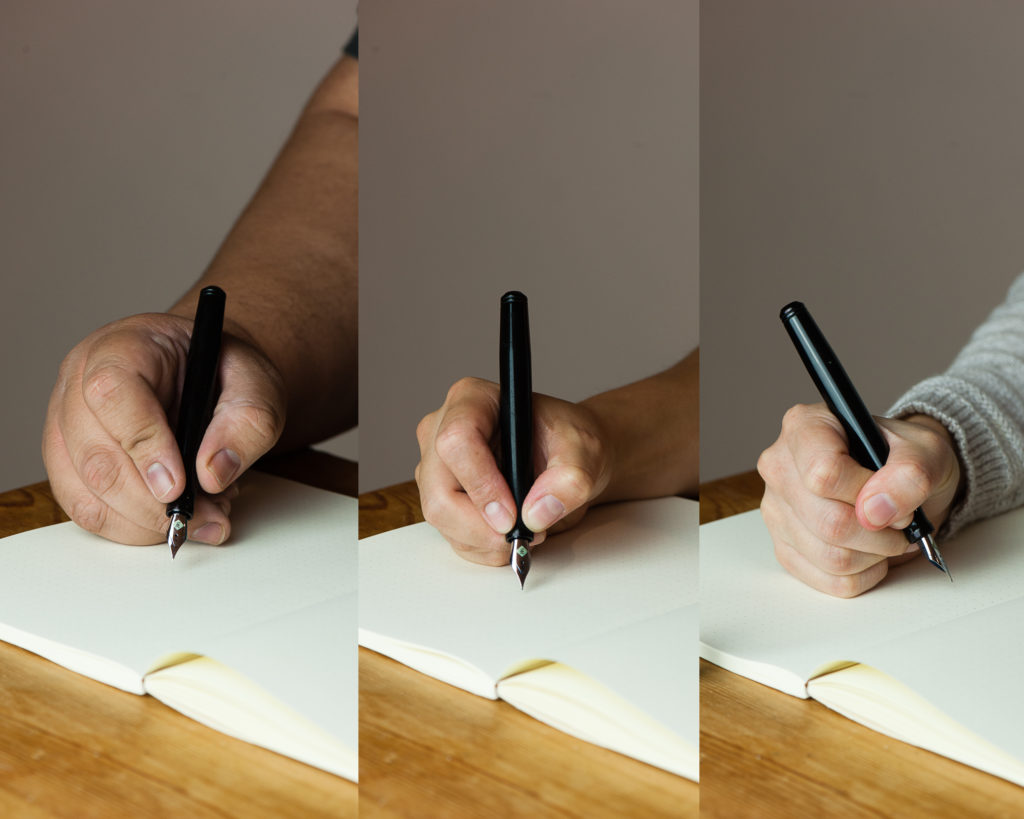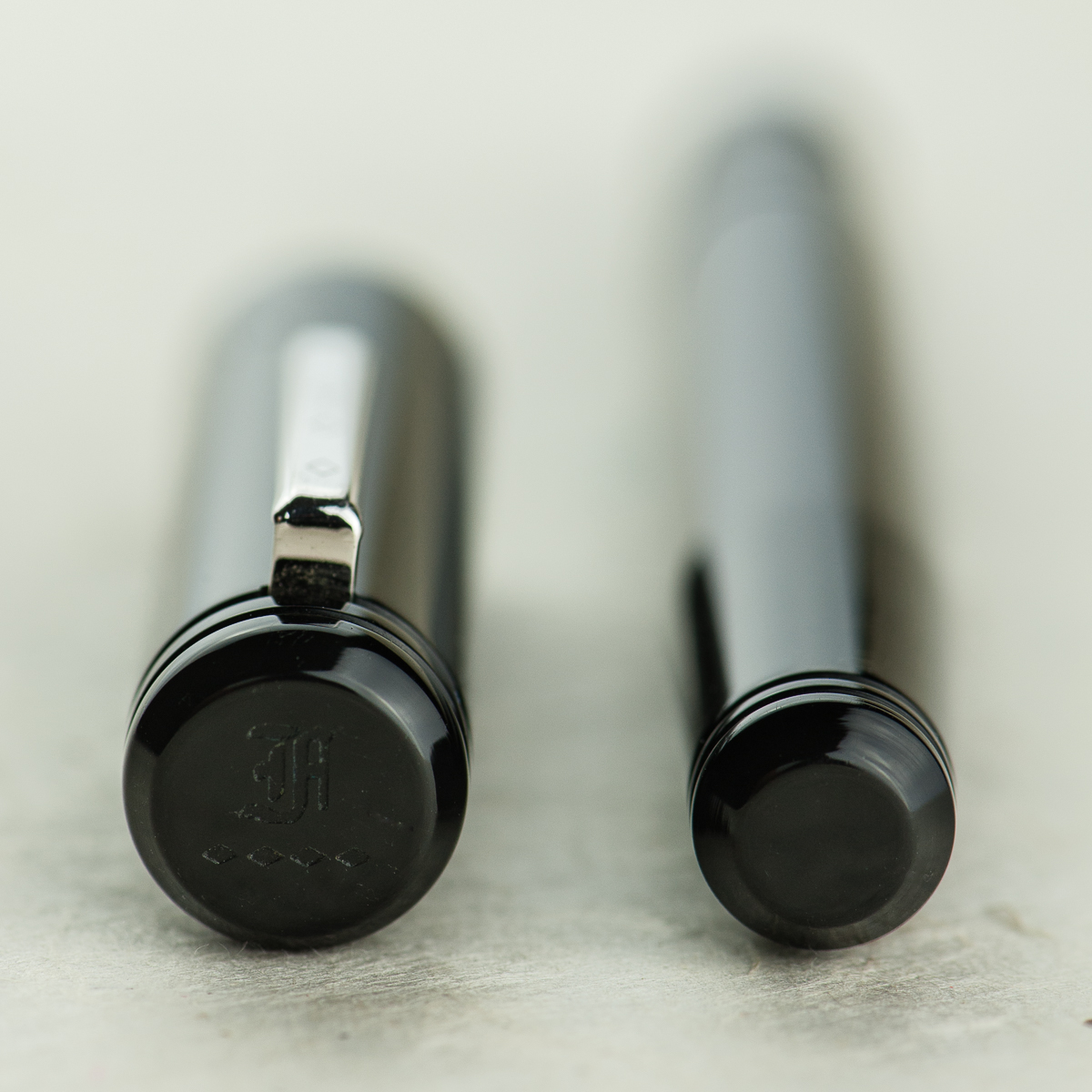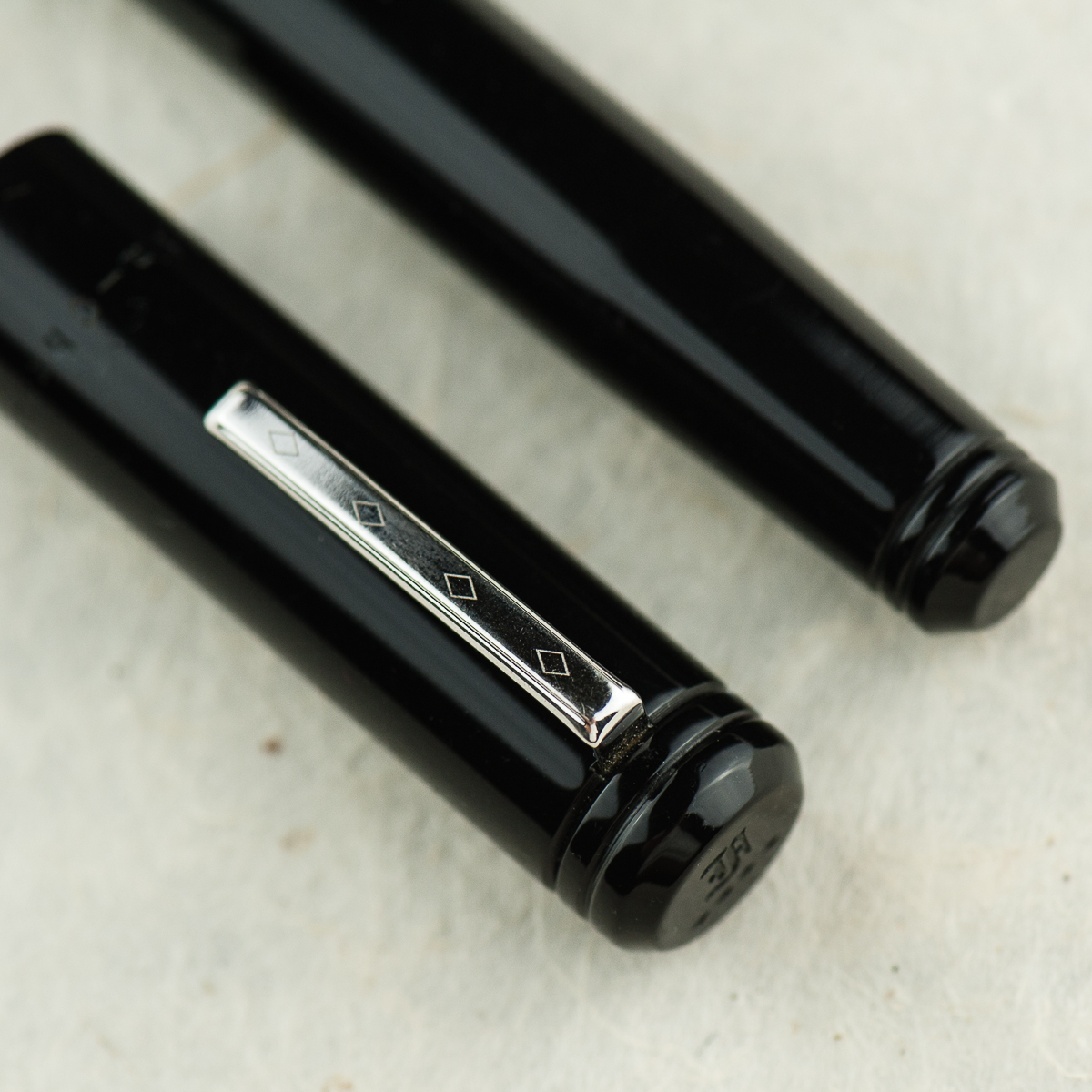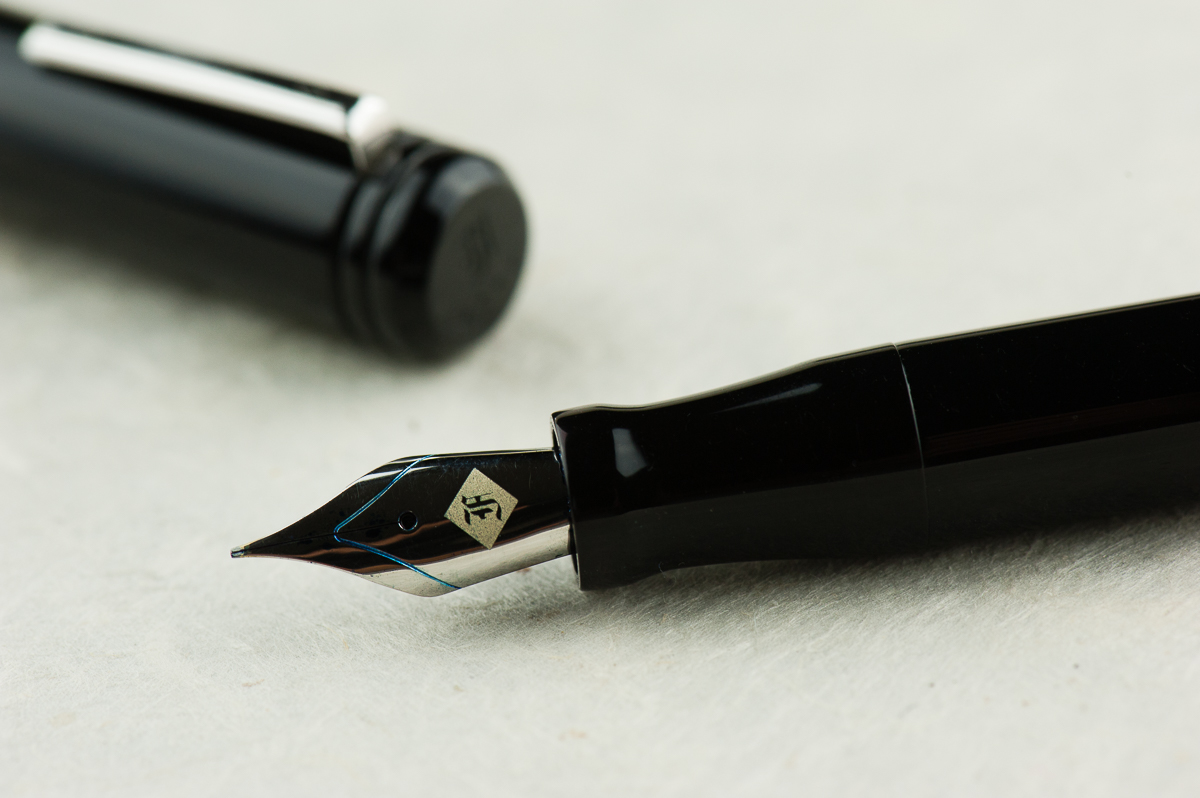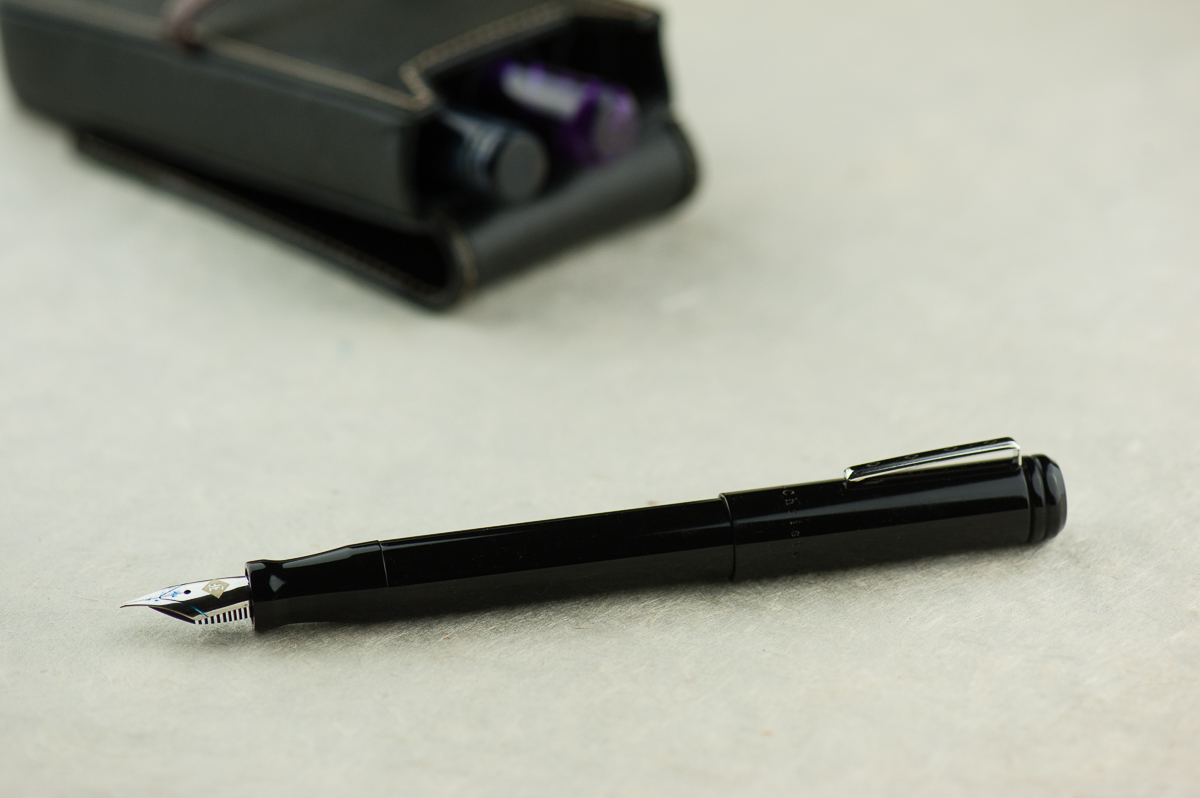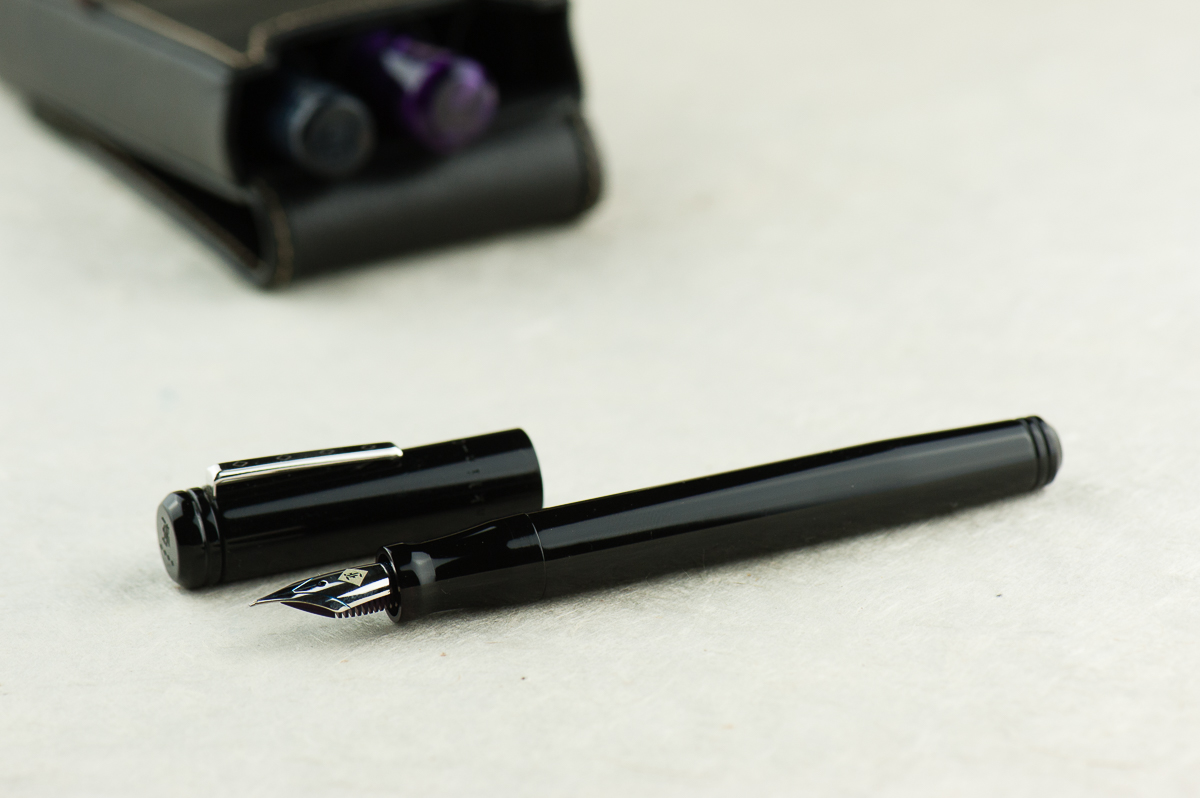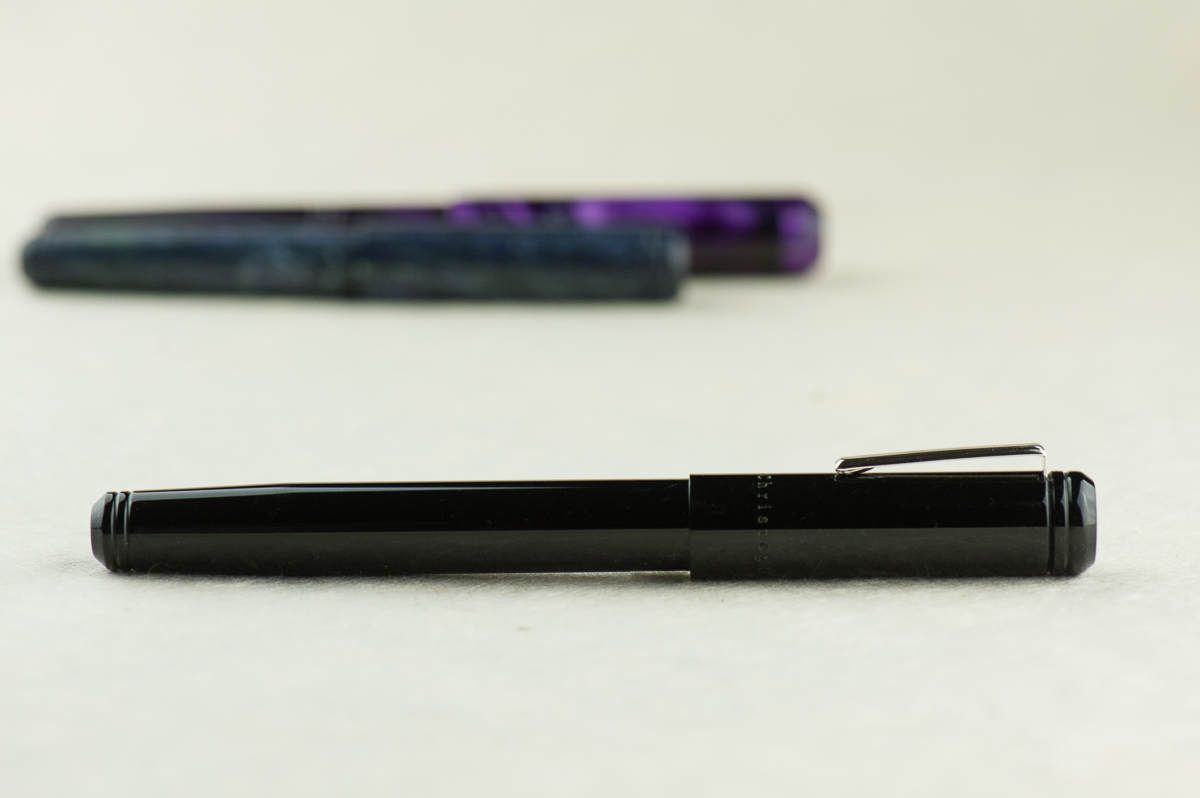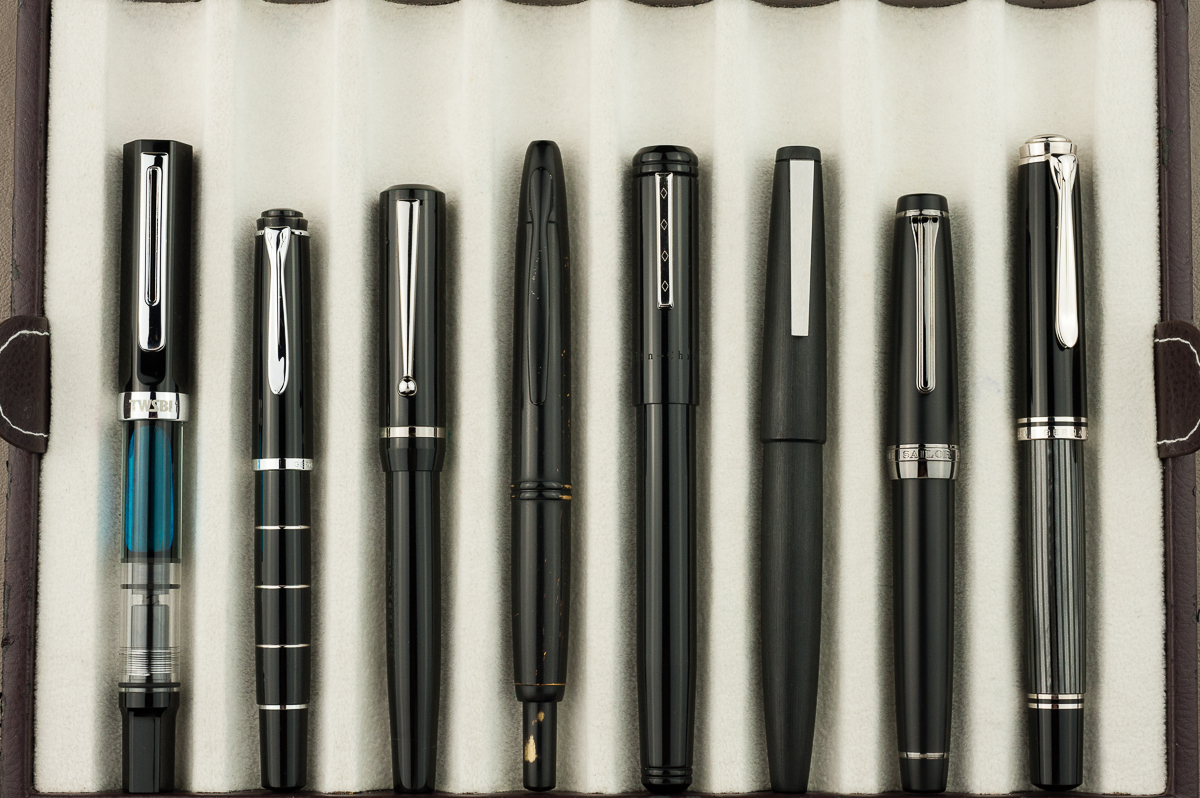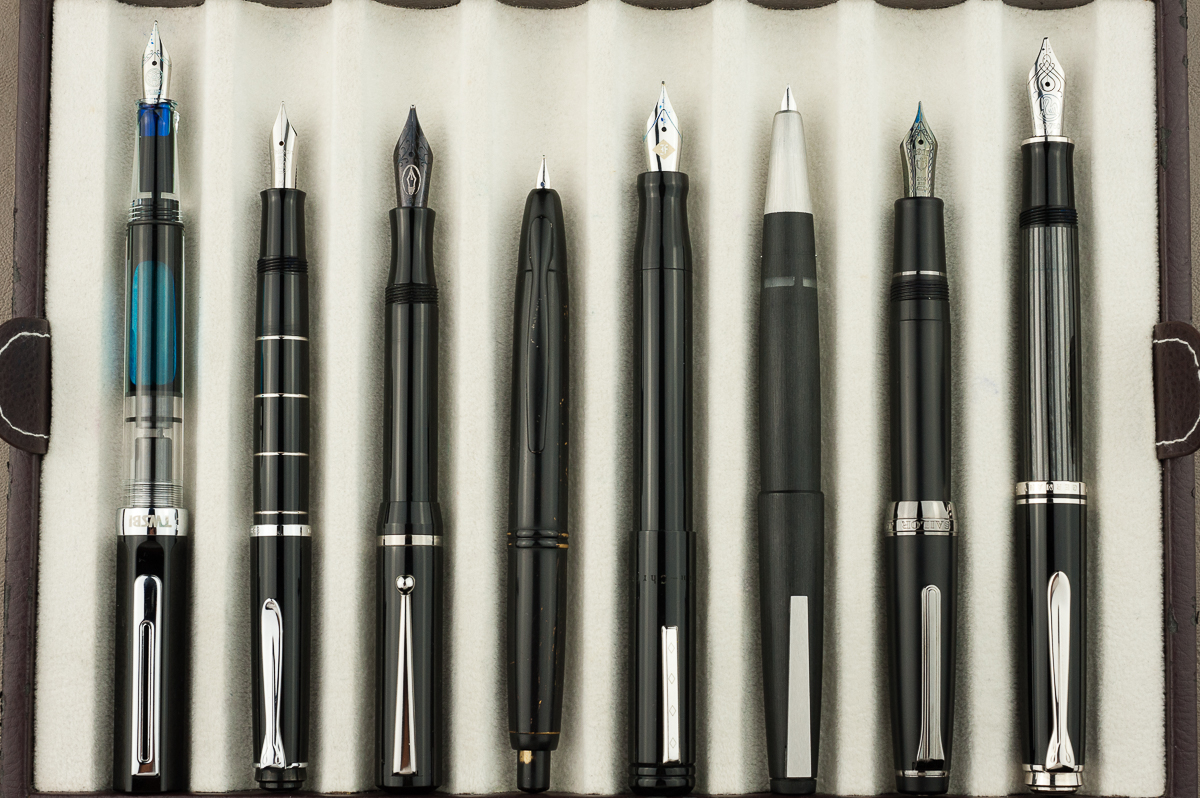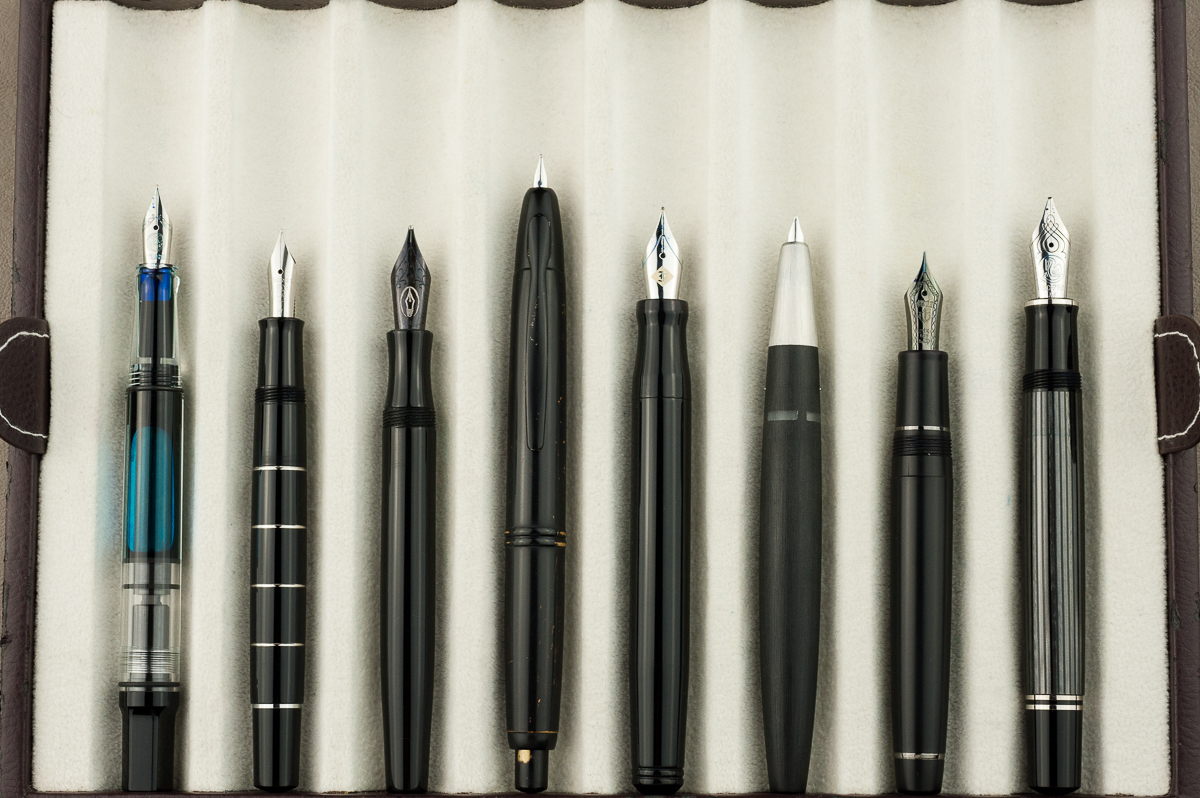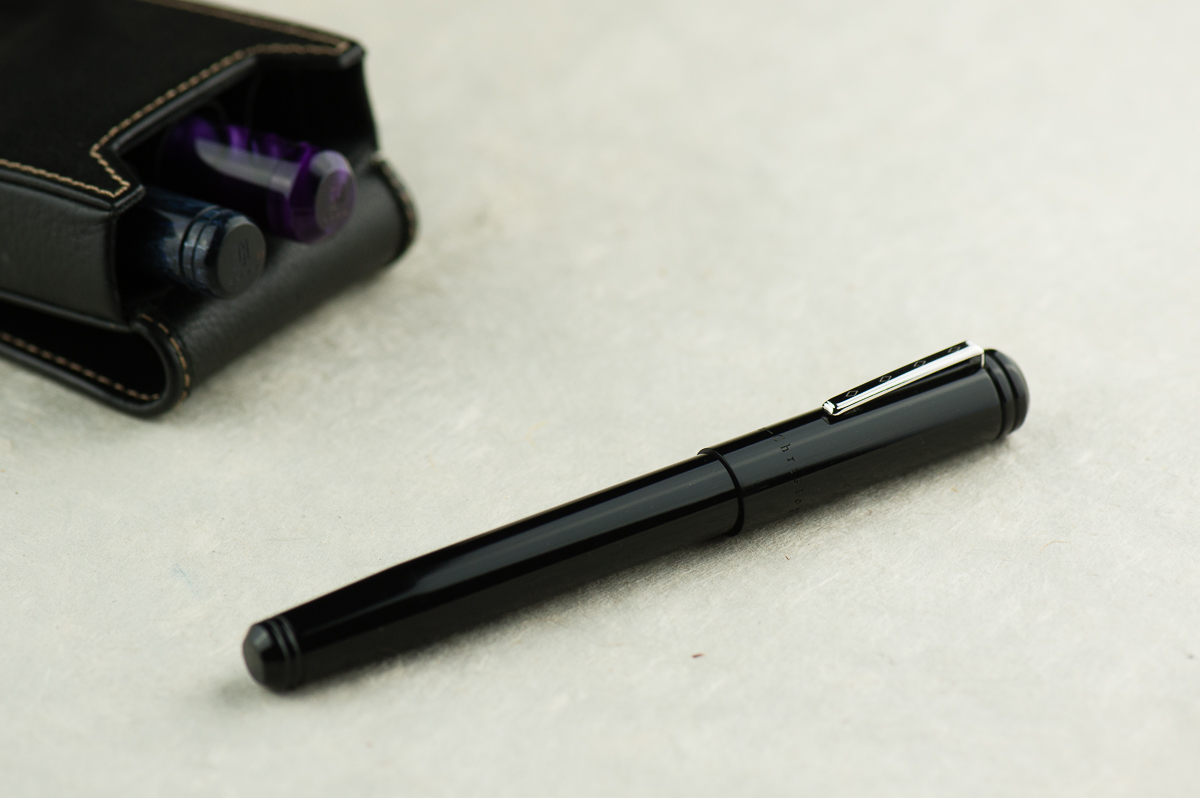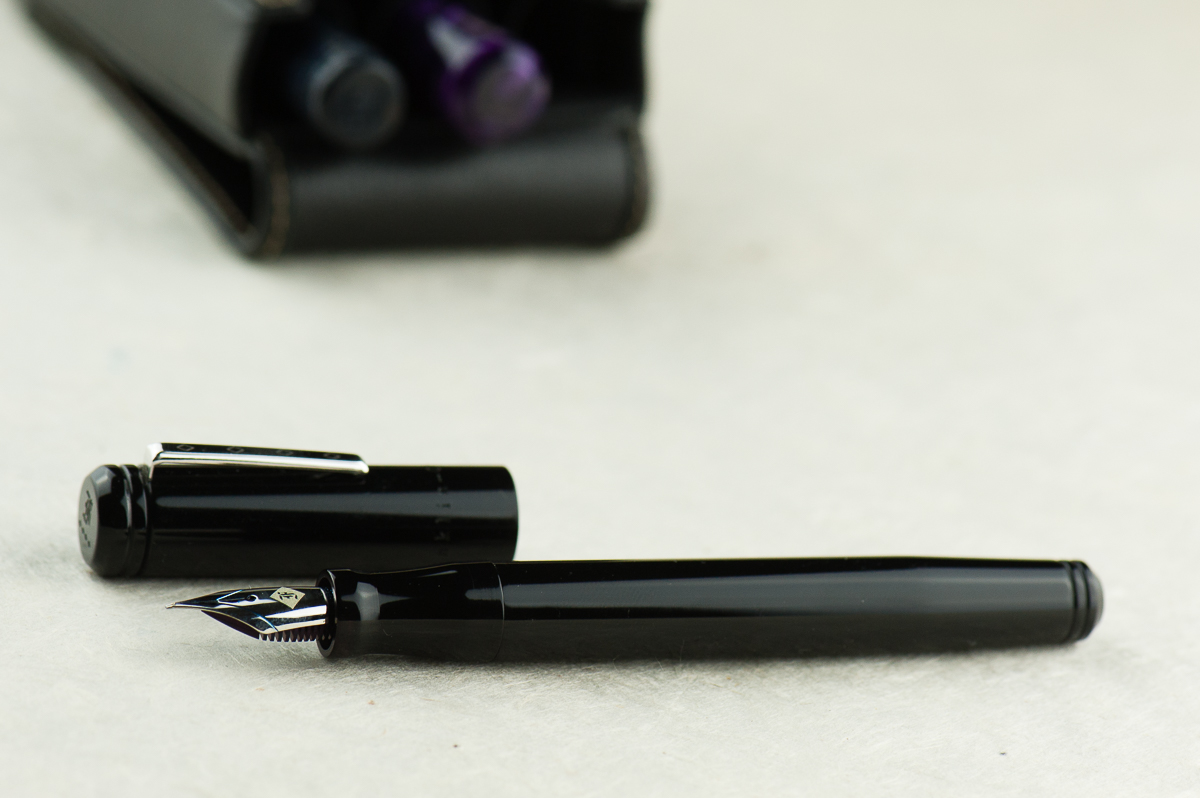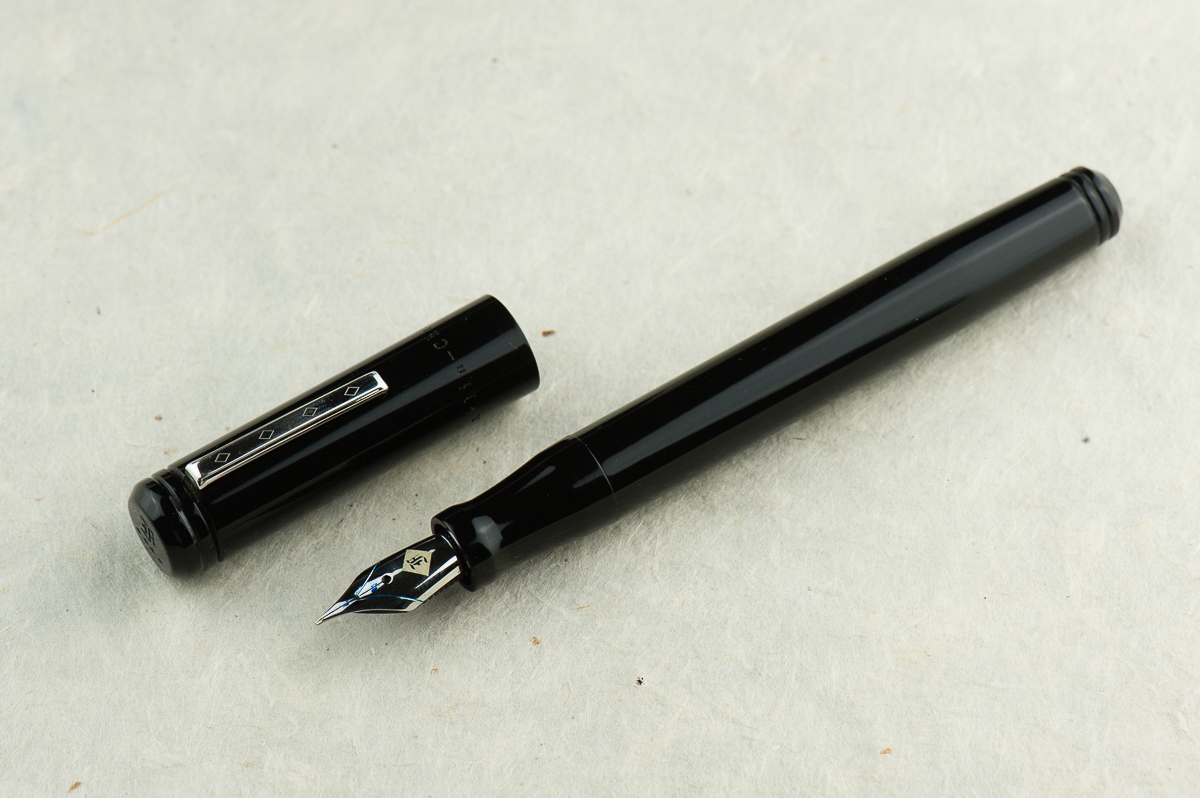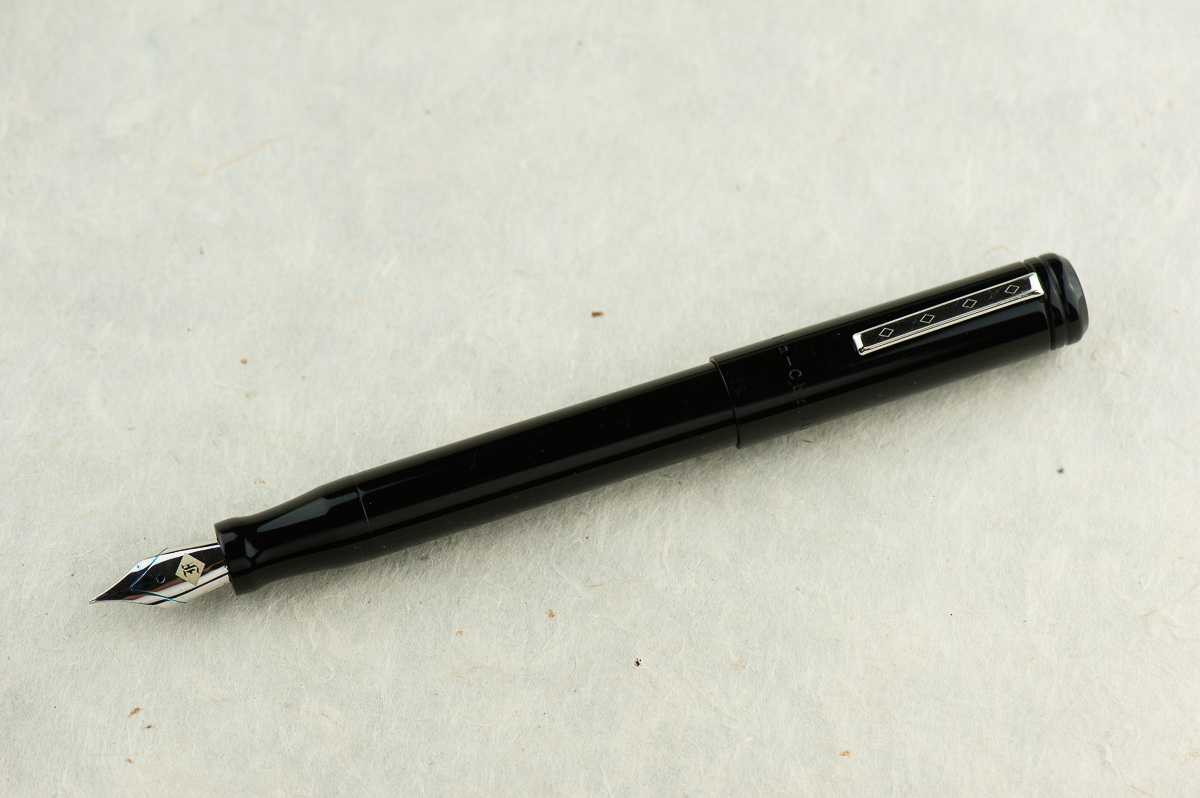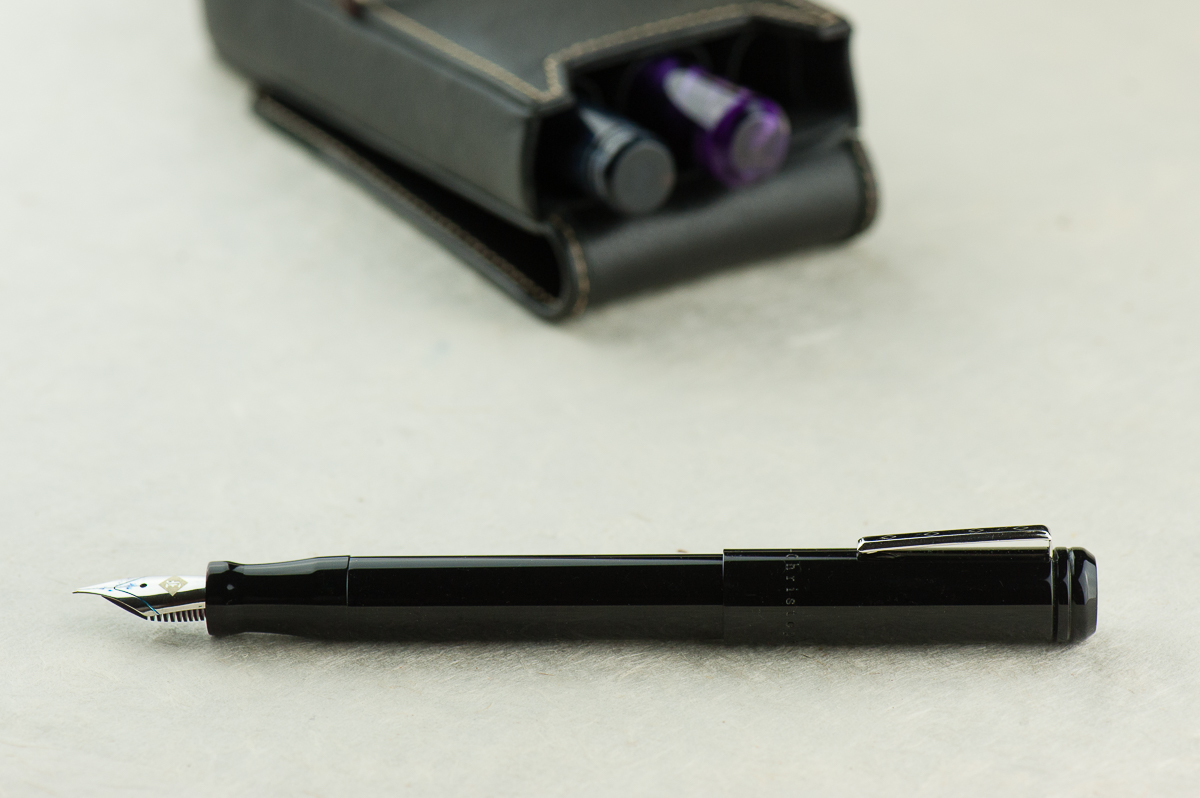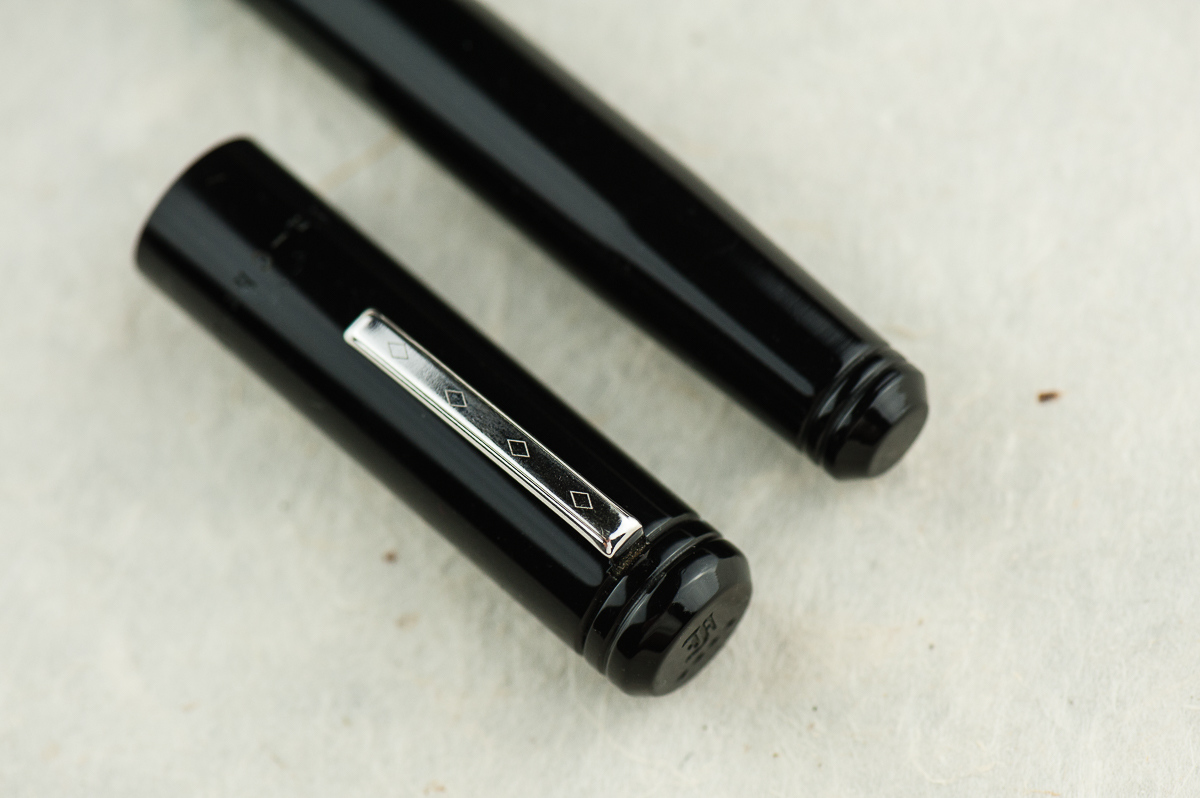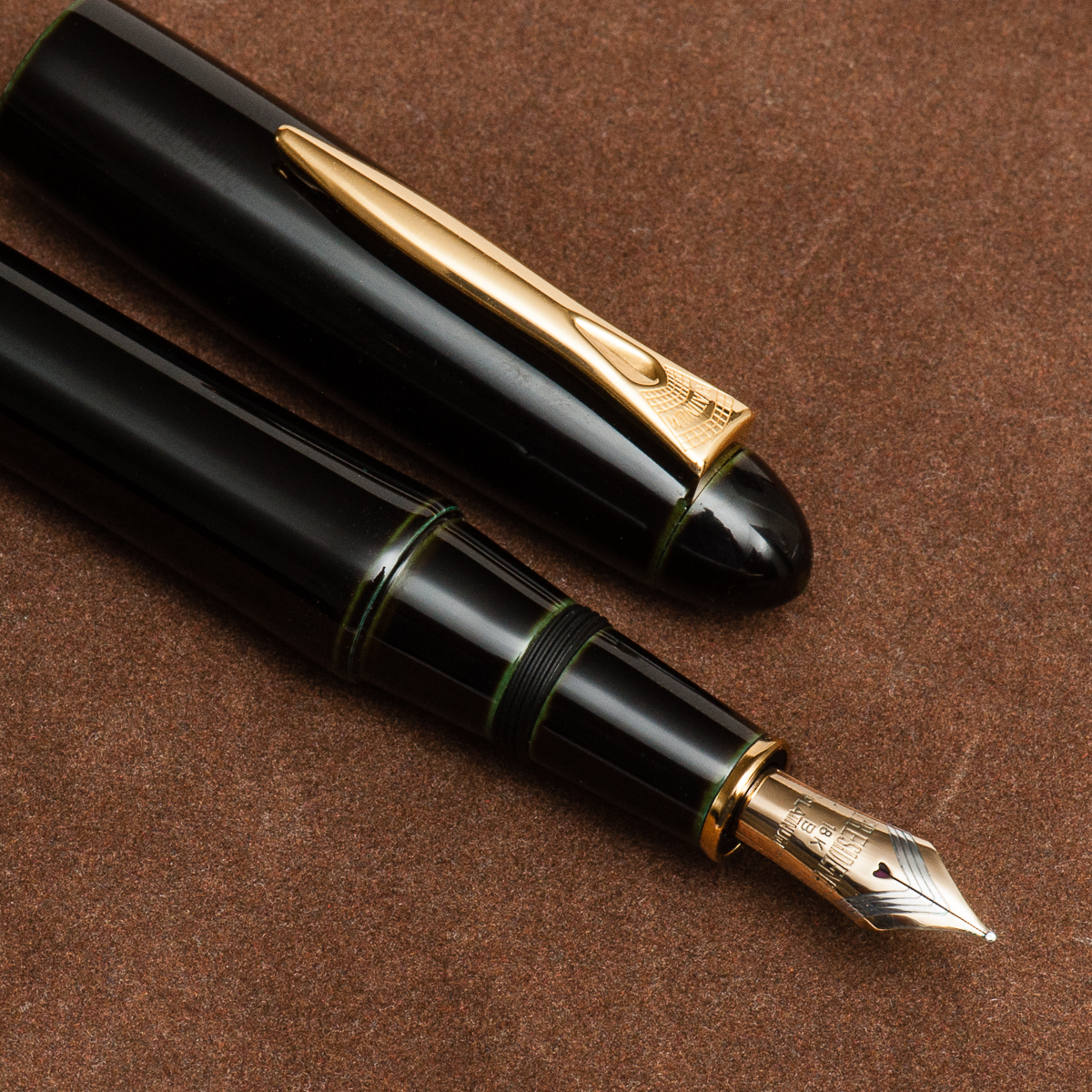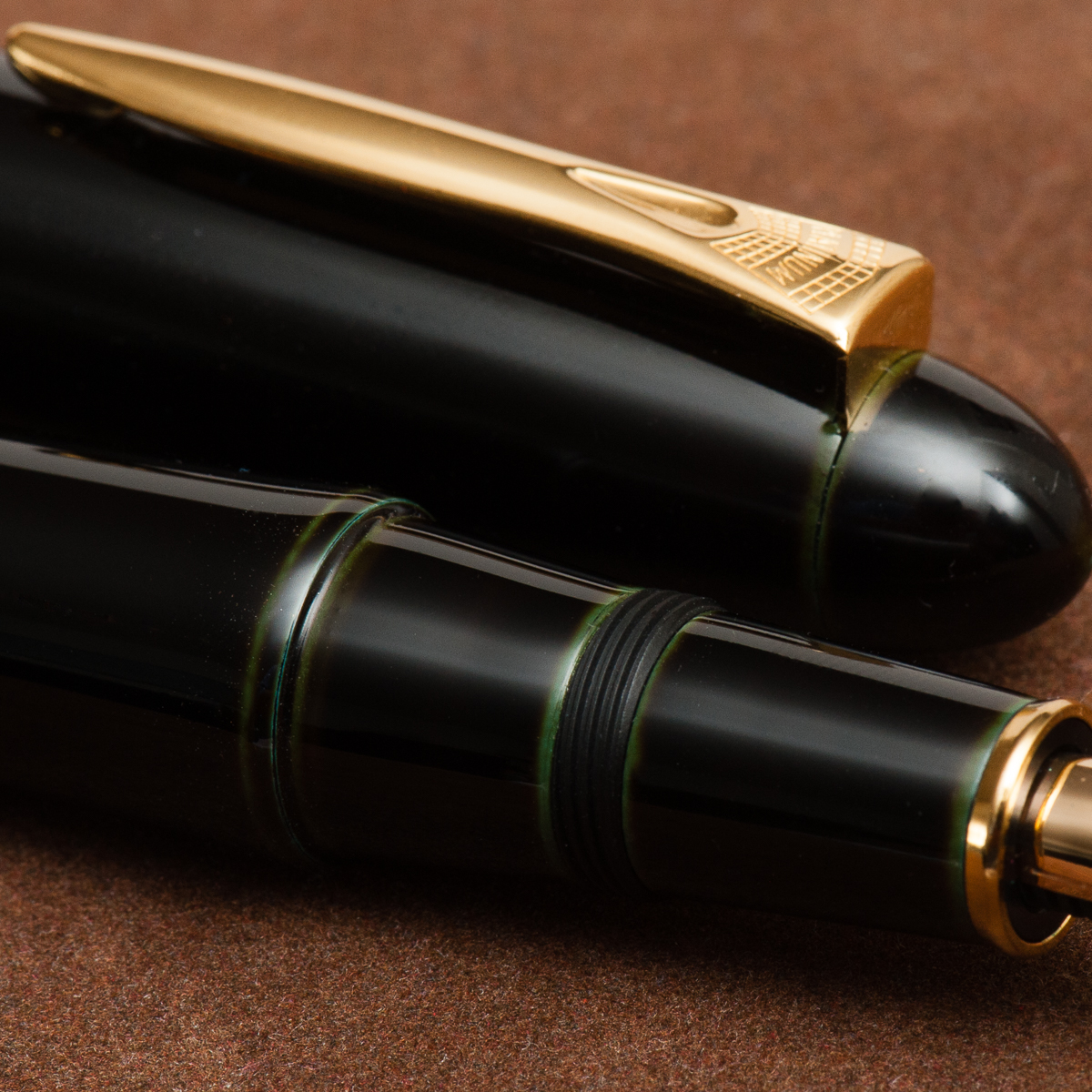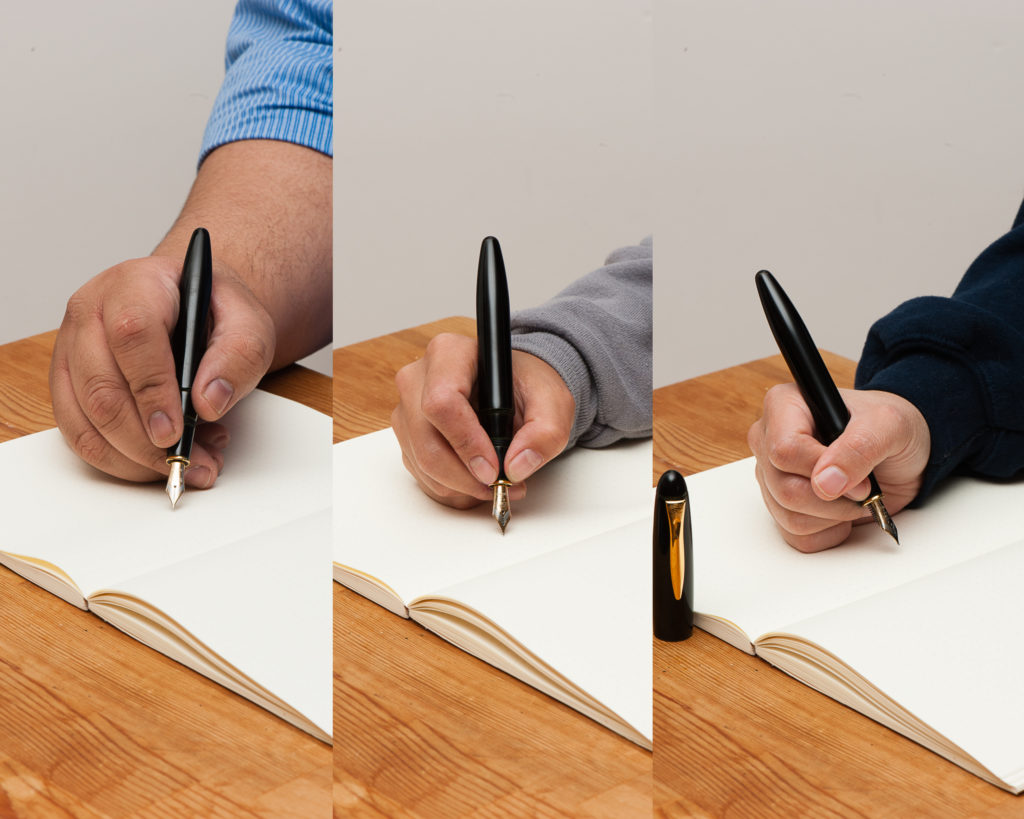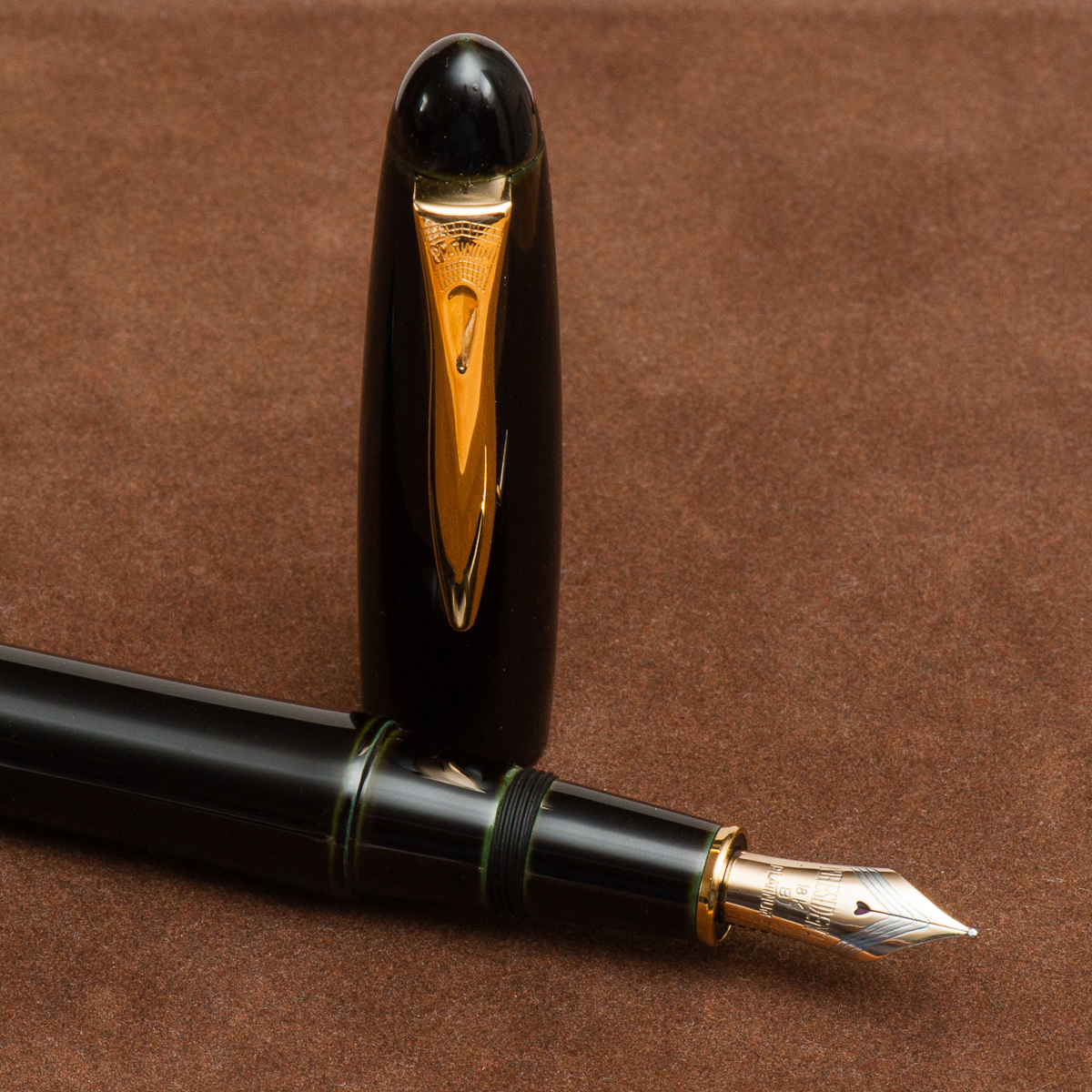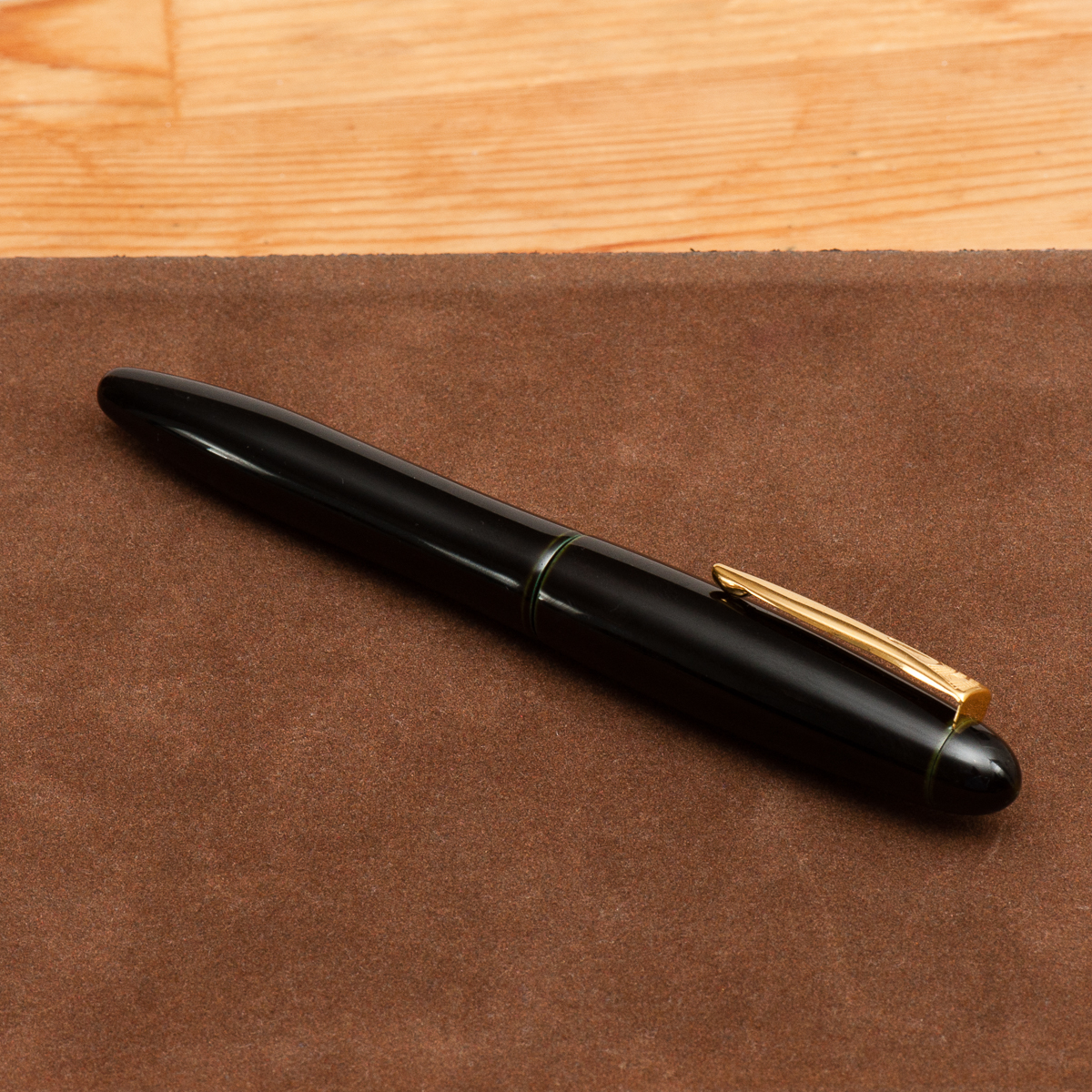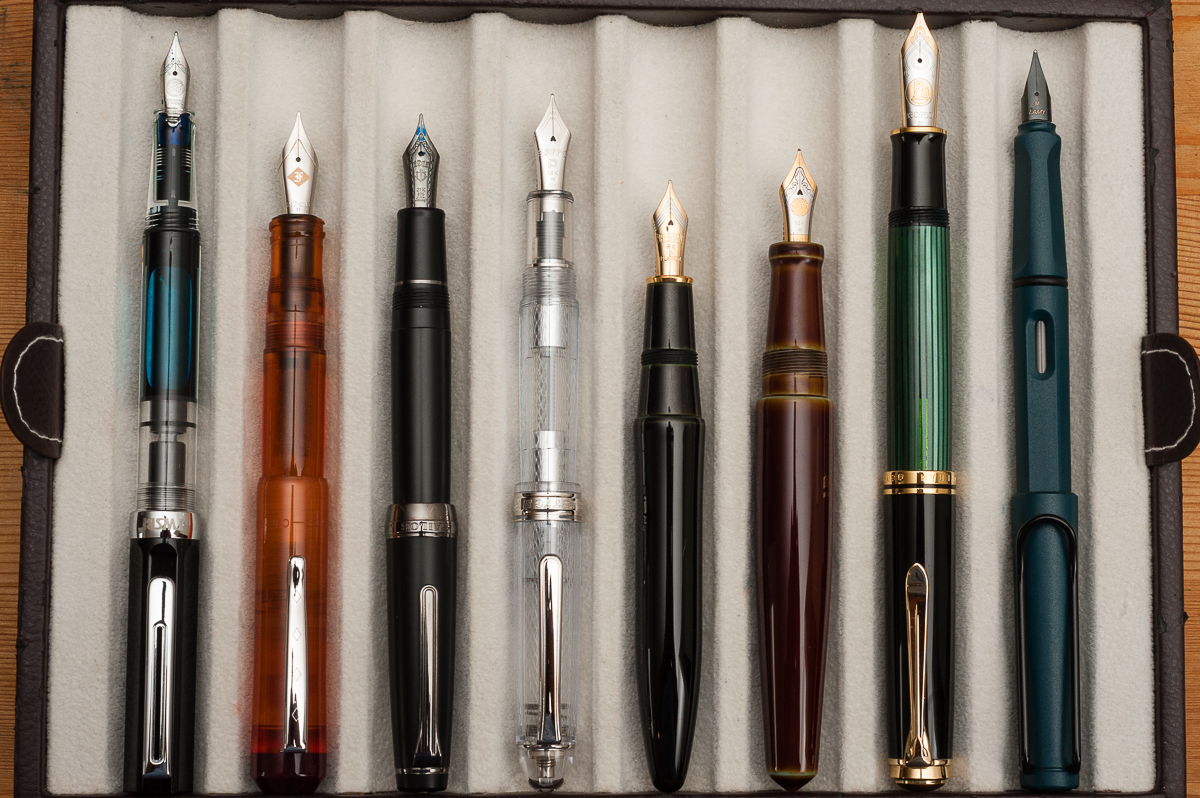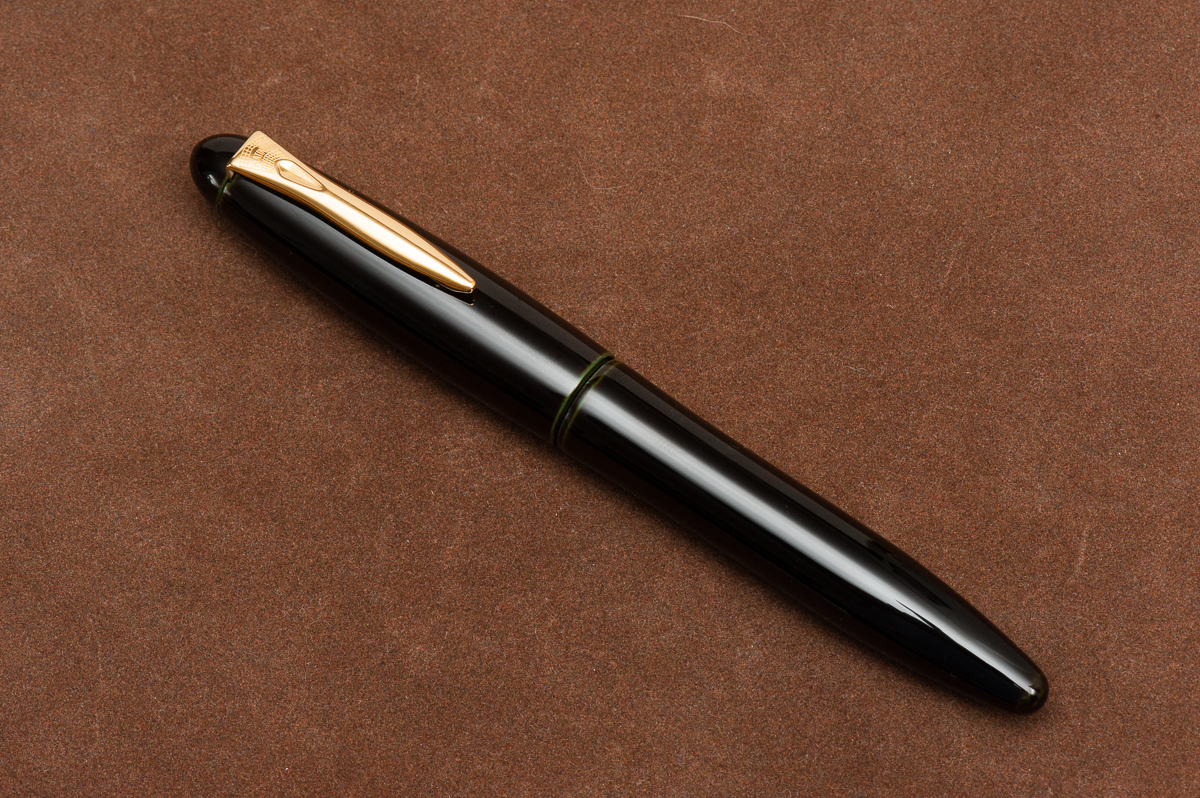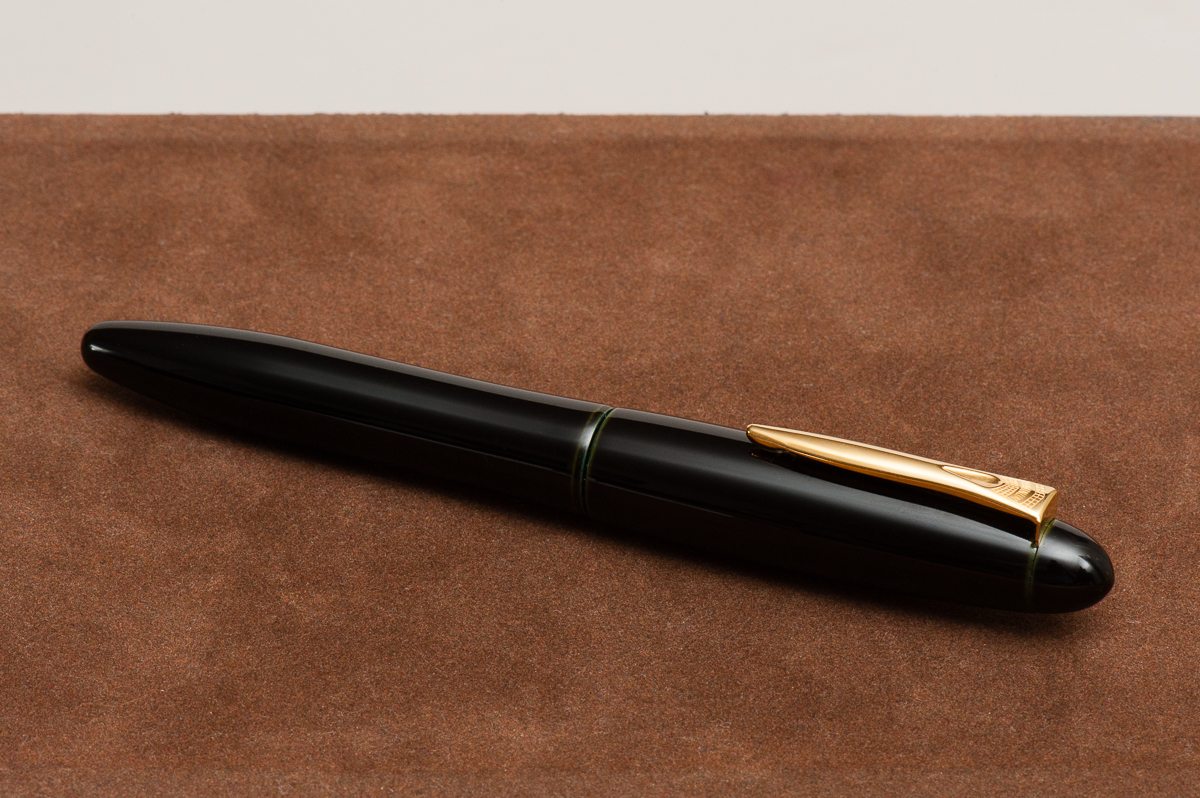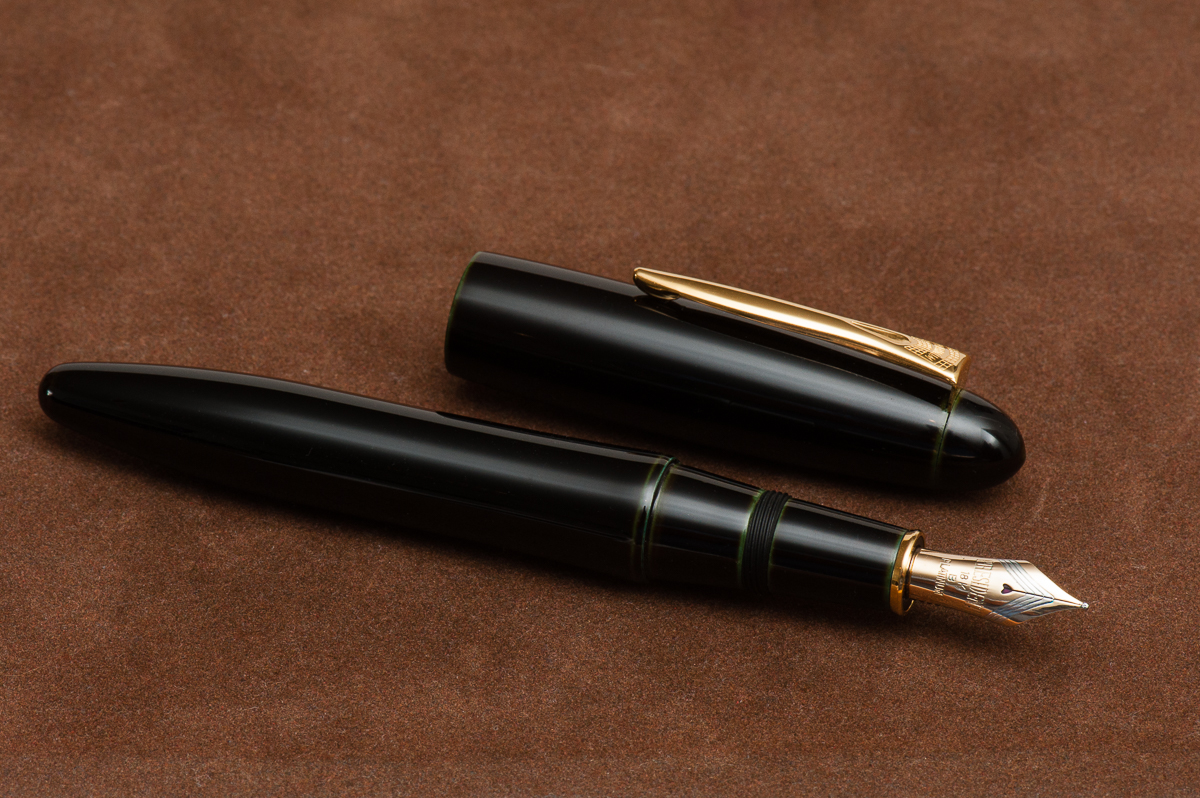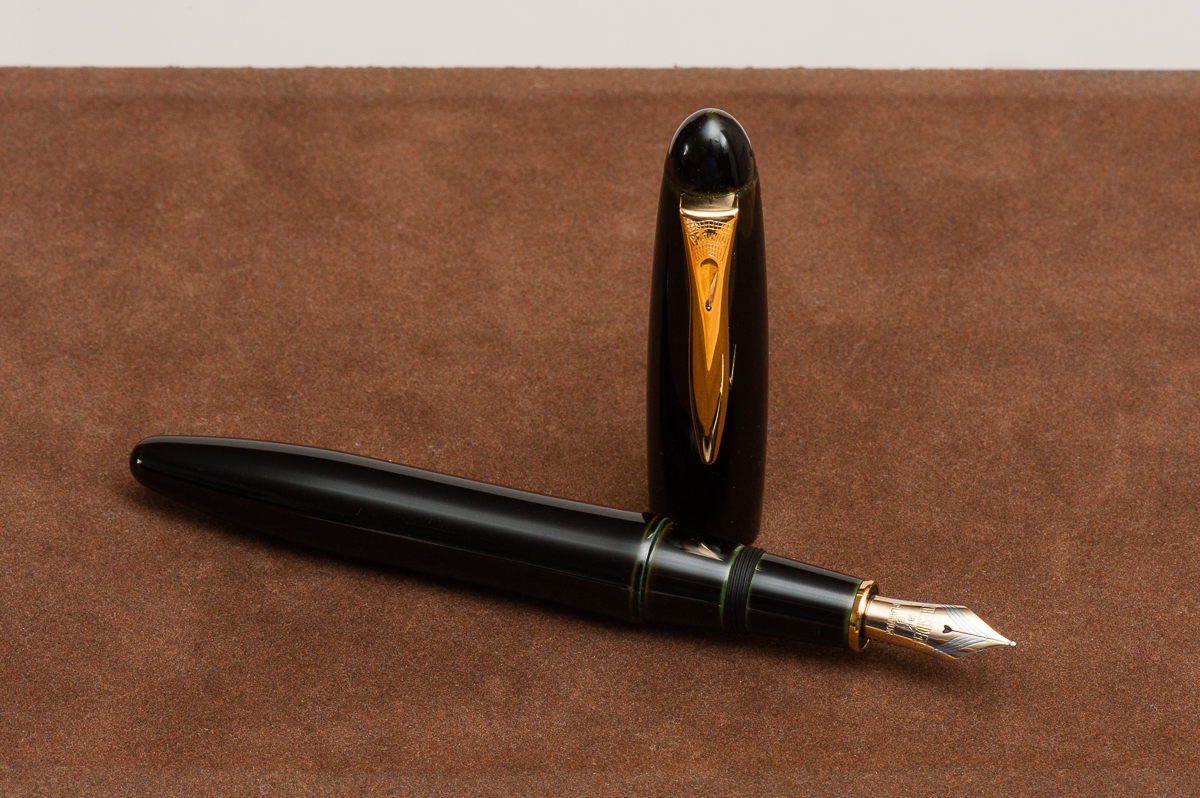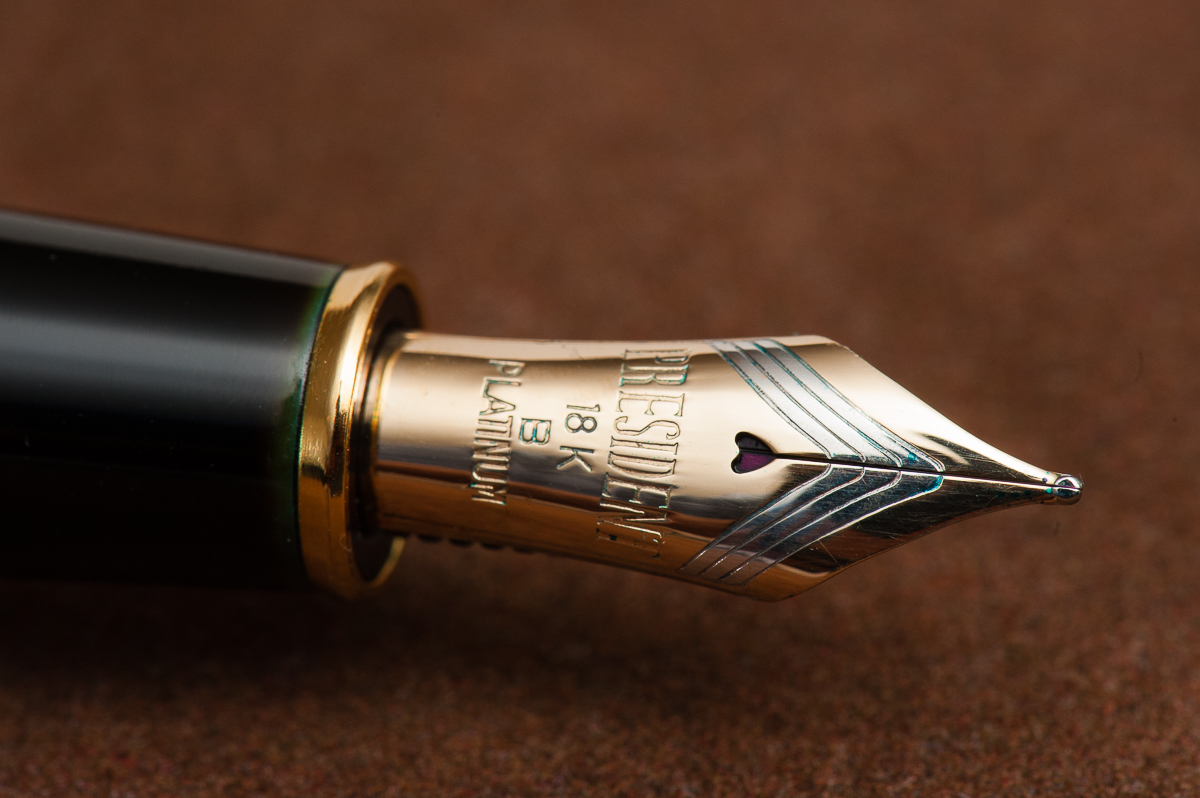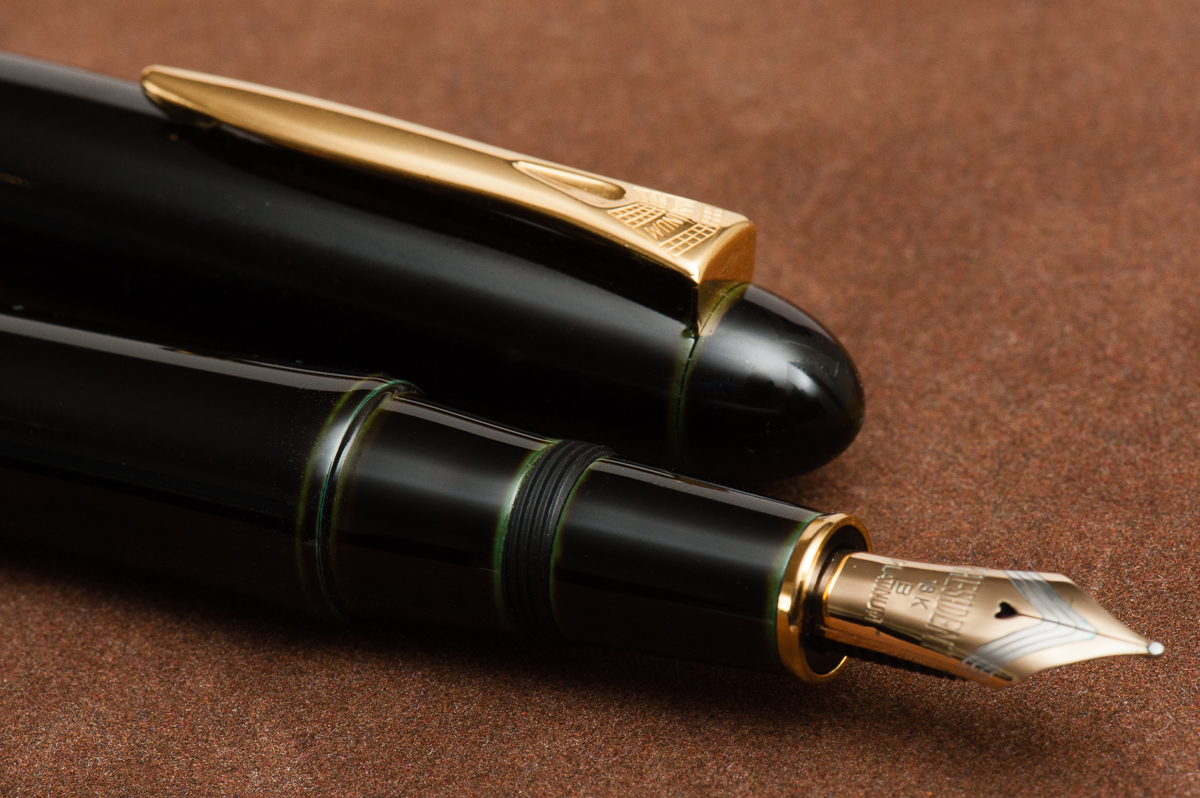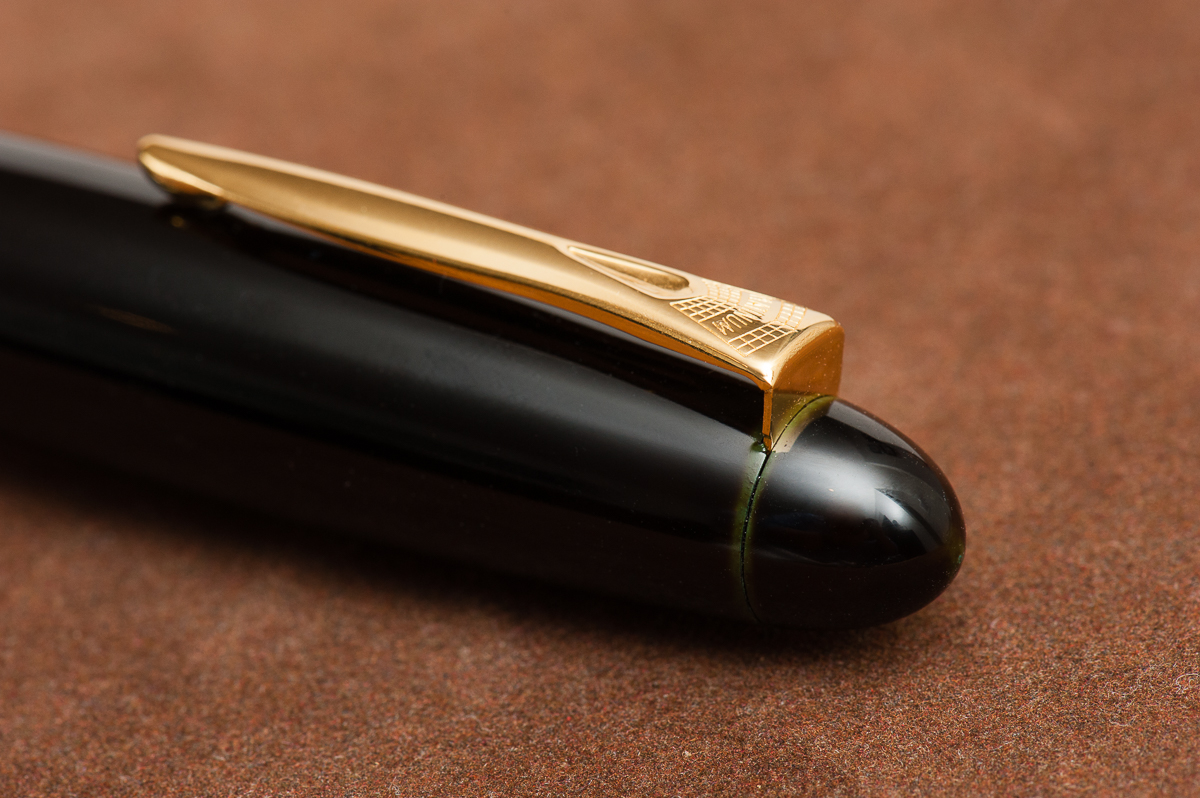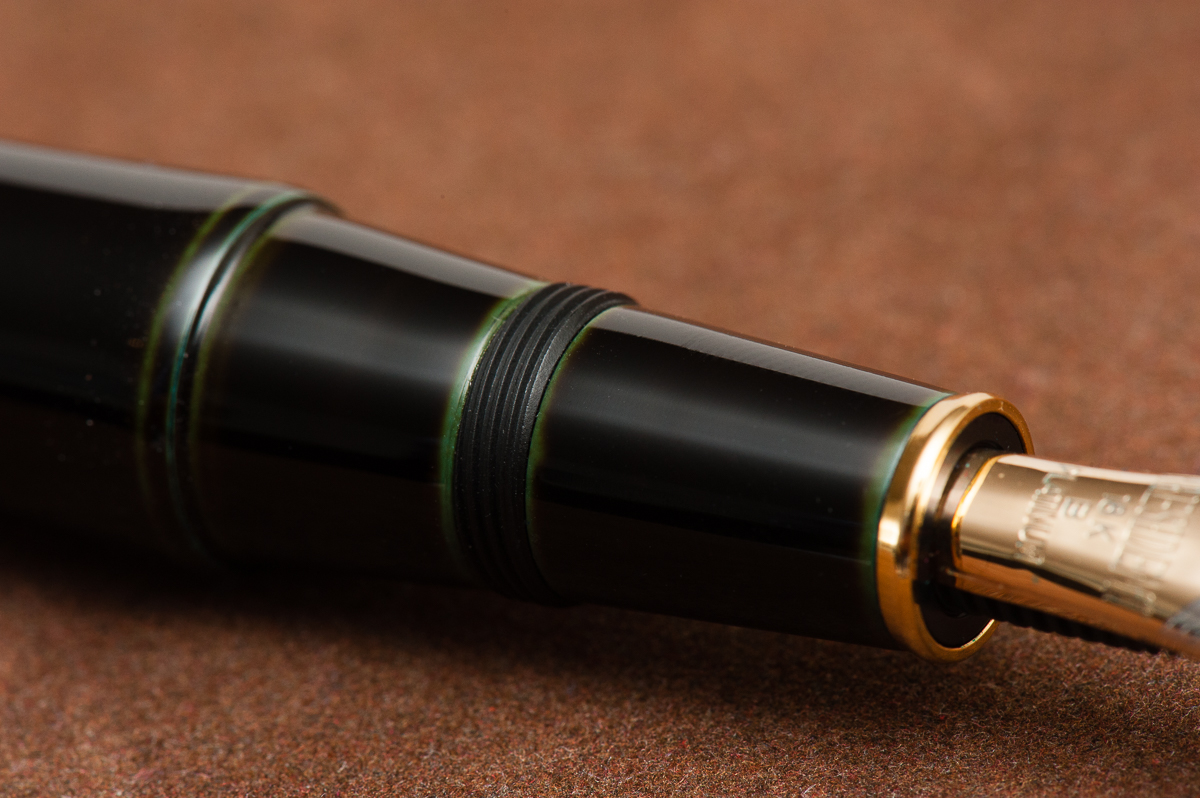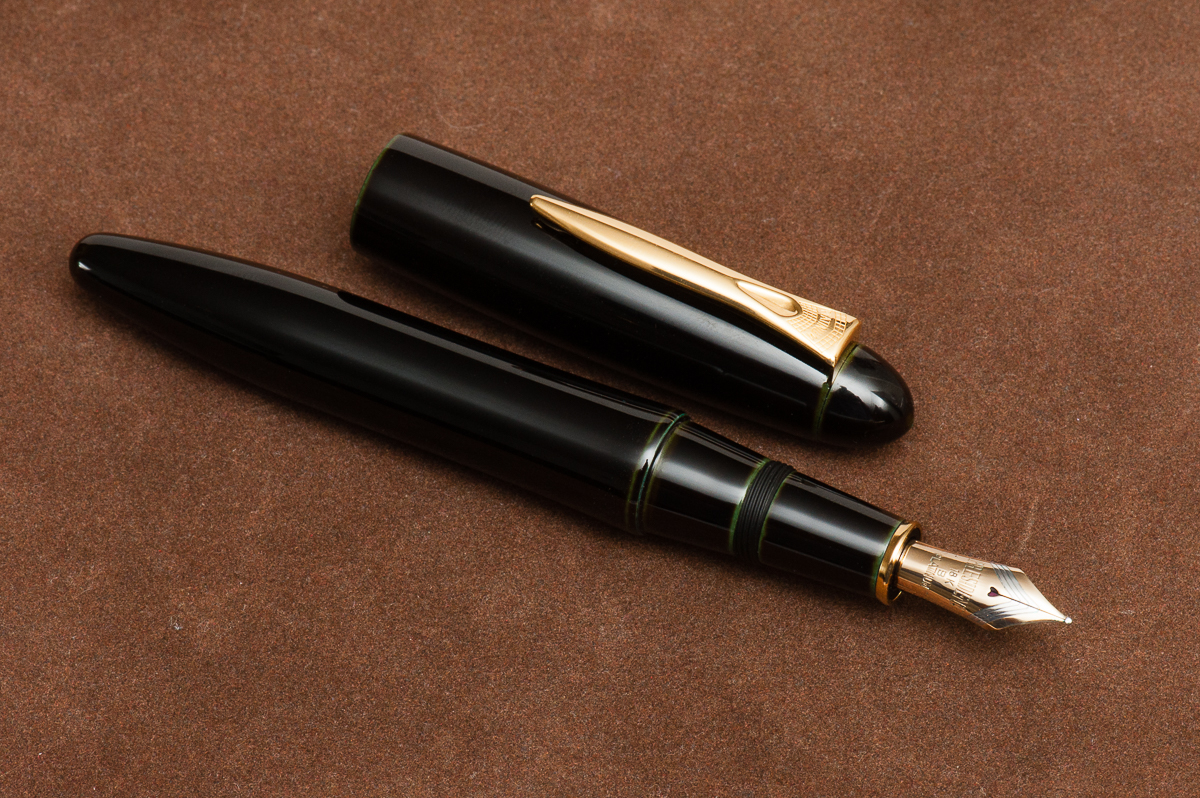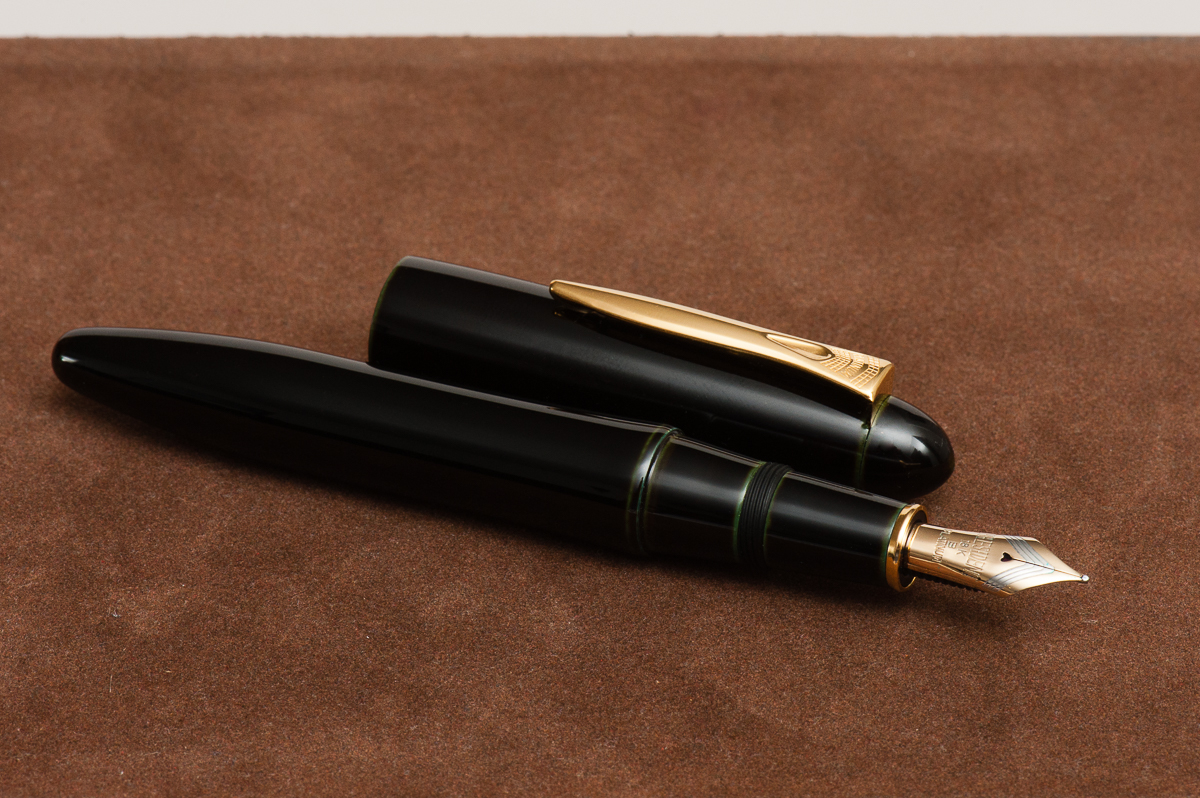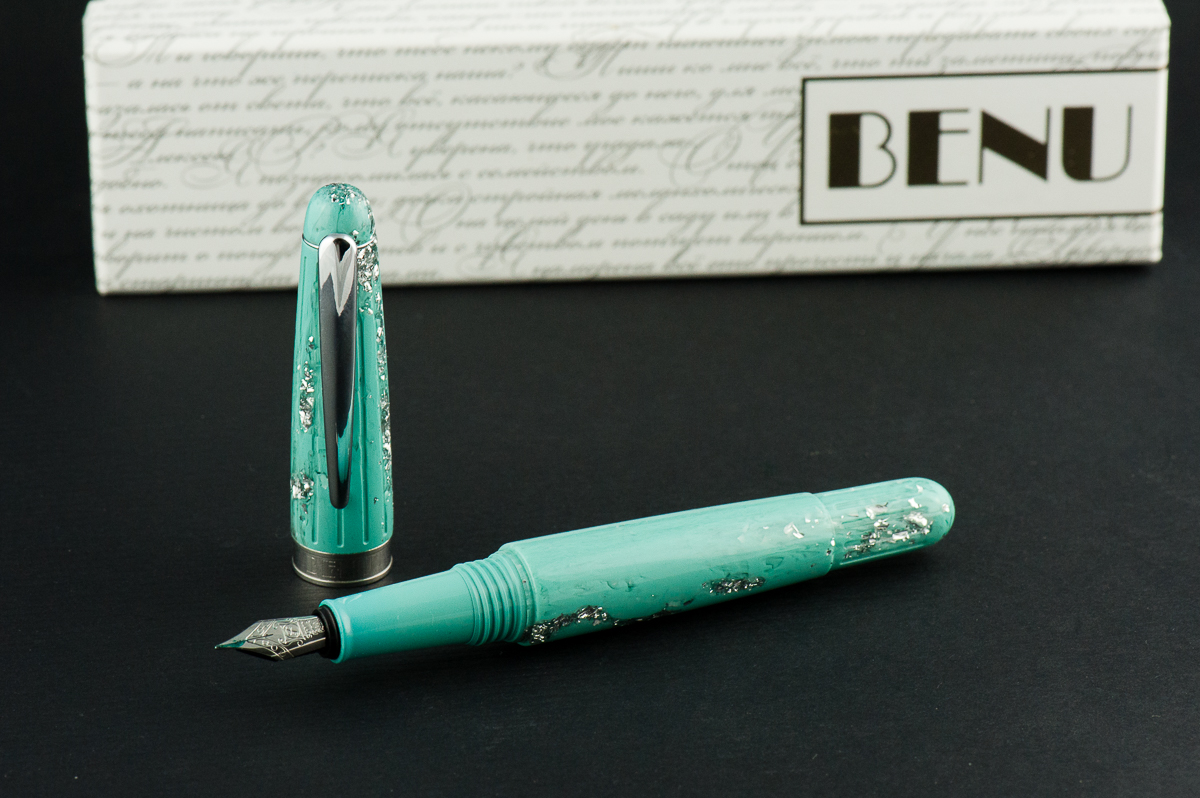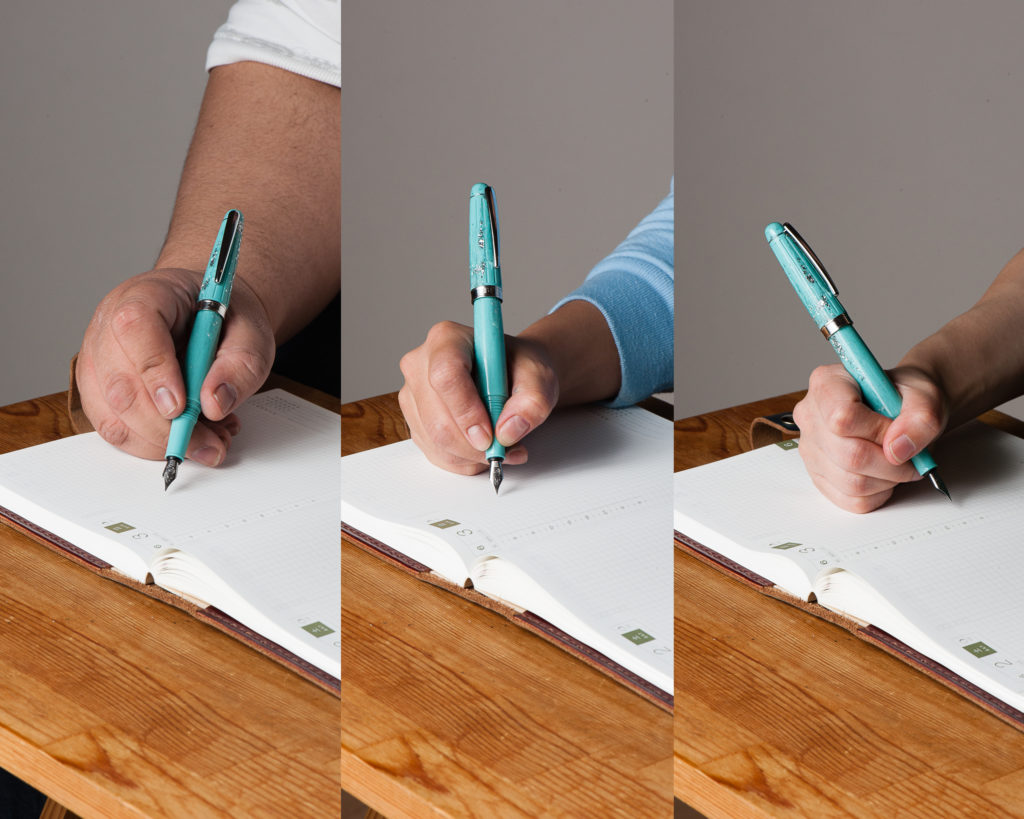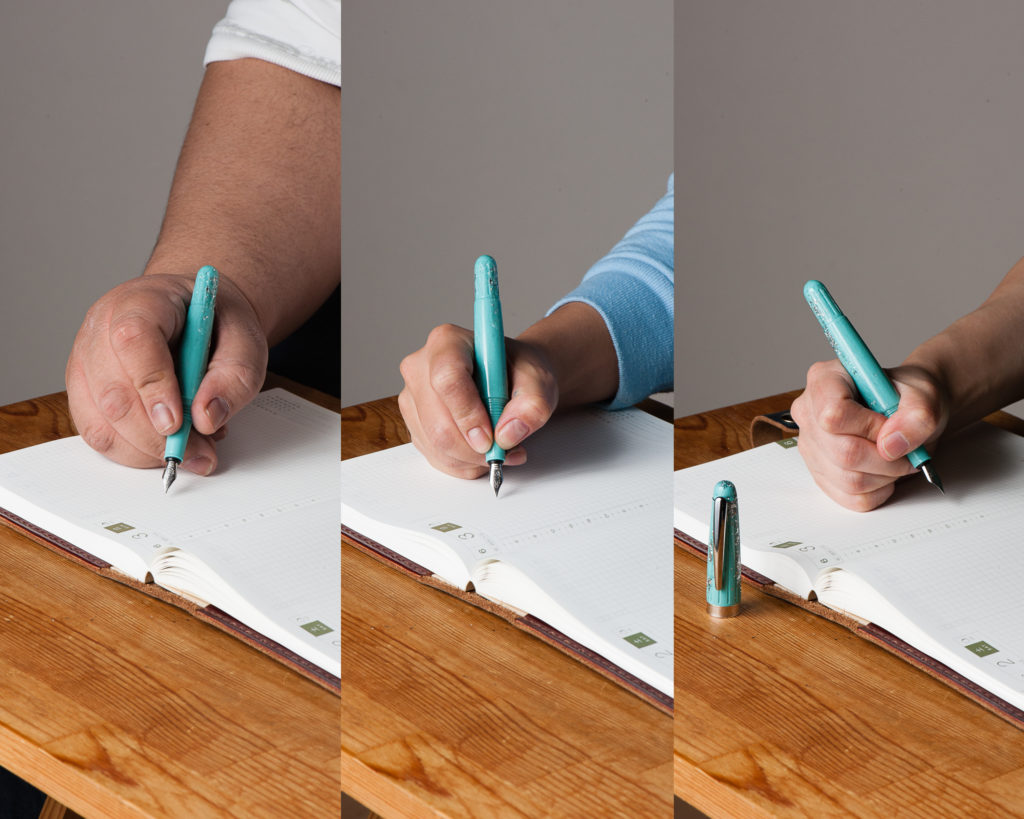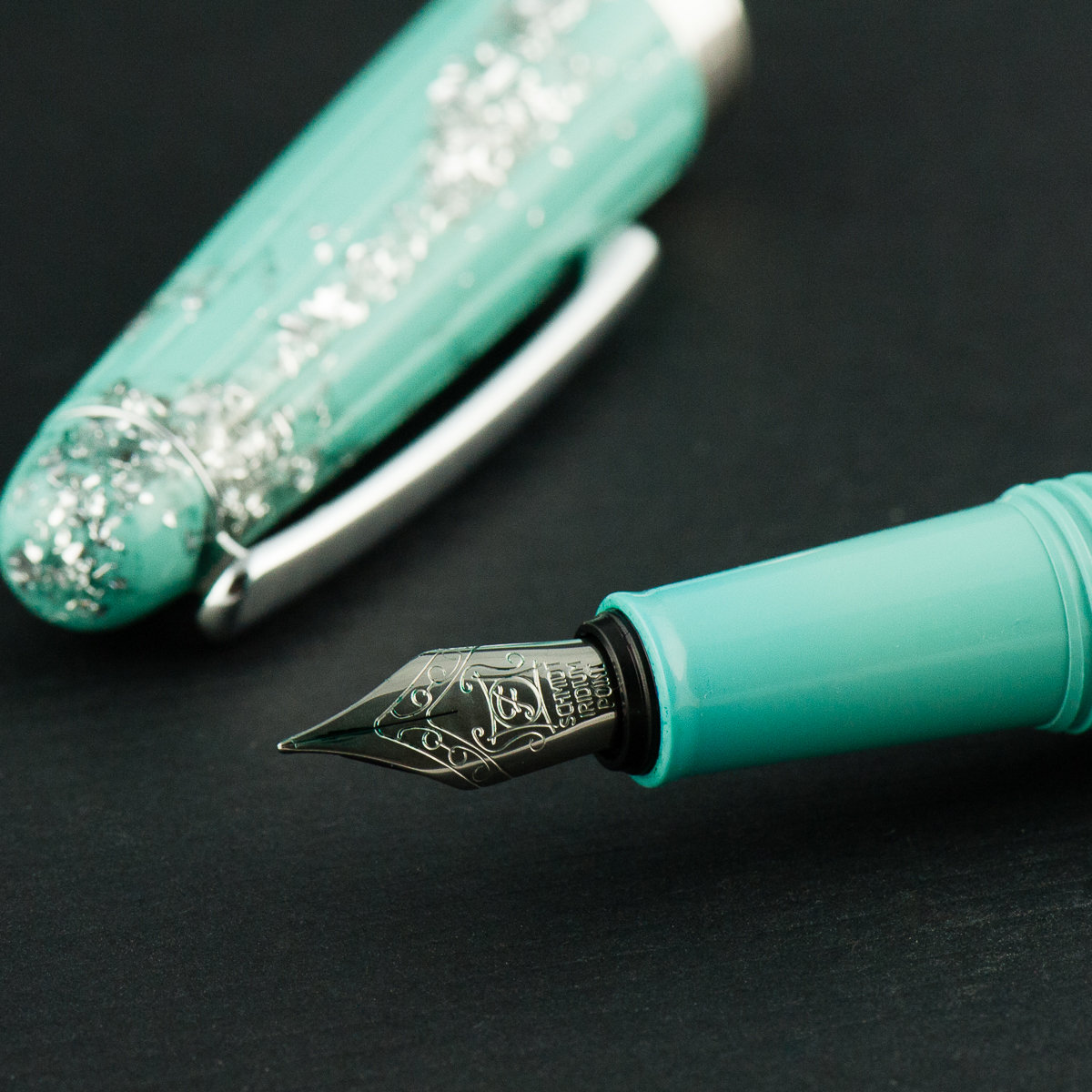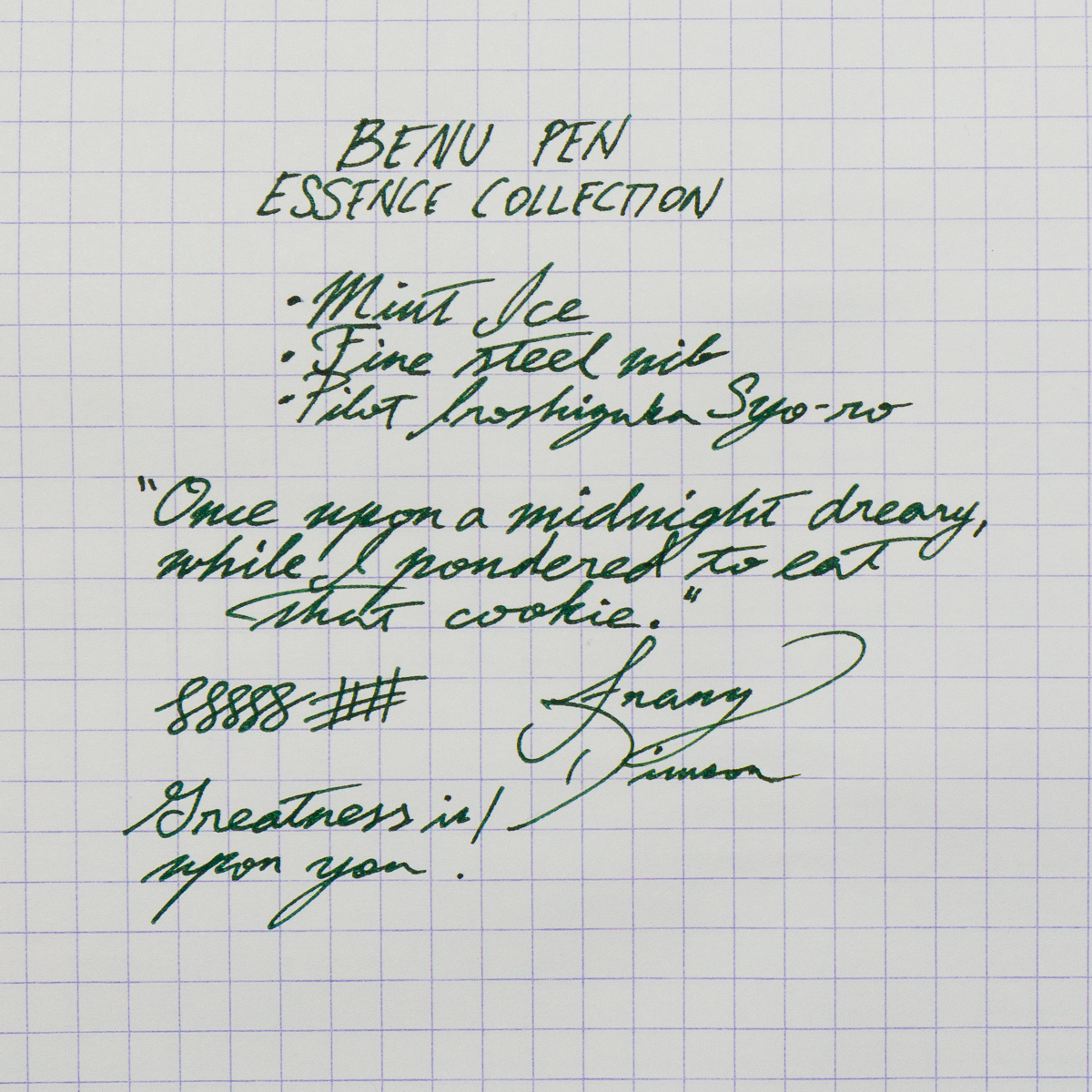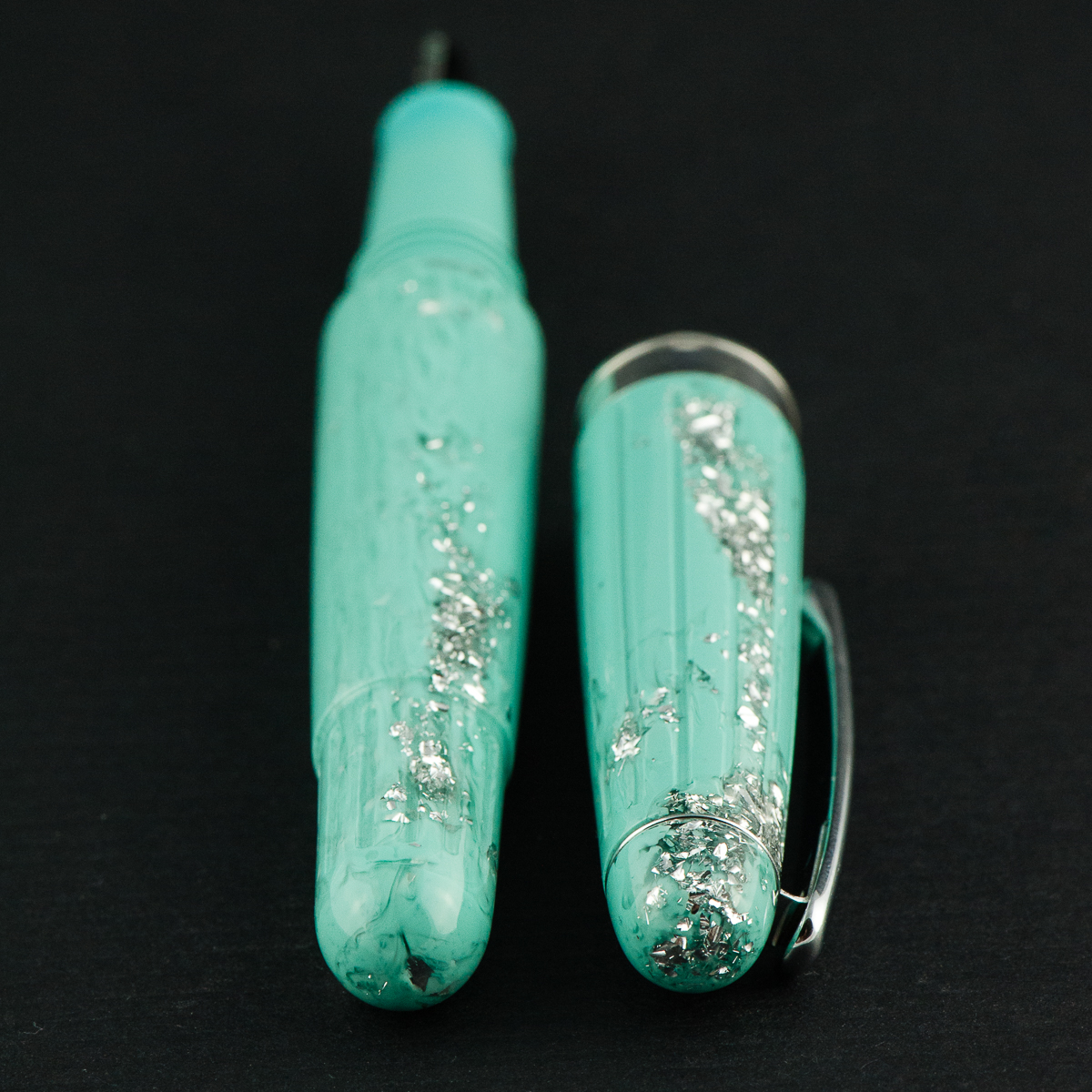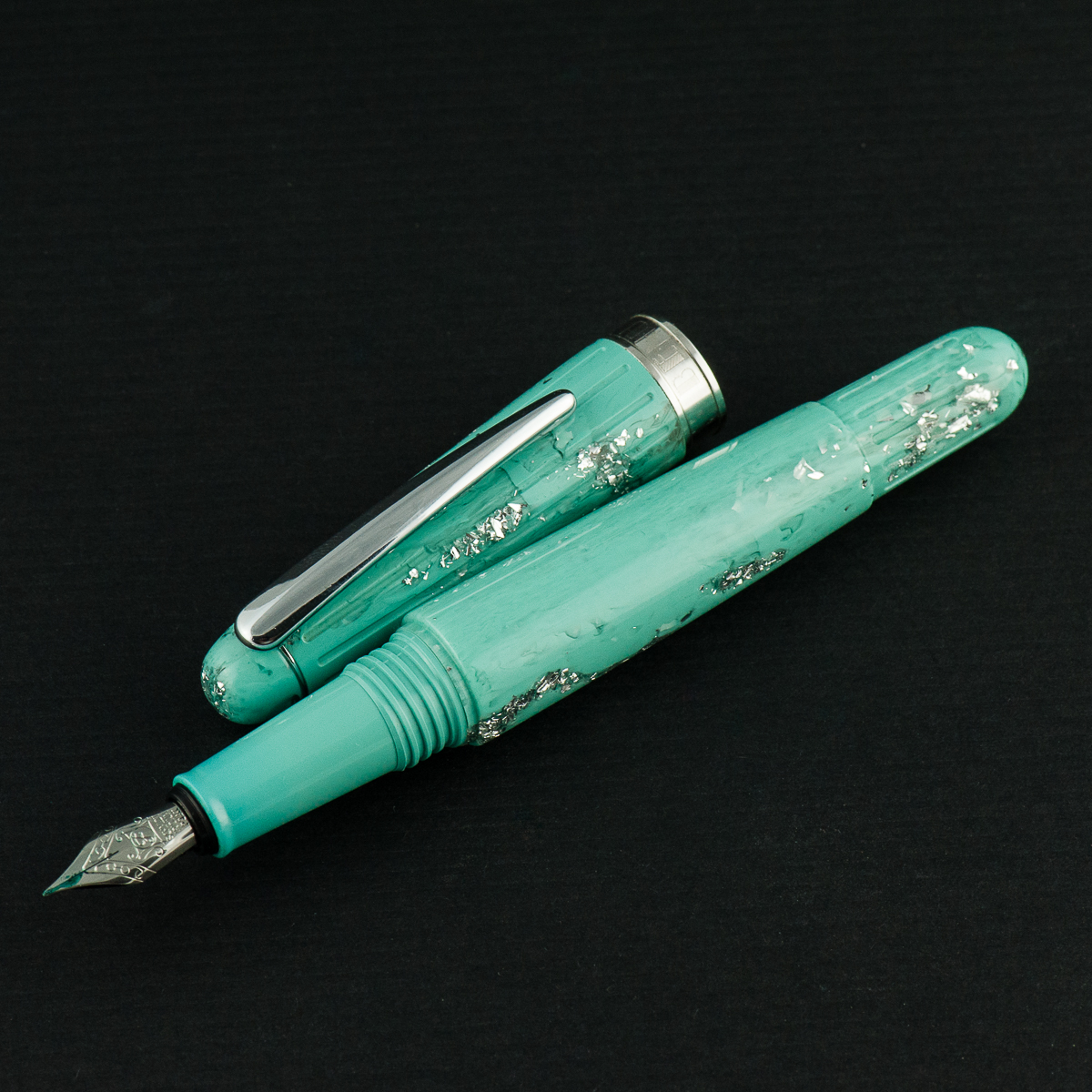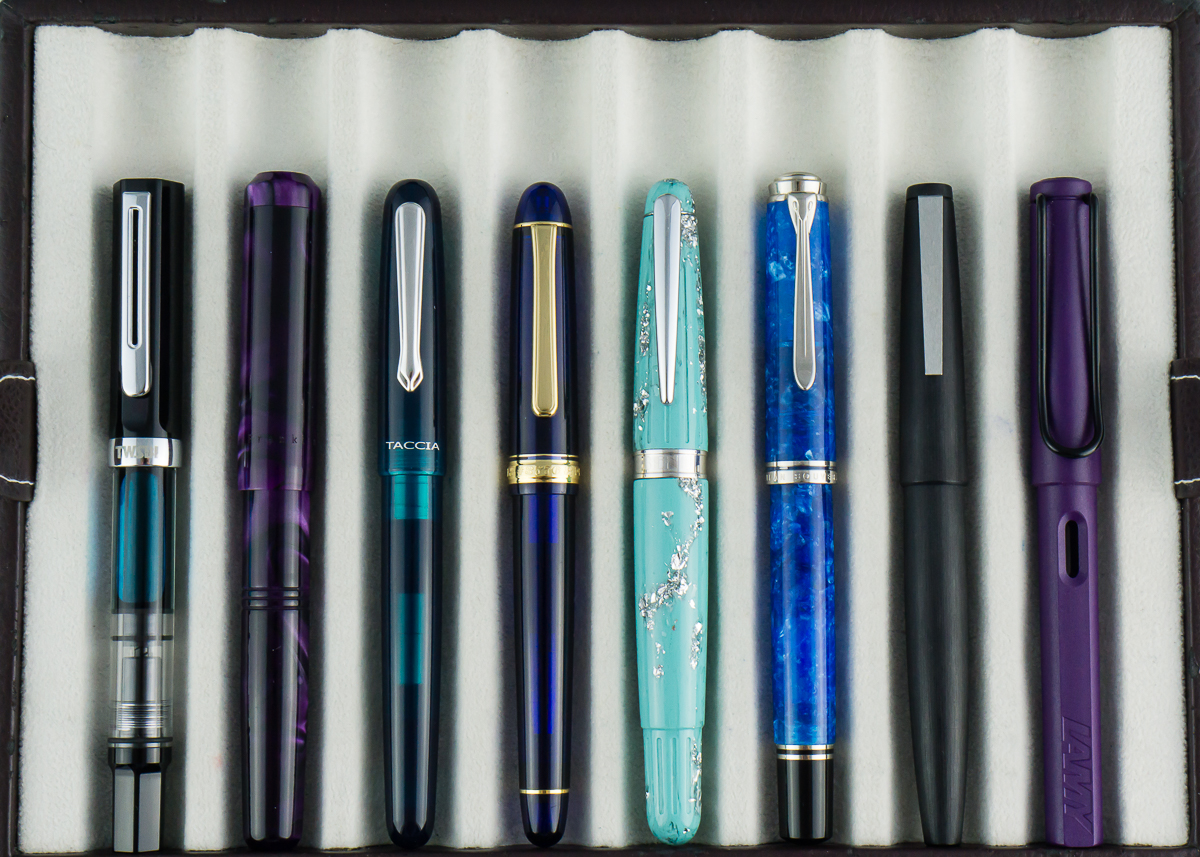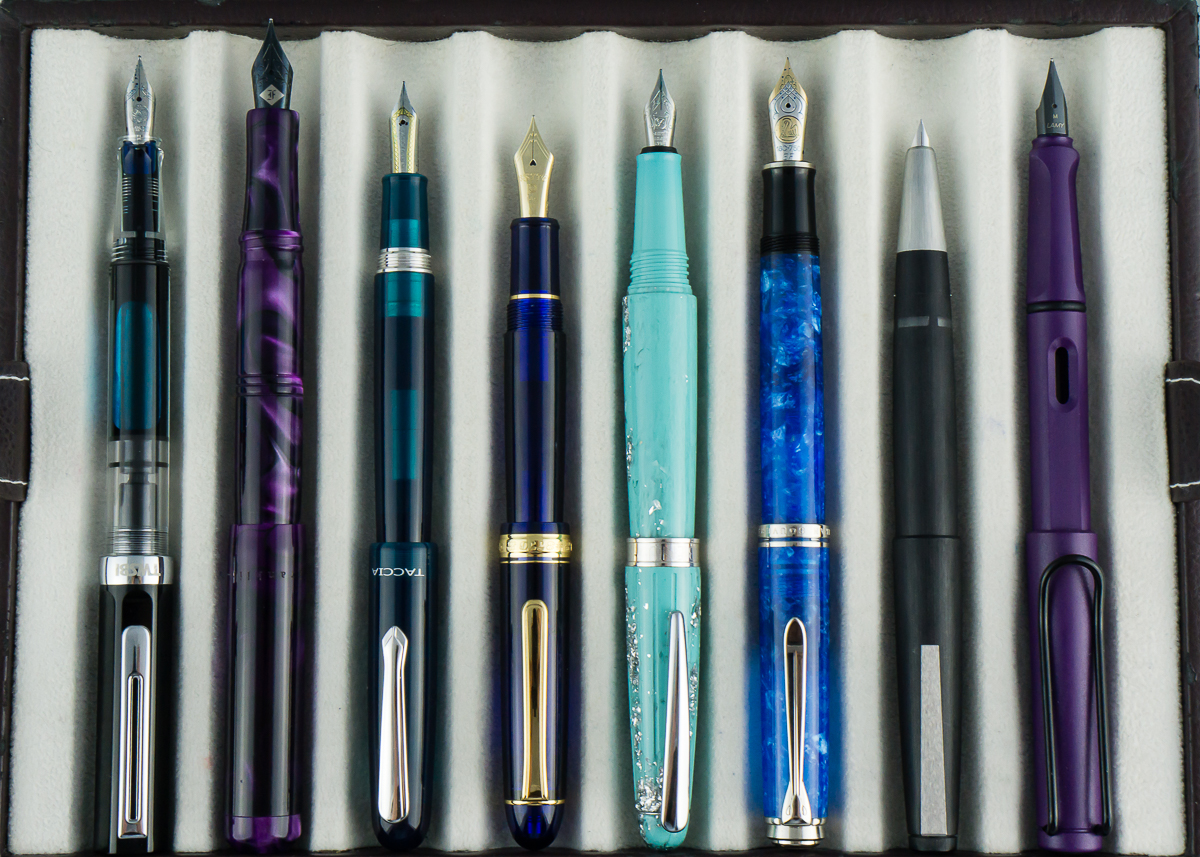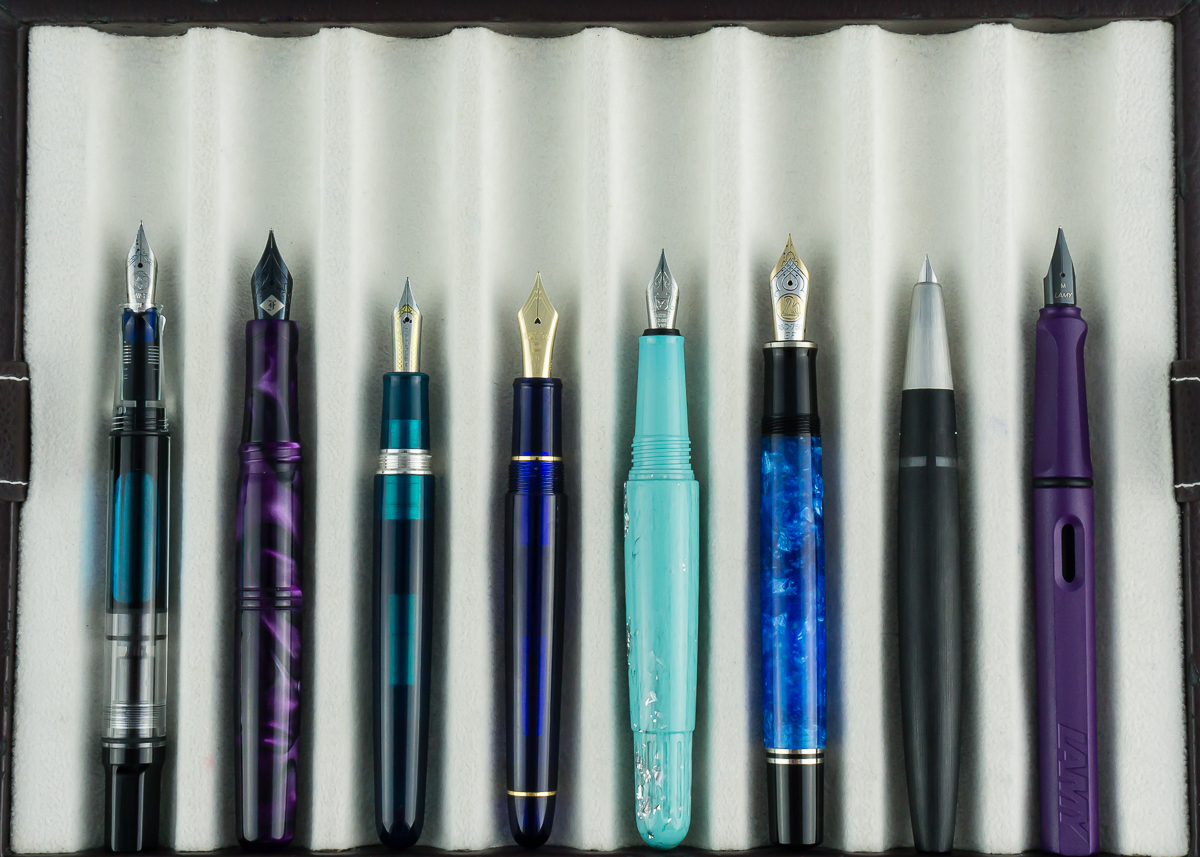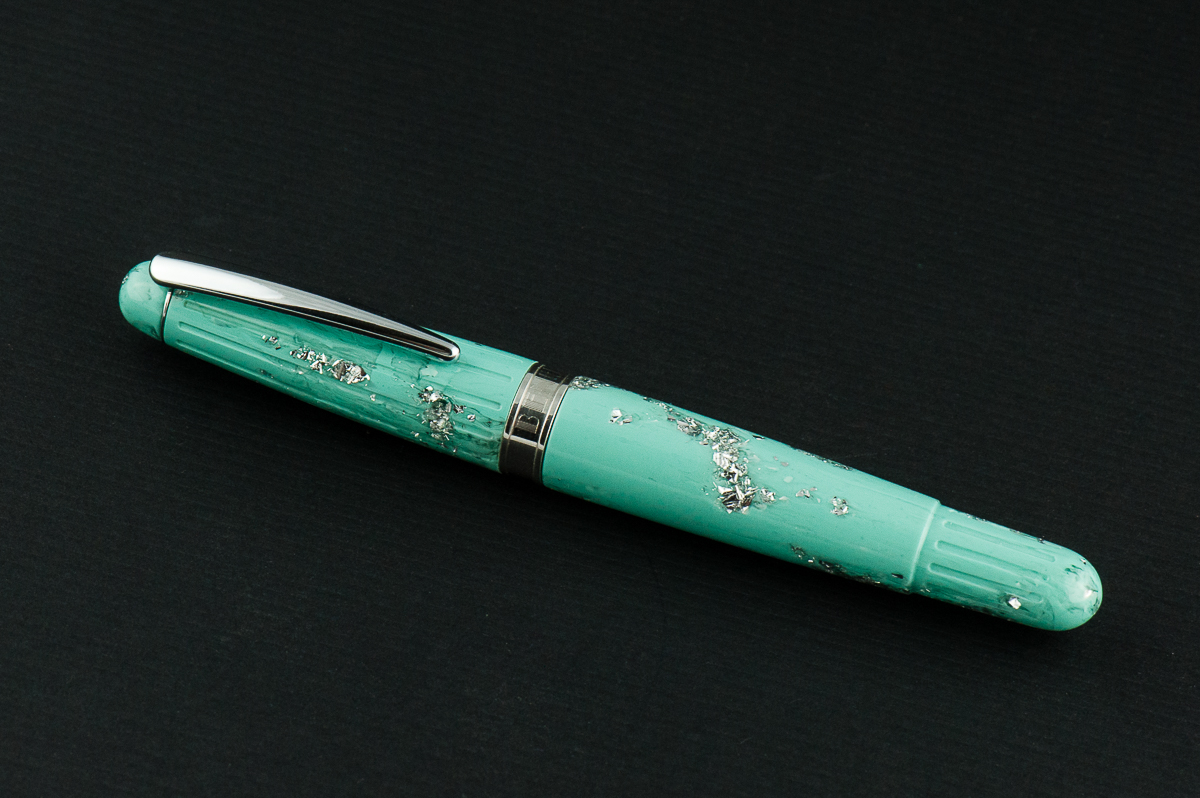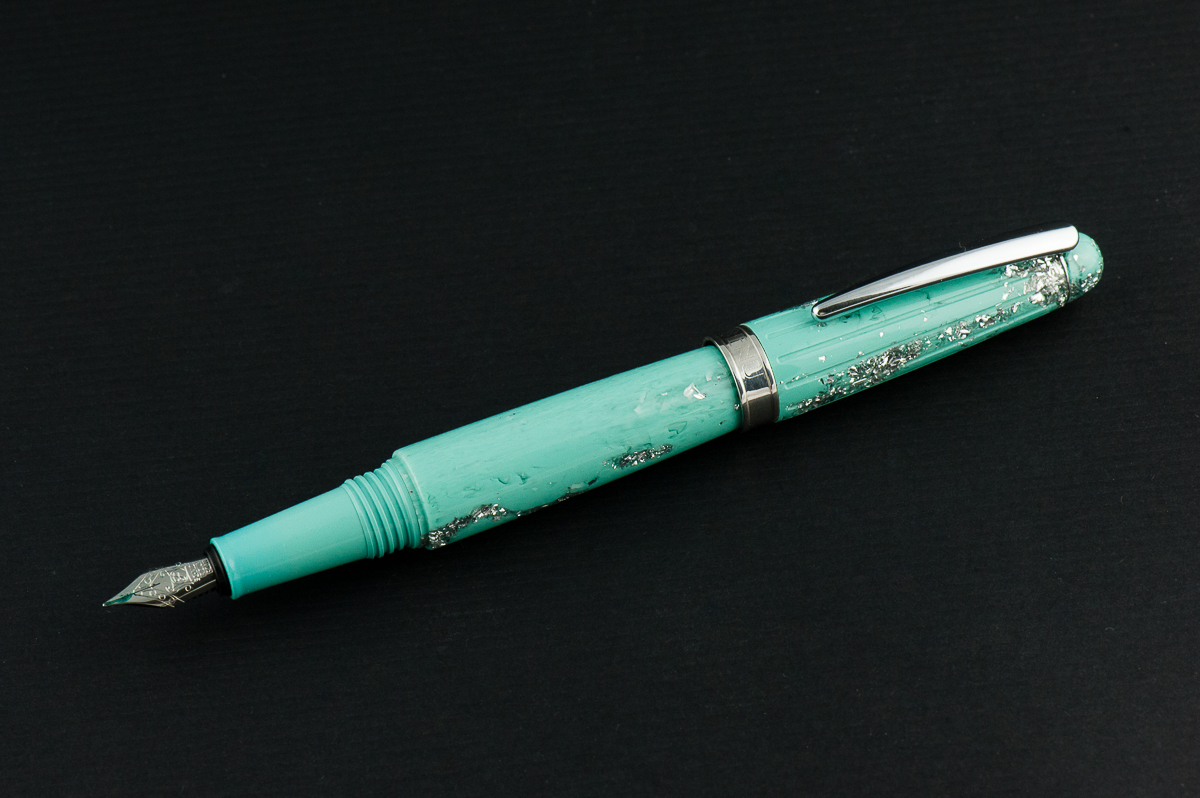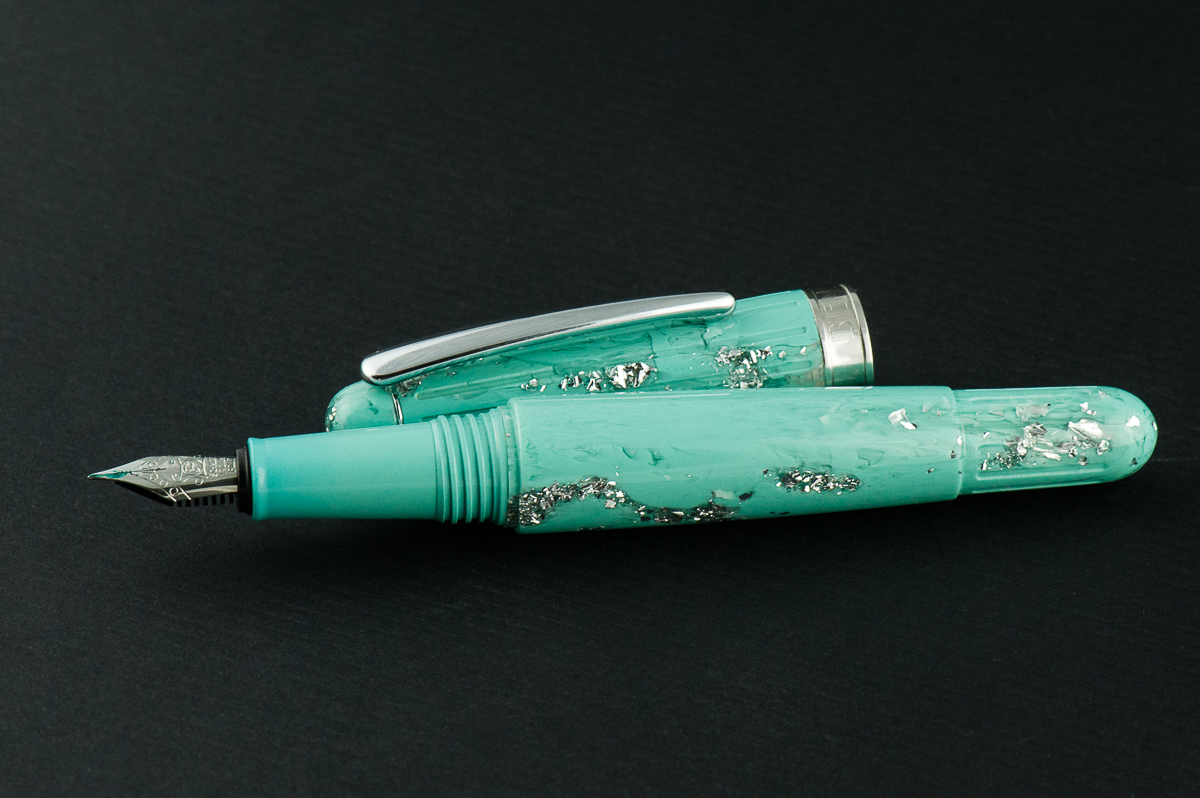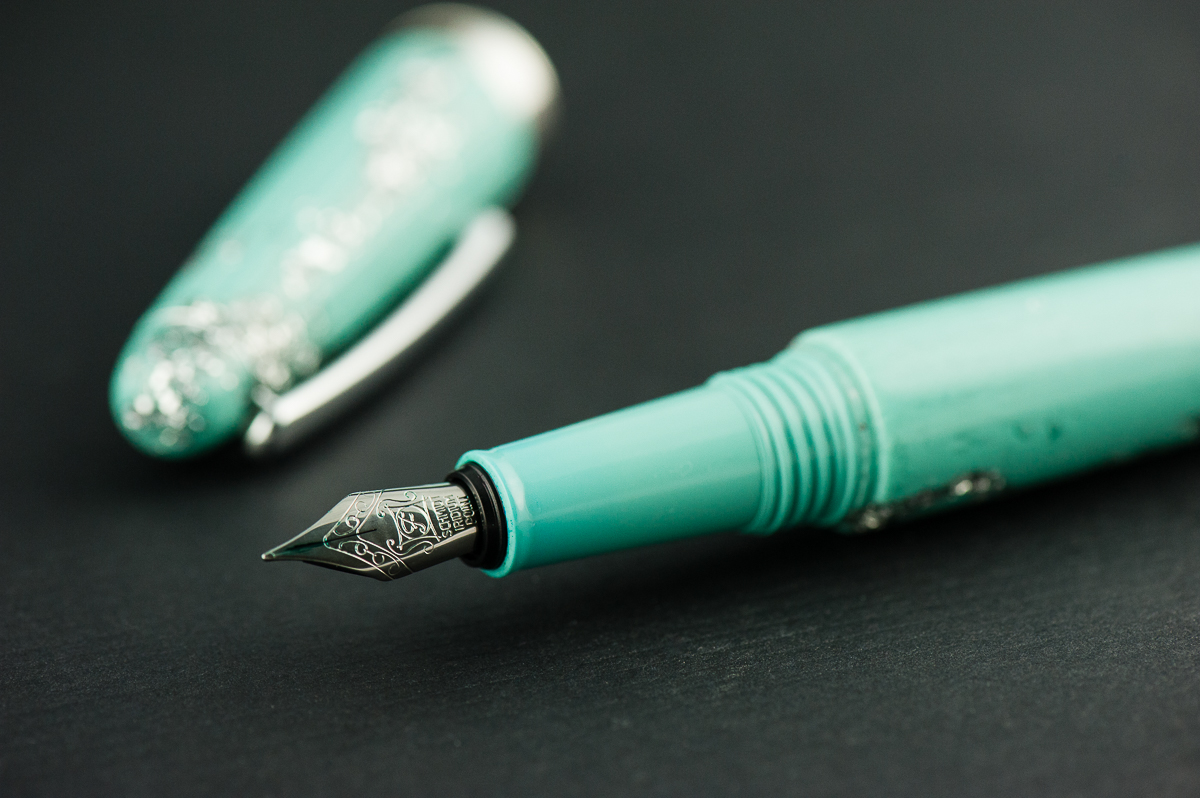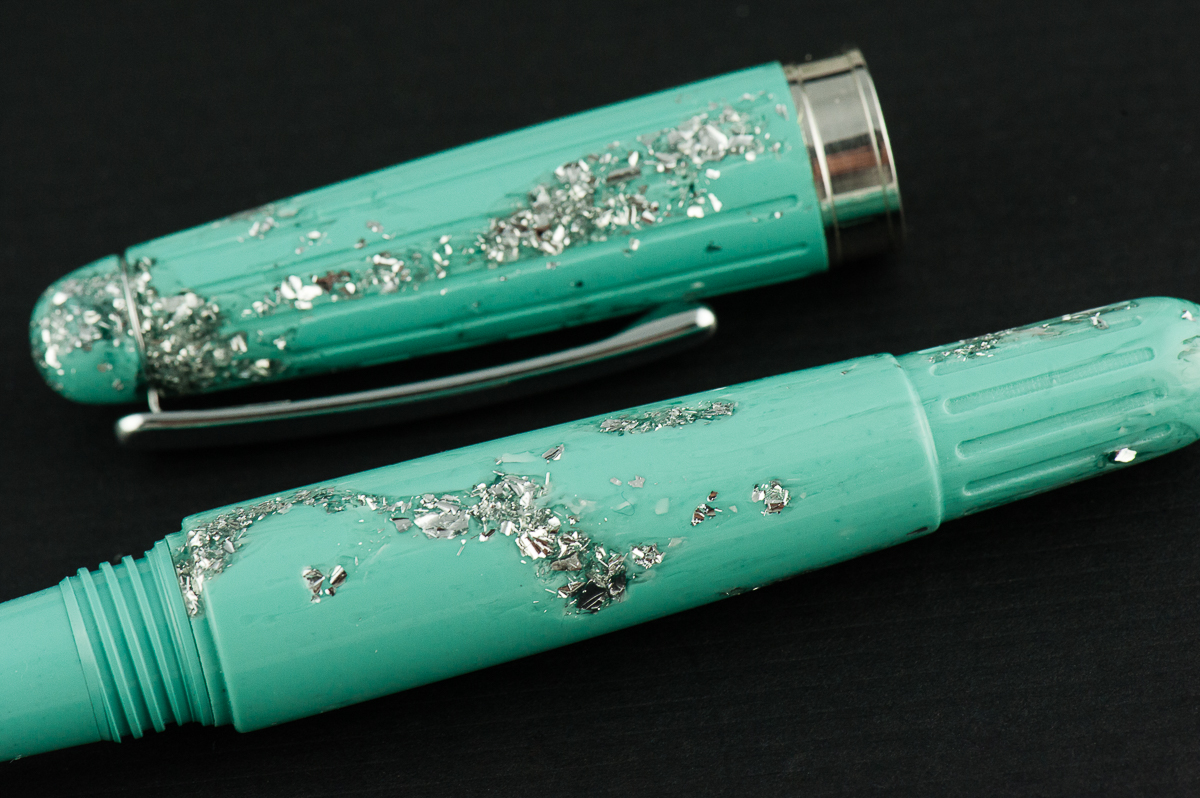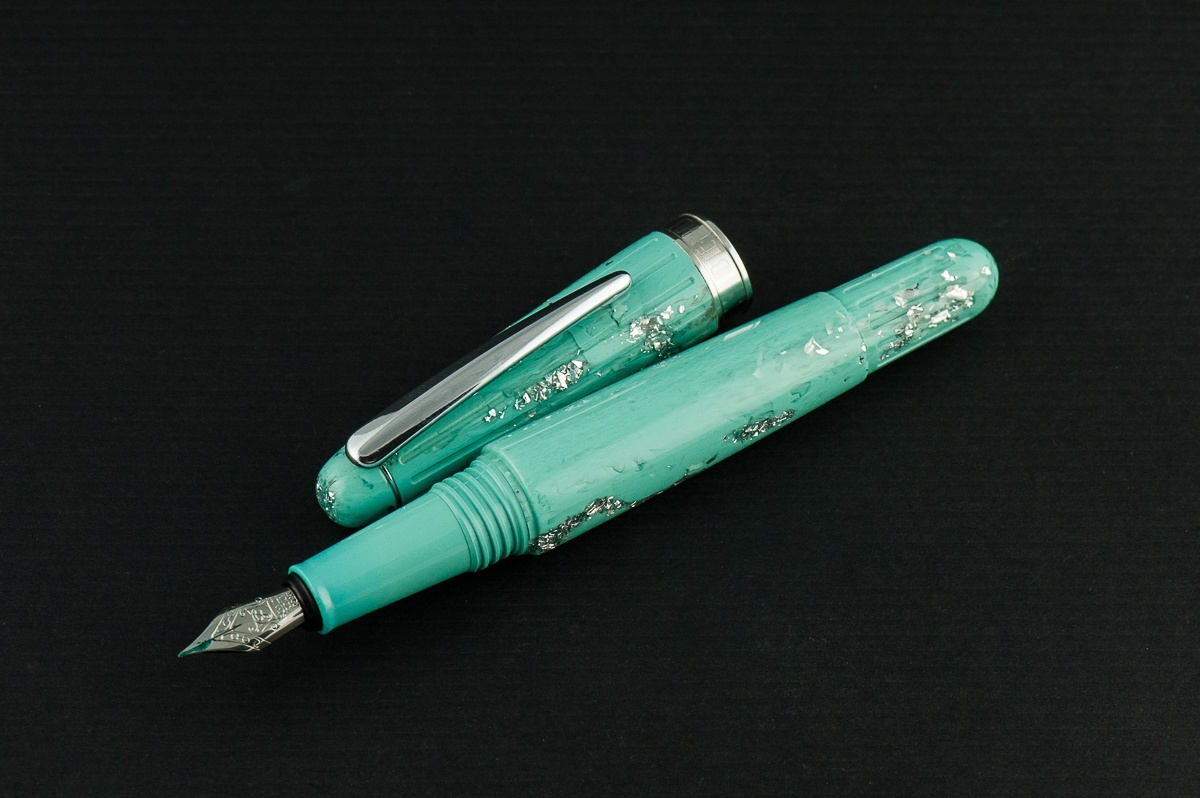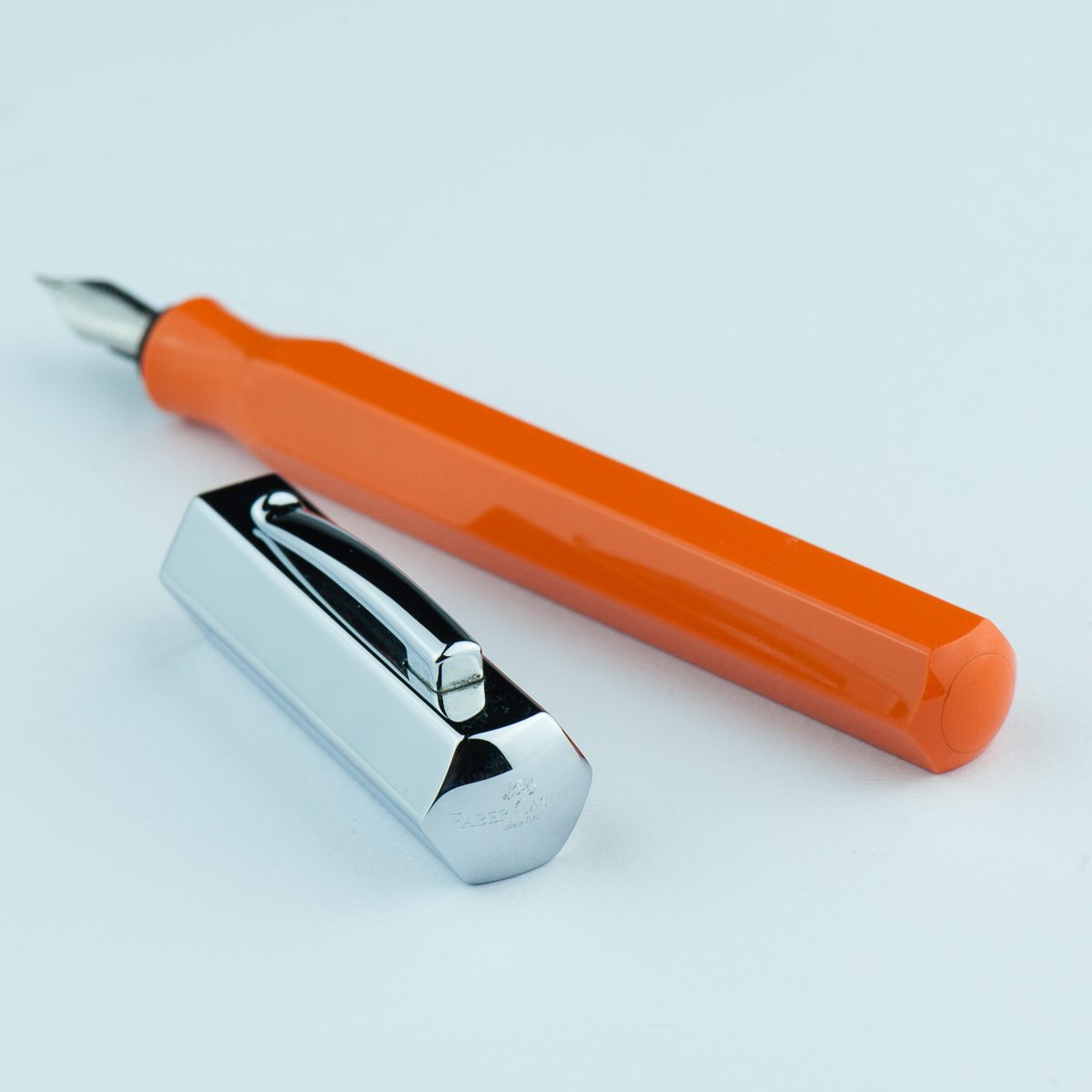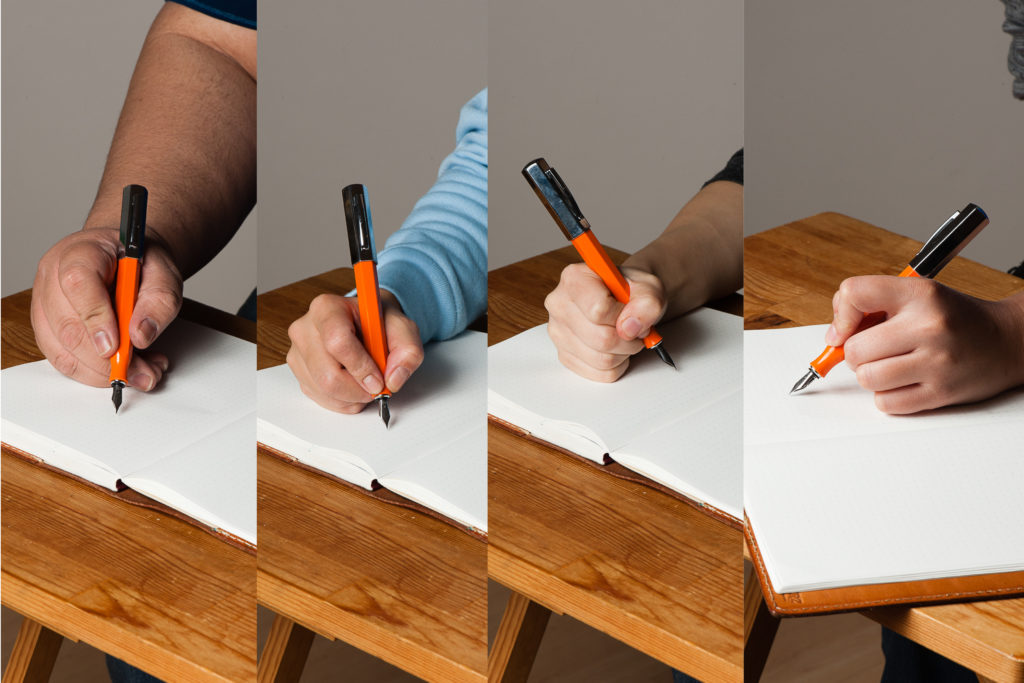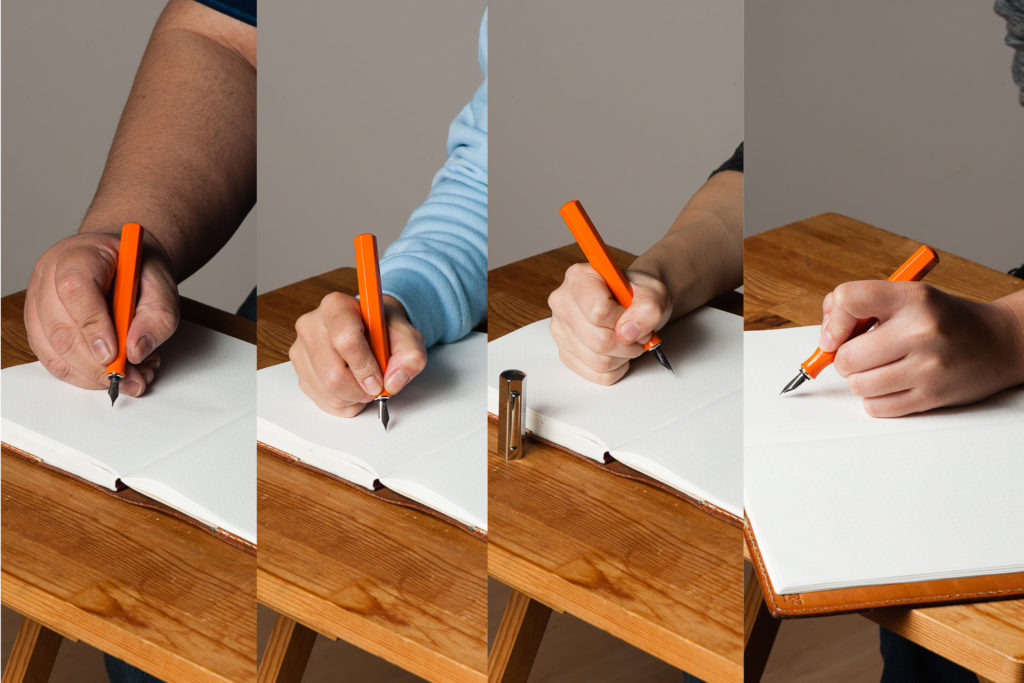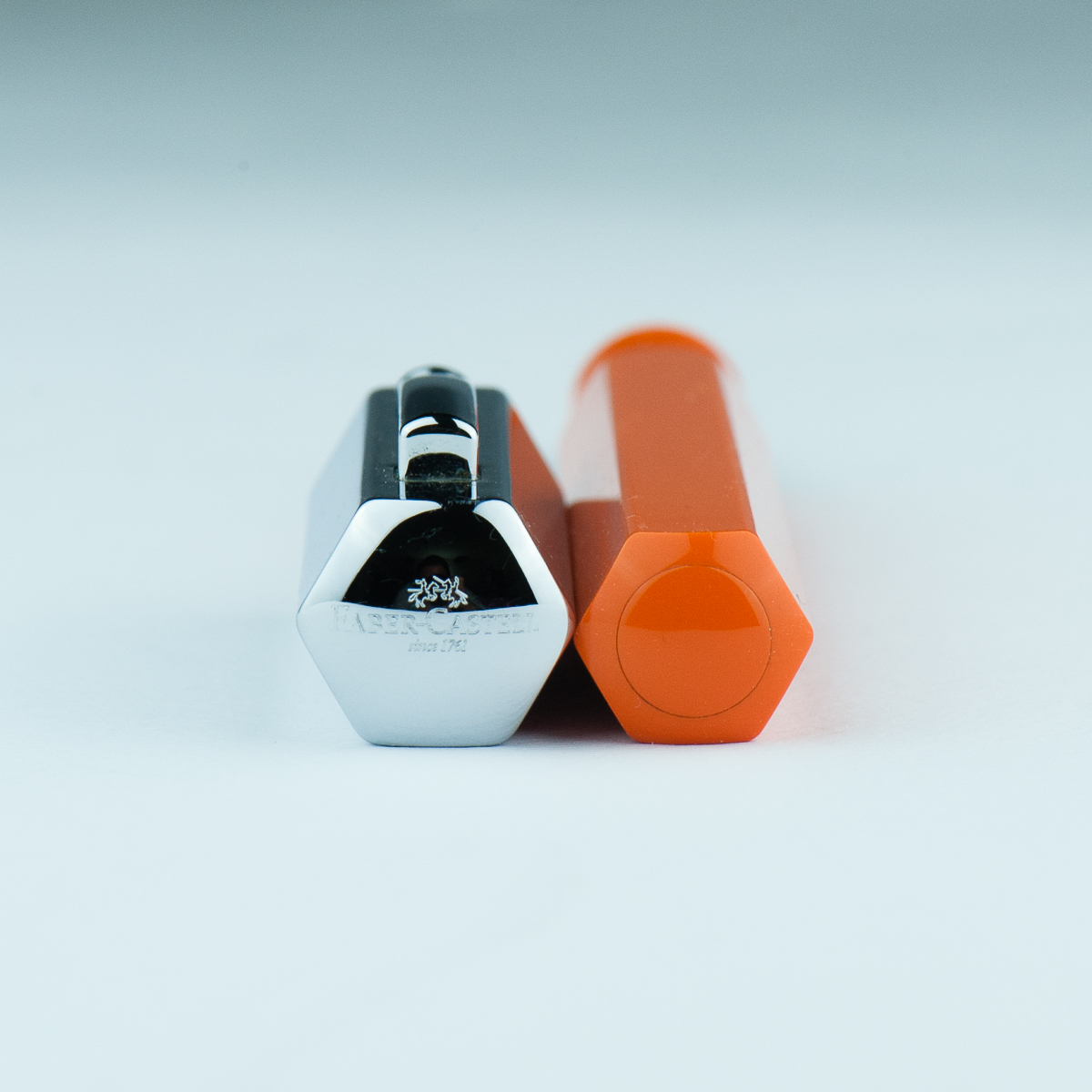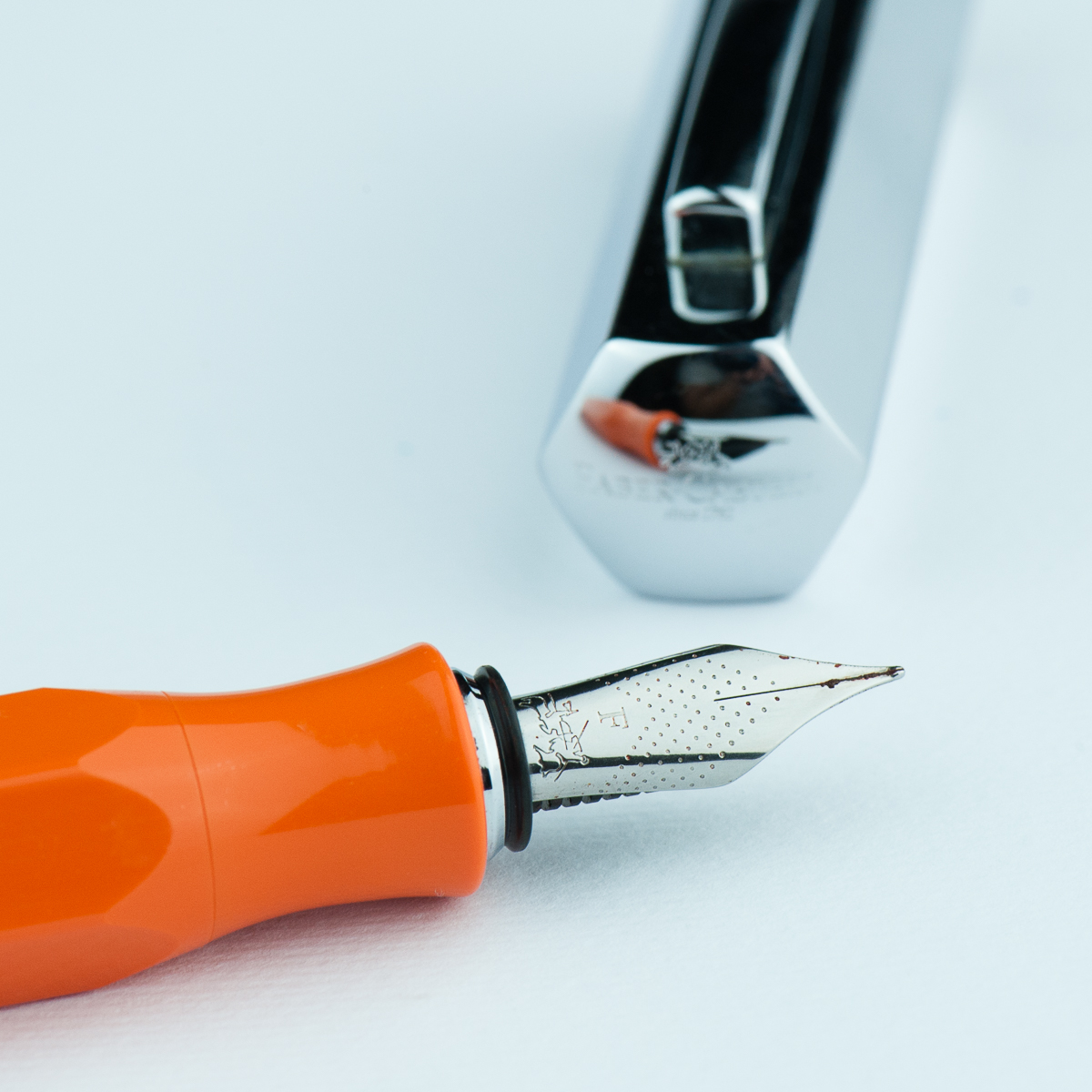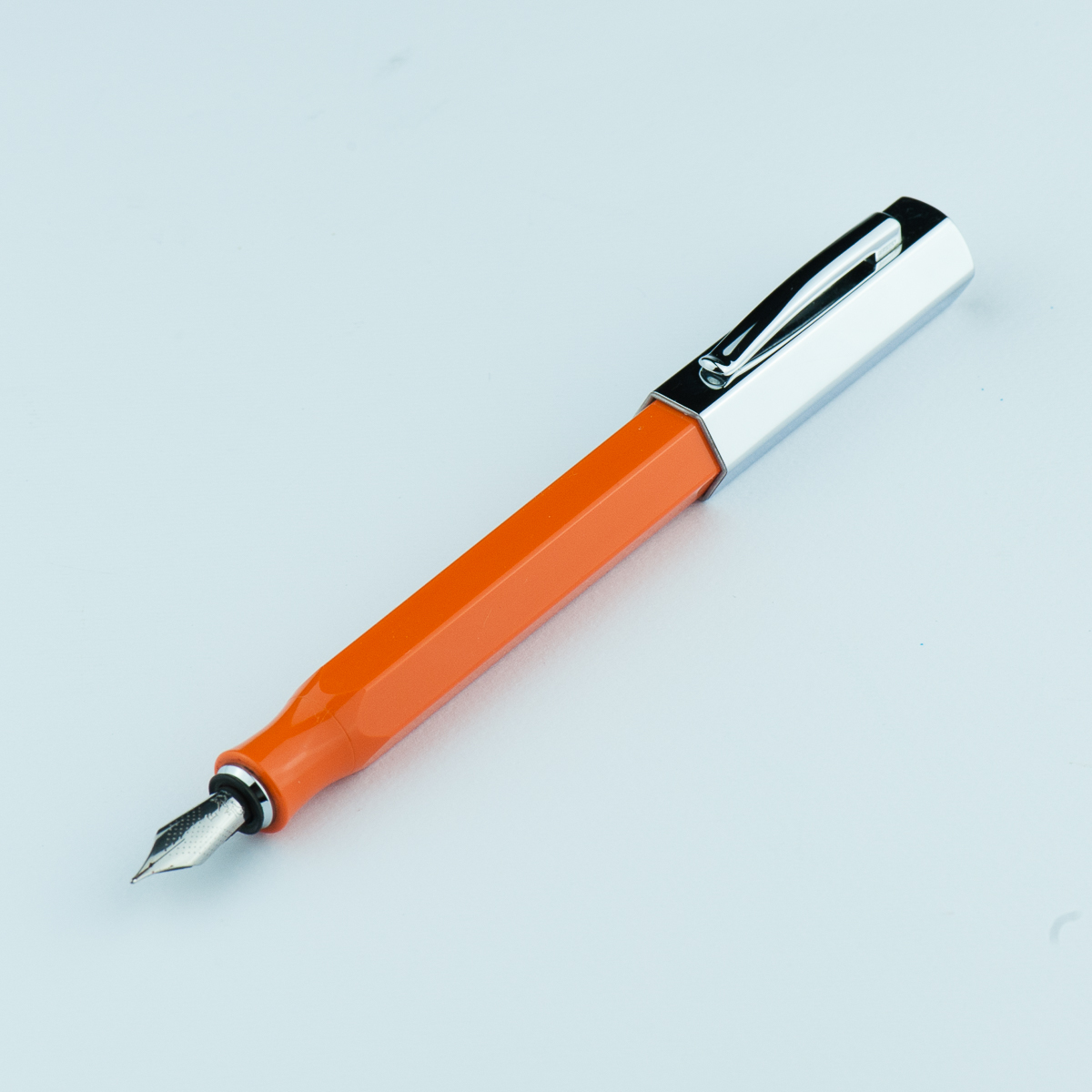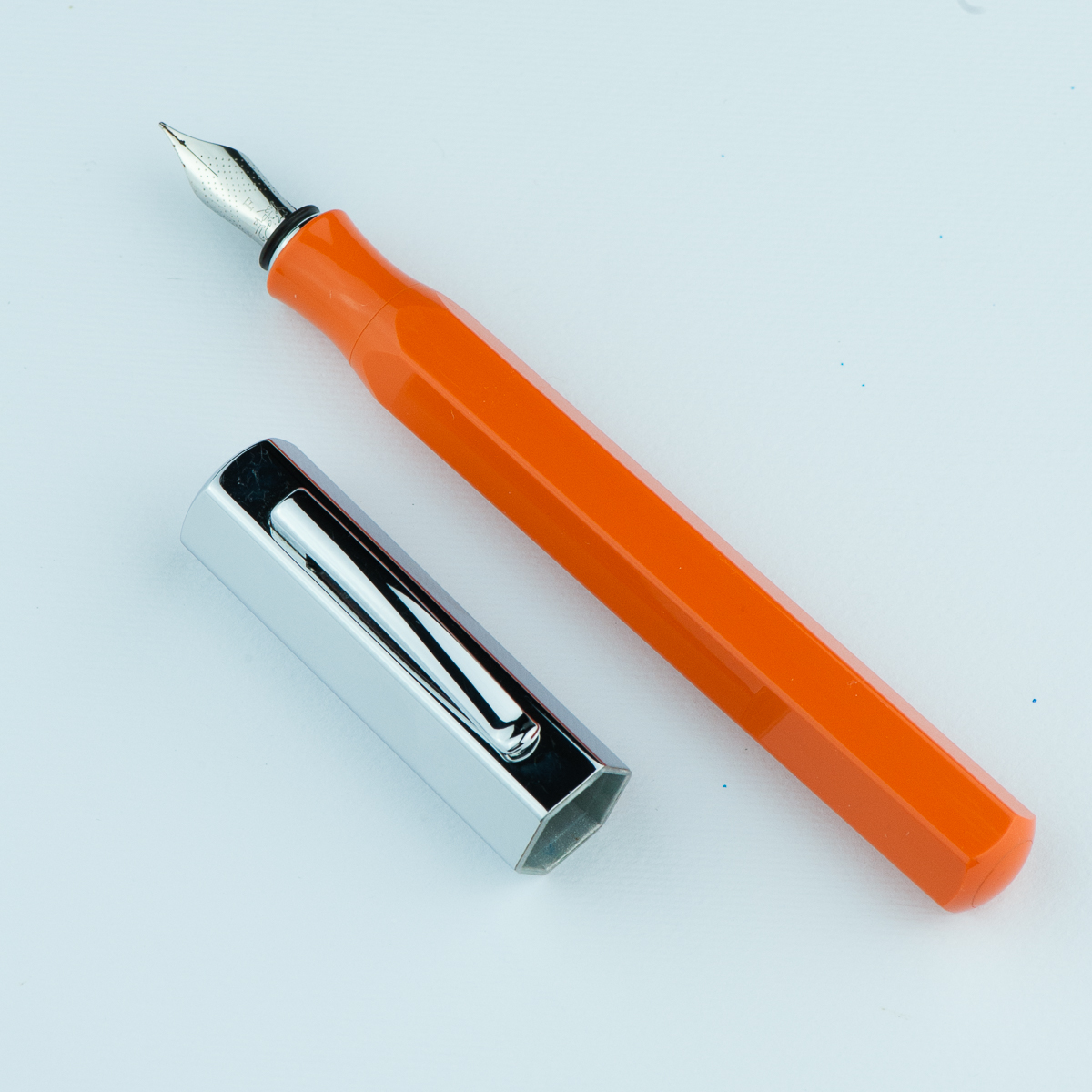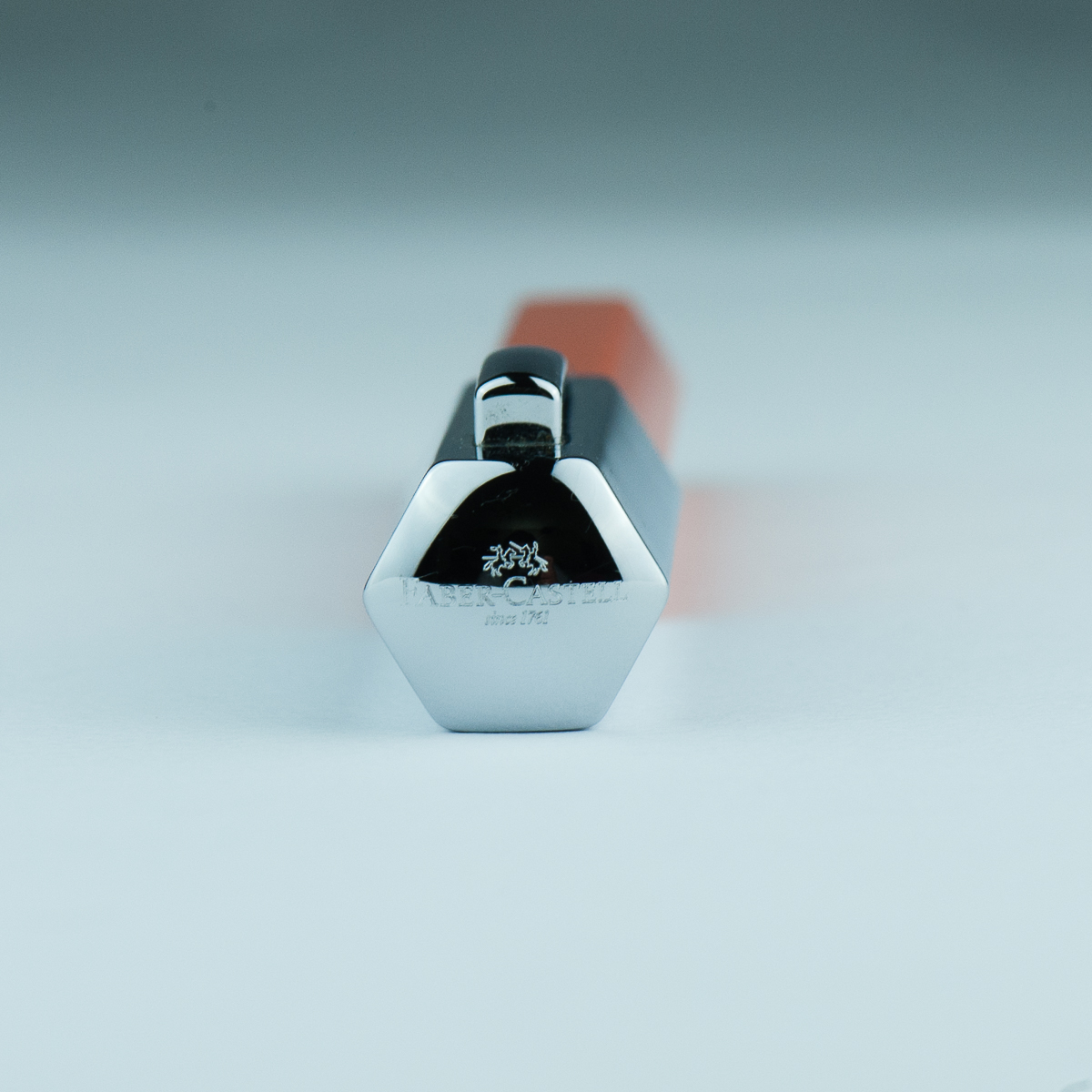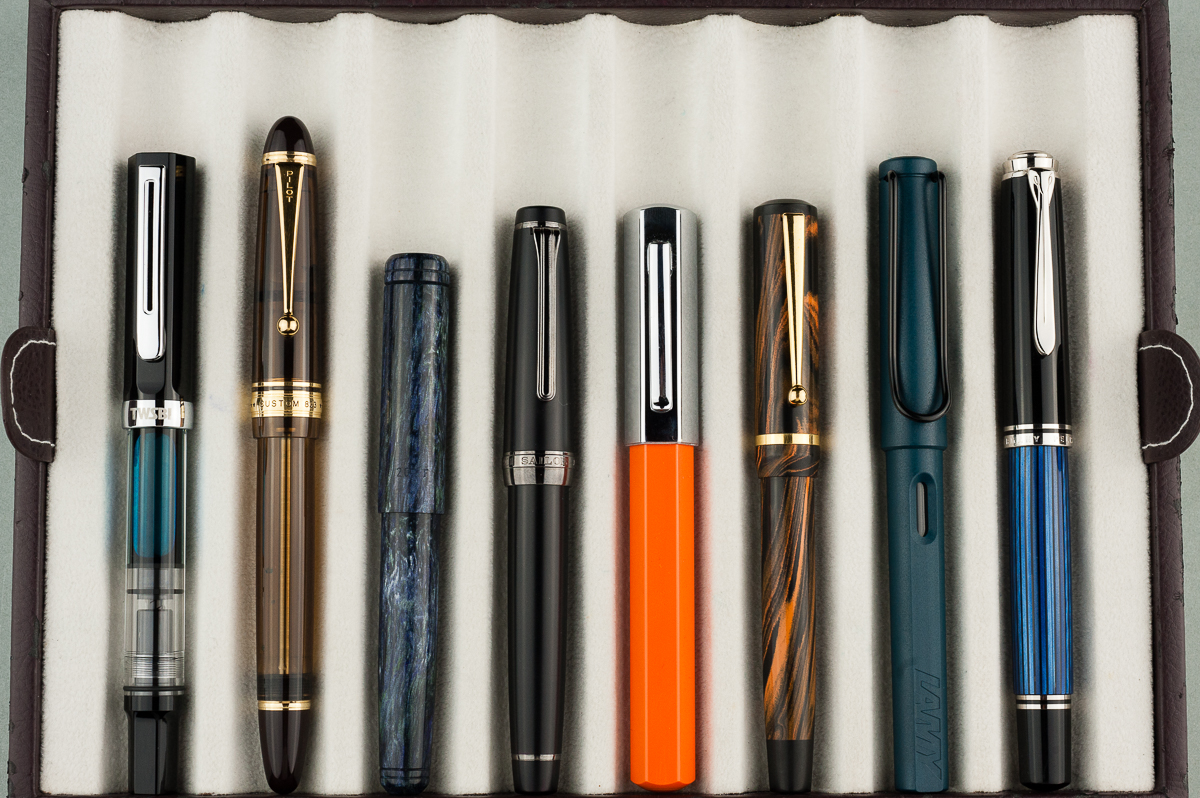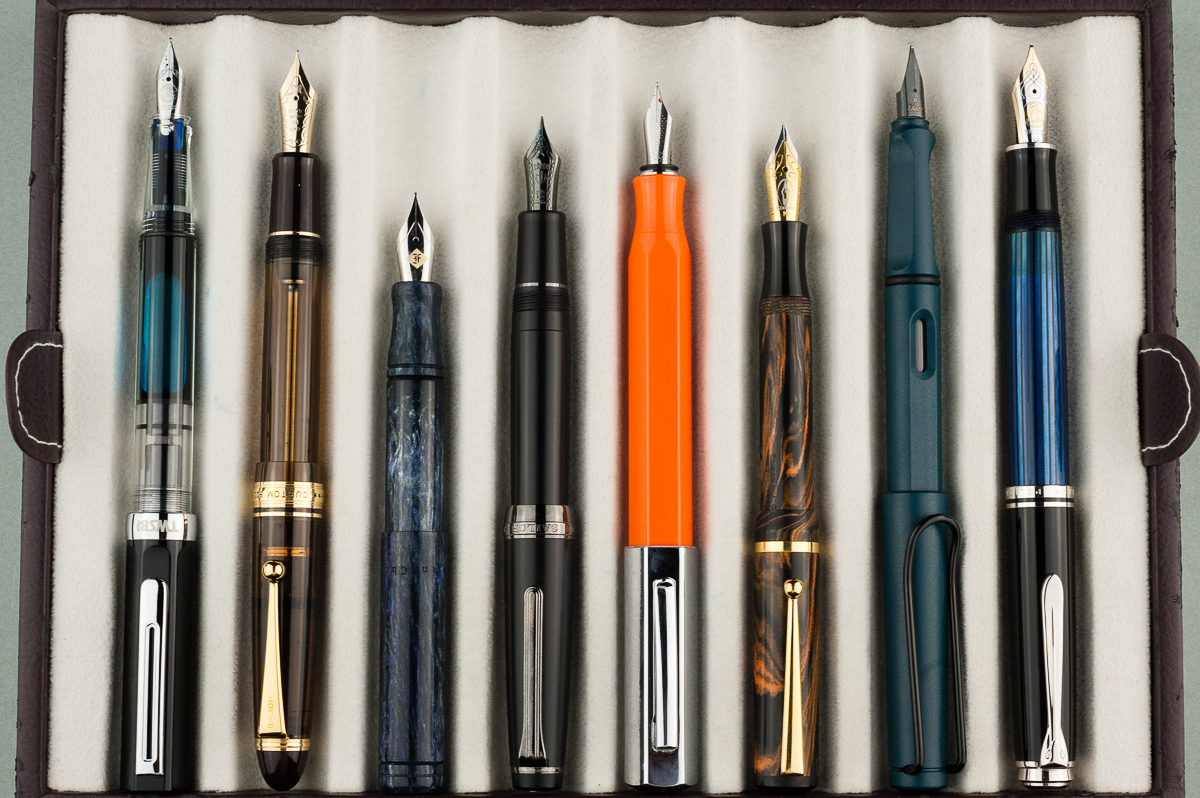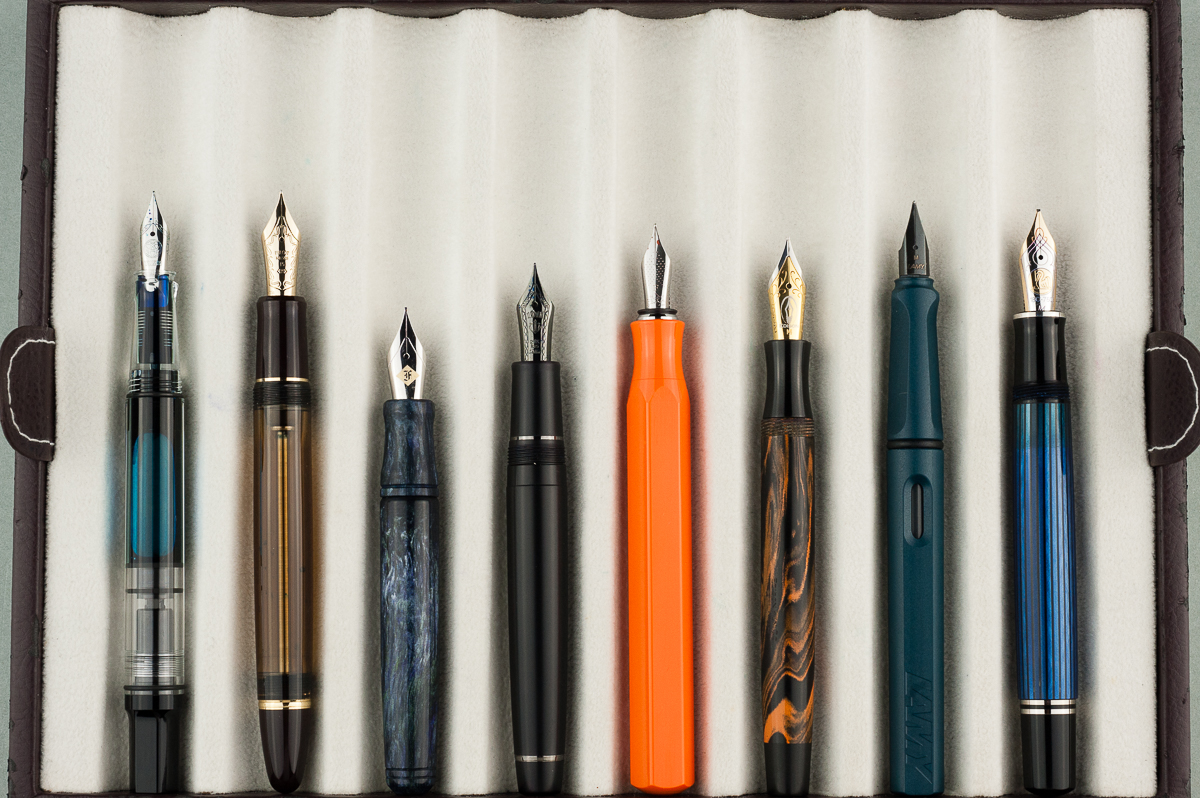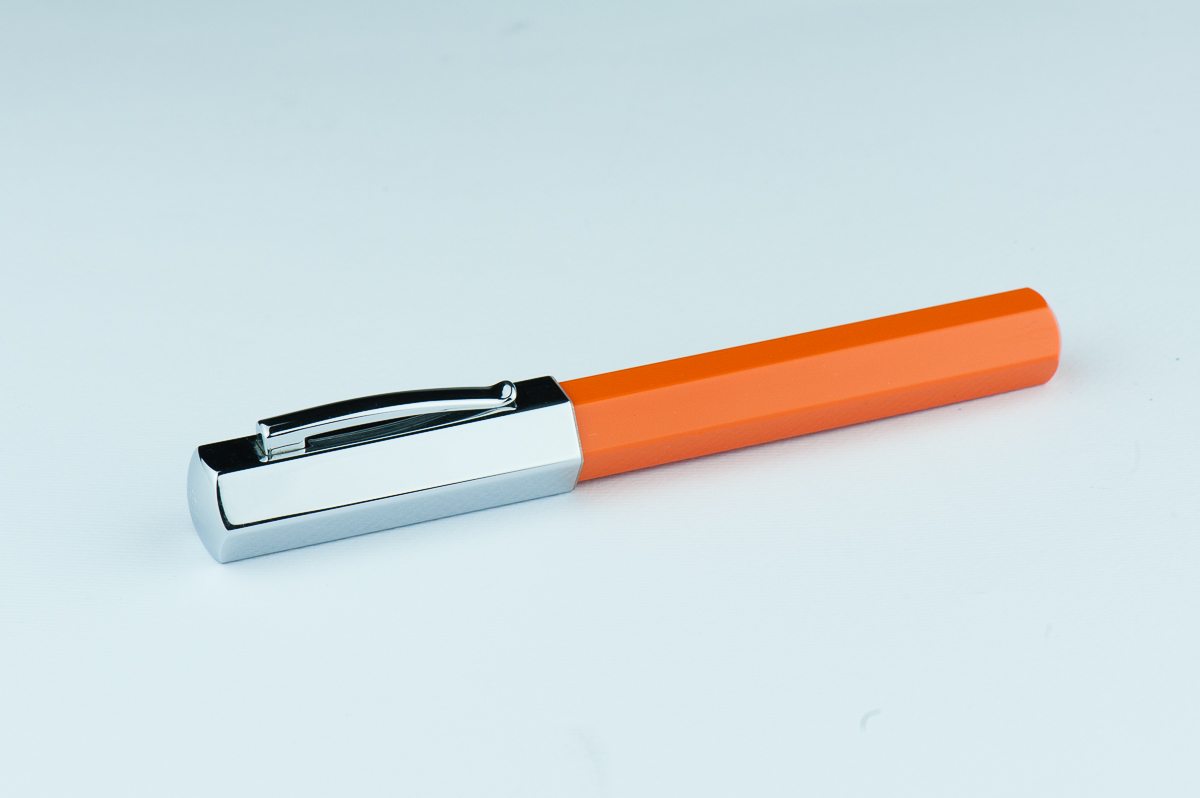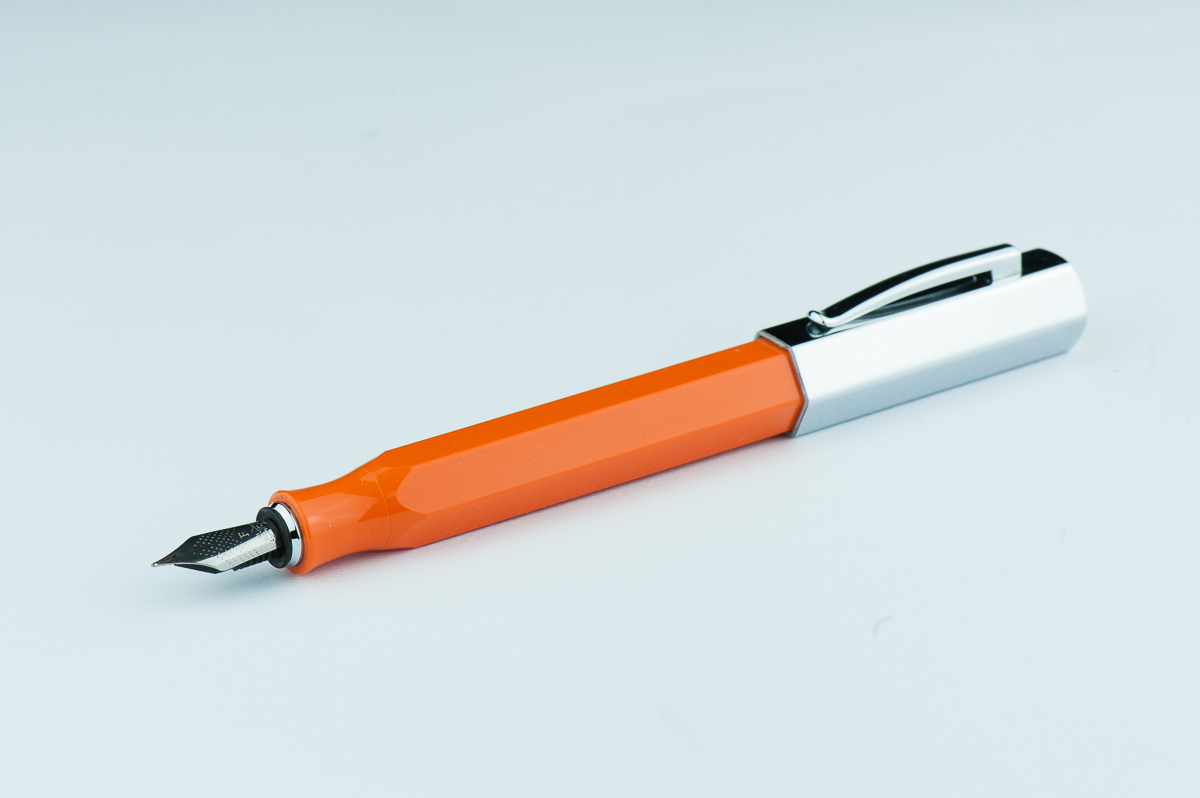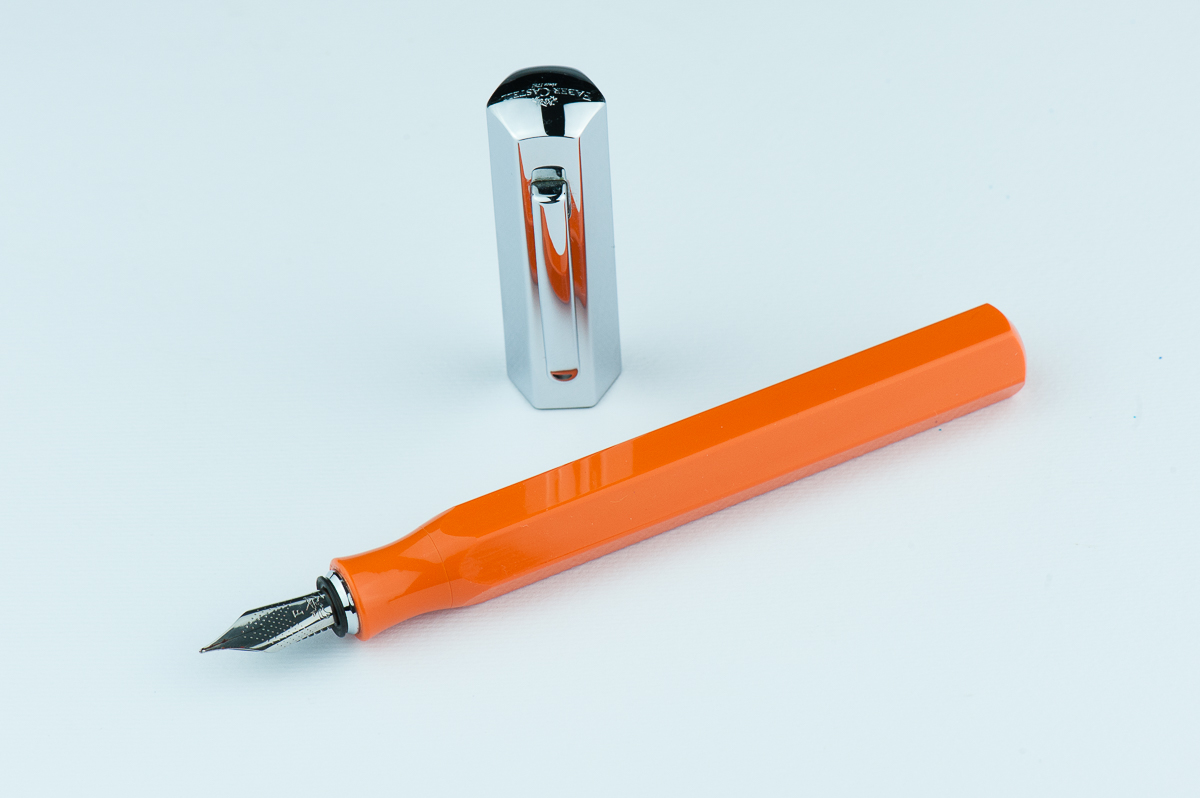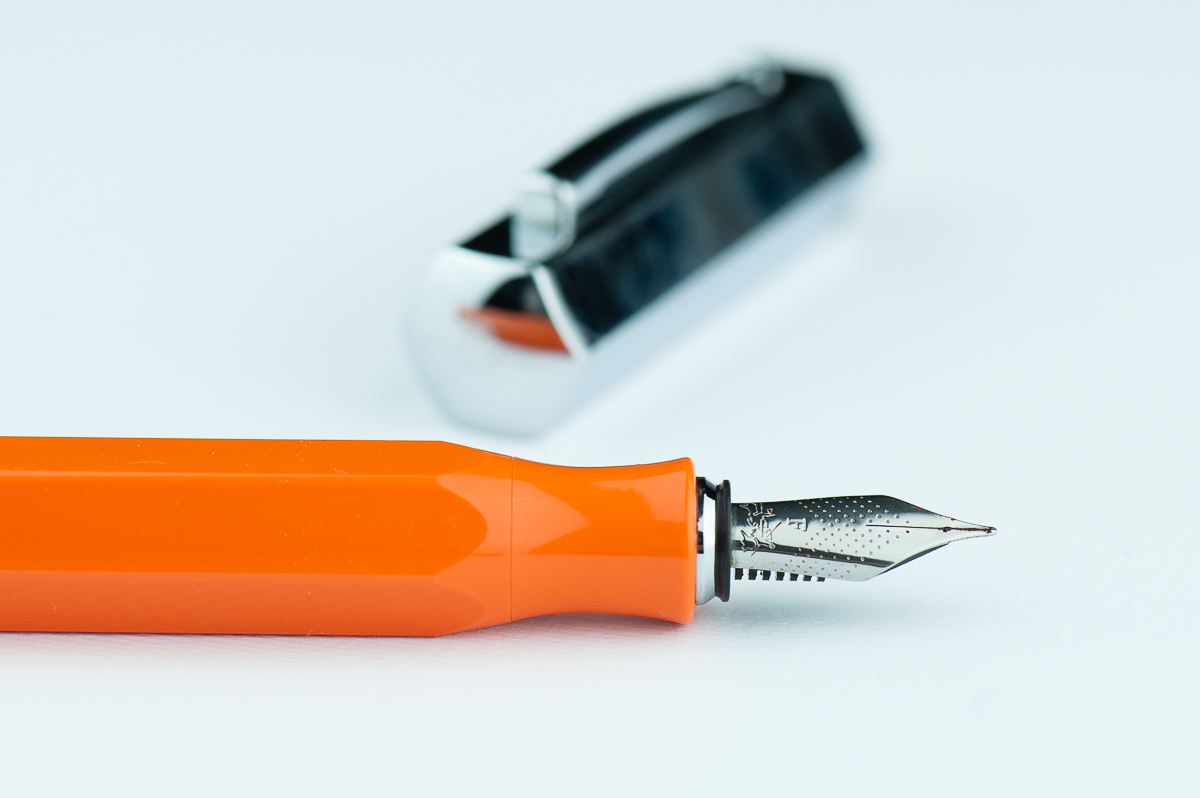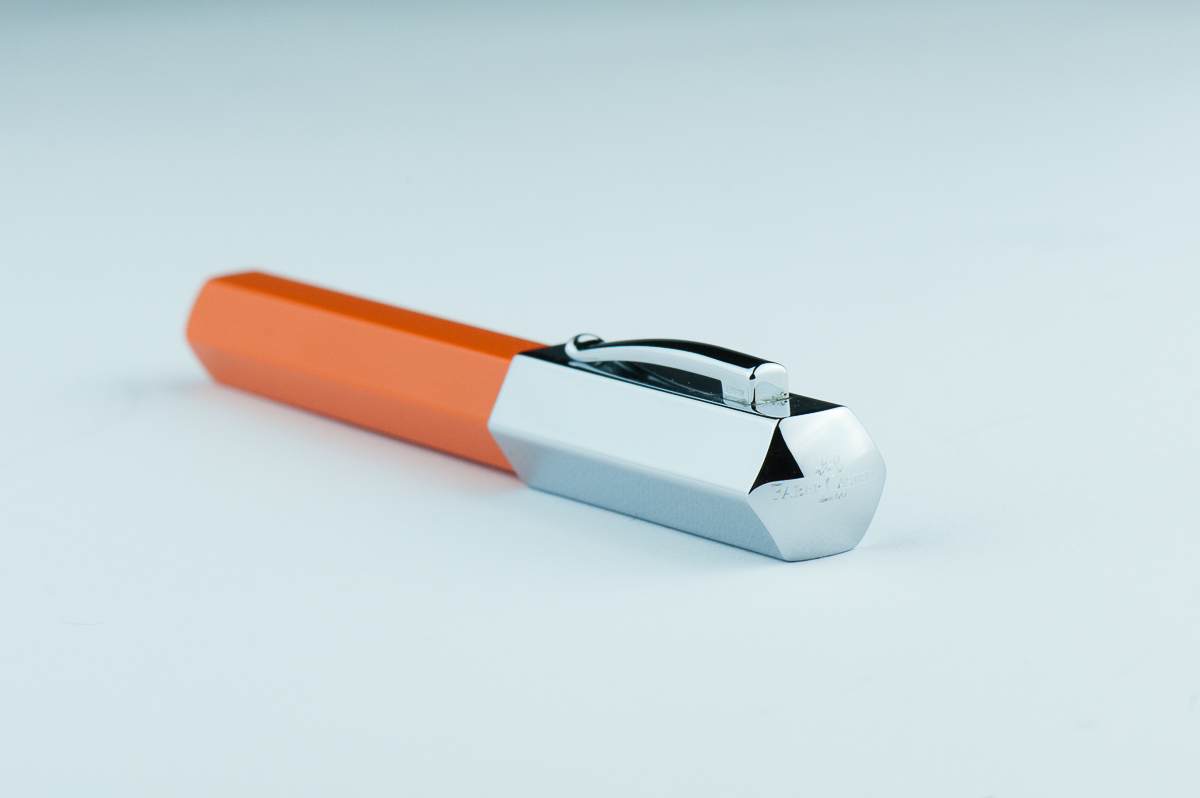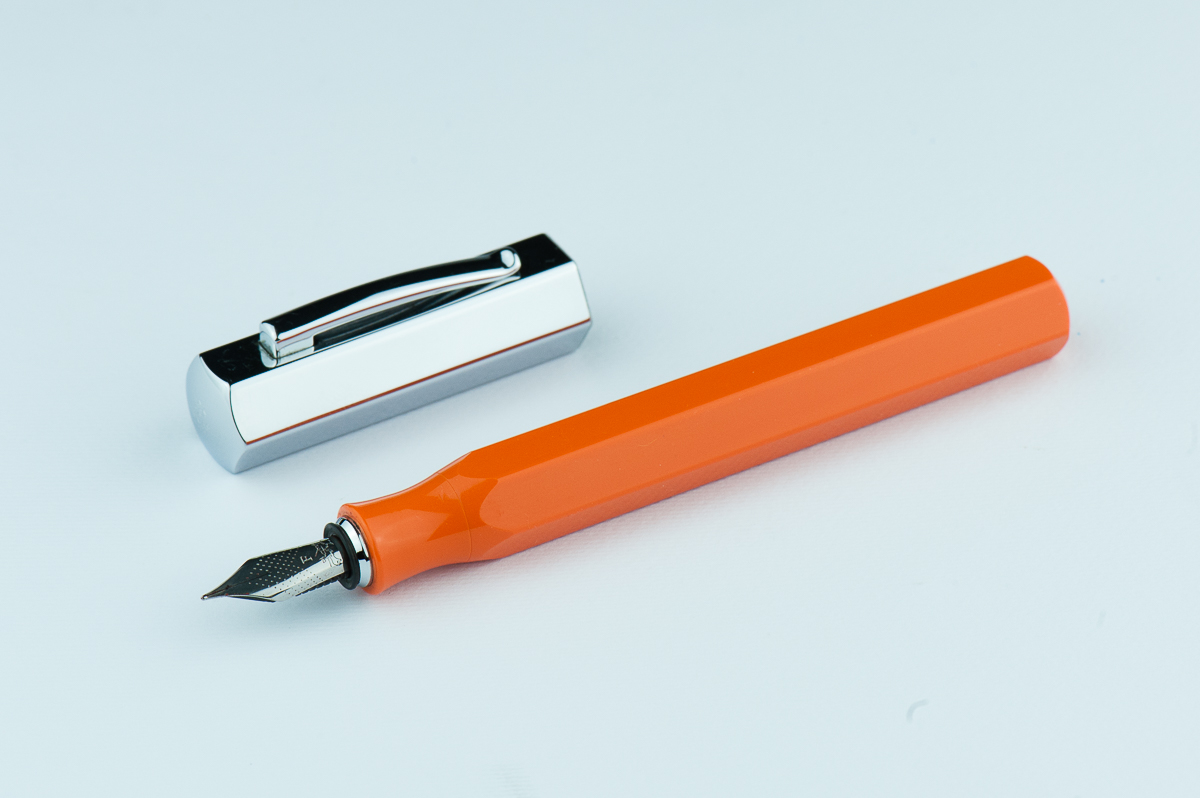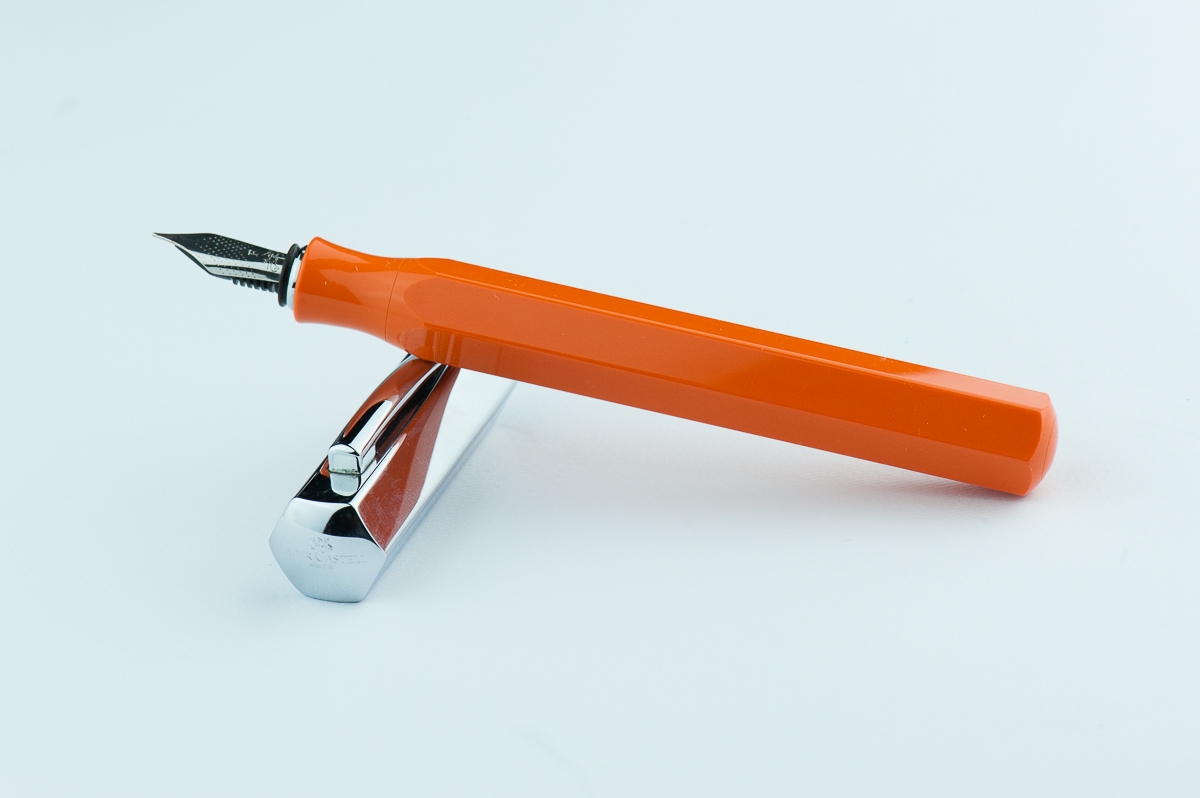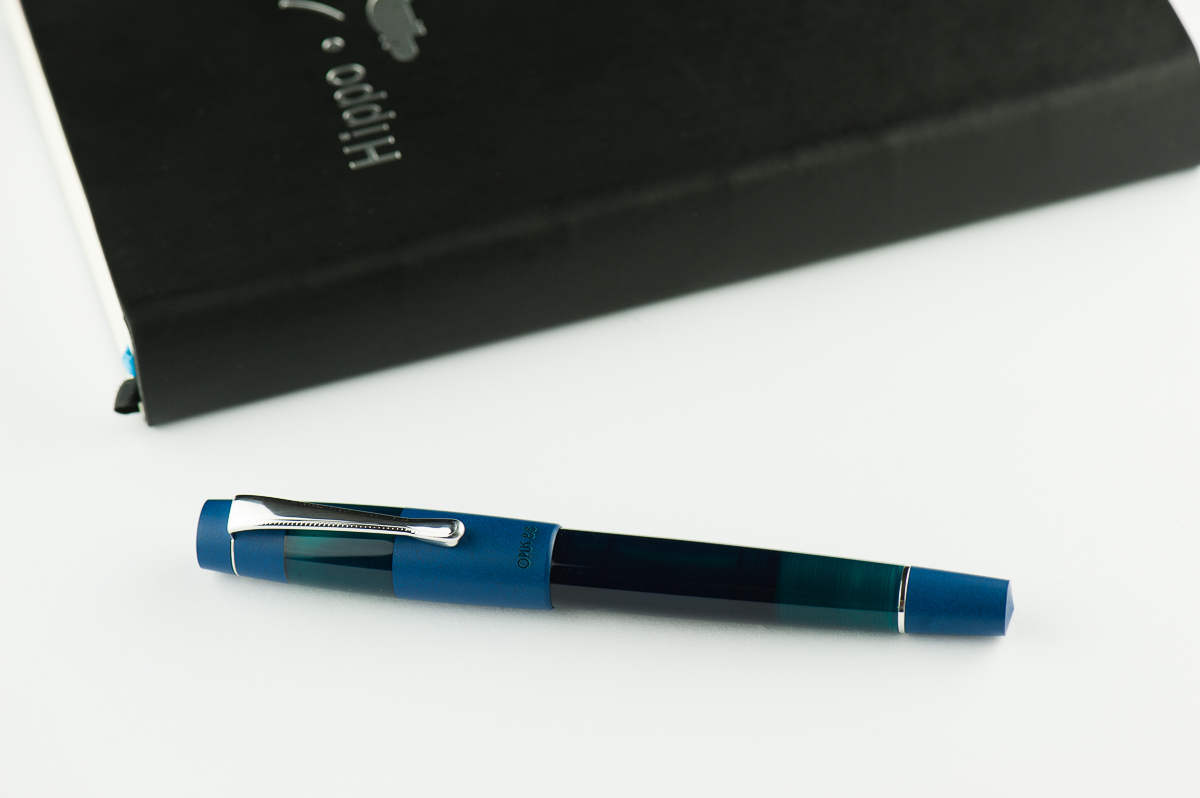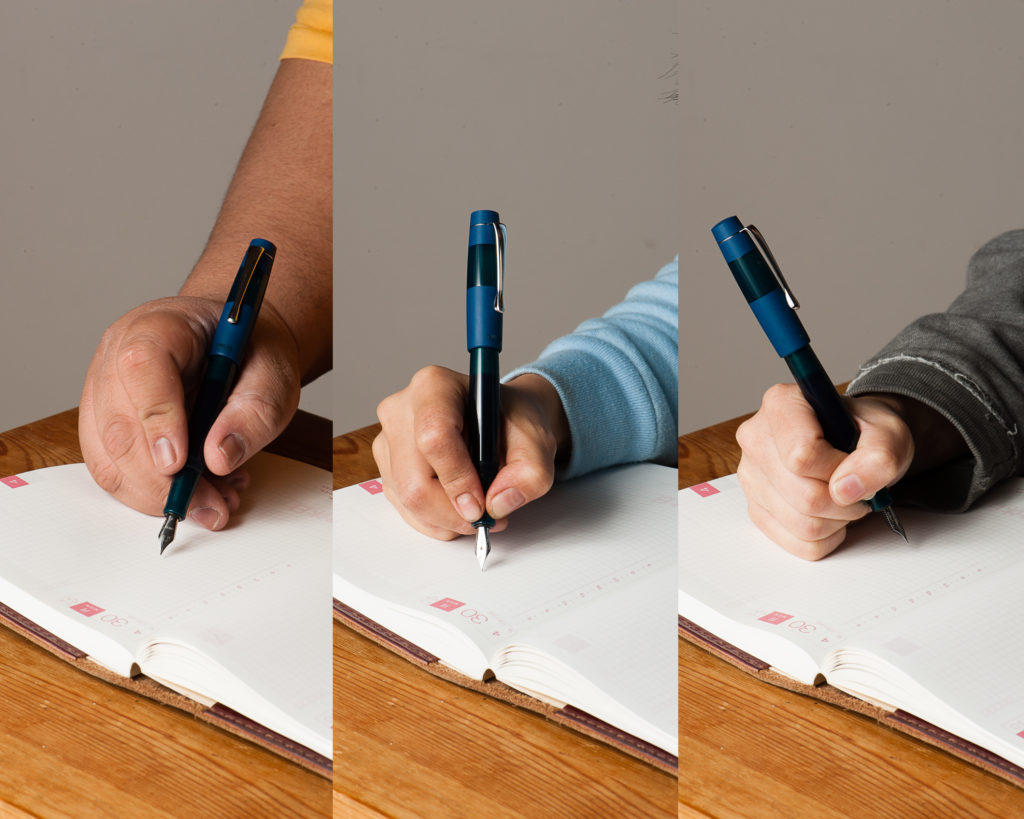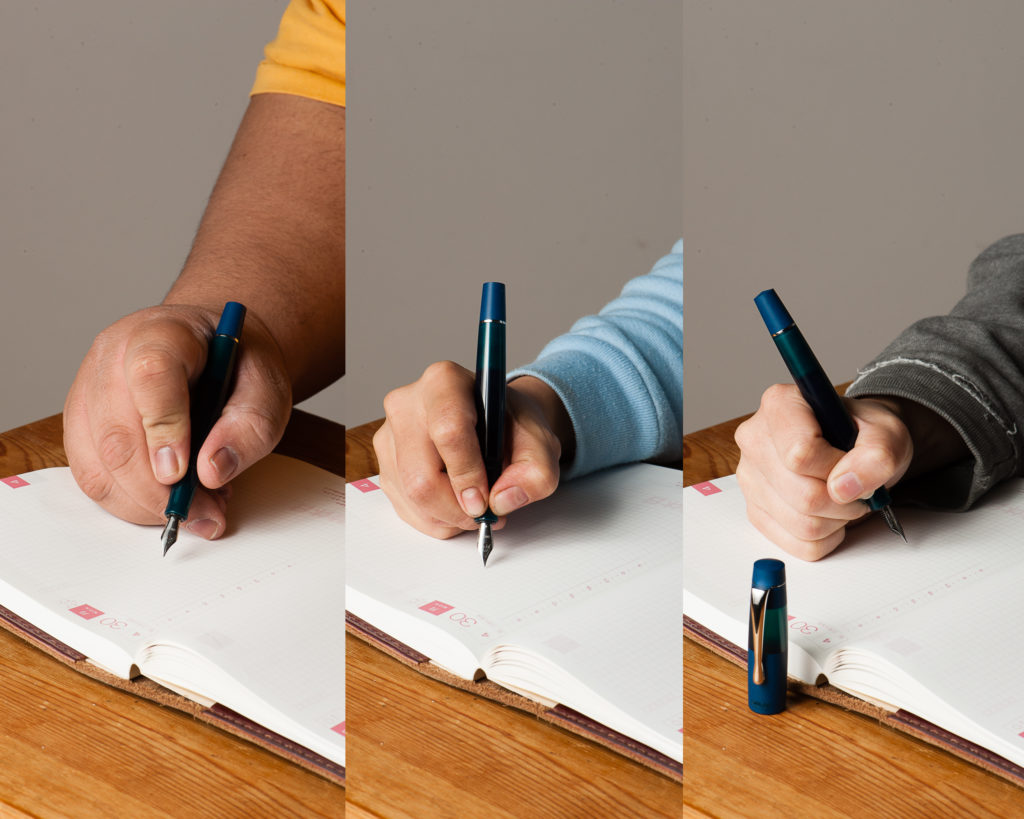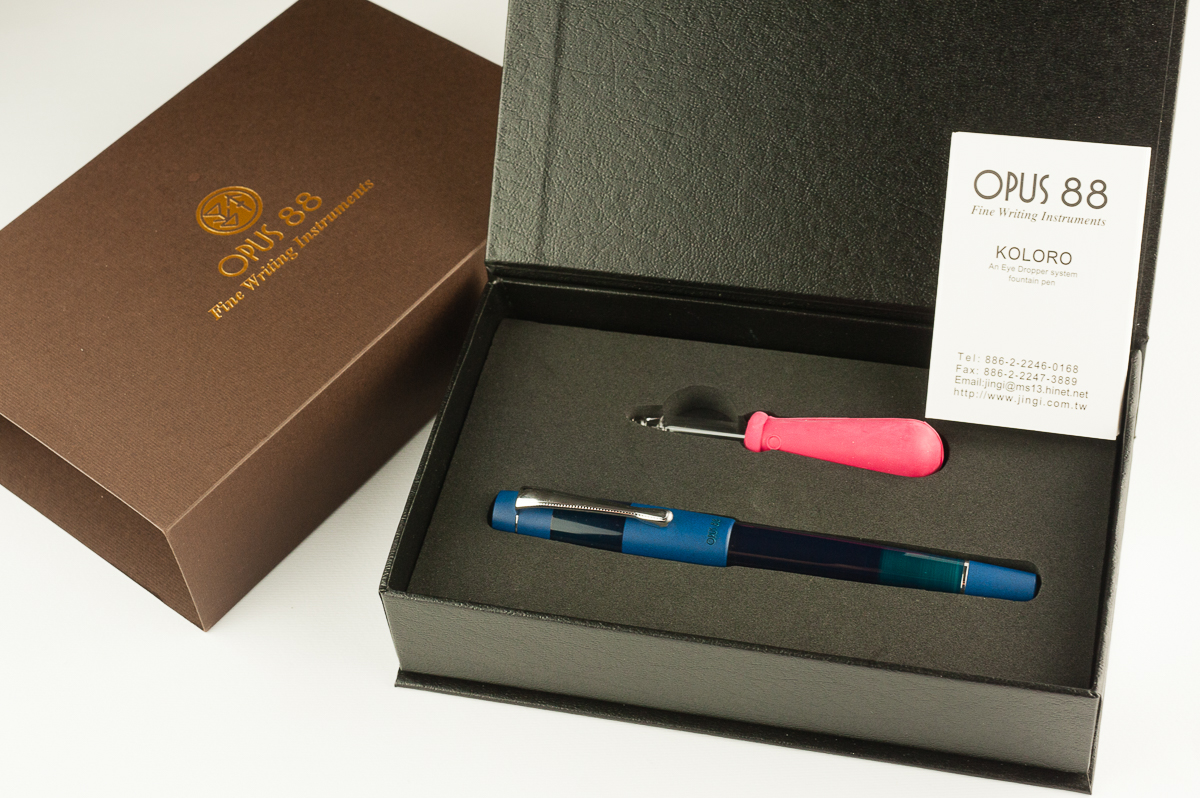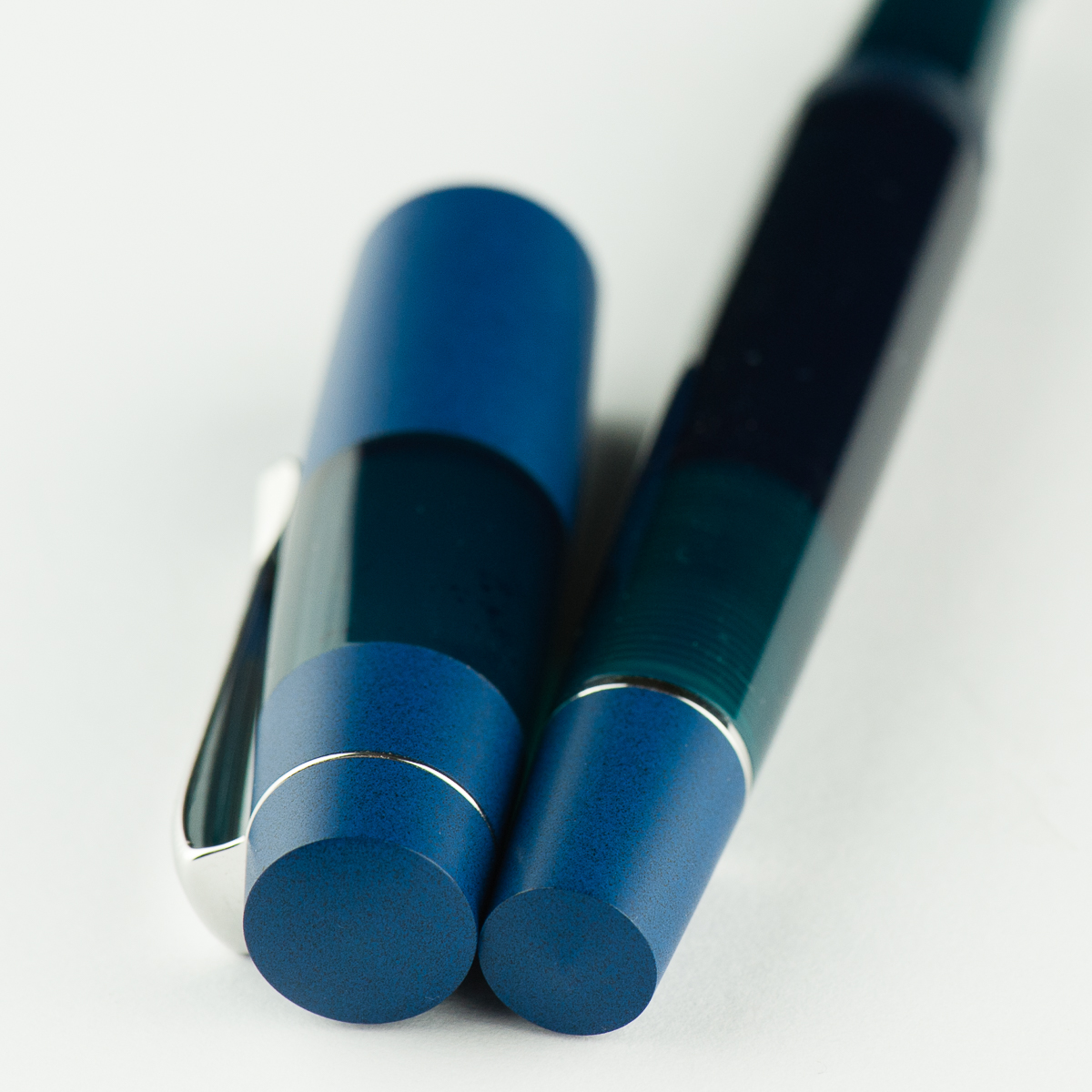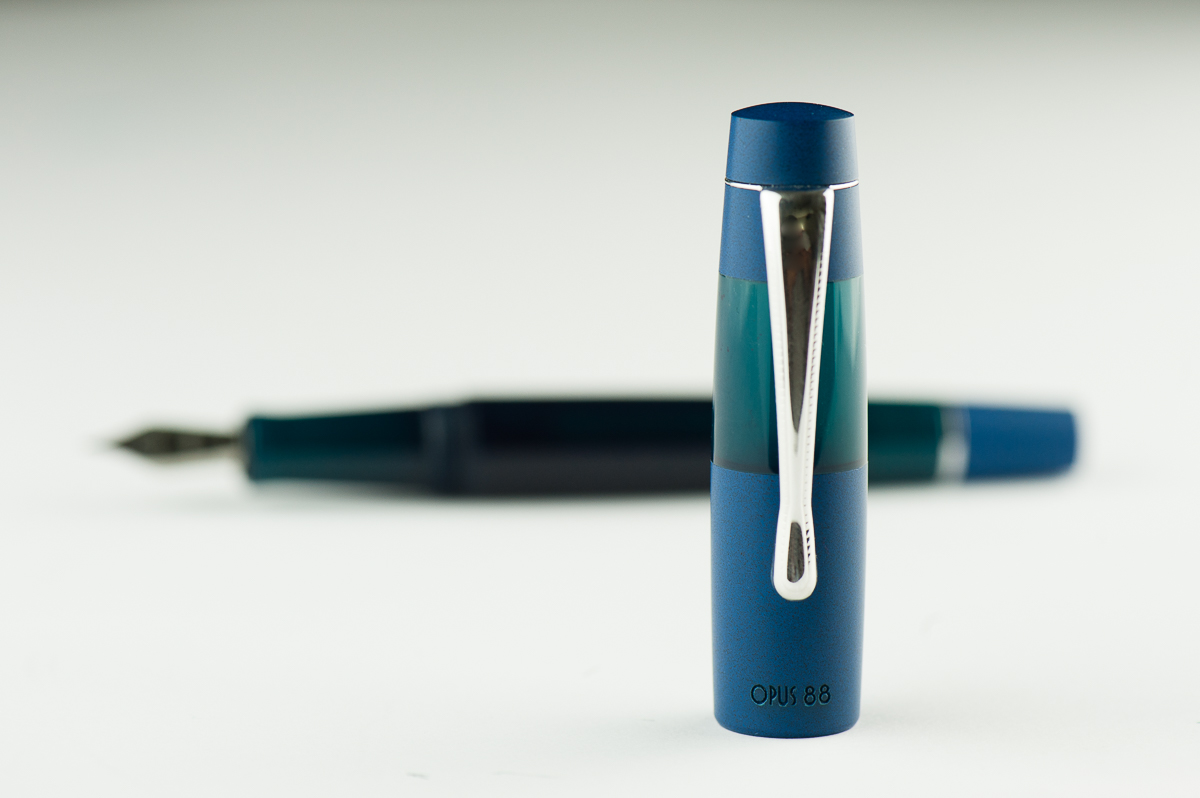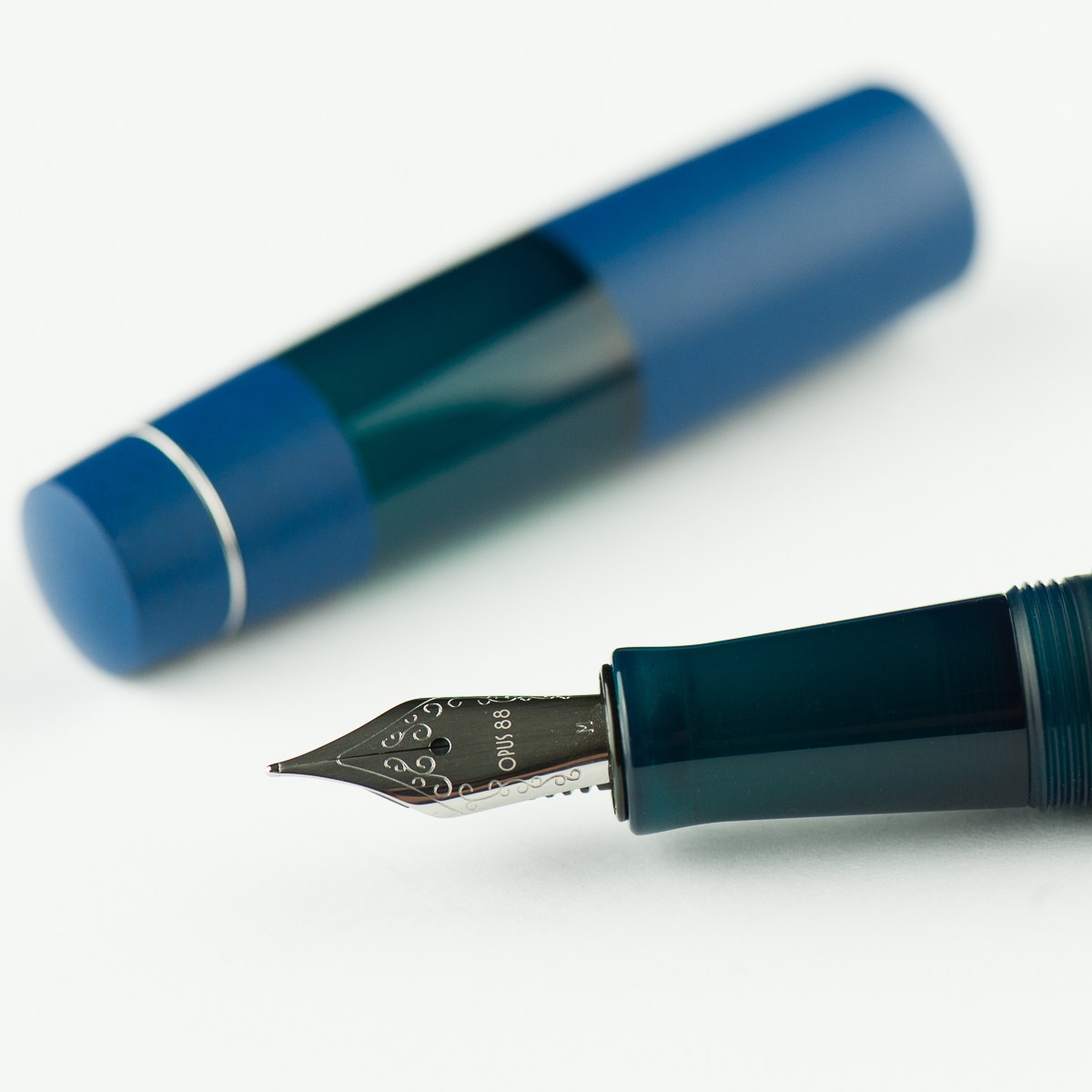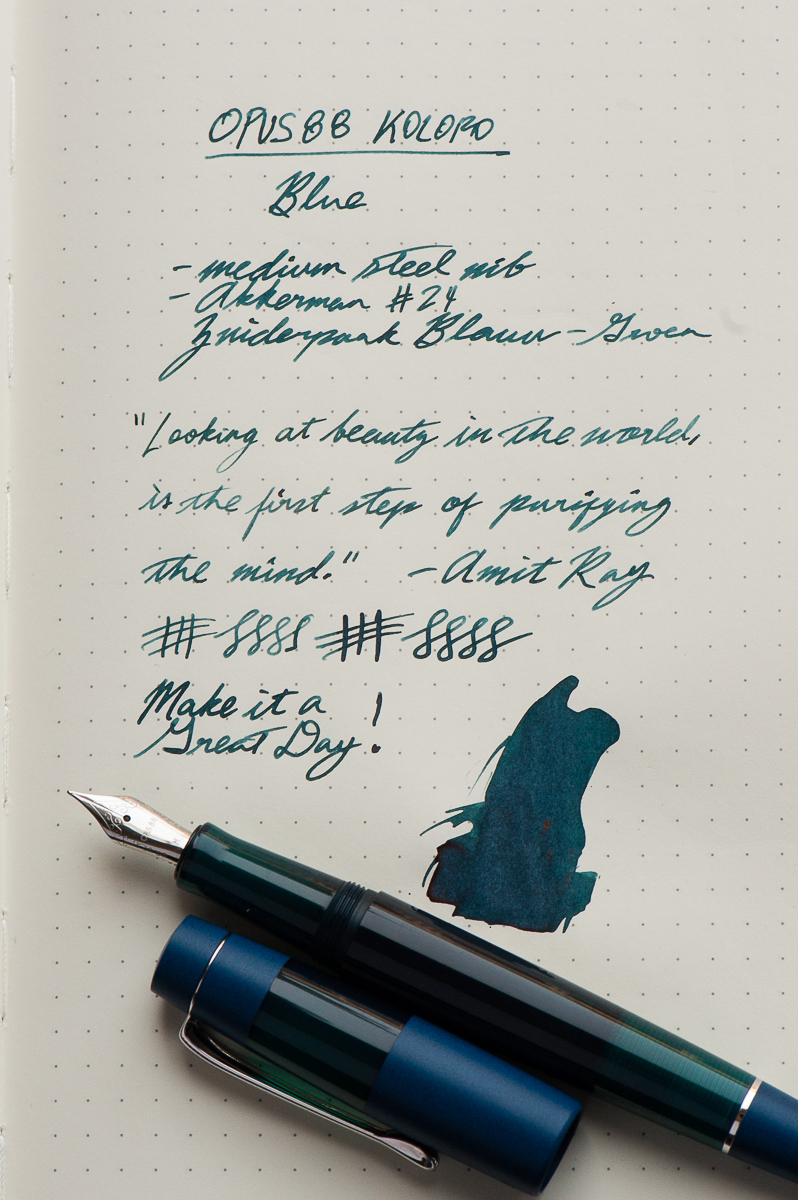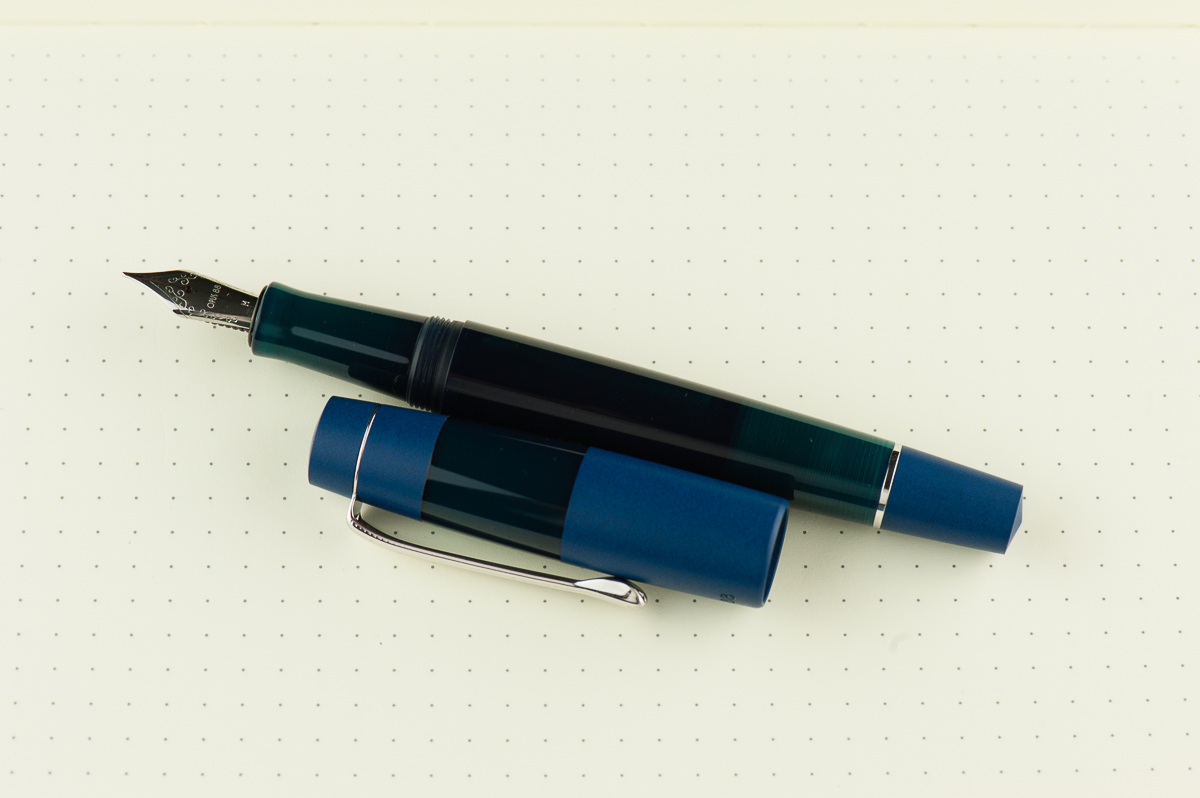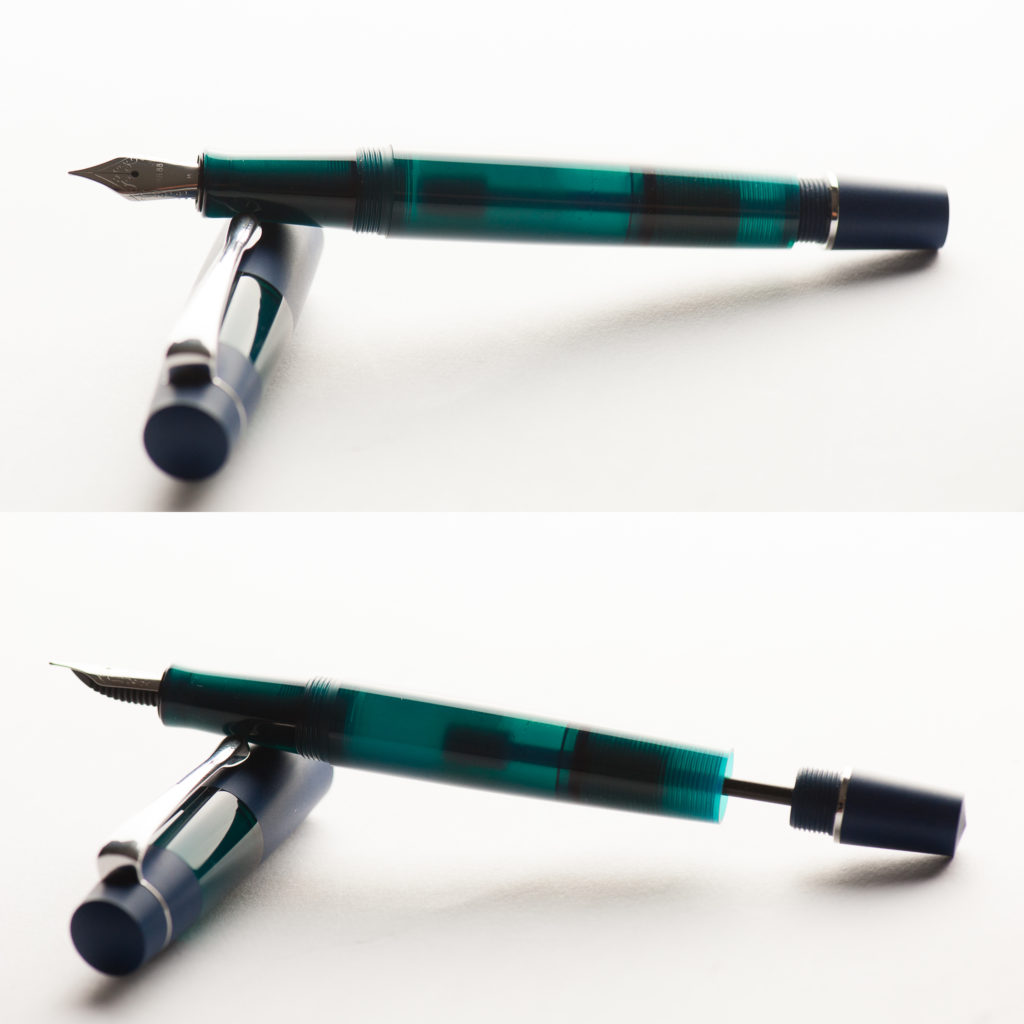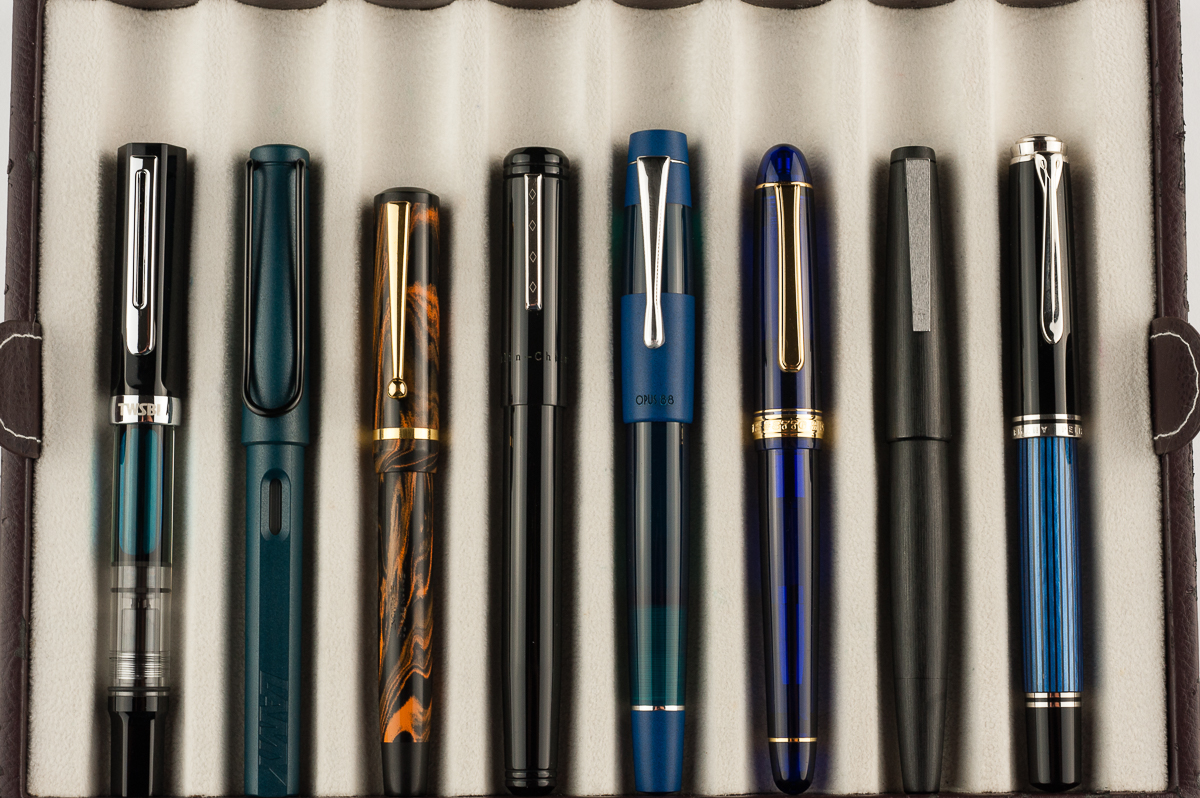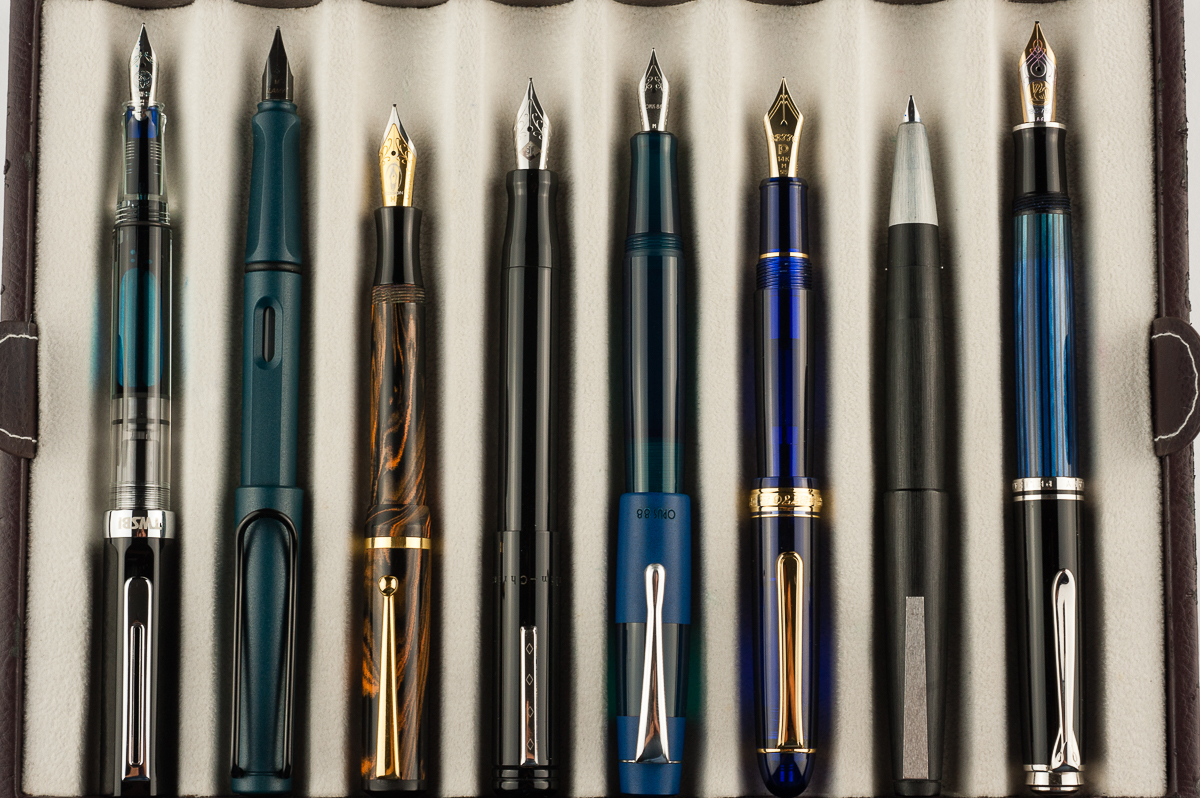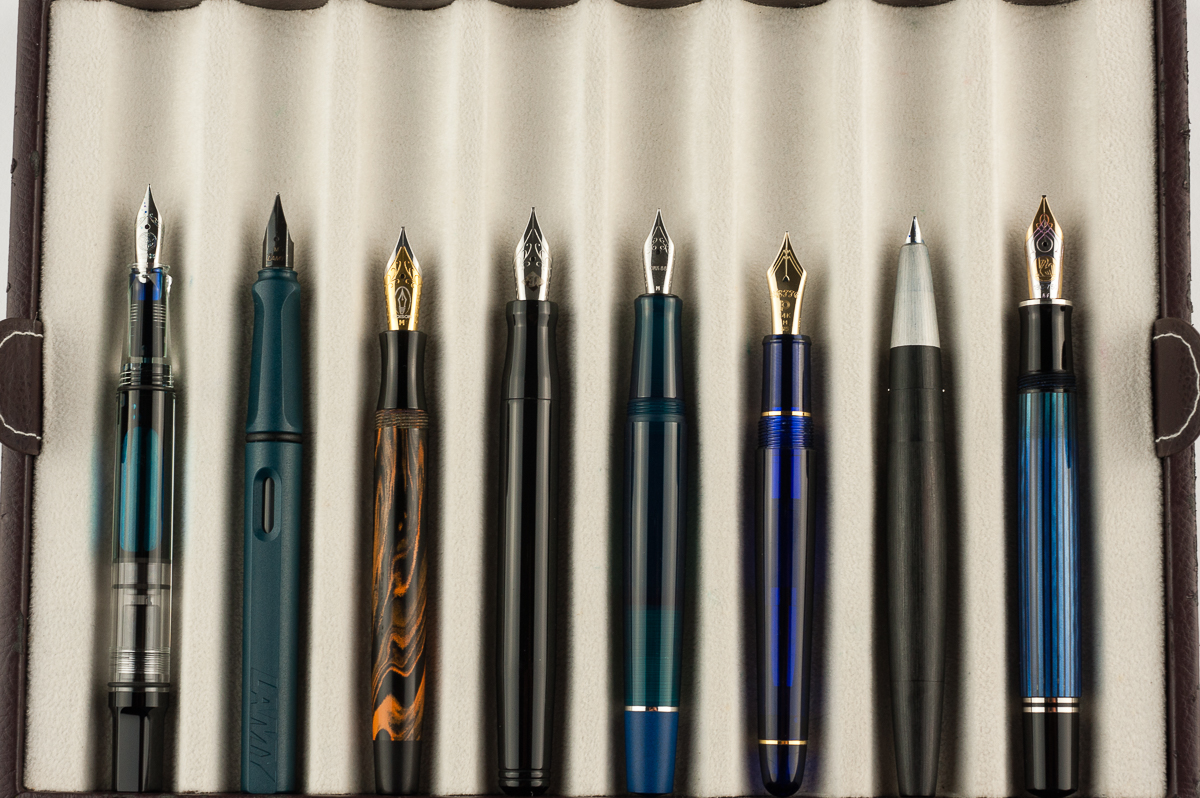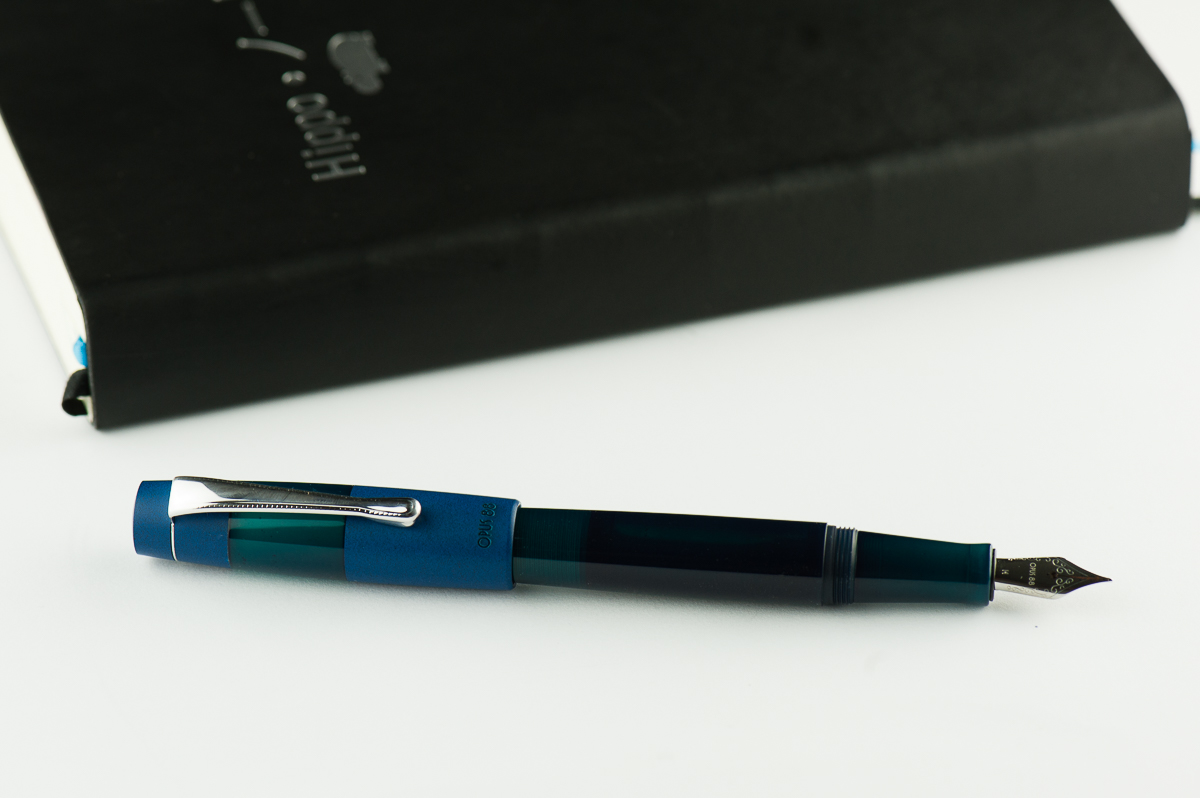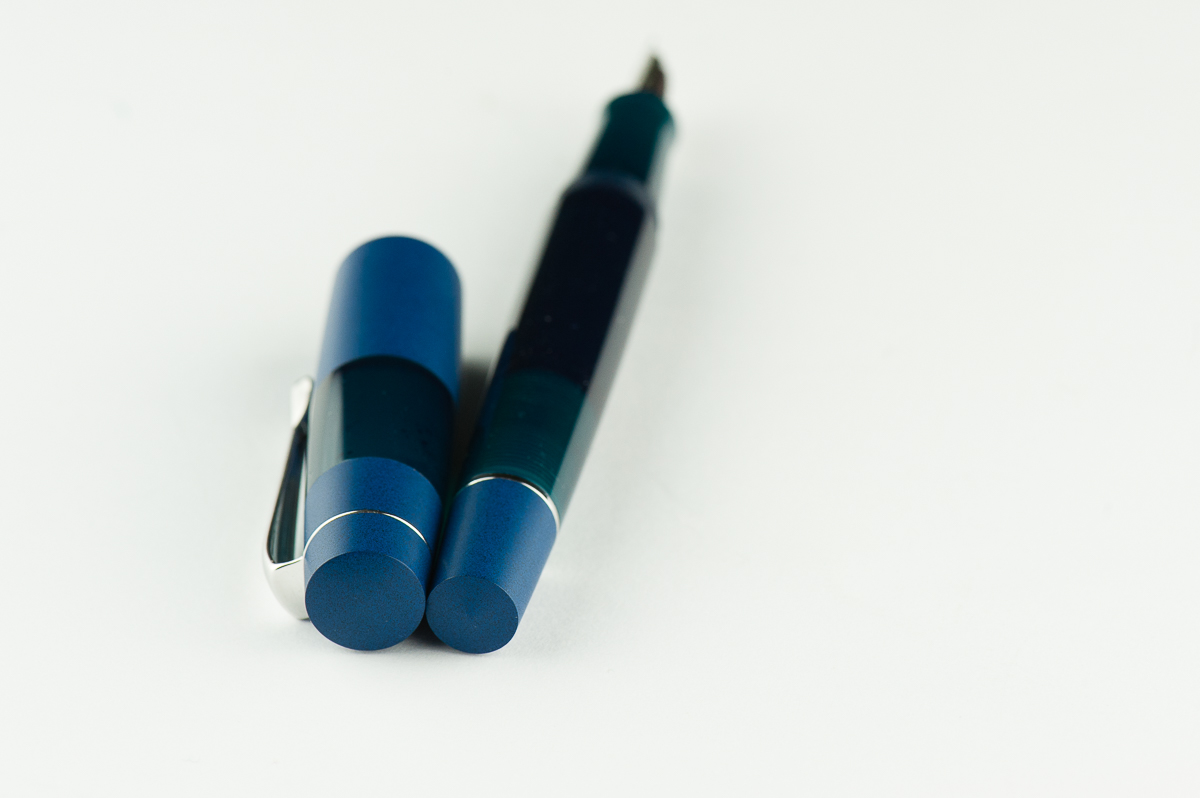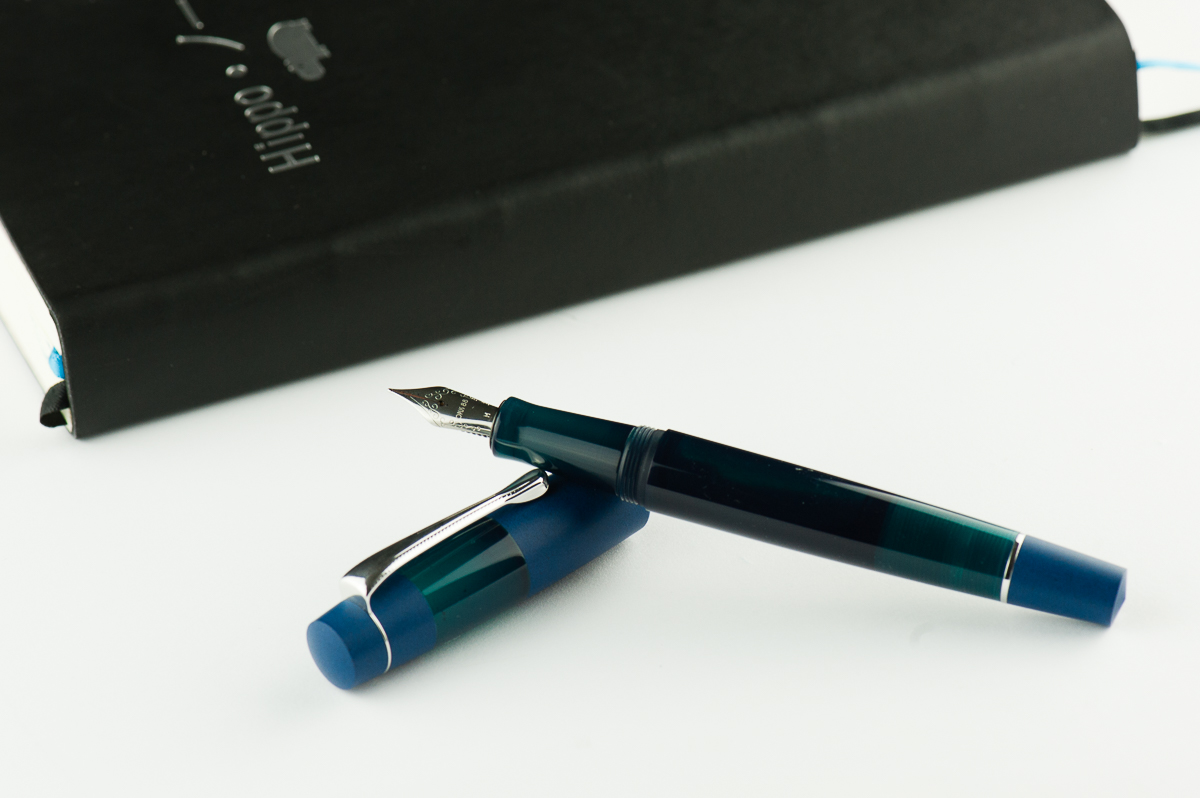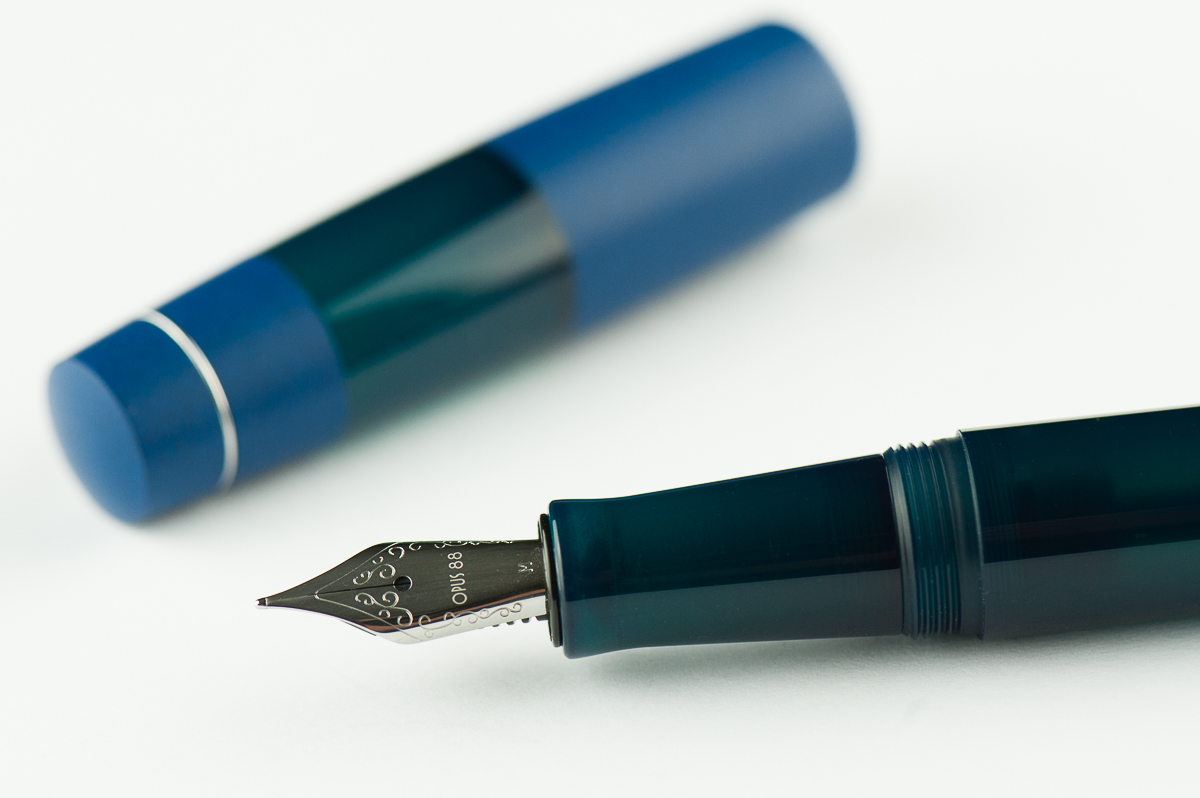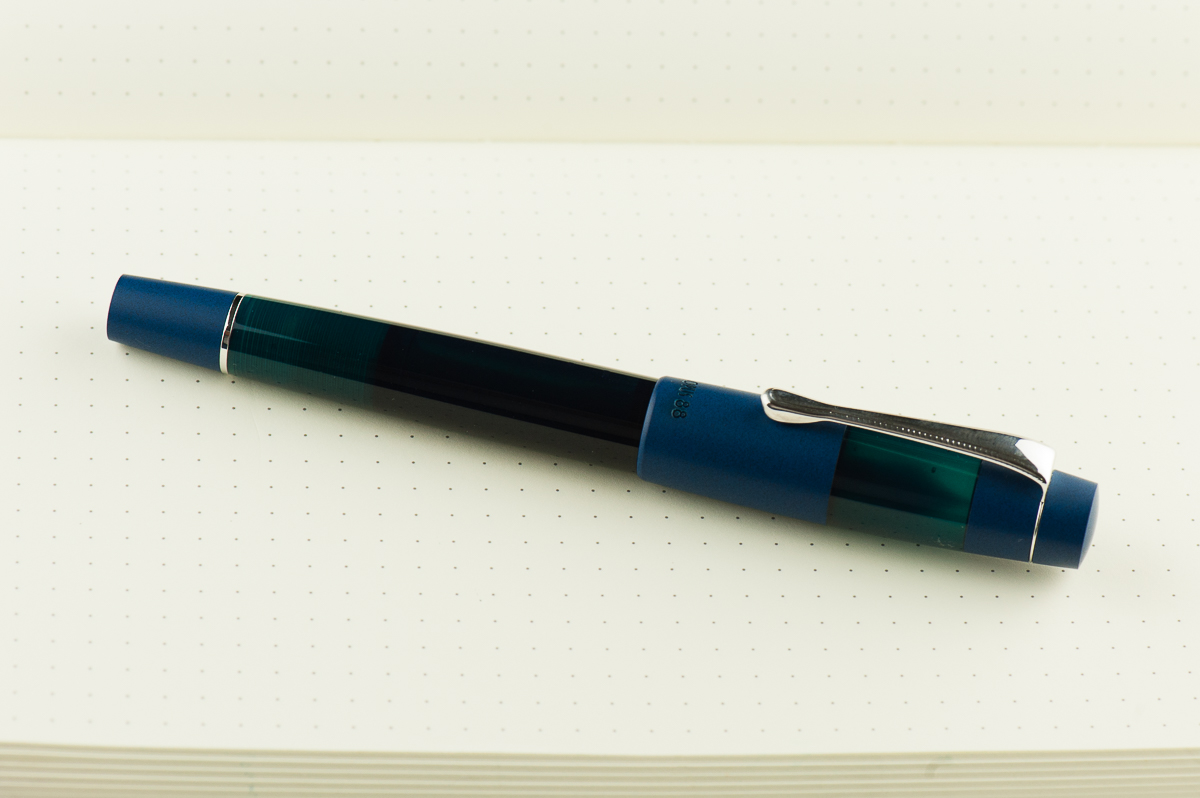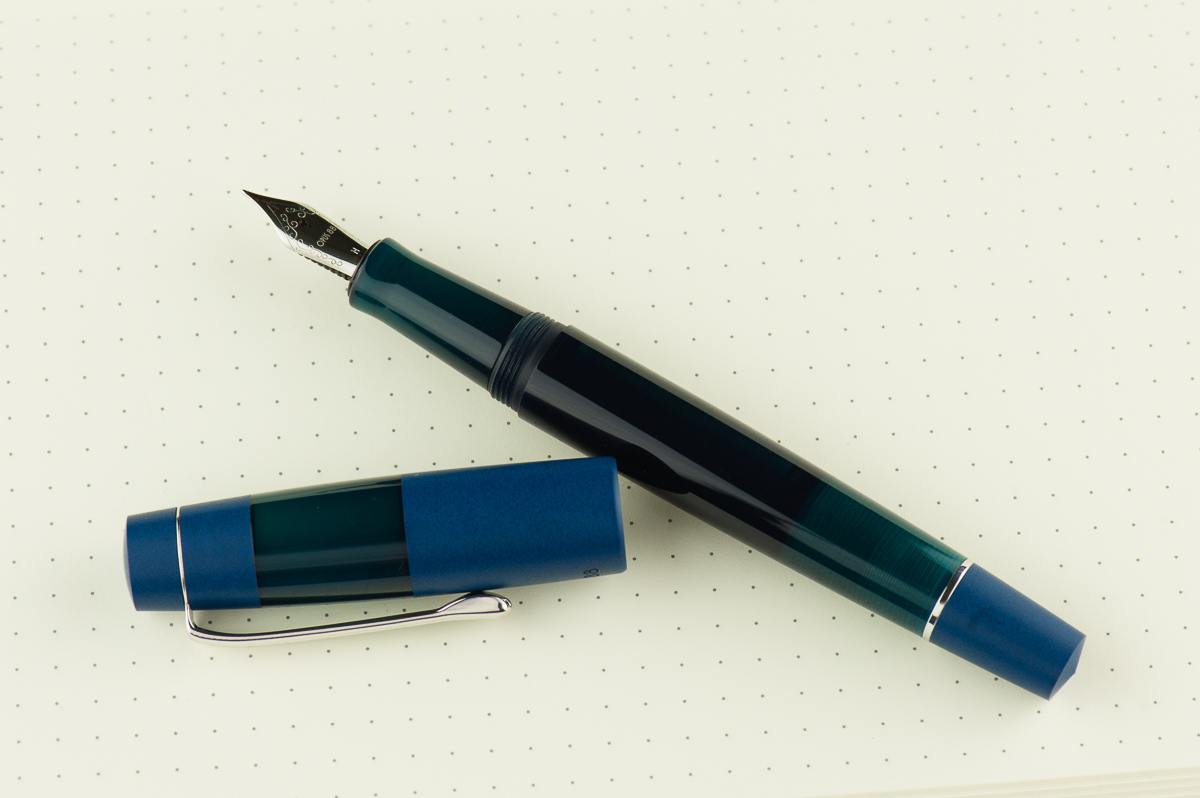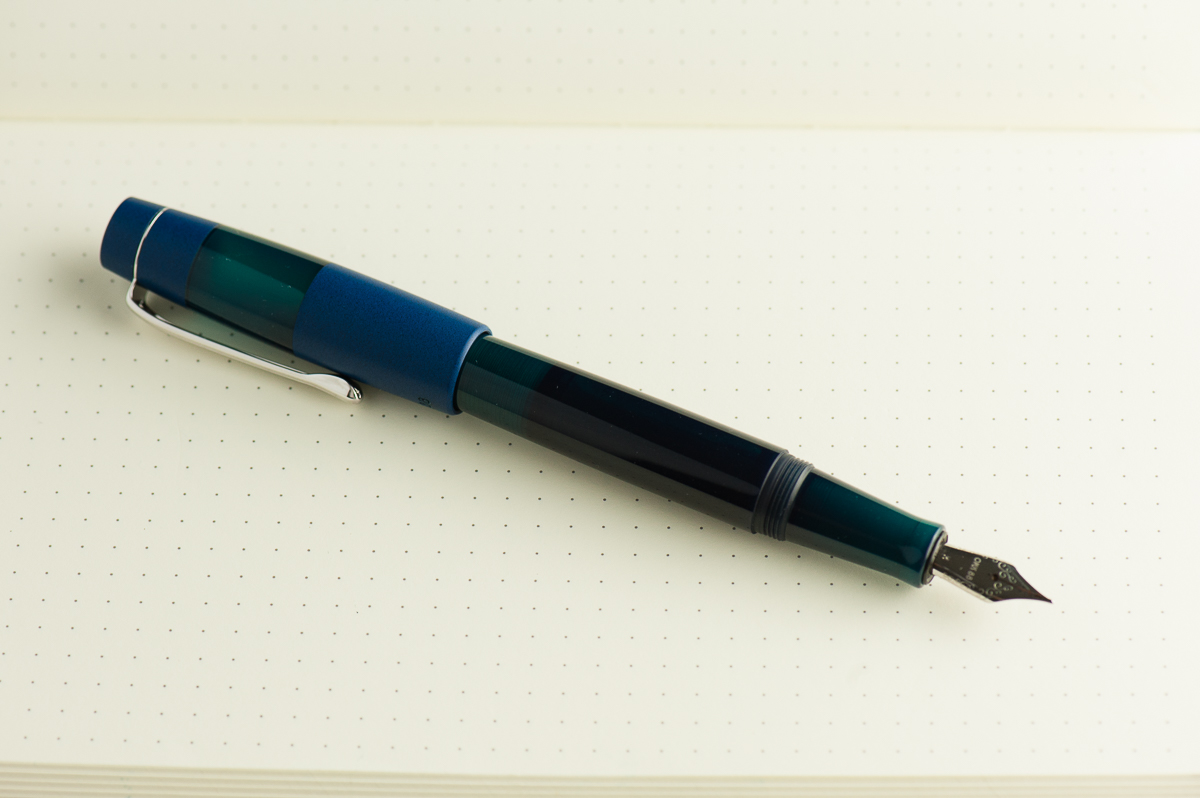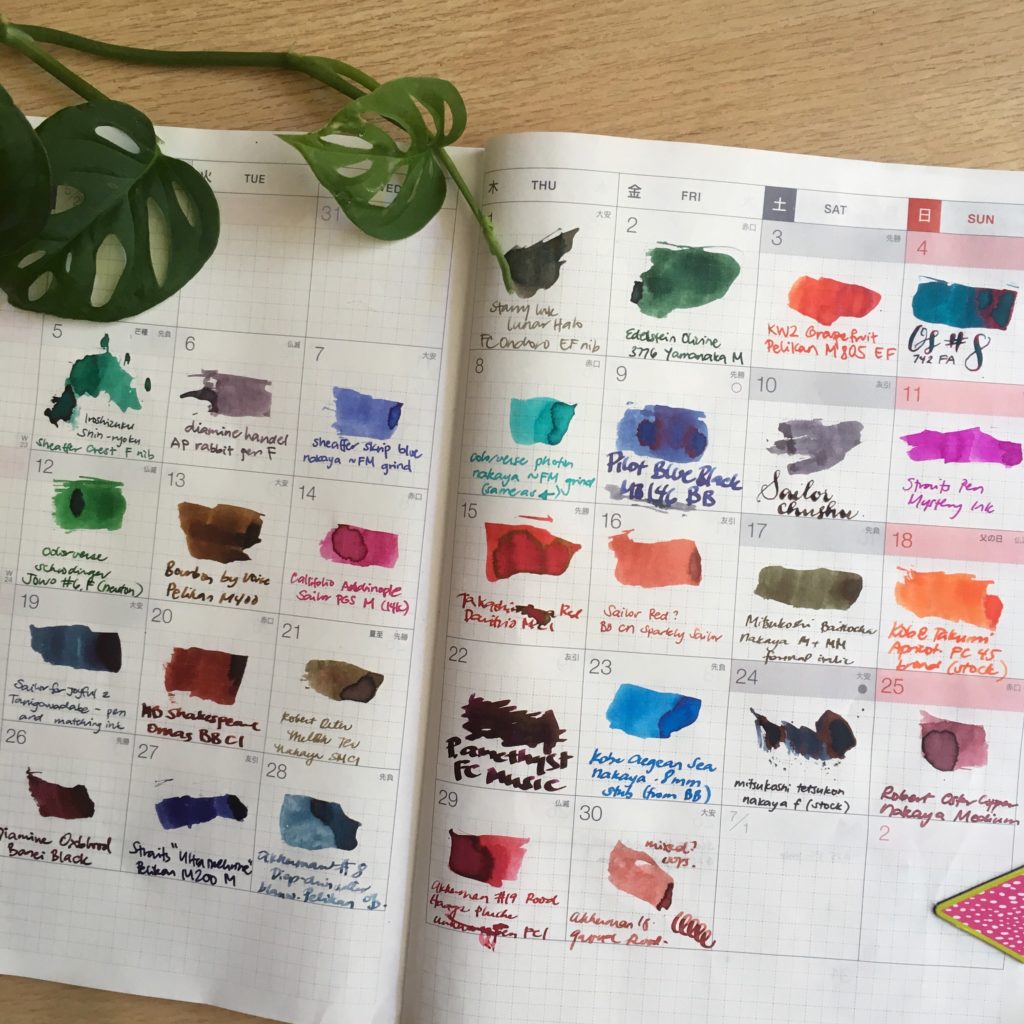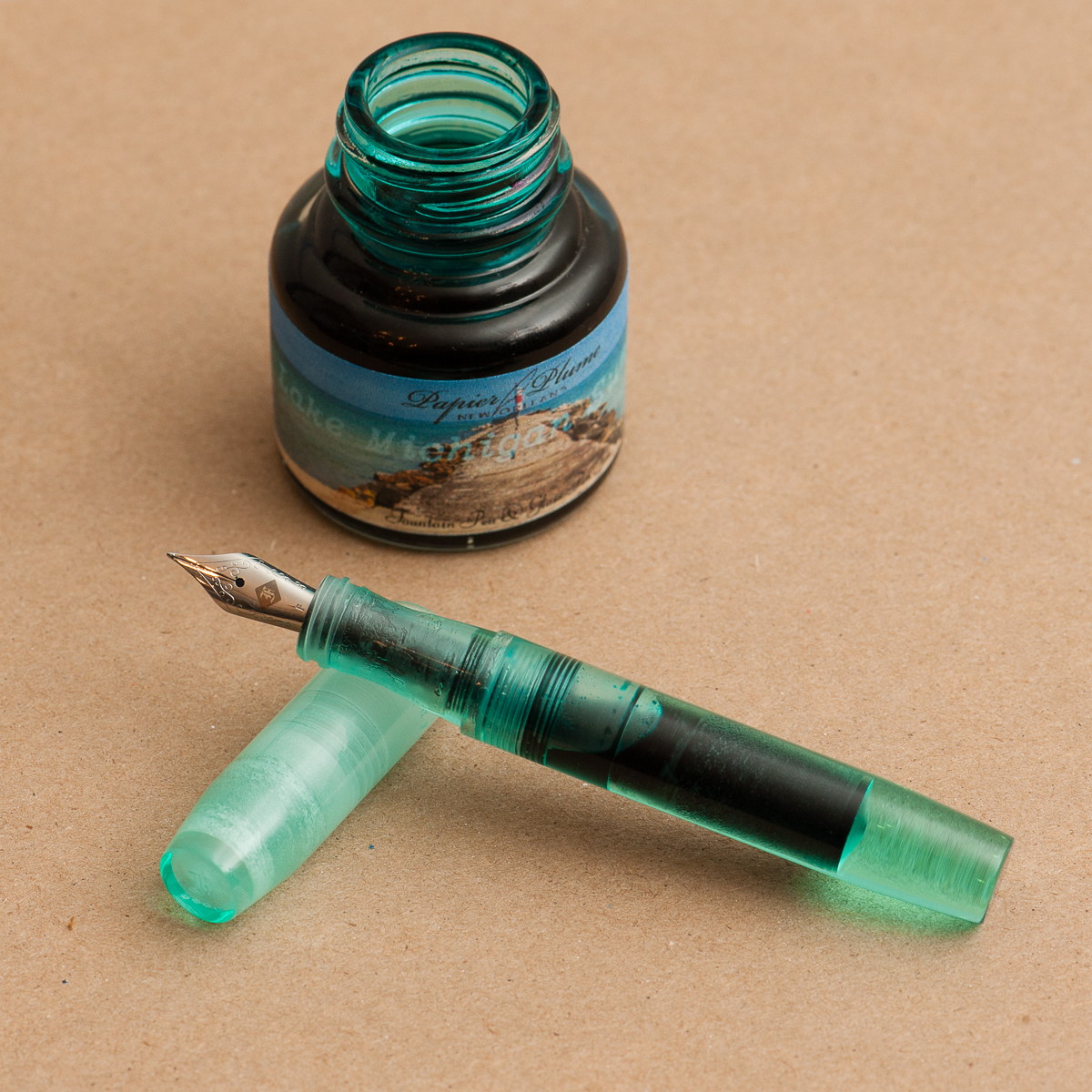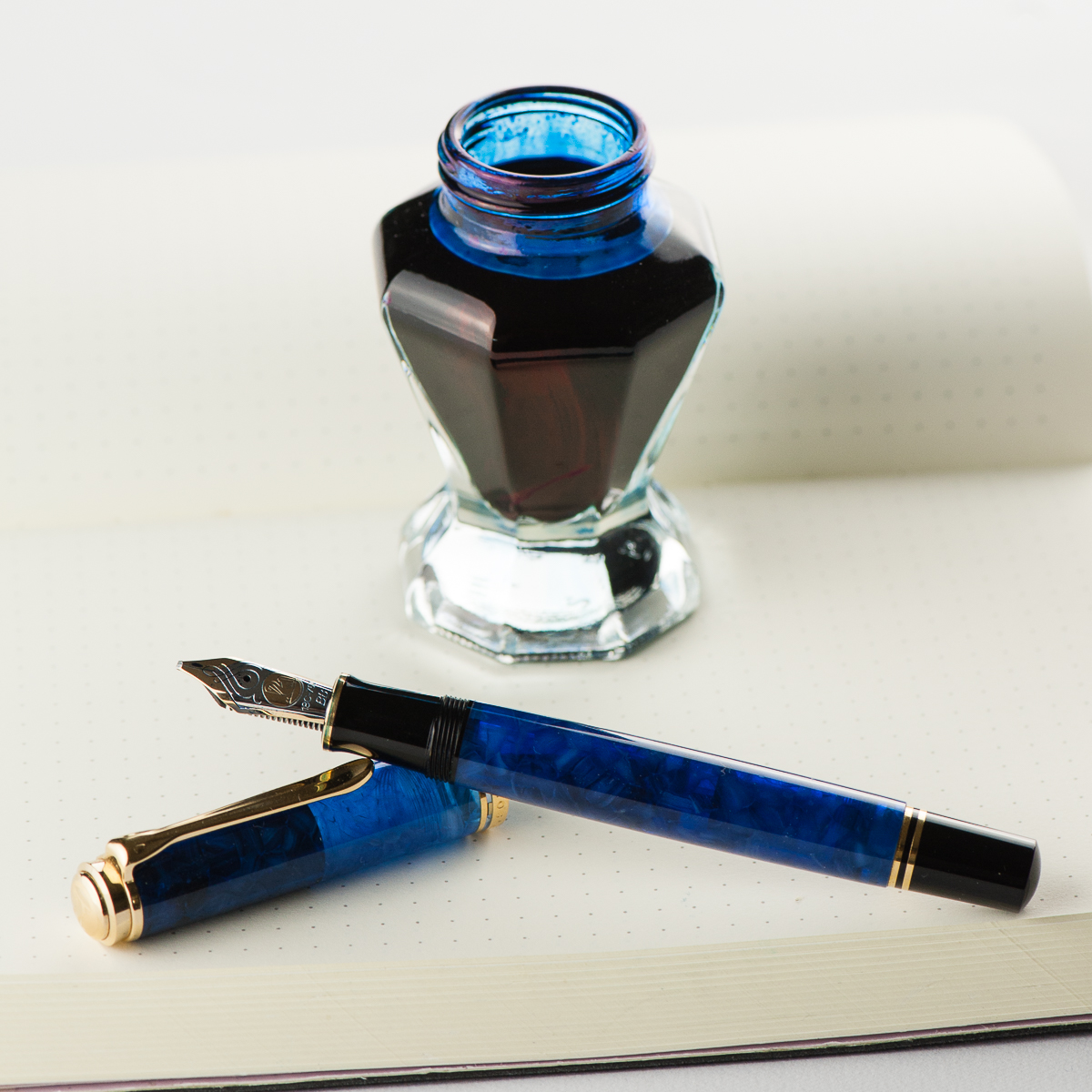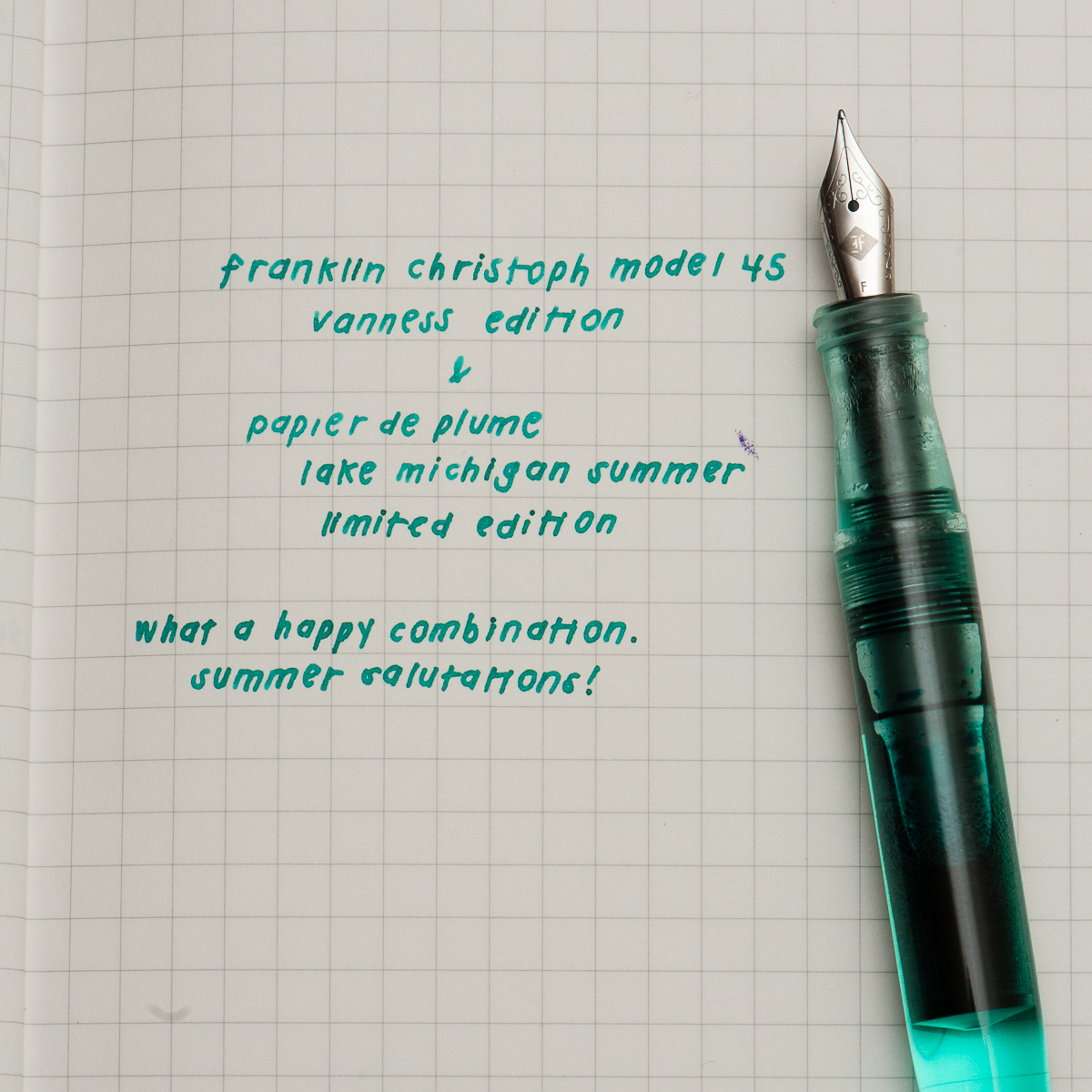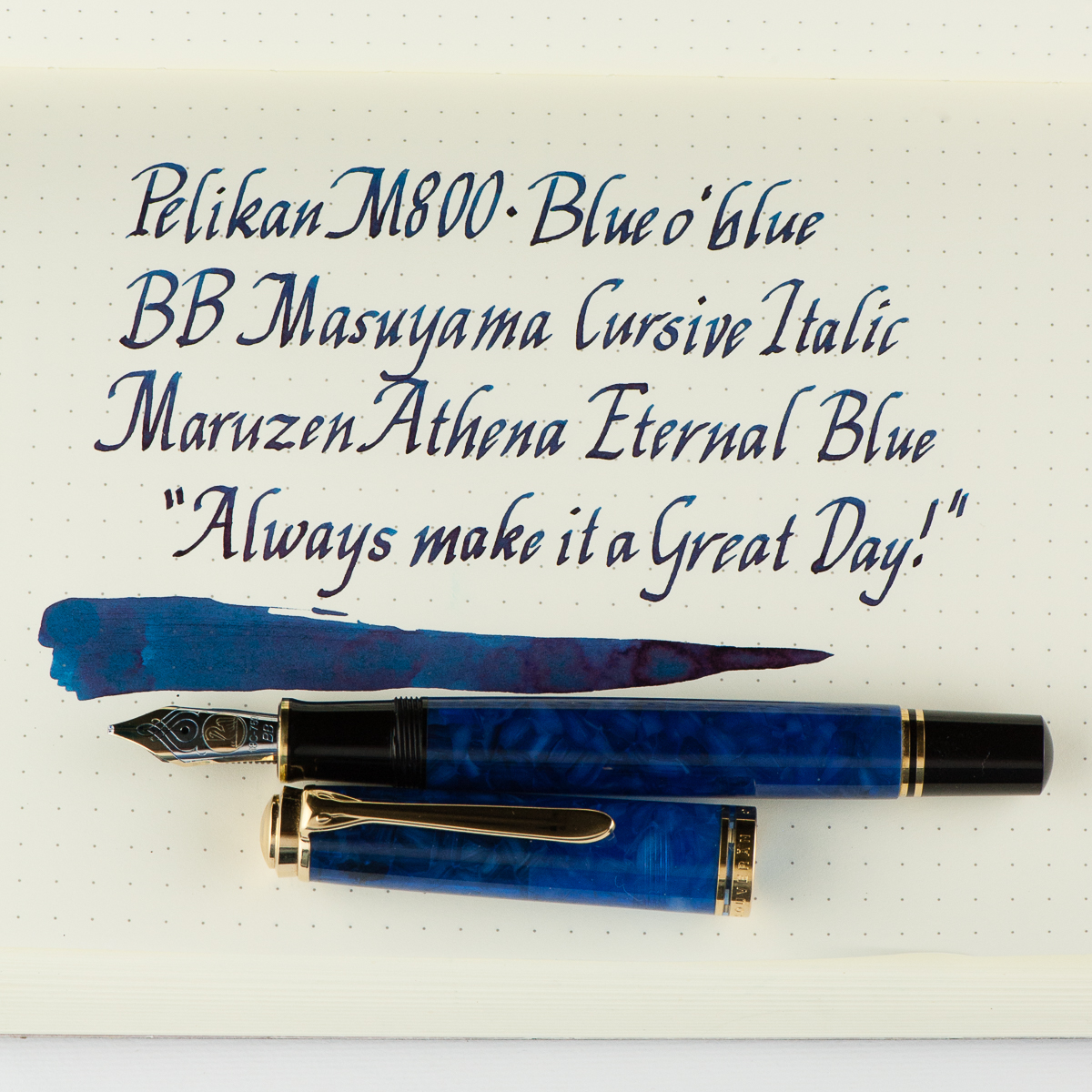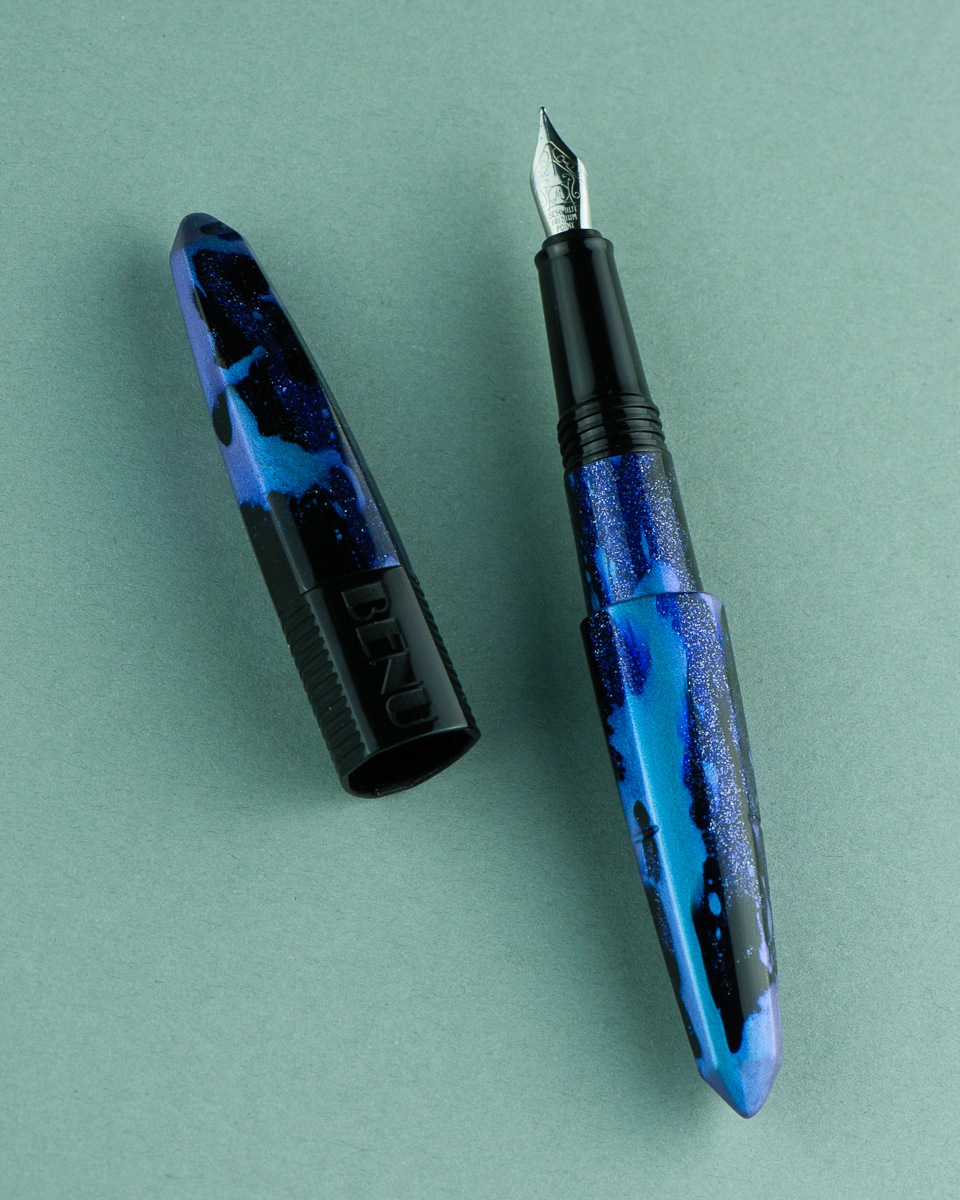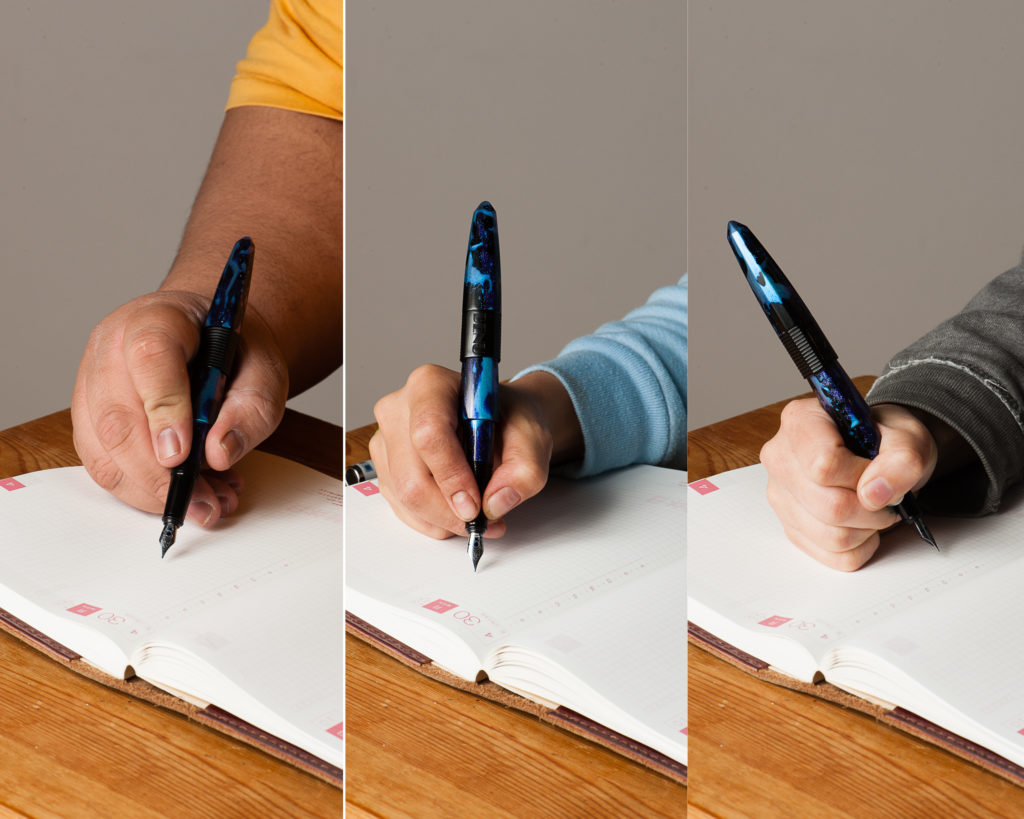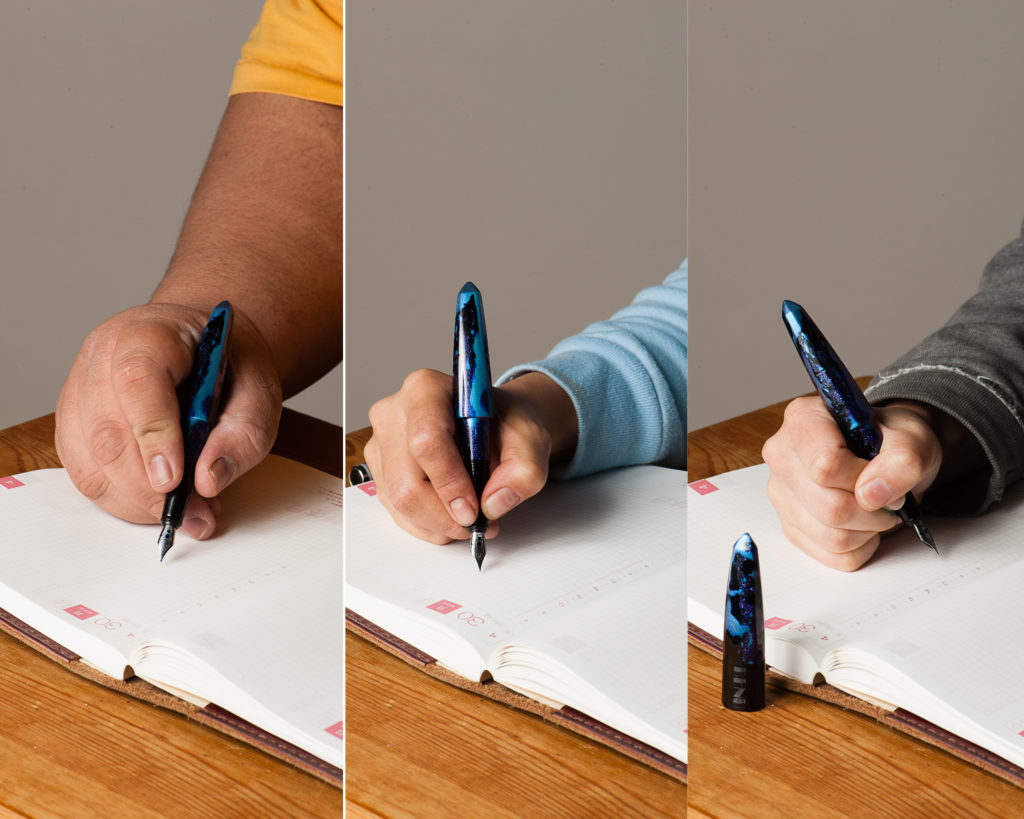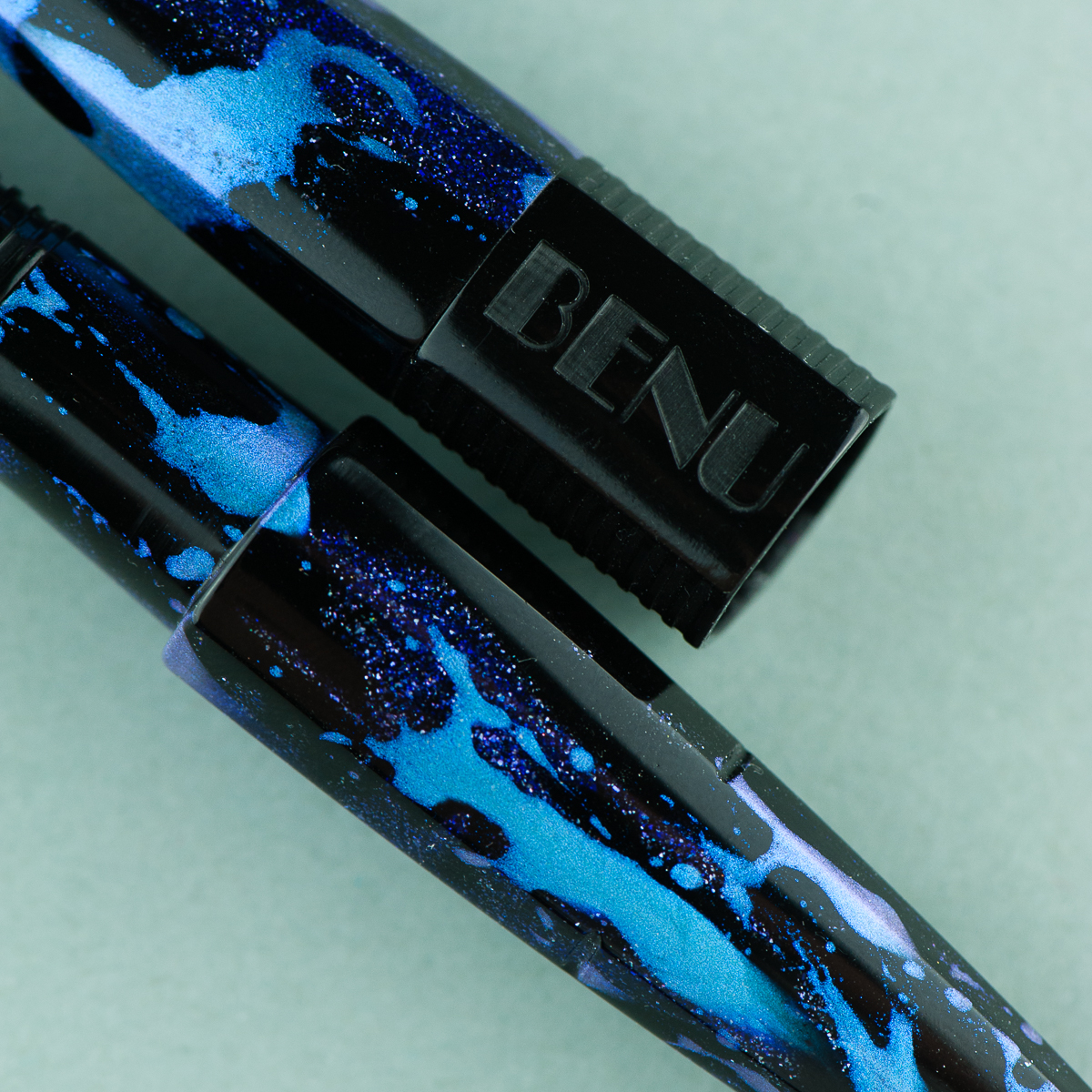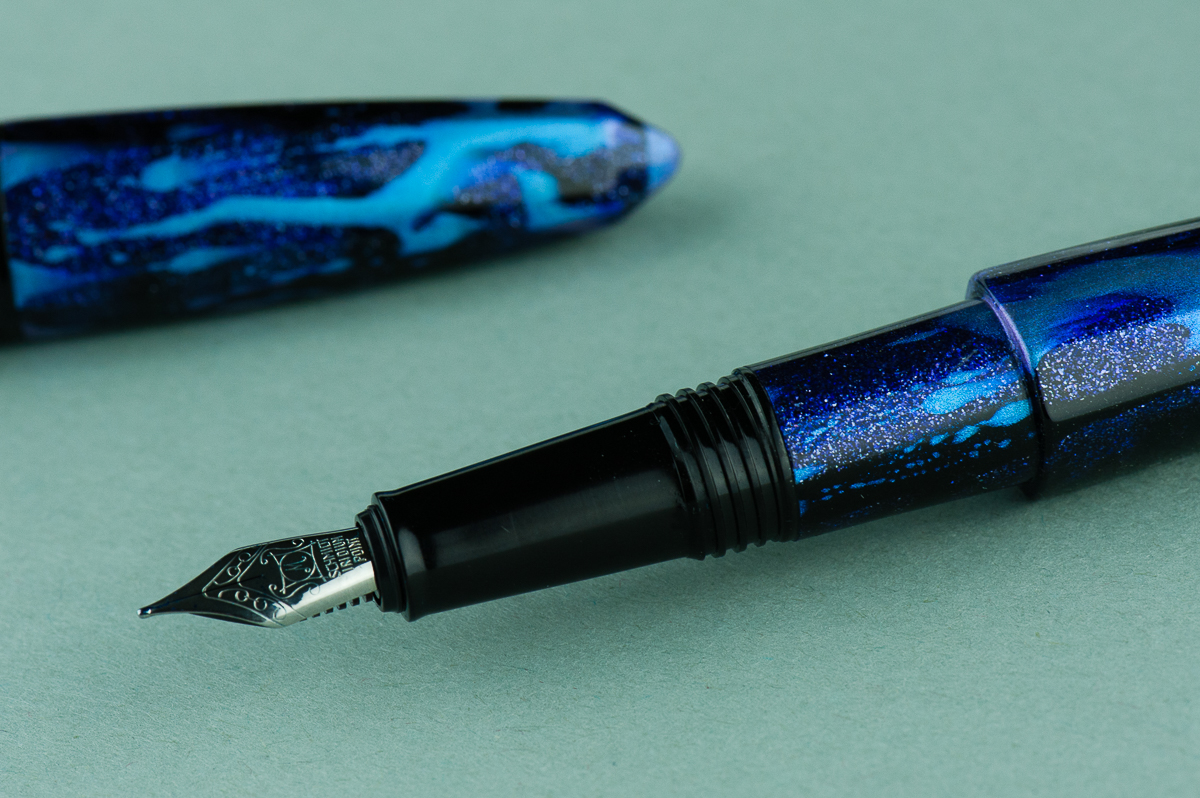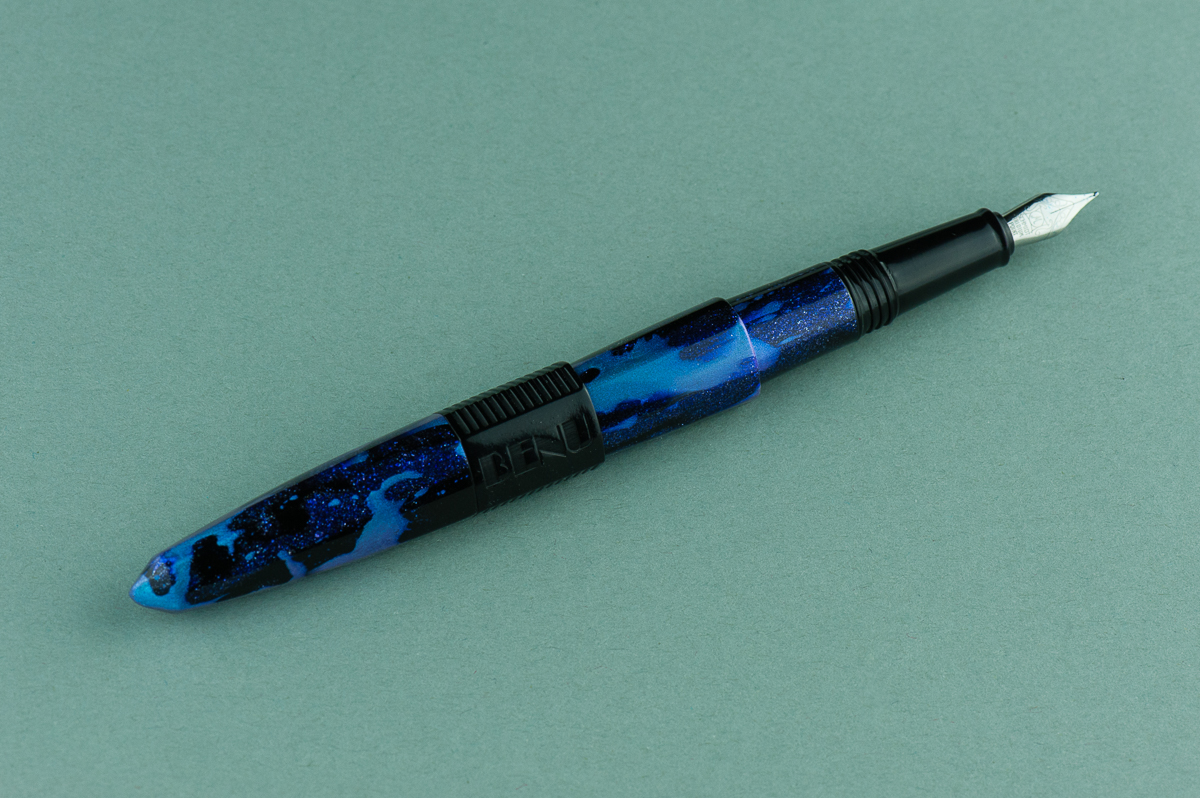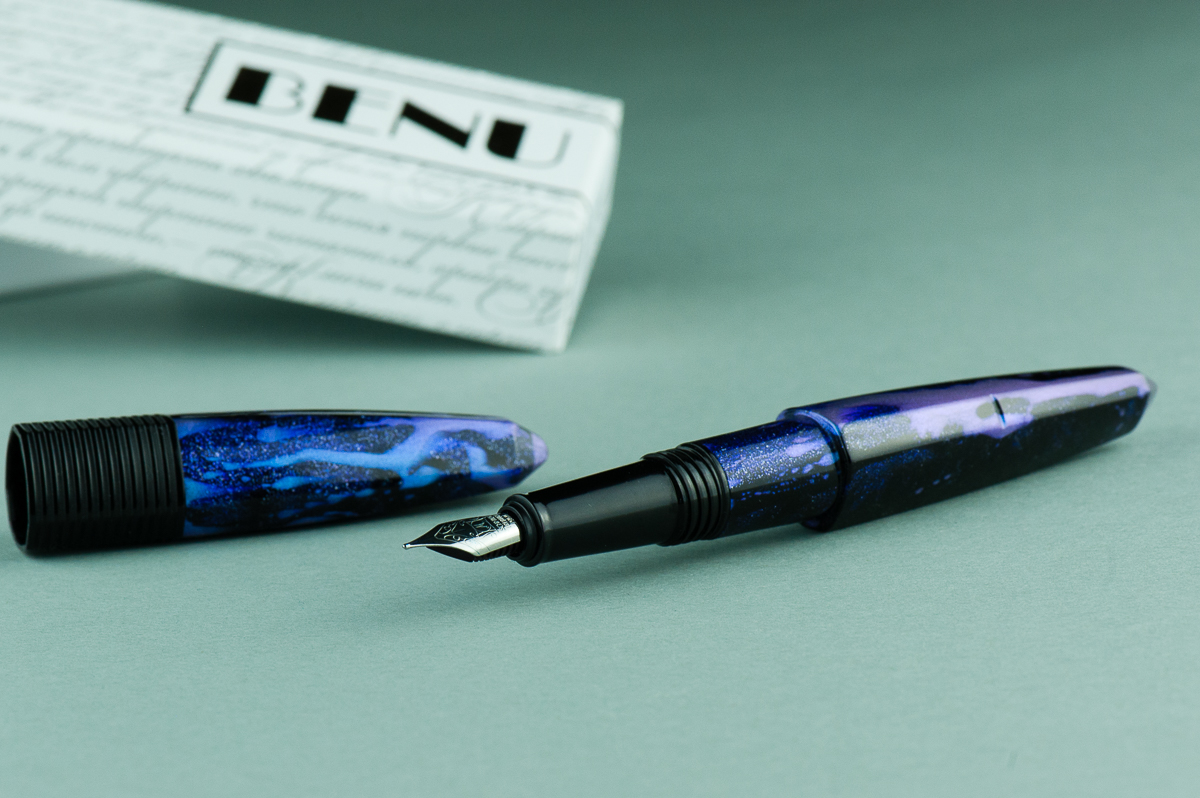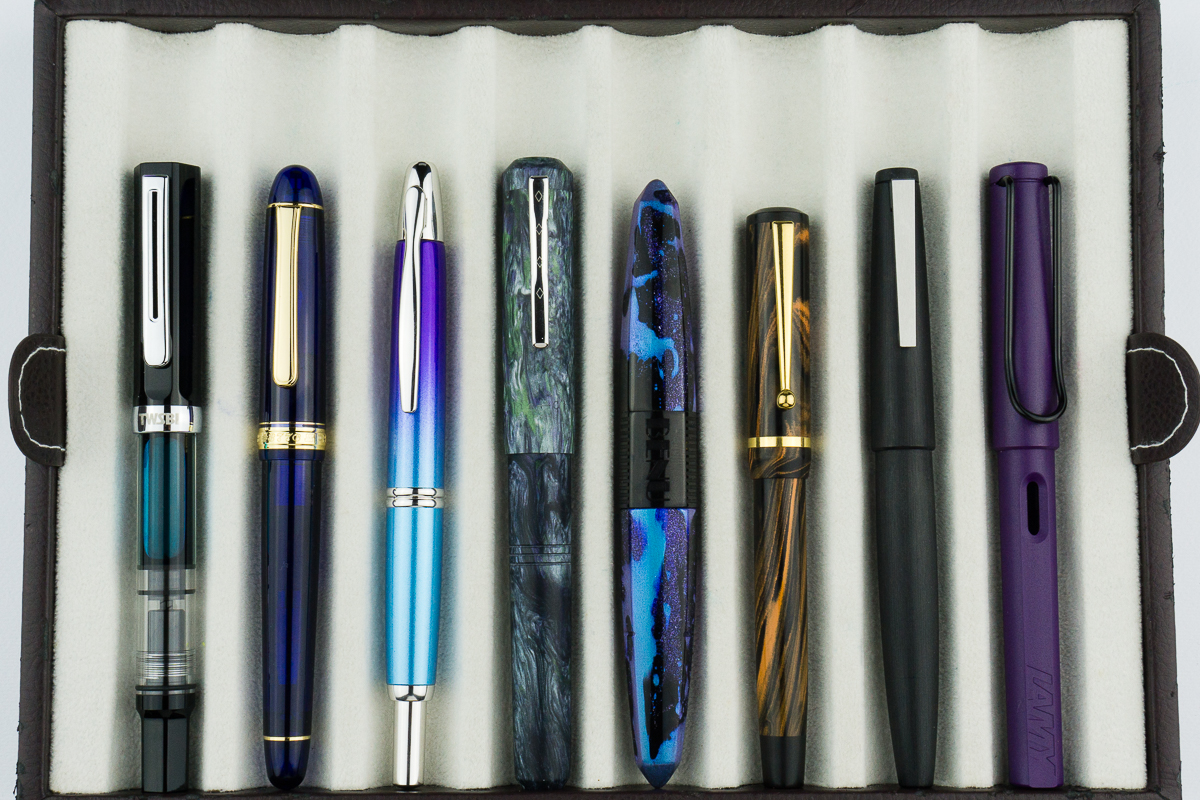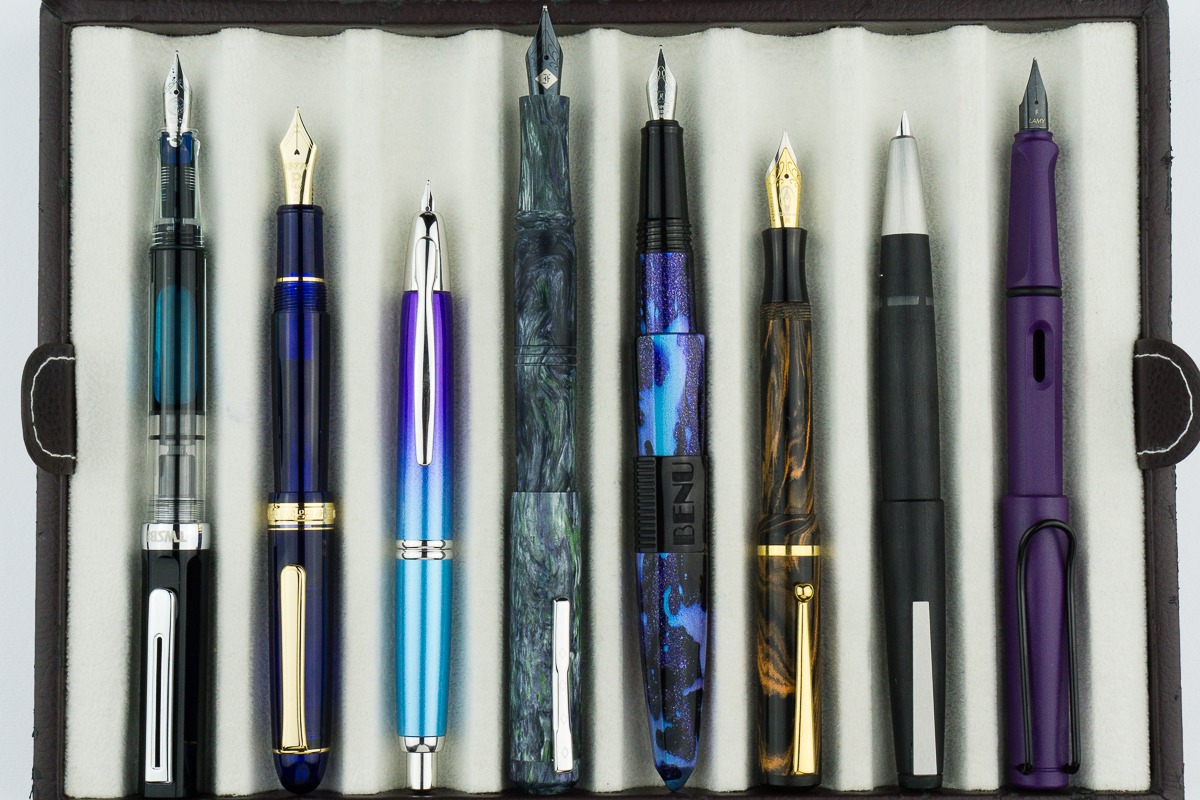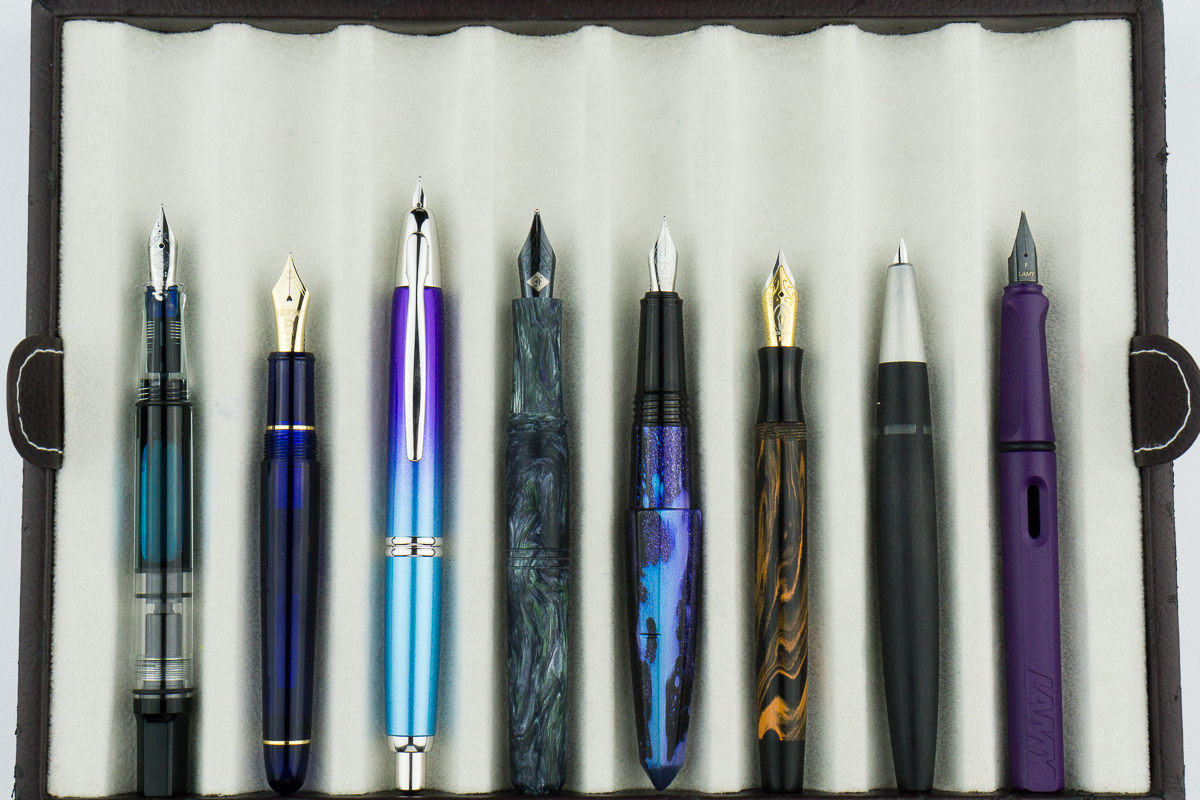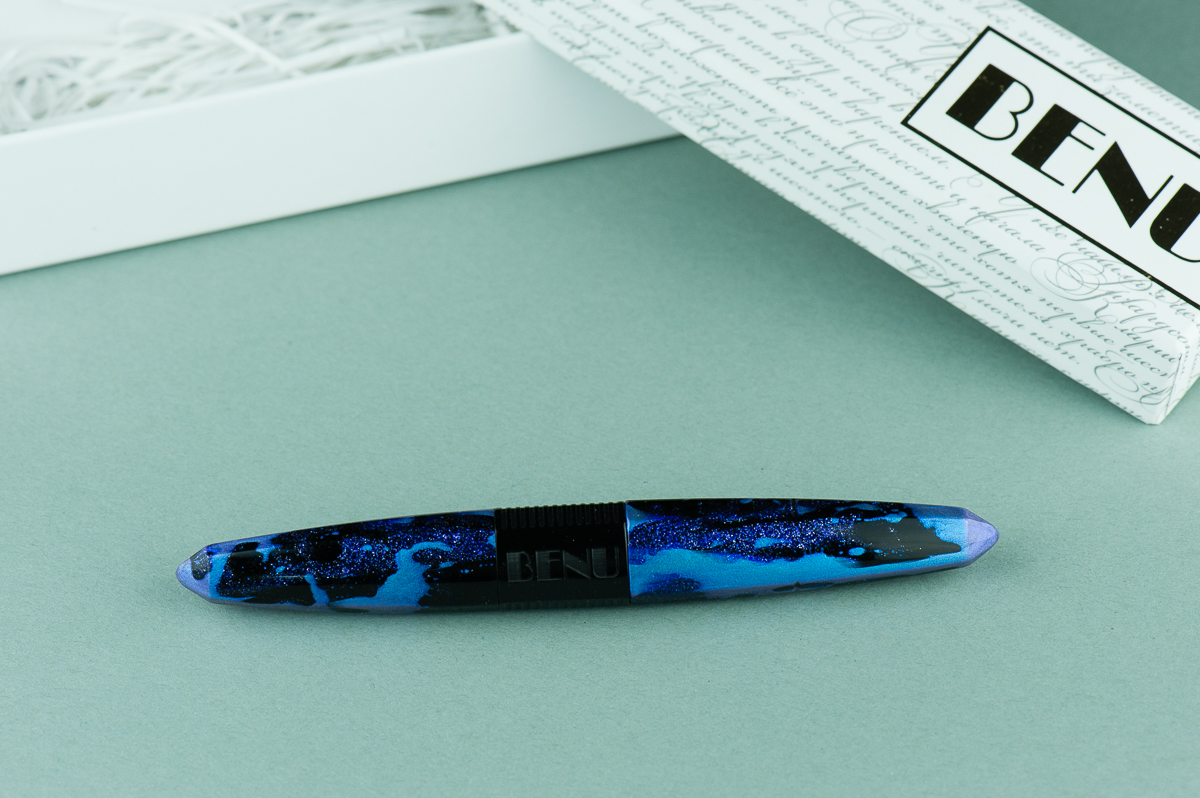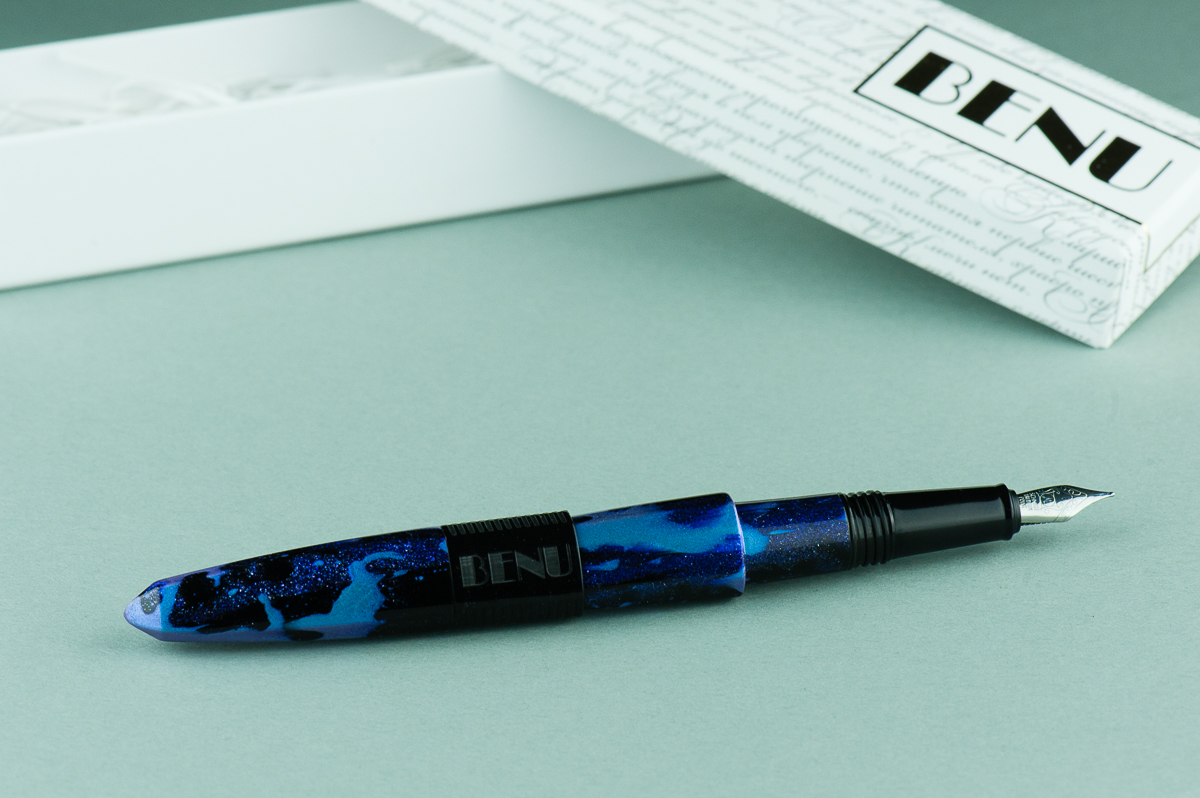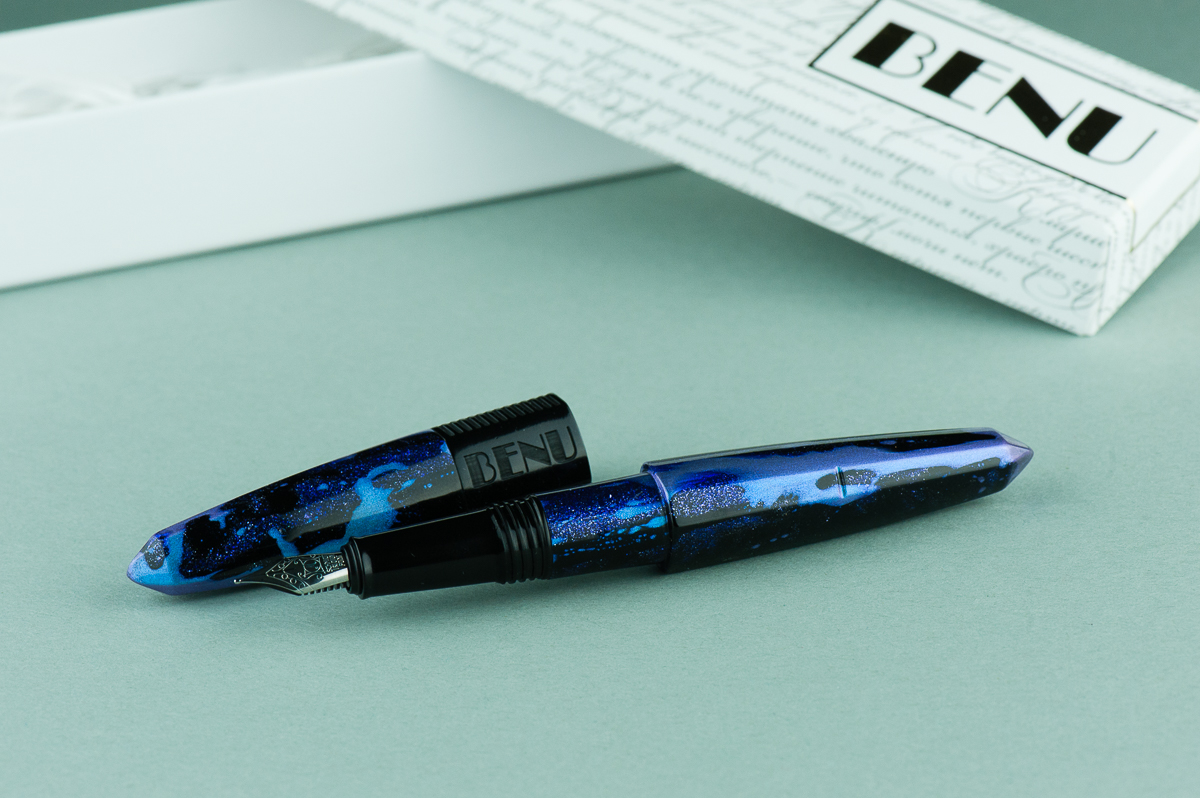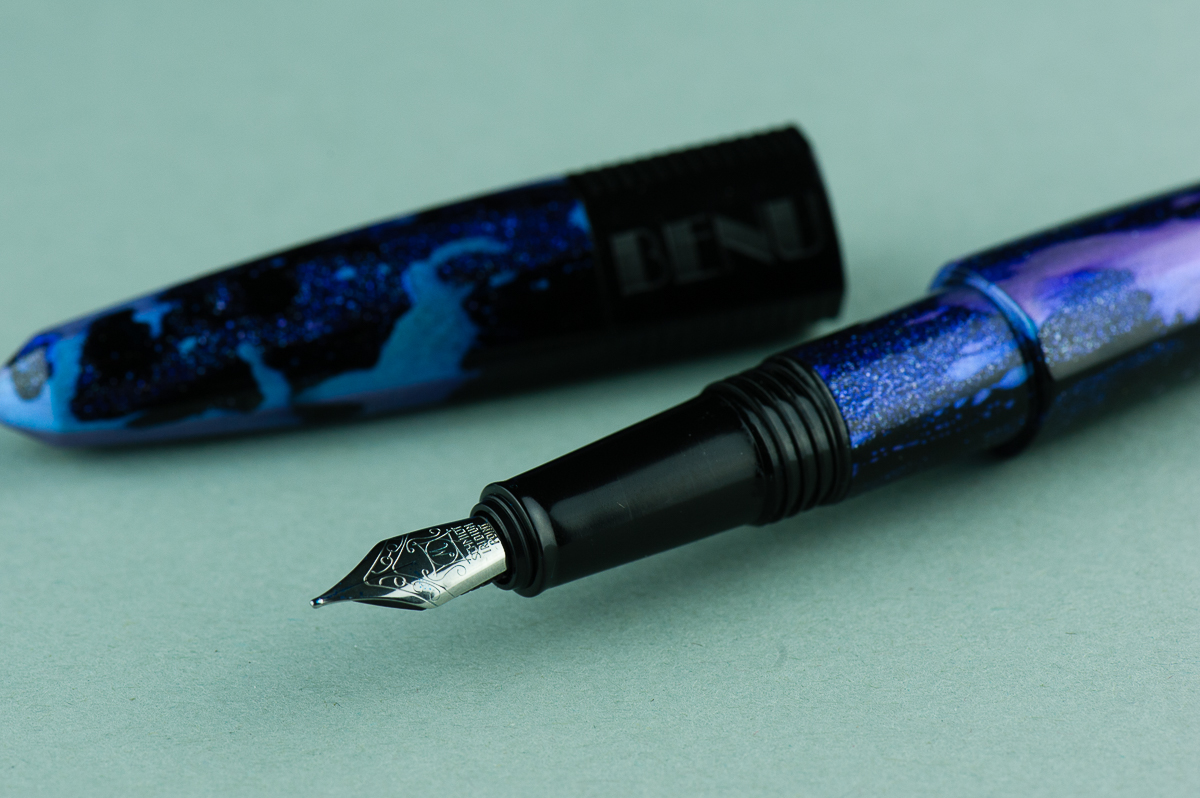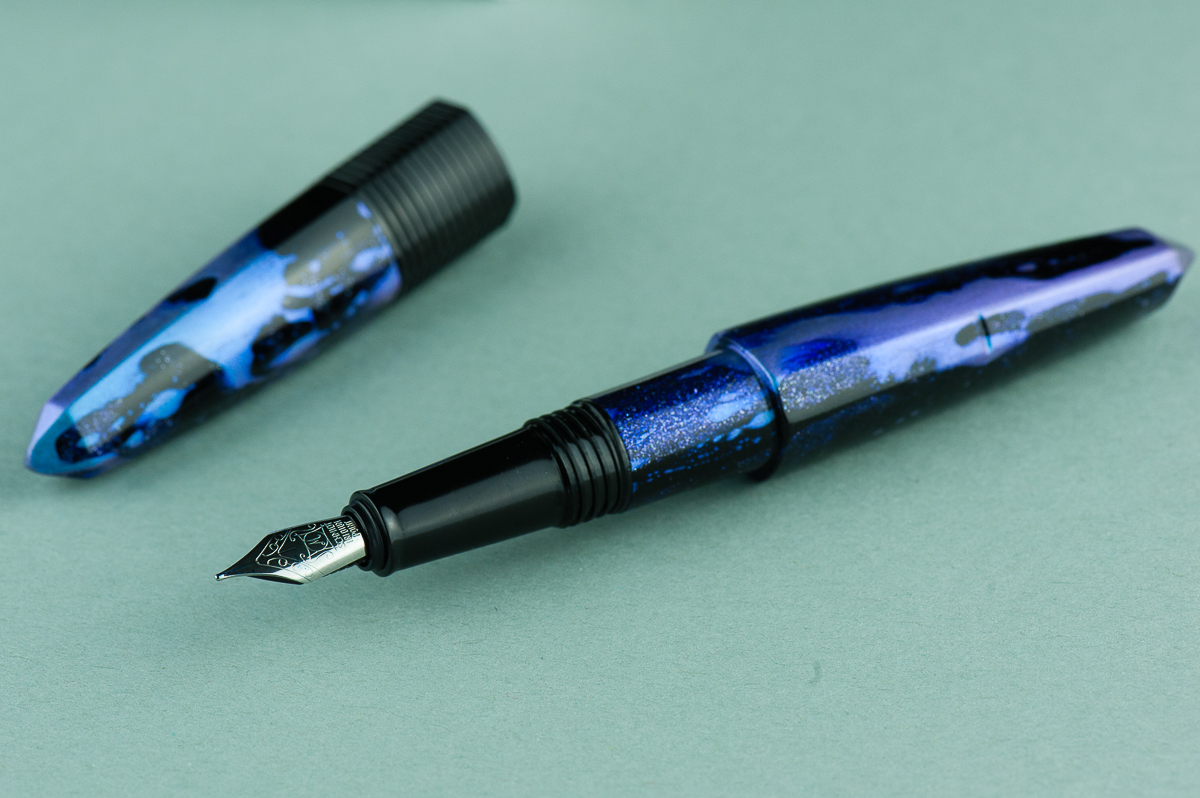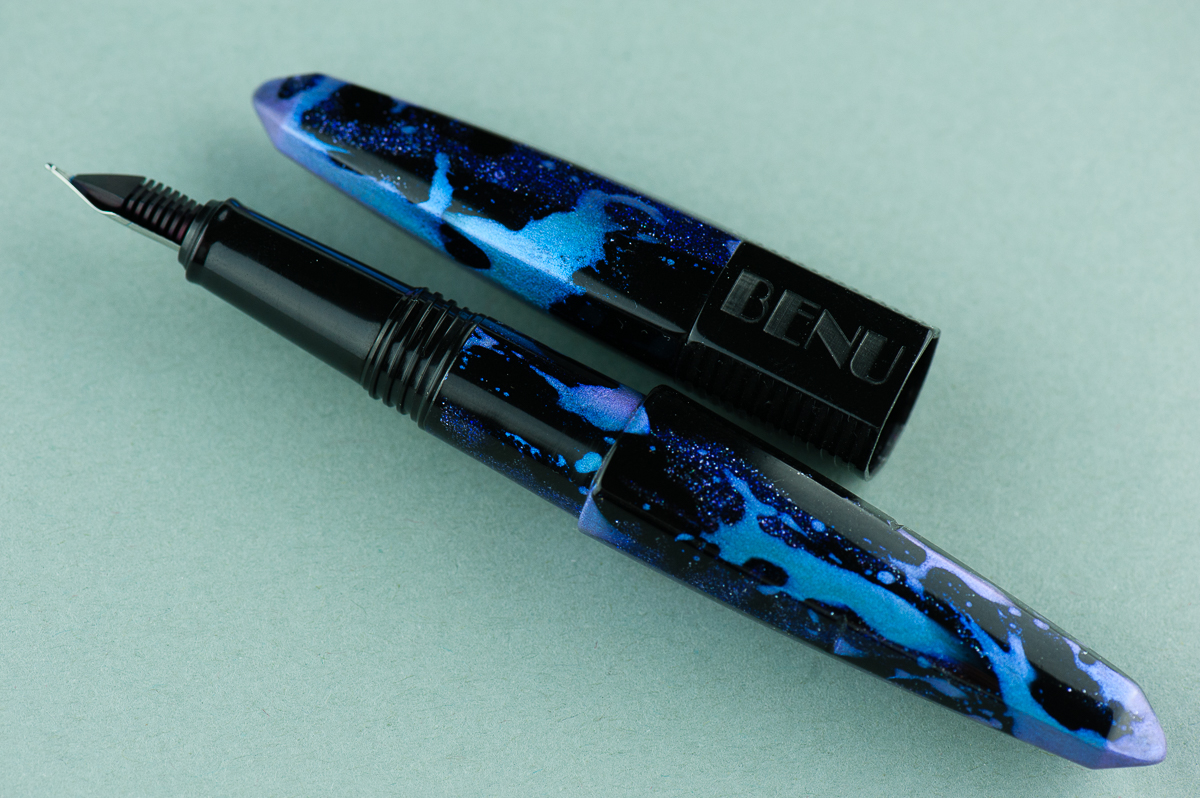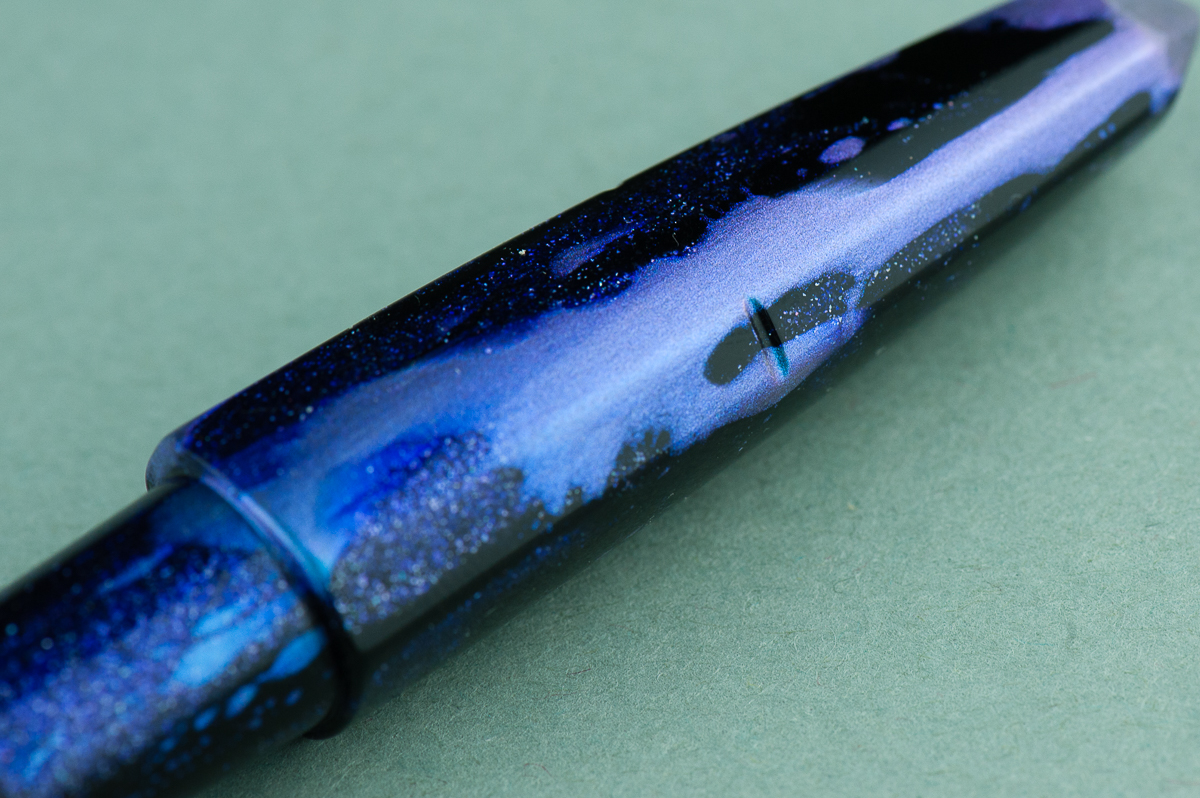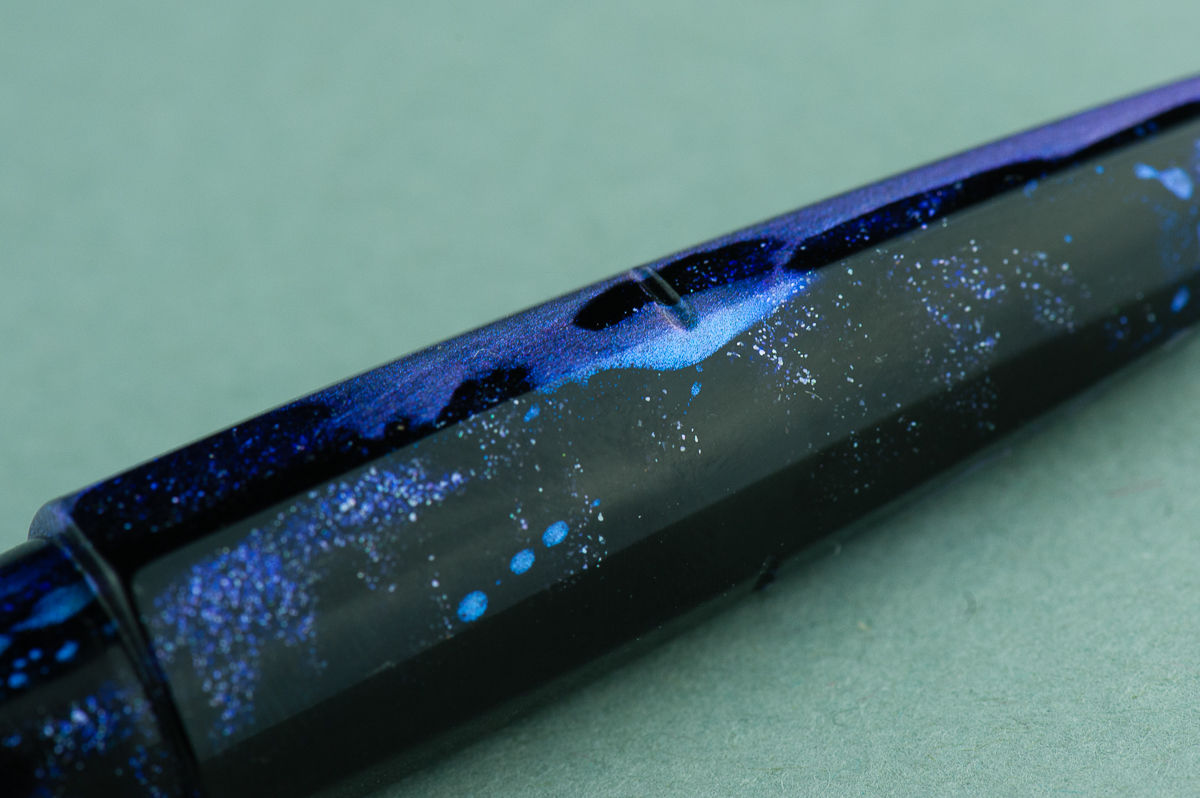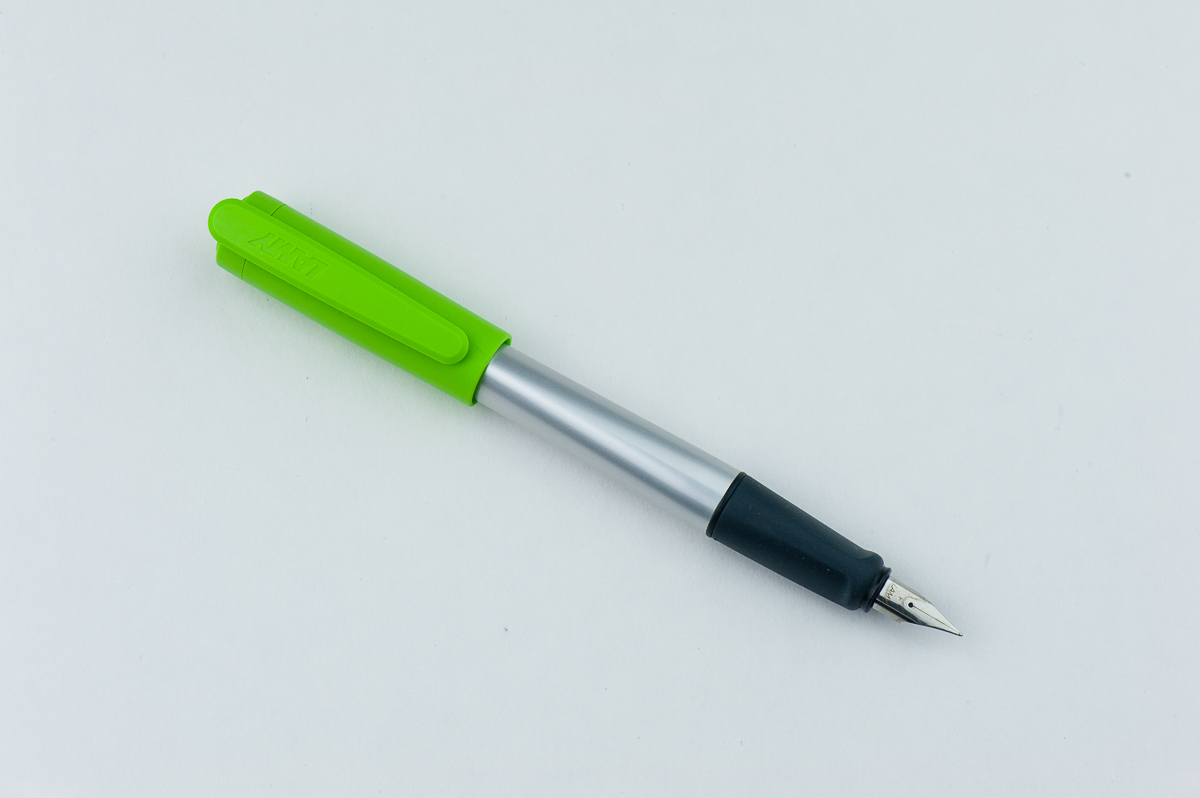
Disclaimer: Katherine has published a partial review — but not all of Franz’s reviews are complete. If you have small hands, we hope this review will be helpful anyway & Franz will catch up when he has time! (But life comes first, sorry!)
Hand Over That Pen, please!
Katherine: The Lamy Nexx ain’t my thing. It looks like a cheap disposable pen to me… and while it’s relatively cheap for this “hobby”, I think most of the “uninitiated” would still think $10+ (depending on the source) is pretty steep for the pen. But… I guess if you think of it as a cute school pen, maaaaaybe?
Pam: The Lamy Nexx holds a special place in my heart. It was one of the first pens I owned and the first German nib I used at the start of my journey down the pen rabbit hole. I was drawn to the price, quality of the nib that you hear so much about as a newbie, and the bright color of the design. I found the design to be relatively “cute” by Lamy standards. It’s eye catching and a reliable writer. Not a bad combination for a newbie’s pen.
Franz: This pen has an interesting shape and silhouette! I like how the Nexx tapers from the cap to the barrel. And that bright green cap just pops.
Roz: At first glance, the Lamy Nexx looks so different compared to the Aion and 2000! The shape and colors are cute and fun; the pen itself is also very light compared to its more serious looking siblings. I am, however, a little nervous about the Nexx’s triangular body and grip.
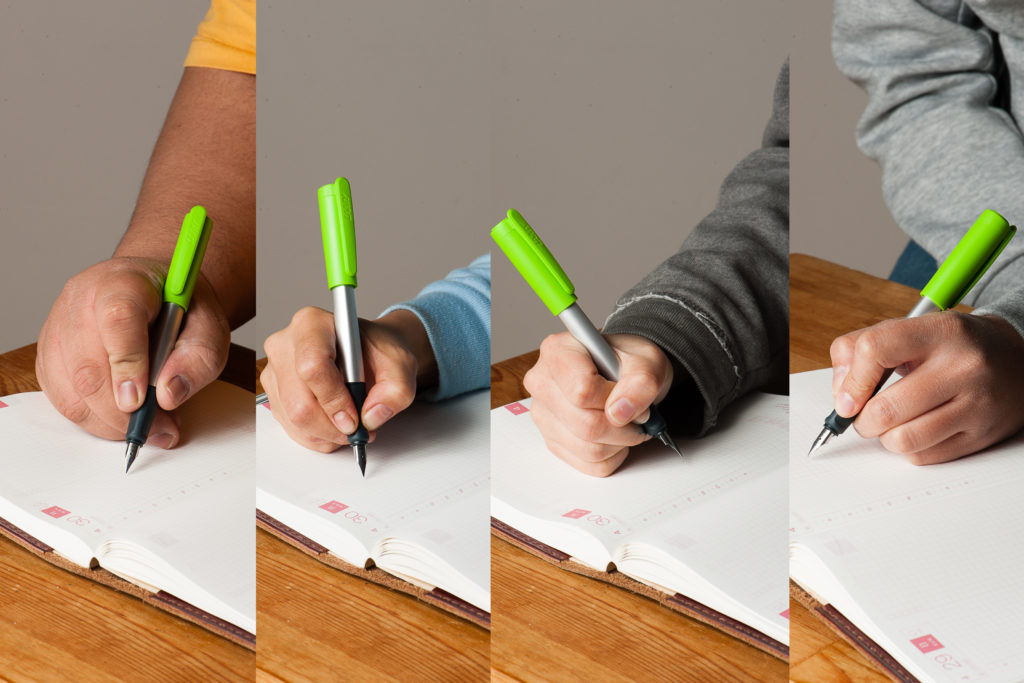
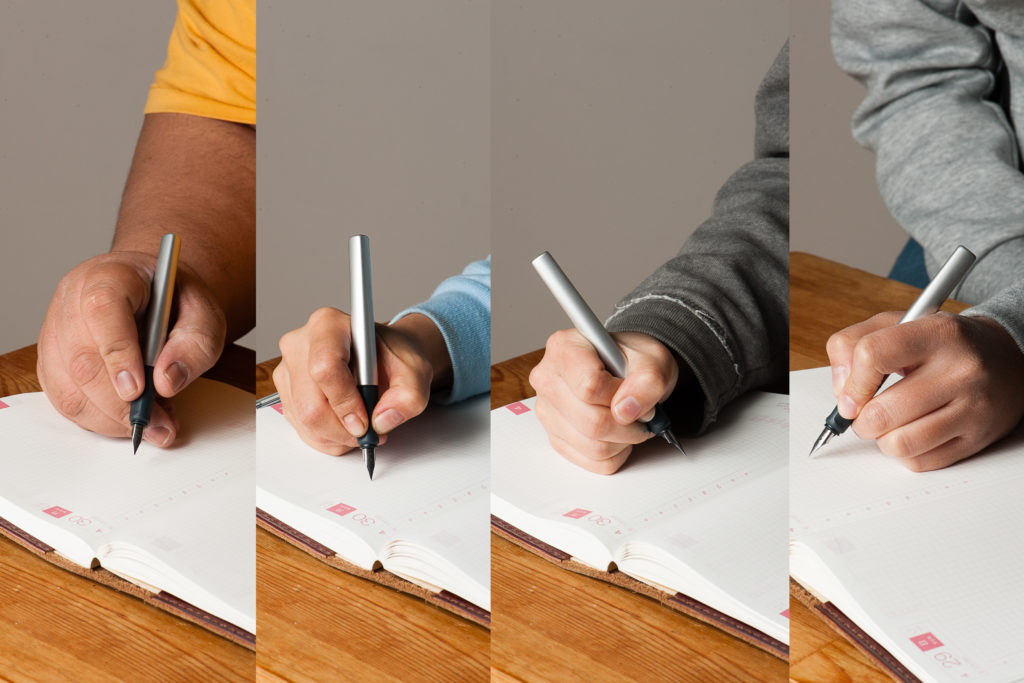
The Business End
Katherine: I found the Lamy Nexx a little too smooth, as I tend to do with Lamys. If smooth and wet is your thing, this pen may be a fit — but I prefer a bit more tooth and character to my nibs.
Pam: I do enjoy the Lamy Nexx has the same nib as the Lamy Safari. I find the “larger” nib sizes like the M and B are super smooth. The EF can provide minimal feedback but not typically. The Lamy ink can seem to run a bit dry and boring, particularly the blue or blue-black from my recollection which does make a marked difference in writing experience with cheaper office paper. The EF nib doesn’t seem to glide as well with drier inks whereas the M nib is effortless.
Franz: The nib on the Nexx is
Roz: As always, I’m starting to notice, Lamy’s nibs are amazing. I was concerned the triangular grip would dictate too much the angle I wrote at, and impact the ink flow as a result – but I was worried for nothing! It doesn’t matter at what angle I wrote, the ink is always consistent and there is little to no scratchiness.

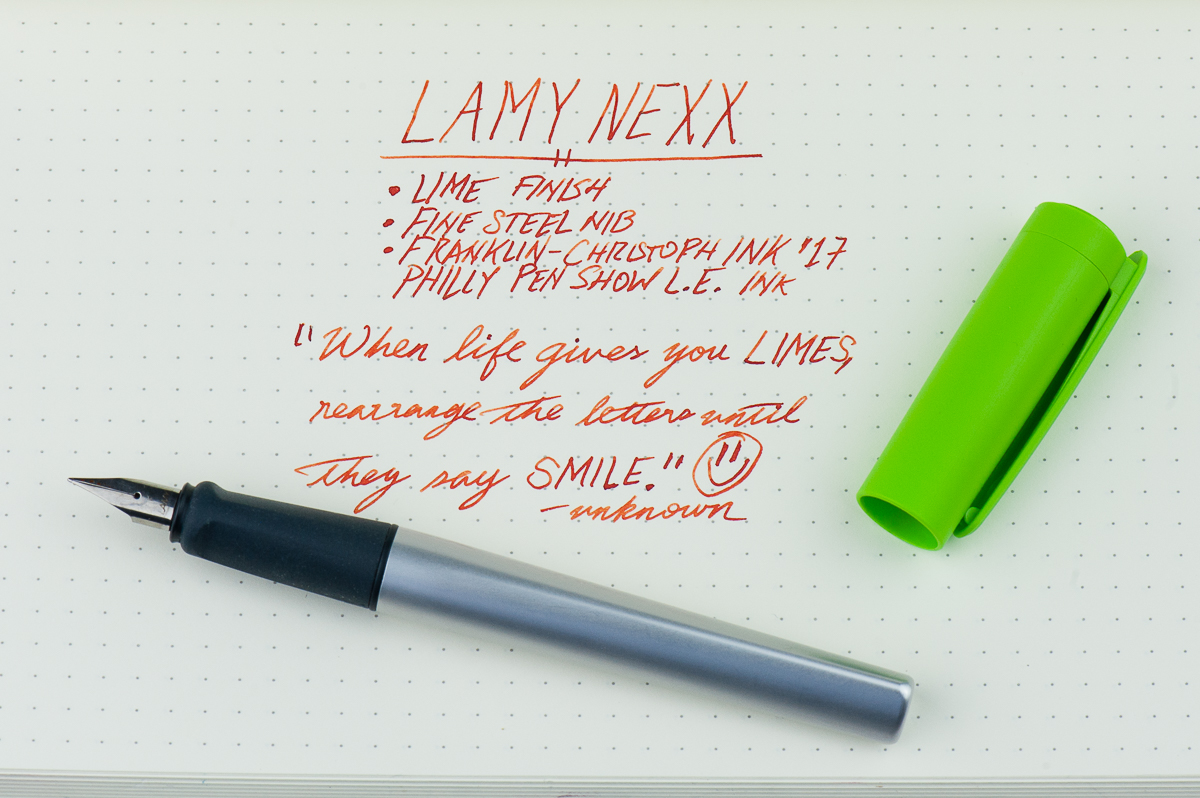
Write It Up
Katherine: Overall, it’s a pretty comfy pen. The rubberized triangular grip fit my hand well, and I had no issues writing with it for long stretches.
Pam: I have no issues with triangular grip and found it be comfortable for long writing session. It was a pleasurable experience and the bright color was a bit of a welcome distraction for me. I preferred to write with this pen capped, like the good ol’ days. I liked the extra weight as little as it was. It was an overall light pen. That being said, the plastic isn’t very impressive to write home about. I felt the other plastic pen from Lamy, the Safari has a much better feel for the body.
Franz:
Roz: This is where I expected the triangular grip to really impact my writing experience. But the grip – combined with how light the Nexx is – was not as intrusive as I thought it would be. Posted or unposted, the Nexx was comfortable to work with and left almost no impression – even after long writing sessions.
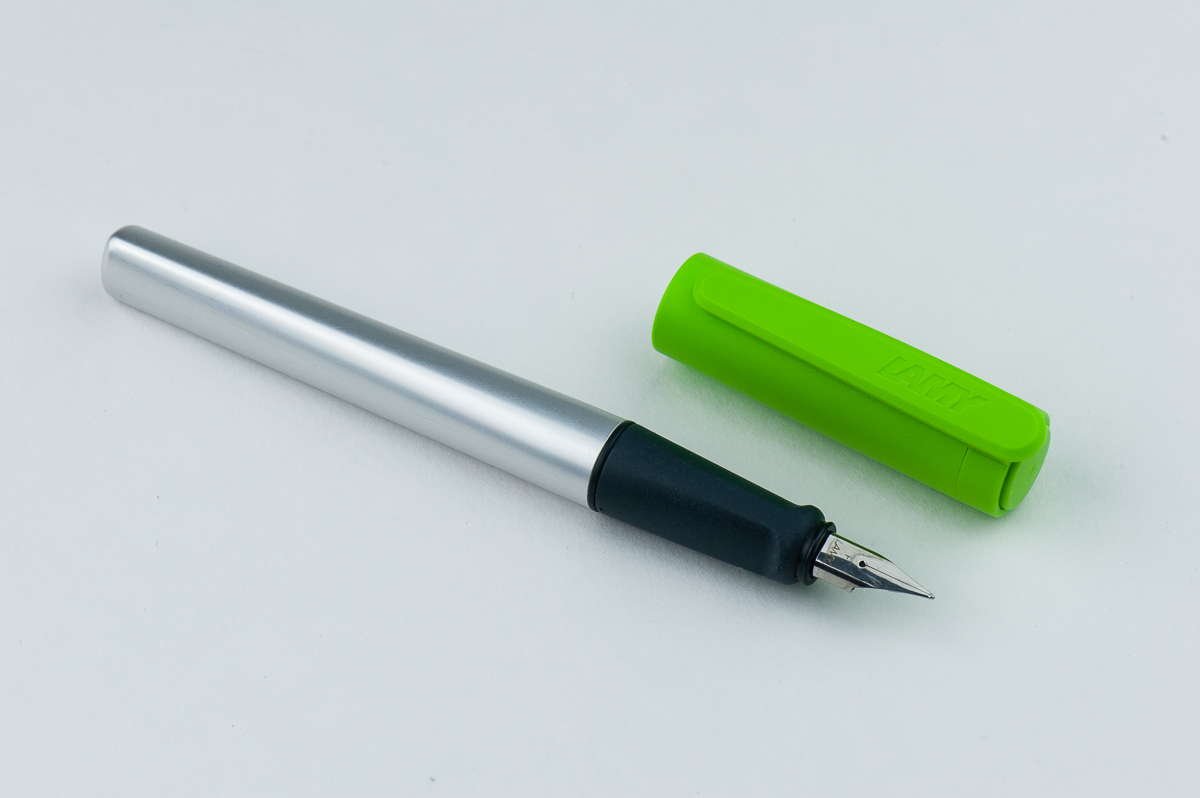
EDC-ness
Katherine: It’s a great EDC pen if you don’t mind your coworkers thinking you’re using a kid’s pen. It’s cheap, seems very durable (I didn’t throw it at anything, but it looks like it would hold up) and it’s easy to spot in a crowded backpack.
Pam: I really enjoyed using it at work because the snap cap was so convenient to use. The older version of the pen had a loop on the cap that allowed for it be tied into a lanyard for fast deployment. This iteration doesn’t have that feature which isn’t much of a loss given the lack of practicality. I prefer the clip which seems a bit flimsy.
Franz:
Roz: I kept the Nexx with my planner mostly and it did very well in my Hobonichi’s pen loops. I carry my planner with me every day and I’m not gentle on it either! I throw it in to my backpack, rummage around for it when I have a moment to brain dump or work on it whenever I have time at the office or on the train – so it really mattered to have a pen paired with my planner that could keep up with all that which the Nexx did with flying colors.
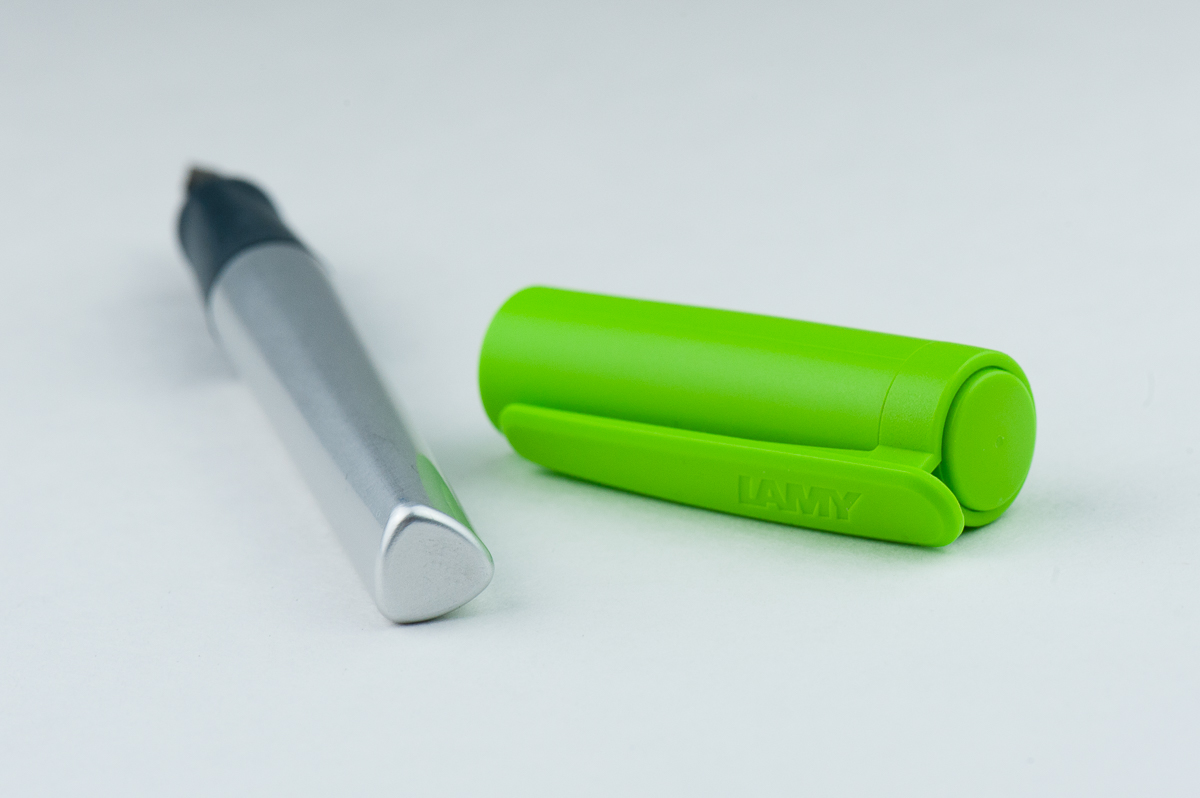
Final Grip-ping Impressions
Katherine: It’s a solid writer, and if the cap wasn’t so bulbous I’d consider giving these as gifts to friends and family who are new to the world of fountain pens. However, instead I worry that they’ll think I got them a disposable pen and I’ll stick to an Eco, Metro or maybe even a Safari (my least favorite of the three).
Pam: I really like the Lamy Nexx for nostalgic reasons. However, there are better priced options for starter pens. If you are looking for brightly colored, almost cute pen, with a well functioning Safari nib for the youth in you or in your life, the Lamy Nexx isn’t a bad choice. Alternatively, if you want a finer line and something comparable, I would choose the Pilot Kakuno instead.
Franz:
Roz: I think it’s safe to say I am solidly a Lamy fan girl. Between the Lamy 2000, Aion, and now the Nexx, I have truly enjoyed being able to try them all. The Nexx seems to have found a great role to fill within the Lamy line; it’s light and fun, and even at the end of this review the Nexx is sitting in my line of sight and I still want to pick it up and write with it!
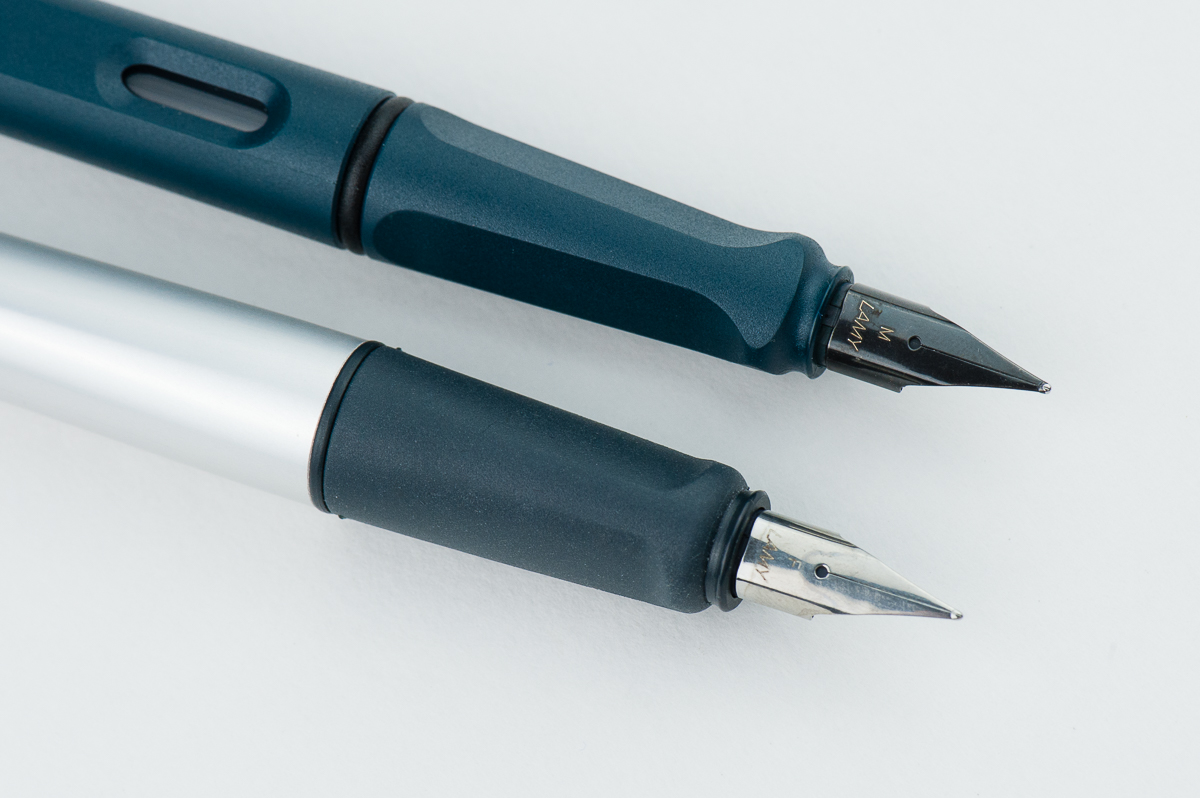
Pen Comparisons
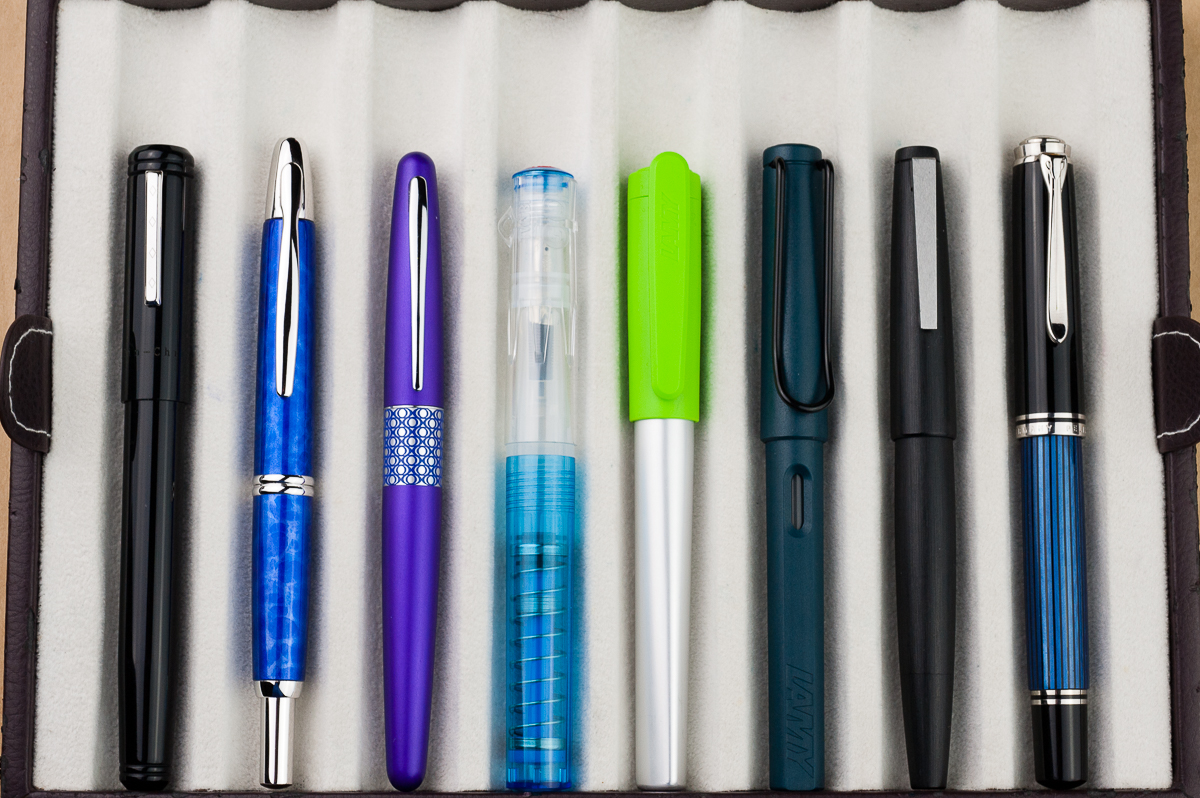
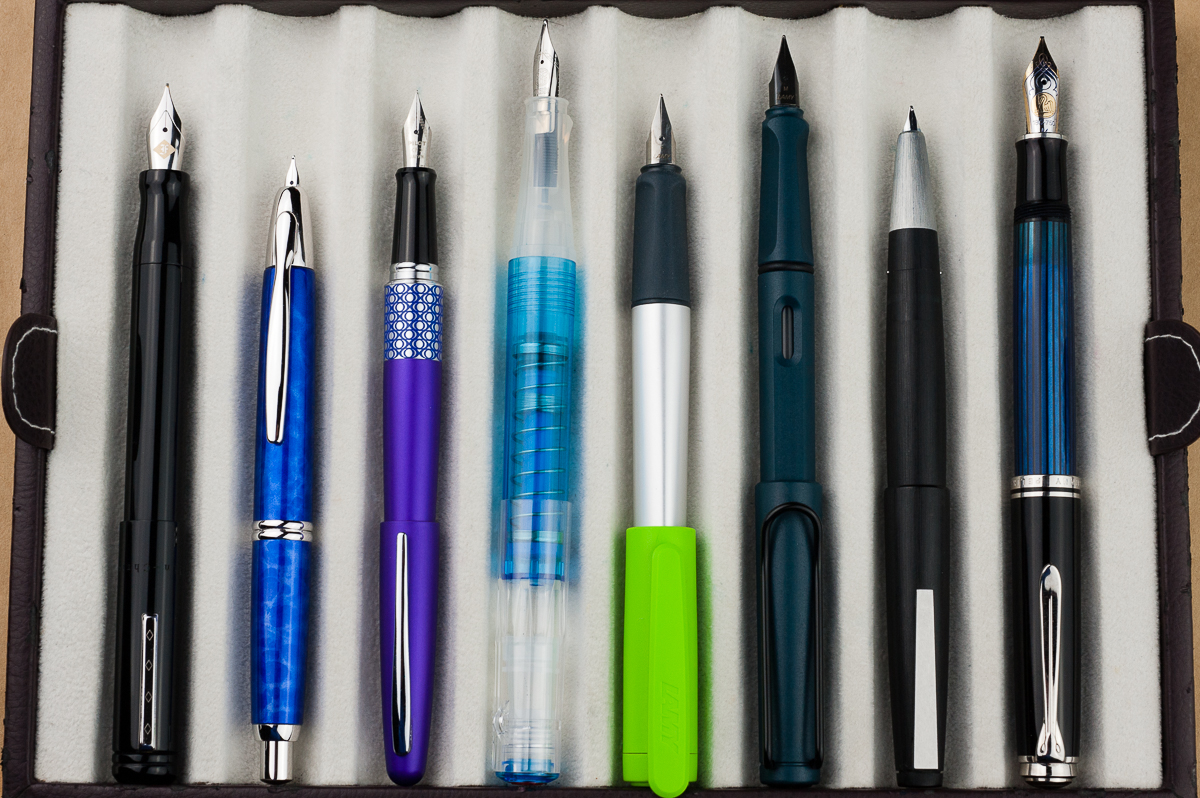
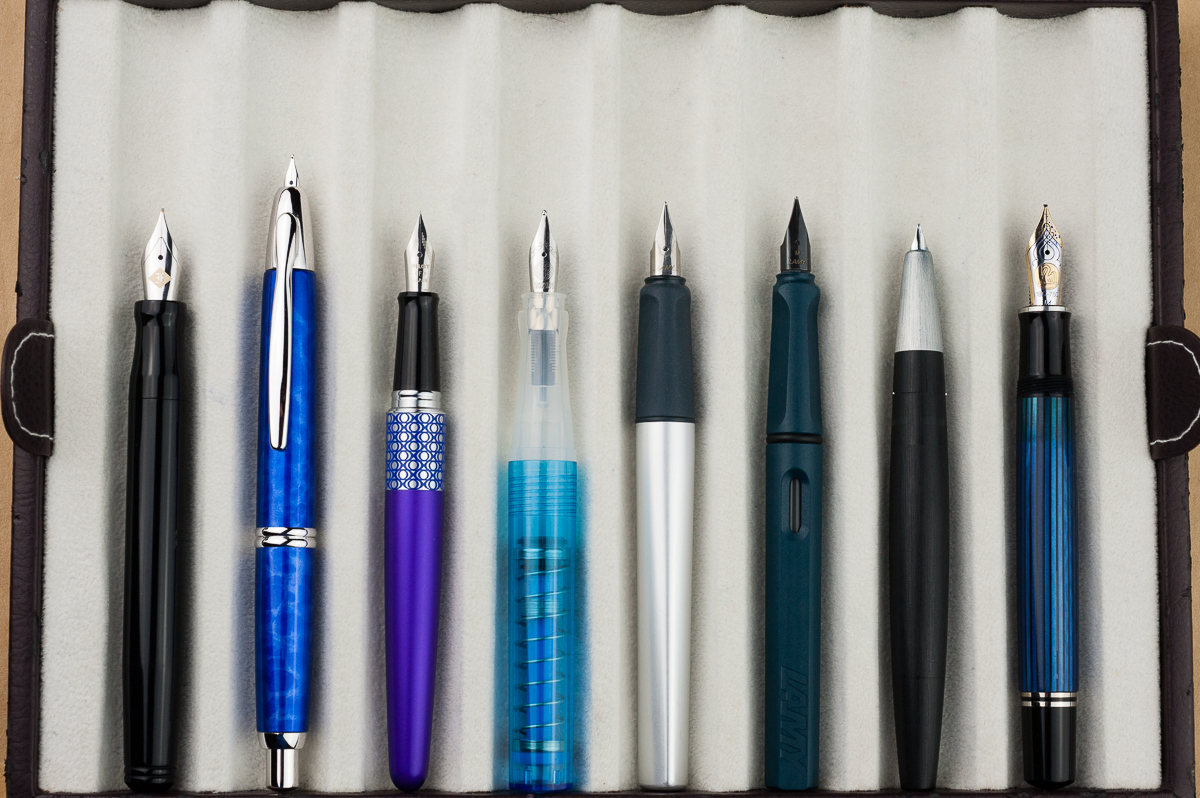
Pen Photos (click to enlarge)
We received this pen free of charge for the purposes of this review. We were not compensated monetarily for our review. Everything you’ve read here is our own opinions.
